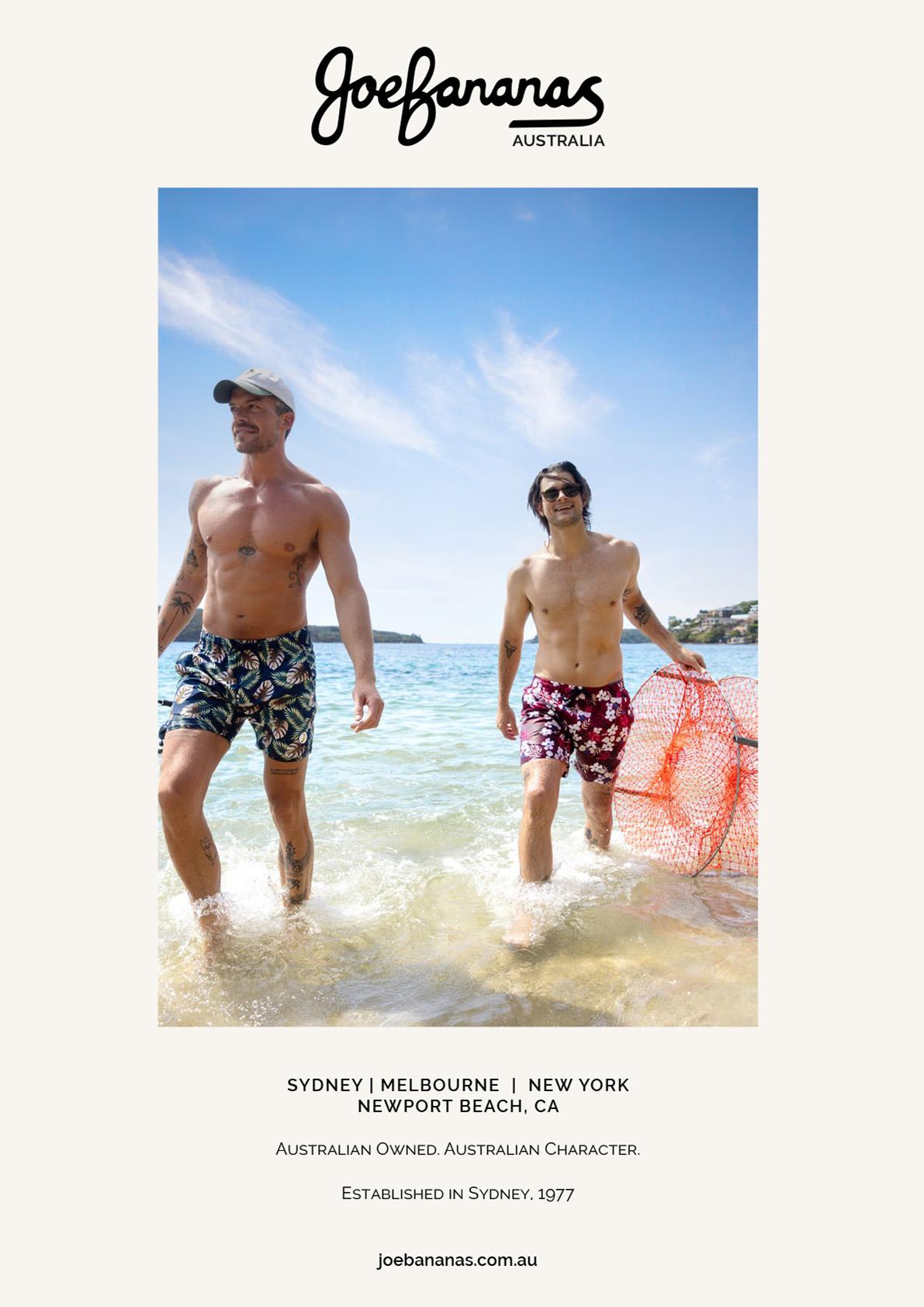






The alarm sounds. I awake. It’s dark. And, although rain is predicted, it’s not cold. In this Indian summer we’re having, it hasn’t been cold for a long time.
But, in the end, the weather doesn’t matter. Every year on this date, April 25th, millions of Australians rise in the small hours to attend dawn services to honour the servicemen and women who have served the nation.
In every capital city, in regional centres and towns from Broome to Barnes Bay, from Darwin to Dianella, ceremonies and marches are held.
Australians and New Zealanders overseas, also commemorate.
What is it about this day that means so much to so many? It is not a day that asks us to sing the praises of war, moreover it is a day that asks for the cessation of time, to remember the names and deeds of more than 103,000 Australians who have made the ultimate sacrifice.
It is a day that has an imaginative stronghold over the nation. A day that serves as a bearer of identity and values that we like to associate with Australia and Australians. Of kinship, of the idea of a fair go, of not getting too big for your boots. Of never giving up and of fairness and treating each other equally. They call it the Anzac Spirit. It is a cultural icon that we are still in the throes of understanding.
Across the ditch, our New Zealand brothers and sisters do the same.
Whatever you are doing today, may it be in peace and goodwill and to honour those that have served and/or fallen.
Welcome to the latest edition of The Last Post.
#thelastpostmagazine
#diaryofanindependentpublisher

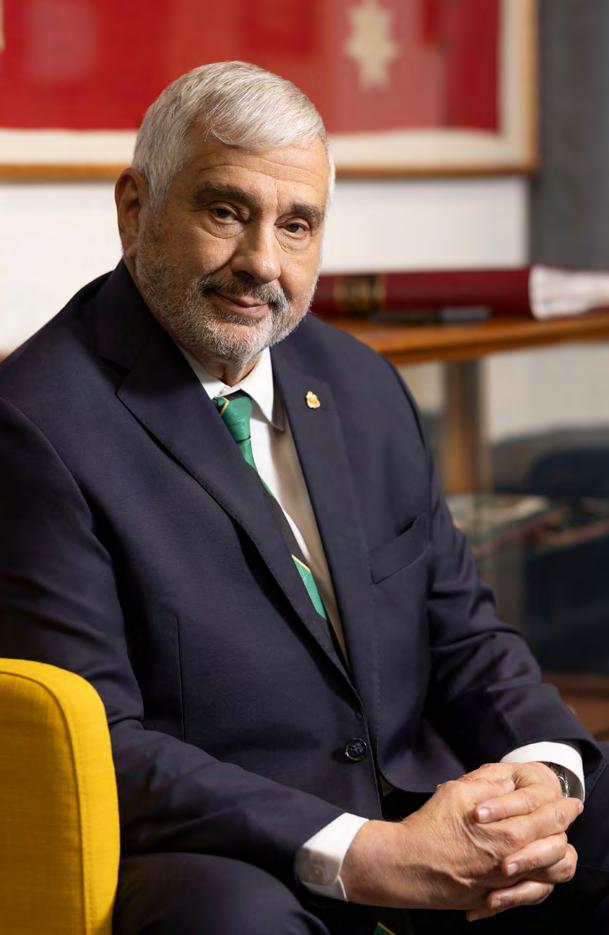
On behalf of the RSL, I extend a sincere invitation to you to join us in commemorating Anzac Day on Friday, 25 April 2025. This solemn occasion allows us to honour the enduring contributions of our service personnel, both past and present.
This Anzac Day marks a significant anniversary –110 years since the ANZACs landed on the Gallipoli Peninsula in 1915 during World War One. It was the first major military action involving Australian and New Zealand forces. Amidst unimaginable hardship, the ANZAC spirit was forged. The ANZAC spirit has become the benchmark for future generations through their endurance, courage, ingenuity, good humour, and mateship.
The legacy of the ANZACs continues to inspire us all. On Anzac Day, we honour this legacy and that of all who have served our nation in wars, conflicts, peacekeeping or other operations – and their contribution towards our way of life.
There’s no greater way to honour those who have served than by commemorating together as a community. On Friday, 25 April, thousands of Anzac Day services will take place across Australia. The RSL warmly welcomes all members of the community to attend. Whether you are travelling or staying close to home, please find a local Anzac Day service and stand with us in remembrance.
Plan your Anzac Day: anzacspirit.com.au
Our veterans deserve recognition and support throughout the year, not just on Anzac Day. The RSL is Australia’s largest ex-service organisation, dedicated to serving and supporting those who have served since 1916. RSL Australia advocates to ensure the needs of veterans and their families are met and their voices are heard year-round.
The RSL works tirelessly to improve the lives of veterans and their families. There are RSL subbranches in over a thousand locations across Australia, offering a community of care, camaraderie and commemorations - a place to connect with other veterans and veteran families. RSL State and Sub-Branches deliver services tailored to reflect the priorities and needs of veterans in their communities.
The RSL welcomes new members and invites all current and former serving ADF personnel to join the RSL family. Belonging to the RSL means someone always has your back. Join us and become a part of something bigger.
Learn more about the RSL: rslaustralia.org


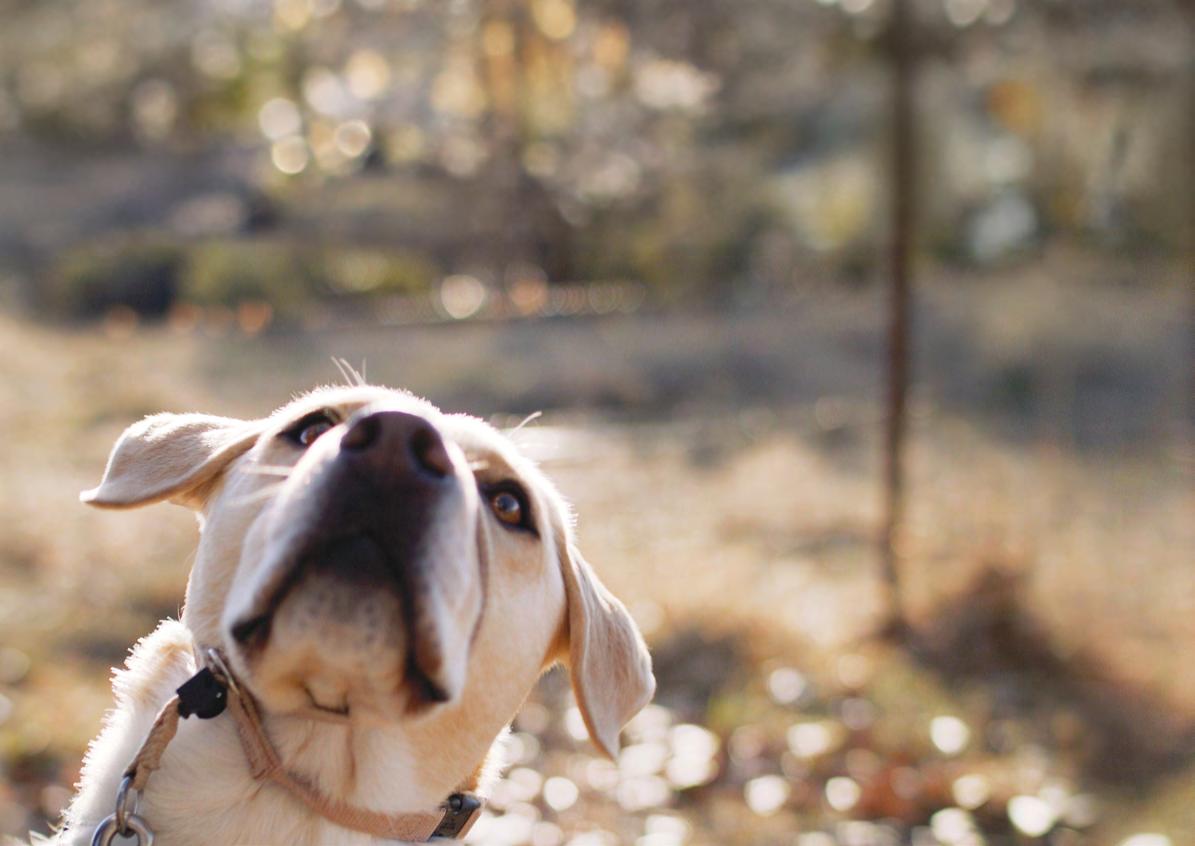
Introducing Australia’s Defence Bank Foundation Visa Credit card. It’s a win for members, a win for veterans and a win for specially-trained dogs like Bruce, whose handsome face appears on the card.
• Up to 55 days interest free on purchases.
• Same low rate for purchases and cash advances.
• Additional cardholder at no extra cost.
Australia’s Defence Bank Foundation supports the Defence Community Dogs’ Program. It provides specially-trained assistance dogs to veterans living with post-traumatic stress disorder (PTSD). Thanks to you, we’ll donate half of the annual card fee every year to do what we can to serve those who protect us.

FEATURES
2 RSL Australia Foreword
12 Albert Jacka by Mat McLachlan
34 The Dreaded Conscription Lottery by Peter Tilbrook
36 The Steve Vizard interview
42 The Brendan Sowry interview
80 Artist, film producer, surfer Mick Sowry opens up in a chat about loss and recovery and the role of art.
86 Housing Affordability by Ross Gittins
90 A Park Where Anzac Day Comes Early by Tony Wright
SPORT
6 AFL Ralph Robertson
8 South Australia wins the Sheffield Shield
10 The Doc Seddon Horseshoe
11 The Soft Winter Light by Mark Bau
16 The Wendy Sharpe interview
22 Gerald Fraser... a life by Michael Macdonald
23 10 Songs – Jack P Kellerman
30 From Service To Set – Veteran’s Film Foundation
32 Anti-racism and the Arts
50 National Breast Cancer Foundation’s Sarah Jane Monahas
57 On the Frontline of Care Pancare Foundation
58 WEHI Scientists contributing to Australia’s war effort
60 The Buzz Bidstrup interview
94 Meandering Mon in India – Monique March
96 Sail On Sailor - A loving tribute to sailing Olympian Luciano Sandrin
100 Bula, Welcome Home – Moira Partridge
‘The Last Post’ magazine is owned and published by GTR Publishing, a subsidiary of B4E Pty Ltd, 95 Ballarat Street Yarraville 3013 VIC
MANAGING DIRECTOR & PUBLISHING EDITOR
Greg T Ross ART DIRECTOR & GRAPHIC DESIGNER Kirstie Wyatt 0419 035 000 kirstie@wyattcreative.com.au
ADVERTISING
www.thelastpostmagazine.com

102 A Bossa Nova Pilgrimage - Dr Bruce Cherry The Last Post Magazine has been praised nationally and internationally since it was launched in 2011 and is designed by Kirstie Wyatt from Wyatt Creative. Kirstie is a freelance graphic and web designer and can enhance your marketing to get the results you want in your business.
SUBSCRIPTIONS
www.thelastpostmagazine.com www.isubscribe.com.au www.magshop.com.au
ENQUIRIES
GTR Publishing 95 Ballarat Street Yarraville 3013 VIC 0419 165 856 www.thelastpostmagazine.com
FRONT COVER: Ralph Robertson
Ralph Robertson was inducted into the Australian Football Hall of Fame last June and has made history as the first New South Wales pioneer to receive the national honour, more than 100 years after he was killed on active service during the First World War.
Photo: Courtesy AFL.

facebook.com/thelastpostmagazine gregtross.bsky.social
Robertson’s great-nephew, Tim James, was one of the family members who attended the Australian Footbal Hall of Fame event in Melbourne on Ralph’s behalf, and spoke to The Last Post about what that meant to his family.
Tim said the game’s recognition of Ralph’s footballing career, first through the NSW/ACT Hall of Fame induction, and then the national Hall of Fame, was the catalyst for his research into his family history.
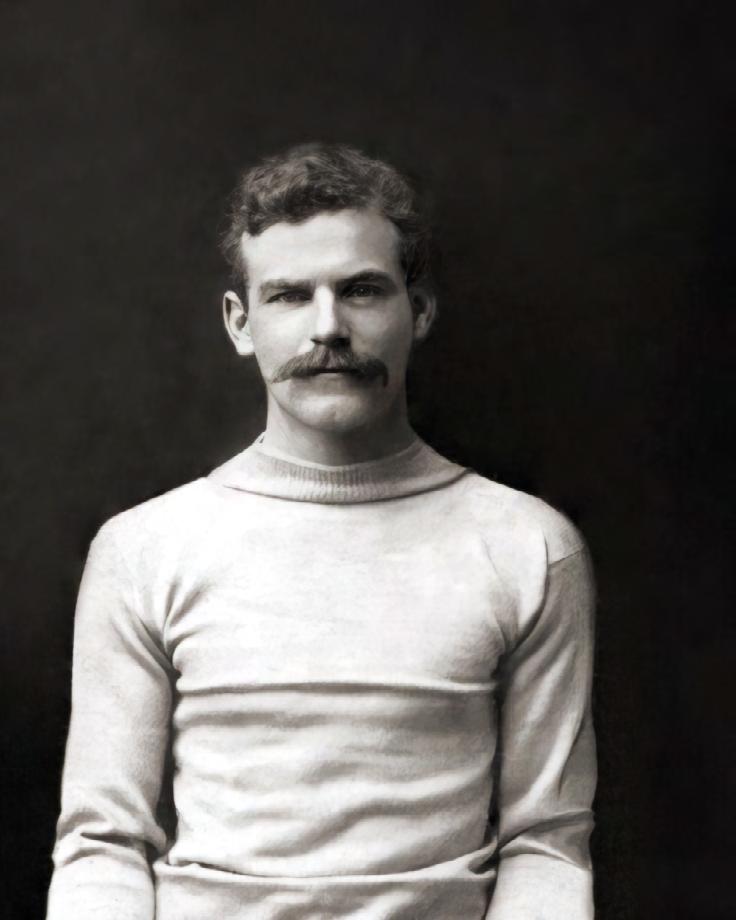
The induction of Ralph Robertson into the Australian Football Hall of Fame last June made history, as the first New South Wales pioneer to receive the national honour, more than 100 years after he was killed on active service during the First World War.
“It’s a strange feeling thinking about how I can touch the turn of the century through only my parents and grandparents,” Tim said.
“So much happened during their lives, from the wars to the Great Depression, it was such a different time and Ralph must have been an incredible person.
“I can remember my mother talking about her uncle being killed in the First World War, but we really didn’t have any great understanding with regards to much else… and it was a huge surprise to our family when my mother received a letter from the NSW/ACT Hall of Fame.”
Robertson was one of the inaugural 100 inductees into the newly formed NSW Australian Football Hall of Fame in early 2024, recognised for his contribution to football in Sydney far before the Sydney Swans and GWS Giants were established.
After 14 games for St Kilda in 1899 and 1900, Robertson moved to Sydney and was a top player in the local competition, first for East Sydney and then for North Shore.
Between 1903 and 1914 he played 41 representative games for New South Wales, including captaining the side on 14 occasions, while playing in two premierships. Newspaper reports, and the general chatter of the day, suggest he would have been a walk-up start for the AllAustralian team had there been one.
Historians in NSW had been lobbying for recognition for him on the national stage for more than a decade.
Robertson’s inclusion in the NSW Hall of Fame was special to his family, however his most recent induction into the national archives elevated that recognition to another level.
“Talk about skeletons in the closet, this is a nice skeleton that has been uncovered. We suddenly have a national hero in our family, and that was a really proud moment for us all,” Tim said.
“The experience [at the Hall of Fame] was fantastic. We were all very excited to do it and we had a great night.
“Our family has donated both the New South Wales and the Australian Football Hall of Fame awards to the New South Wales AFL Association. We thought it was better for the awards to be on display in a museum, to be recognised in perpetuity and to inspire the people who read about Ralph’s life and contribution to Australian football.”
Robertson served in the Australian military expeditionary forces that attacked German colonies in the Pacific during the First World War. He was discharged in 1915 on the grounds of ill health and recuperated in the Riverina region.
He then went to England and joined the Royal Flying Corps where he was killed in a training accident in 1917.
Each year, the AFL publishes the list of senior footballers from the VFL, WAFL, SANFL and other senior leagues, who lost their lives on active service and Robertson’s name is among the annual honour roll, while also being memorialised on the walls of AFL House at Docklands in Melbourne.
MARGIE SAUNDERS
AFL House ‑ Melbourne
St Kilda 1899-1900, 14 games
East Sydney 1903-1908, estimated 80 games.
North Shore 1909-14, estimated 70 games.
Captain 1904-08 (Easts) and 1909-14 (North Shore).
2x Premierships 1903, 1909 39 games for NSW 1903-13
NSW National Carnival captain 1908, 1911, 1914 Killed on Active Service 1917
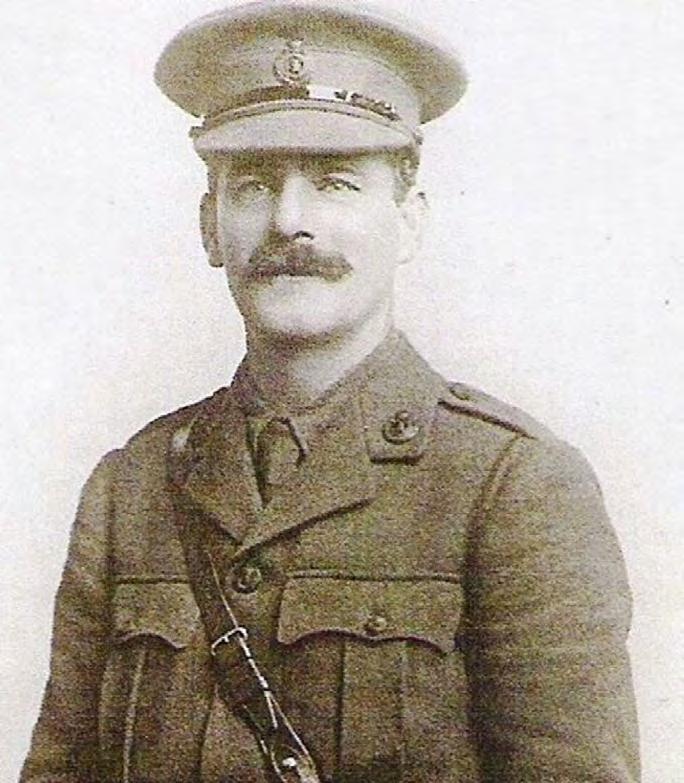
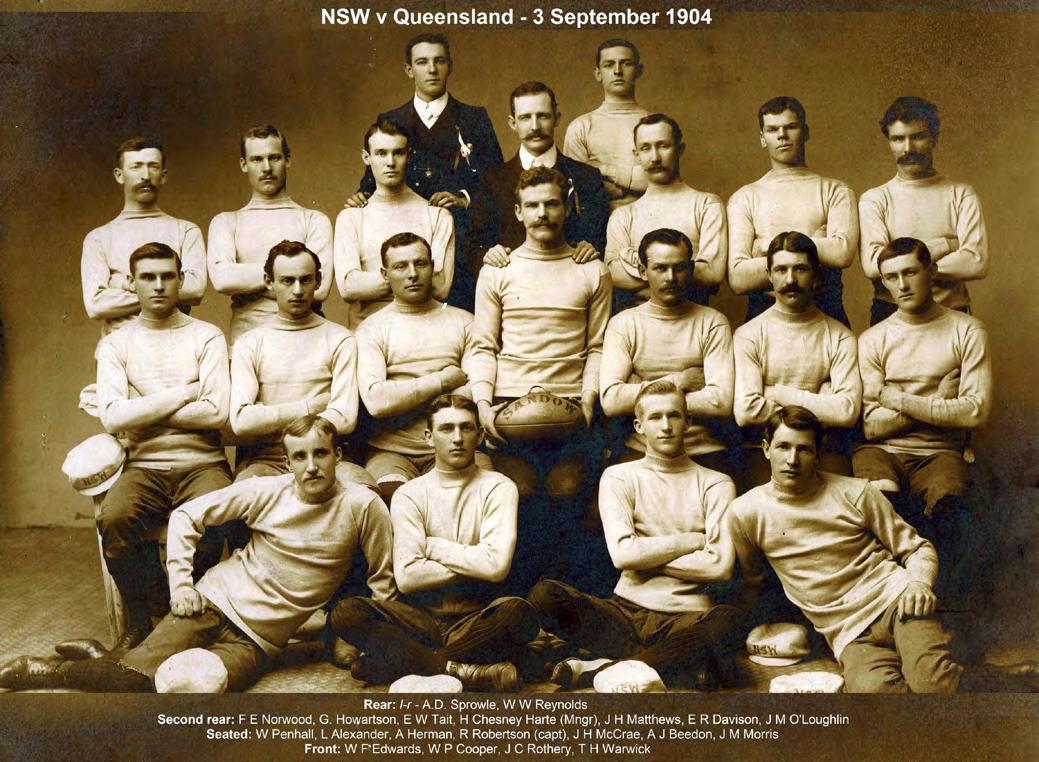
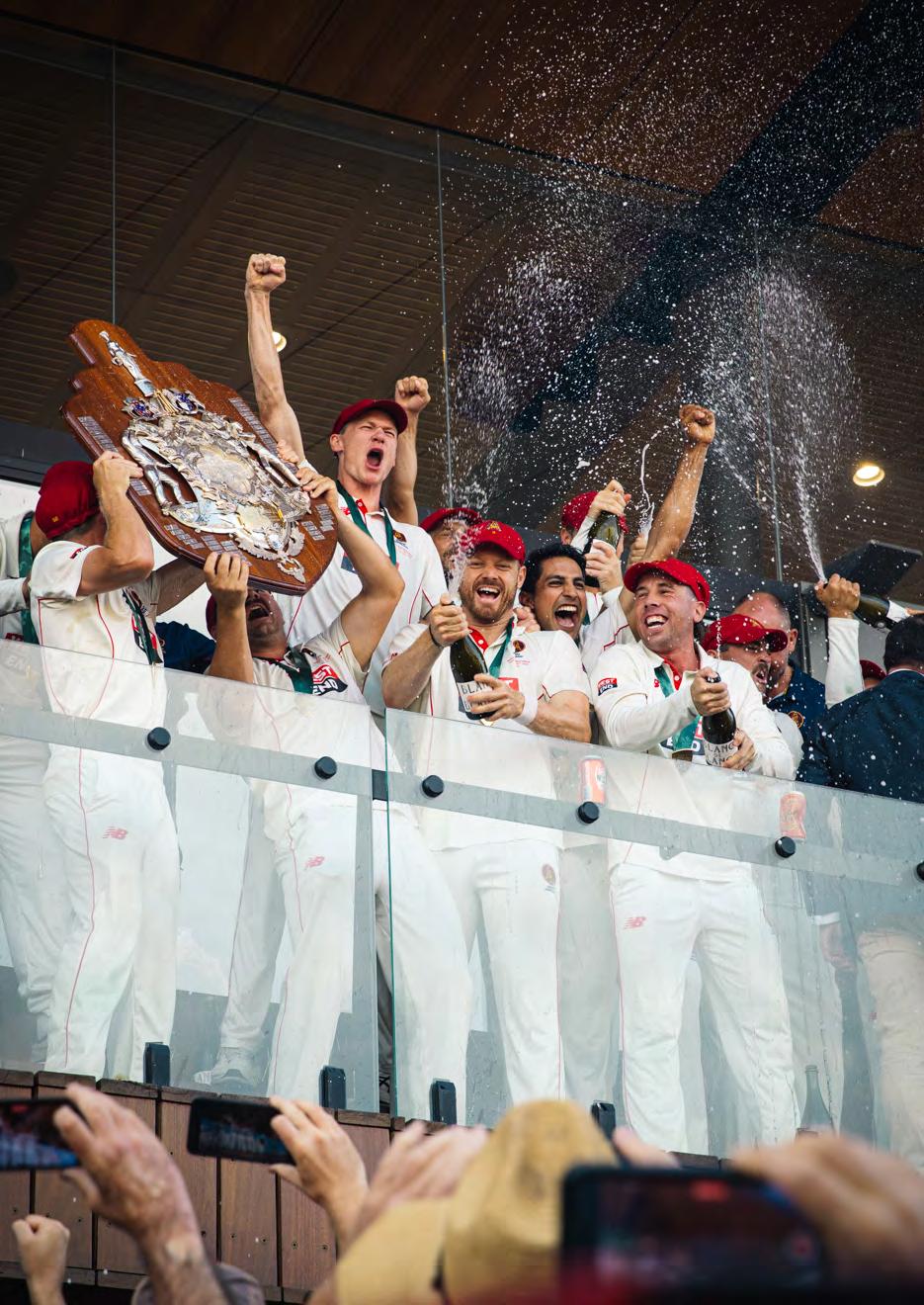
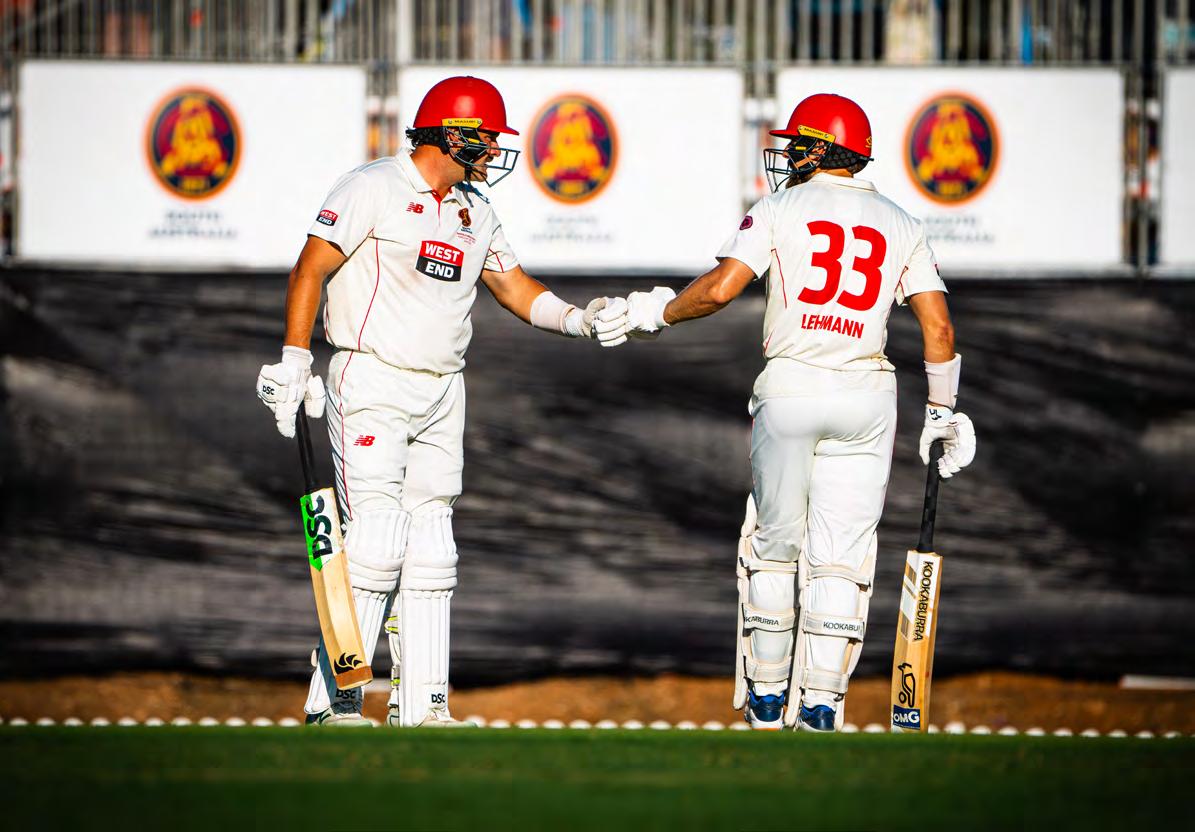
South Australia have chased a record total to win the 2024/25 Sheffield Shield, breaking a 29-year title drought.
A mid-wicket flick from the bat of Jason Sangha that will forever live in the history of South Australian cricket has secured the state’s first Sheffield Shield in 29 years.
Set a record chase of 270, the hosts found themselves in early trouble, before a stand of 202 between Jason Sangha (126*) and Alex Carey (105) guided their state within touching distance of the elusive Shield.
Celebrations immediately commenced upon the final shot, with the passionate South Australian fans pouring onto the wicket, bringing to mind the wild celebrations at Adelaide Oval almost 3 decades prior.
Brendan Doggett was announced as Player of the Match for taking the best ever match figures in a Shield Final, a match defining 11-140.
The day didn’t always belong to the South Australian’s, with 3 early wickets putting the hosts on the back foot.
However, mirroring the efforts of the Queenslanders in their second innings, South Australia fought back hard with a massive partnership in the middle order, taking a toll on fatigued bowlers and a flattening batting track.
Chaos engulfed the cricket as the third session begun, with every run being cheered as loud as a milestone.
Aggressive running and inventive stroke play played under the watchful eyes of a loving mural to David Hookes, made sure the result was a foregone conclusion.
Nathan McSweeney becomes the first captain since Jamie Siddons to lead South Australia to a Shield victory, ensuring that the prestigious prize returns to Adelaide Oval.
The 4-day match hosted at an upgraded Karen Rolton Oval, was a rollercoaster for the two sides.Earlier in the match, Queensland had been bowled out for a record low total of 95, before fighting back in their second innings to set South Australia an imposing 270 runs.
The bowling cartel of the hosts showed heart on a pitch that favoured batters, with their fight keeping the team, and the crowd, alive in a drying contest.
Doggett’s record-breaking bowling performance was well supported by Nathan McAndrew, Jordan Buckingham, Liam Scott, and Ben Manenti.
Jake Lehmann was the early hero with the bat for the hosts, with his century ensuring a healthy lead.
South Australia now holds both the One Day Cup and the Sheffield Shield, becoming only the 12th team to achieve the double-up in the same season.
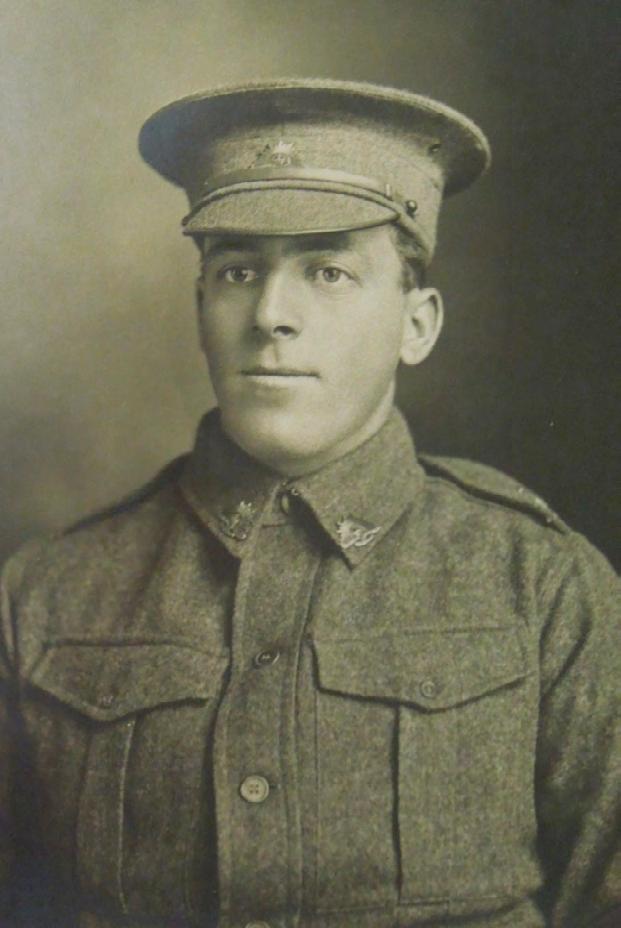
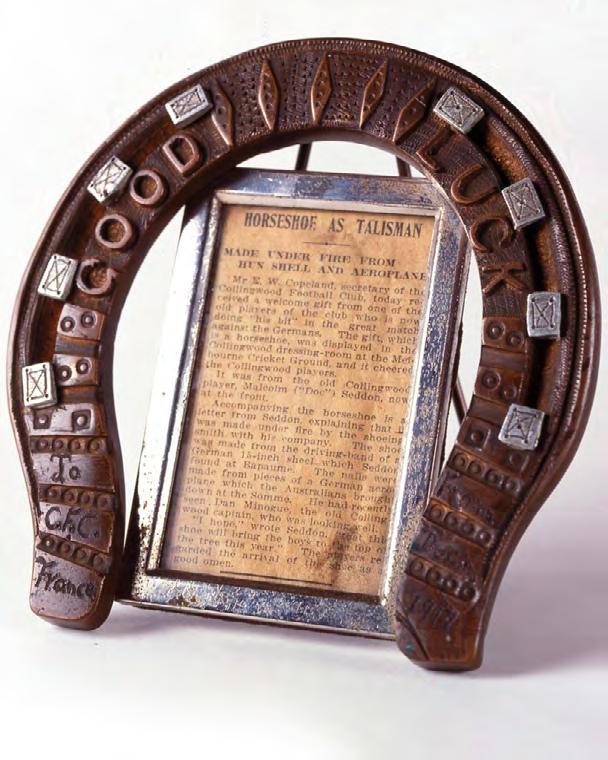
There aren’t many football jumpers that feature a horseshoe on the front.
But Collingwood’s 2025 Anzac Day guernsey does. And the story behind its inclusion is both remarkable and powerful.
The man at the centre of it all is a player called Mal Seddon, better known to all and sundry as ‘Doc’. He was a tough, rugged follower/defender with the Magpies when the First World War broke out – the kind of player respected and beloved by his teammates. He enlisted in 1915, alongside his best friend and fellow teammate Paddy Rowan.
Eighteen months or so later, Doc was fighting in France. Rowan, the man he viewed as a brother, had been killed a few months before, and Doc desperately wanted to connect with home. And this time, he decided, a mere letter would not be enough.
So he engaged a shoeing smith from his company, and asked him to make a horseshoe. Despite being under constant attack from shells and gunfire, he agreed. The shoe was made from the driving band of a German howitzer shell that Seddon had found at Bapaume, with the nails being made from a German plane the Australians had brought down at the Somme.
Seddon had two of these keepsakes made. One he sent to his mother. The other he sent to his former teammates. The Collingwood version arrived at Victoria Park late in September of 1917, just before the Grand Final against Fitzroy. It carried the inscription, ‘Good Luck. To C.F.C, from Doc. France 1917.’
“I hope,” wrote Seddon in an accompanying letter, “that this shoe will bring the boys to the top of the tree this year.”
So respected was Doc, and so heartfelt the response to his surprise package, that the horseshoe was nailed to the dressing room wall on Grand Final day. Some of the players were reported to have touched it before going out on the ground.
The Pies duly saluted against the Roys that day and came away with the 1917 Premiership. And when Seddon himself returned to footy after the War ended, justice was served when he was able to directly be a part of Collingwood’s 1919 triumph in what was dubbed ‘The Peace Premiership’.
There was a remarkable footnote to the story too. When Seddon returned home, he kept a promise he’d made to his great friend Paddy Rowan, and helped look after the child who had been born while they were away – a young boy Paddy never got to see. Rowan’s widow had been a childhood friend of Seddon’s, and the two grew close, eventually marrying and having two children of their own.
Incredibly, the horseshoe has remained with the Collingwood Football Club. It was initially famous simply for the story behind it, but in recent years has come to carry far greater significance, becoming a central part of Collingwood’s Anzac Day commemorations.
This year it is front and centre on the Magpies’ guernsey – an enduring symbol of love, loss, mateship, loyalty, courage and connection.
MICHAEL ROBERTS
In winter, when I was a little boy, my dad would take me to the footy just about every Saturday afternoon. I wasn’t that interested in footy but I knew Dad liked taking me.
We barracked for Carlton whose home ground was Princes Park in Parkville. We would park the car and walk towards the ground. The reserves match would be playing and as we got closer the roar of the crowd would get louder and that roar had the ability to travel up my spine and give me goose bumps. Once in the ground, once part of the crowd, the roars didn’t have the same effect, my voice was part of the crowd now, I was part of the game.
The Footy Record was always purchased before entering the ground. Prior to the first bounce I would study it to memorise the positions every player was supposed to be in. Then I watched as they ran onto the ground to make sure that they went to the position the Footy Record said they were supposed to be in. Any changes were discussed and someone always said that he knew they would make that change. The scoreboards were small and the names of the teams playing other matches were shown by letters, the Footy Record told you which letter stood for which team. Without the Footy record all that you knew was that A was thrashing the pants off B.
The main match started with a blast of the siren and all attention focussed on who had the ball and the failure of the umpire to award obvious free kicks to our team. We would always be in the standing room area between the scoreboard and the goal posts. When enough beer cans had been discarded a common thing to do was to stand them up and stand on the cans, two under each foot, to get a better view. As the booze took hold, balancing on

cans became harder and during the last quarter it was common for over excited fans to forget the precariousness of their situation and come tumbling down. I was fortunate, if I couldn’t see properly, Dad would hoist me onto his shoulders and squeeze my leg when Carlton scored.
The standing room area under the scoreboard was full of Italians and many of dad’s workmates would be there. At this end of the ground, Italian voices urged the mighty blues on. At half time the salami came out and was carved up and handed out. Dad knew I didn’t care for salami so he would give me enough money to get a pie and a can of Coke. Halftime was also when everyone made a bee line for the toilets which, by the time the 3rd quarter started, had become a sea of misdirected piss. Half time was when the little league played and this was a chance for the supporters to continue their criticism of the umpires and his complete ignorance of the rules and berate him for his appalling eyesight.
The second half was when things got serious. The players hit harder and the roars seemed to come from some place under the turf, they could linger and bounce around the stands and collide with the next new roar. Puffs of cigarette smoke hung over the crowd.
Even though footy is a winter sport my most vivid visual memory of all those Saturday afternoons was of the soft winter sun raking across the lush green grass, so different to the summer sun that just wilted and baked everything.
No matter where I am now, when I see a soft winter light caressing the land I think back to those Saturday afternoons and the only time that I ever really connected with my Dad.
MARK BAU
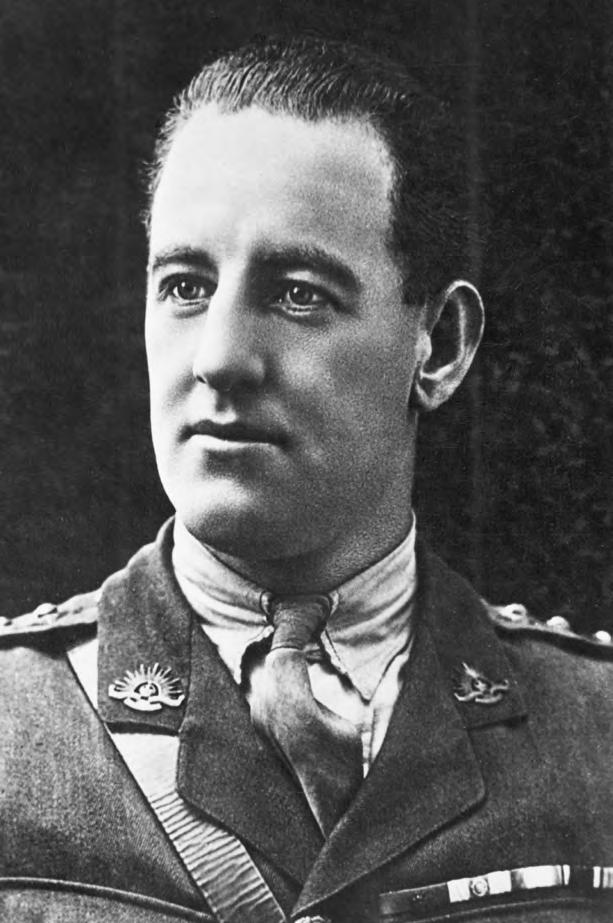
The worlds of sport and war have often been closely linked. When the First World War broke out, and Australia was keen to raise a fighting force of its brightest and best young men, it was natural that attention turned to the sporting field.
In fact, fighting a war was often portrayed as the ultimate sporting test: one team versus another, on a field requiring maximum commitment and endurance, where the stakes could not be higher – literally life and death. Captains of rugby teams, tennis stars, top-scoring cricketers – who else to better represent Australia on this greatest of world stages? There was a strong belief that skills honed on the sportsfield would make for greater fighters on the battlefield.
Military recruiters recognised that men were more likely to enlist if they could serve alongside others from similar localities and occupations, so they formed military units to foster this spirit of comradeship. Battalions were raised in specific regions, so that men could serve alongside their own townsfolk, occupational groups were encouraged to enlist together, leading to an influx of postal and rail workers, and more creative links were sought to encourage new recruits to feel like they would be fighting alongside likeminded men. The system was similar to the ‘Pal’s Battalions’ that were being raised by communities throughout the UK, albeit encompassing much larger geographic areas in Australia.
In this environment, it was almost inevitable that a sports-inspired battalion would be created, and in 1917 a dedicated campaign was launched to lure sporting types into the military. The campaign needed a poster-boy (quite literally – the key promotional tool of the recruiting campaign was a series of posters calling on young men to enlist) and there was no better choice than Albert Jacka.
Jacka had earned Australia’s first Victoria Cross of the war at Gallipoli, and was a legend in the Australian Imperial Force. Recruiters were quick to seize on his fame, and he became the face of the ‘Sportsmen’s 1000’, a campaign that vaguely (and misleadingly) implied that a thousand rugged sporting types who signed up would get to serve with Jacka. Posters promoting the scheme featured Jacka front-and-centre, with an eclectic range of sportsmen depicted in the background, from golfers, cricketers, and footballers, to lawn bowlers and rowers. Crucially, there was a boxer depicted as well – a key part of the Jacka narrative was that his skills as a boxer before the war had led directly to his success during it. It was at least partly true – Jacka was certainly a brawler, and had earned his VC for single-handedly taking on a dozen Turks in an isolated scrap of trench. The goal of the campaign was spelled out in capital letters: JOIN TOGETHER, TRAIN TOGETHER, EMBARK TOGETHER, FIGHT TOGETHER, a pretty compelling offering for young men who saw themselves as somewhat elite. Class distinction was also important – the depicted sports were decidedly upper-class, and the whole concept seemed designed to encourage the upper classes to join a unit where they wouldn’t have to serve alongside working class riff-raff.
At the end of the day the concept turned out to be more of a marketing ploy than a military manoeuvre – no battalion bearing the ‘Sportsmen’s 1000’ banner was ever formed, and men who responded to the campaign were enlisted into whatever battalion most needed them – but the concept worked to a degree, and encouraged men who saw themselves as fit and capable to join up. Jacka went on to earn other bravery awards at Pozieres and Bullecourt and survived the war, but he paid a high price for his service. For the rest of his life he suffered from his war wounds, and died in 1932 aged only 39. His last words, said to his father, were ‘I’m still fighting, Dad.’ More than 90 years after Jacka’s death, his legend still looms large and, as we sit down to watch Anzac clashes on the football field this Anzac Day, we are reminded that the link between sport and the First World War still endures.
MAT McLACHLAN
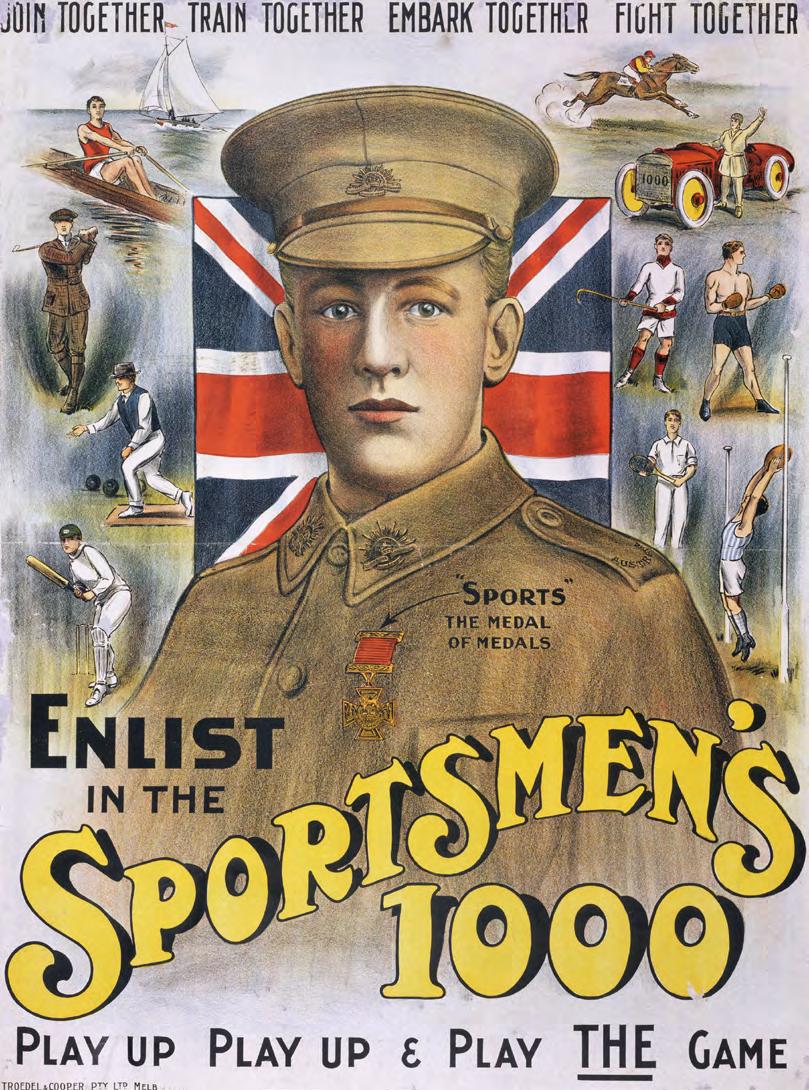
Mat McLachlan is one of Australia’s leading war historians and battlefield guides and has spent two decades following in the footsteps of Australian troops on battlefields around the world
Mat hosts leading history podcasts Living History and BattleWalks, produces Pete & Gary’s Military History podcast, and his ‘Living History’ YouTube channel has over 5 million viewers a year. He has written four books: ‘Walking with the Anzacs’; ‘Gallipoli: The Battlefield Guide’; ‘The Cowra Breakout’; and ‘Krithia: The Forgotten Anzac Battle of Gallipoli’.
In 2008 Mat launched Mat McLachlan Battlefield Tours, which has grown to become Australia’s most successful battlefield tour company, sending thousands of Australians to battlefields around the world each year.
To follow in the footsteps of the Anzacs, visit www.battlefields.com.au
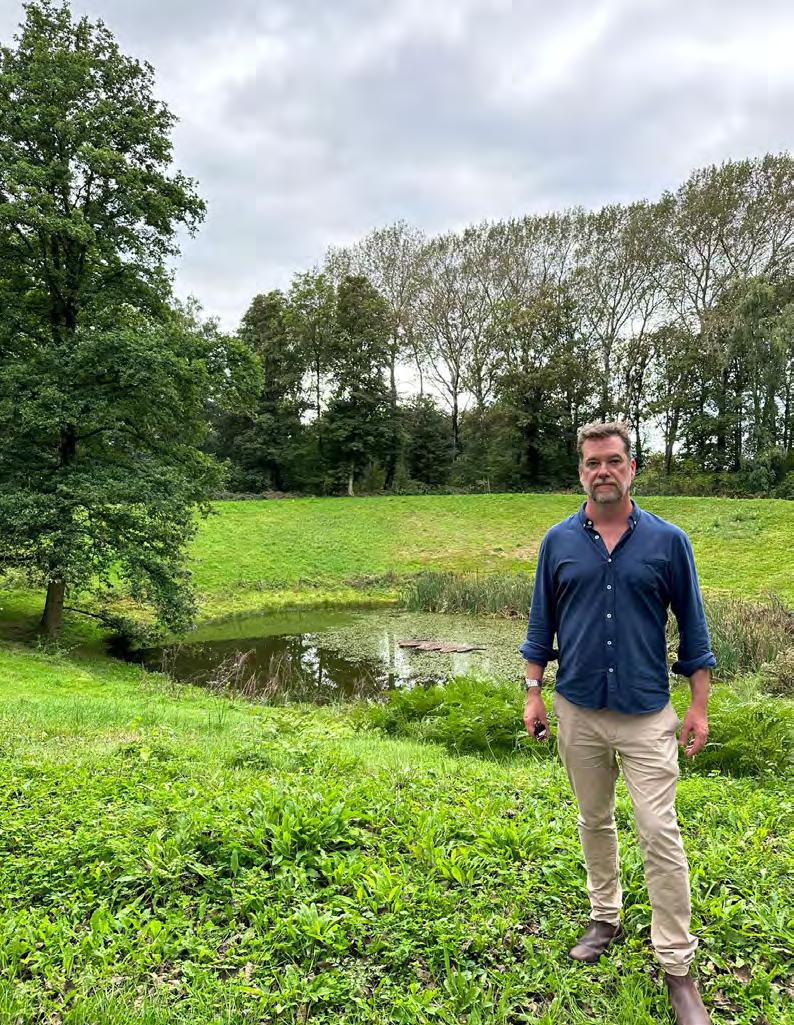
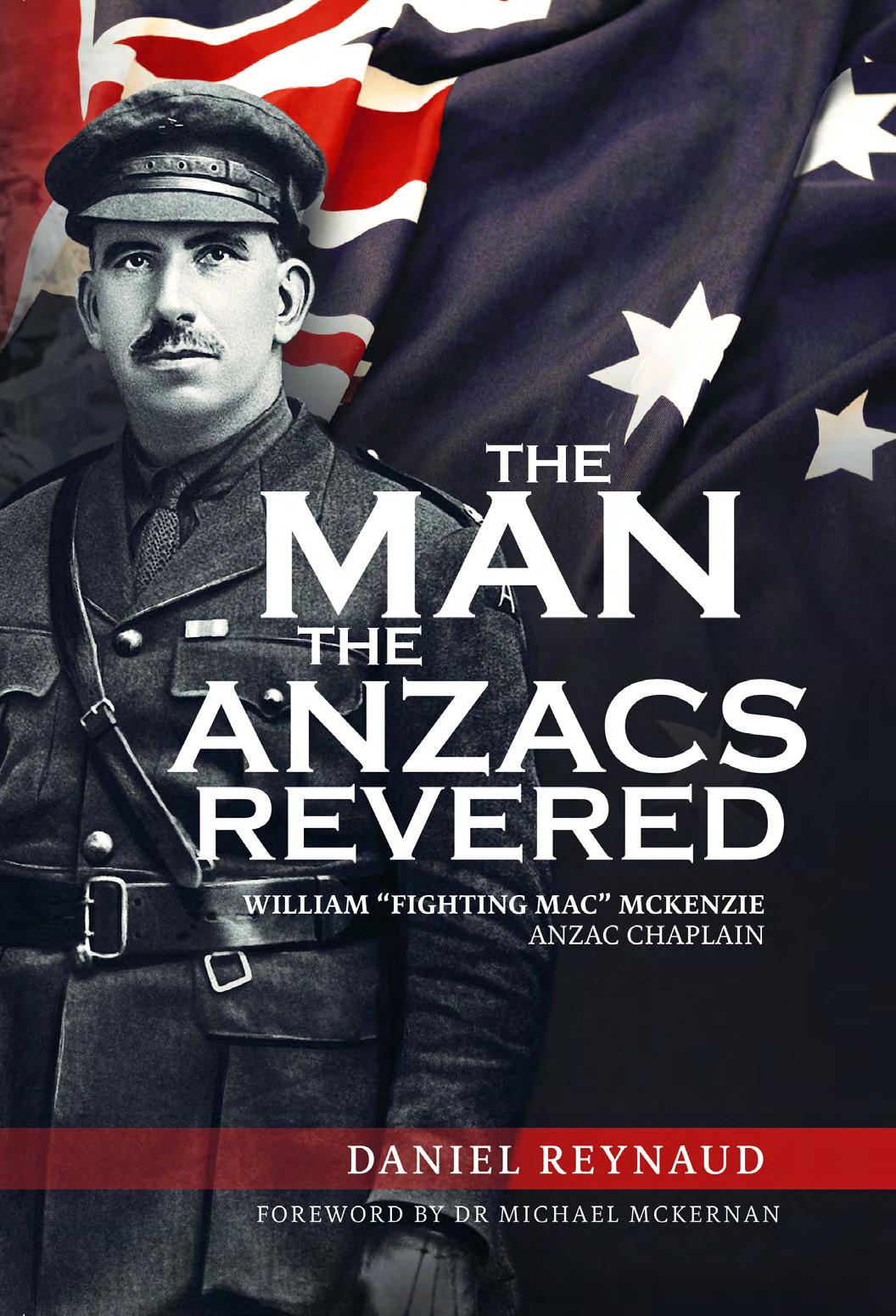
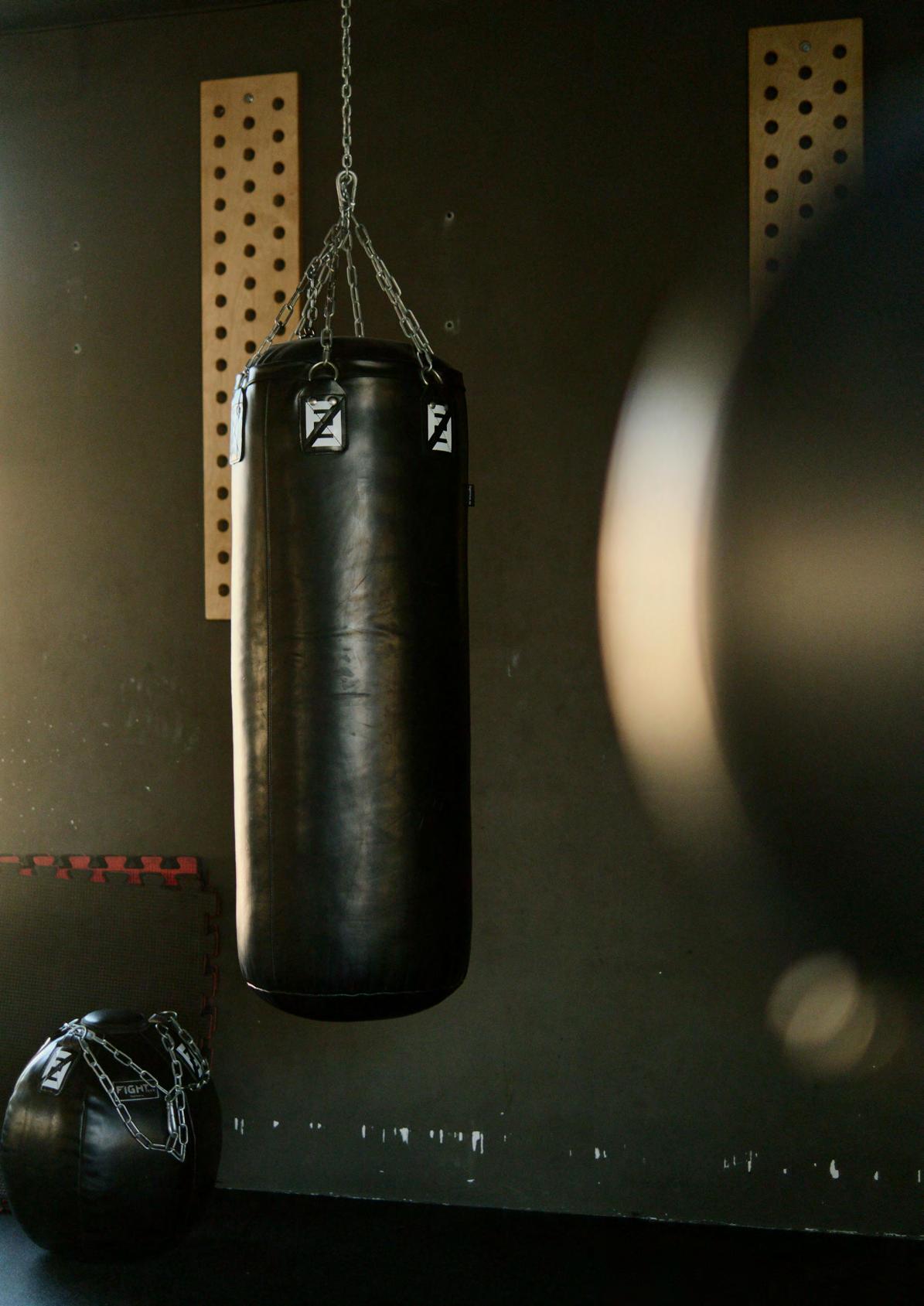
On the sticky seats of humidity in Kinshasa in 1974, caught between spectacular wealth and obscene poverty was The Devine v The Likeable
Yet Terrifying Big George.
The Buntu philosophy, pulling shots on the Congolese in battles of ego, status, strength, libido.
Not as fighters but as forces, they were.
Black Power v The White Negro.
Training to
pop
music, Big George hoped to knock Ali out in a war of religion with no Plan B.
Ali: Talk. Trash talk.
Talk.
Talk.
The theatre of boxing. Winking at the crowd. The harsh and belittling tones of Ali, entering his voice as easily as some may light a cigarette.
At his best outside the ring but an Executioner within. The Professor of Boxing, was Ali.
GREG T ROSS
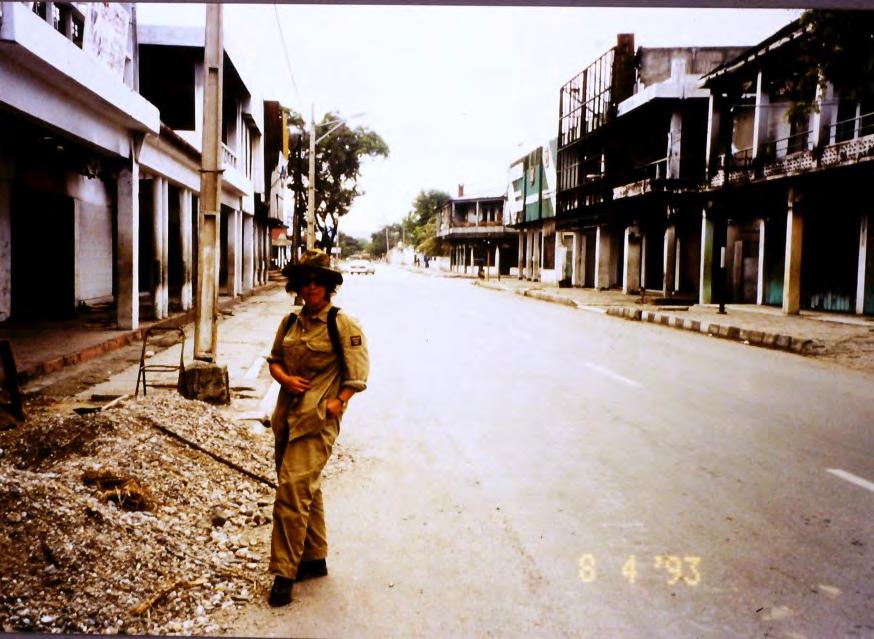
Greg T Ross: You are with Greg T Ross and welcome to The Last Post. Earlier this year (this interview was conducted prior to International Women’s Day, March 8) I was lucky enough to catch up with someone who’s been connected with the veteran community, or at least Australia’s defense action and peacekeeping etc. And also civilian life, mostly civilian life, a lady of great acclaim. Wendy Sharpe, AM for services to arts and the community. We welcome you to The Last Post, Wendy. Hello.
Wendy Sharpe: Hi, Greg. So lovely to be here.
GTR: It’s a great thing to have you here. You were Australia’s war artist in East Timor. That was 1999. Is that correct?
WS: Yes. So the commission was 1999 and I continued making work through 2000 where I had my exhibition at the Australian War Memorial.
GTR: Fantastic. Well, we’ll talk a bit more about that in a moment, but of course very relevant with International Women’s Day approaching on March 8th, and we look forward to celebrating that. Your exhibition coming up, I believe in the UK, just correct me if I’m wrong with Anita Taylor, Spellbound, or is that right? Or
thelastpostmagazine.com/the-last-post-radio-show-podcast
Spellbound is at the Art Gallery in New South Wales?
WS: Nearly. Nearly right. I had an exhibition called Spellbound at the Art Gallery of New South Wales. And yes, I do have an exhibition coming up in March, in the UK and it’s actually about women in mythology. So in a way it does still have a bit of magic and spell.
GTR: Yeah. Well, that’s fantastic and apologies for getting that confused. My notes are scrawled.
WS: Look, Greg, I always have a hell of a lot on and things can be confusing because I’m always doing a whole lot of things at the same time and a lot of them are not very related, so it can be confusing.
GTR: Yeah. Thank you for the escape button. Tell us a bit about the exhibition in the UK.
WS: Well, actually, it’s a really interesting idea in that each of us are making eight large works on paper, choosing women from classical mythology and retelling their stories visually, so they’re not kind of cliched, cutesy, Venus or something, or Aphrodite as she is in Greek, etc. I will say this, the reason why classical mythology is still around and anyone even bothers looking at it is because even though they’re ancient stories,
they’re stories about human nature. And there are also stories where almost a definition of things that we don’t believe is where good people live happily ever after, and bad people are punished.
Well, in classical mythology, sometimes good people doing nothing wrong, something awful happens to them. And it also has greed and jealousy and all of those foibles, which of course have existed wherever humans have existed.
GTR: And indeed very relevant with International Women’s Day on March 8th. But the good people surviving and the bad people being knocked down by fate is a great myth. I think we saw that last year with Donald Trump.
WS: Yes. Oscar Wilde said in importance of earnest... in being earnest. He said something to that effect and he said, “That’s what fiction is.” And we know that because we like to think that there is justice and that the good triumph and good triumphs over evil, but not always, unfortunately.
GTR: No, true enough. What would happen to society, Wendy, if we expel that myth totally and failed to believe in good outcomes etc?
WS: That’s true. That is true. And that actually is a very good segue into
peacekeeping. It is. Because when you were saying that, it is. When you were saying that I was thinking about the role of peacekeepers is actually the role of good, and there’s no question that it’s good because it’s stopping more violence.
GTR: Yeah. Well, talk about that in just a sec. But finally, I guess on the UK thing, when are you heading off to the UK?
WS: I’m going via Thailand next week, early next week. So I’m flat out at the moment getting everything organized before I go. And I also am incredibly lucky to have an apartment in Paris where I’m going to spend some time too. So life is pretty good, I have to say. I have to keep reminding myself how lucky I am. So I’m away until nearly the end of March.
GTR: Well, that’s not a hard thing to do, to be over and have the exhibition in the UK and to be shacked up there in Paris at the same time. That’s quite a beautiful thing to be doing.
WS: It’s not sad. It’s not sad.
GTR: No. Let’s be totally honest.
Spellbound at the Art Gallery in New South Wales, can you tell us a bit about that?
WS: Yes. That was a major exhibition which was curated by Natalie Wilson, who works for the Art Gallery of New South Wales and was fabulous to work with in that I came up with a concept and she helped me to facilitate what I wanted to do. So one room was an unusual hang. Things hung different, the heights. Some things touching, breaking all sorts of things that they usually do in galleries. These are sort of taboos, some of those things.
So the whole of the room became like one work instead of each piece nicely spaced. And all of the walls were colored. So you walked in and you felt like you were in one big artwork and that was a massive show. And then in the next room, one of the things was a recreation of part of my studio. So a bit of my studio was in there and I’ve got a big warehouse studio in Sydney. And I was also painting a large mural every Friday in front of the public. So there was a lot going on.
GTR: Well, I was pity that I wasn’t one of those people in the public there coming along. That would’ve been an amazing thing to witness. And isn’t it a beautiful thing about art too, Wendy, that the description you just gave there at the Art Gallery of New South Wales with your exhibition, Spellbound, isn’t it absolutely marvelous the way they can transport you and make you believe and all about perception, I suppose, your perception of art is the important thing.
WS: I think that’s a really nice definition of what the arts do. The arts in general. Obviously, I’m a visual artist. I’m thinking about painting. But yes, painting definitely. But when

you see a movie, you’ve just gone into another world. If you’re reading a book, if you’re listening to a story, music, it takes you somewhere else and it takes you into another world. And how wonderful is that? And it gets you to use your own imagination.
GTR: Yeah. Well said too. I guess Wendy, that’s the important thing, and we’ll never totally get on top of our imagination, the sense of what it can bring us and the amazing thing that it is. And talking about other countries earlier, we go Paris and everything. I suppose we go back to 1999, which we were discussing earlier, and your role in East Timor. You were attached to the army history unit, sketching locals and Australian peacekeepers, I do believe. Can you tell us a little bit about that, Wendy?
WS: Yes. Well, I’ll just give a little background because it’s something that people really obviously wouldn’t know, I guess, which is it’s not something you apply for an official artist. You can’t put in an application. When I got a phone call from the War Memorial to ask if I wanted to go to is Timor, and they talked about official artist scheme, I didn’t actually know what they were talking about because it had lapsed. It had been. It was in the Second War. I think it was a bit in the Vietnam War, but it kind of lapsed. And so I wasn’t really familiar with it, but I also knew that it was such an honor because it’s national, so they’re just choosing someone, “Would you like to go?”
And what they are choosing, and this is really the crux of it, I guess, is they’re thinking... Obviously they have to think that they value some of the artist’s work and that it would be good in their collection, but they also need to think, “What’s the point of actually
sending them over, particularly nowadays when you can watch things online, on television, on whatever? Why would you go?” You have to make work that is about being there. And as we know, we were just talking about travel a minute ago, just nice touristy, travel, whatever travel.
You can look at pictures online, but it’s not the same as actually walking through it, whatever it is, anything. It can be just going on holiday somewhere in Australia. It’s not the same thing. And there needs to be someone who’s going to synthesize the experience. The other thing that’s really interesting and surprising in a way is that... And I can’t remember how many. I’ve lost track now because I can’t remember, but there are only a few countries that still have this scheme.
I know the UK does and I think Canada does. There may be others. I can’t remember. But there’s not very many. And a question is, why would you bother sending art? Because everyone over there has got a camera. They’ve got a phone. Everyone’s got, etc, etc. And the answer is they actually want an individual’s response.
Now, I know photography is still an individual’s response. What do you choose to photograph? How do you... Of course it is. But if you are doing visual art even more so... I mean you could even just do... I didn’t, but you could actually do a whole of abstract paintings about how it felt. And every artist is there doing what they think distills their experience.
And they’re actually wanting that. Yeah, it’s really interesting. I mean, we’re talking about art, visual art, but you could get a whole lot of writers, whether they’re poets or whether
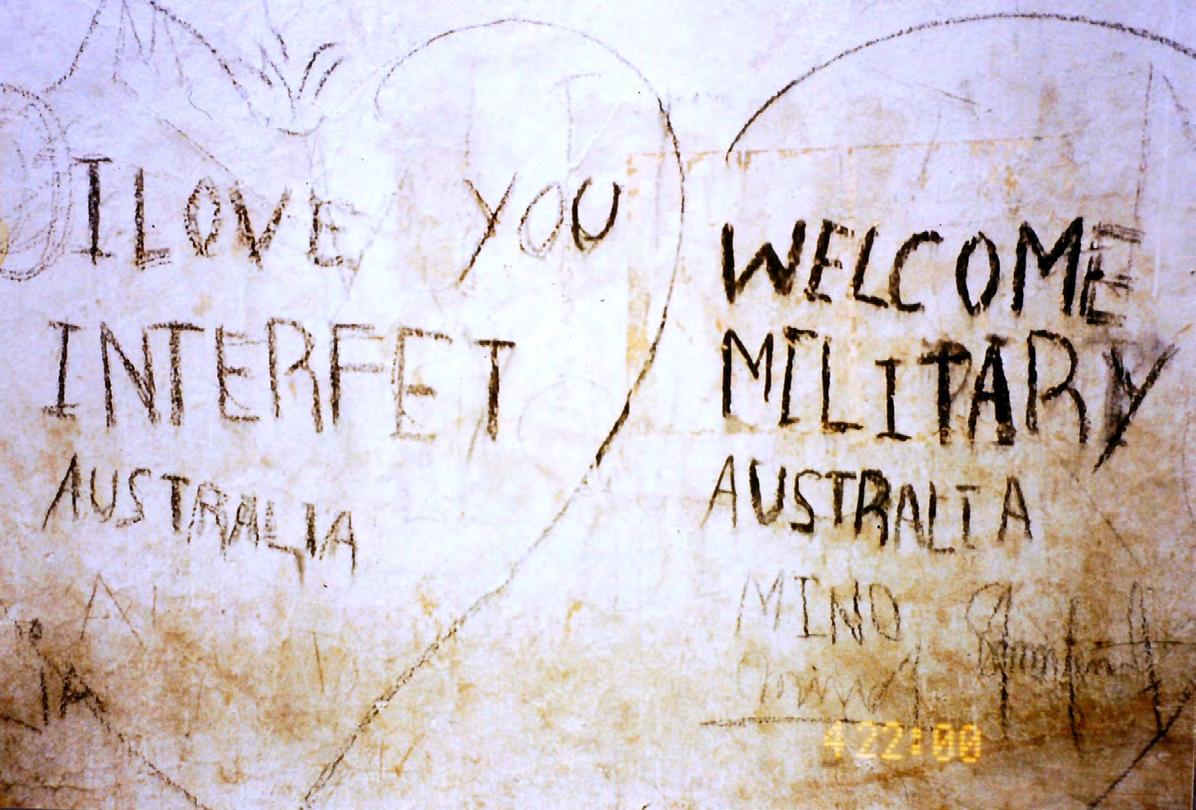
they’re people writing short stories and they would all talk about different things.
GTR: How amazing, Wendy, because actually it just brings me...and I’ll let you go on, but I do remember when COVID lockdowns were in fashion during the peak of the pandemic and the New South Wales or ABC or somebody I took part in it. They had a diary forum where what they wanted you to do was just fill out your day and send it through to the ABC or the government or something. I can’t remember now. I just recently read one of my journals from that time. And of course, a lot of people were giving their accent and view to their day under COVID. So what you are saying is quite a brilliant thought, actually. Poets, writers, painters, to give their descriptive of what they’re going through.
WS: Yeah, exactly. It is like that. I mean, even on a light, something light, if you and I and anyone listening, or anyone, a whole group of us went to, I don’t know, went to see a player, went to a restaurant together, say anything, went to the beach, and then we all had to talk about the experience, what struck you. We’d all say different things. That waitress was a bit rude, thought the dessert was rubbery. “Oh, I loved that thing. I loved the way they...” et cetera. Even something as banal as that, that’s still, we all notice different things and we are all struck by different things. And when someone points that out, it brings it home to you.
So that is what they do, and it’s really fascinating because there’s not really anything much else that I can think of that does that. So when they asked me, I obviously had to say yes. I was sent over to, originally, to Darwin, first of all where I was with the army that were waiting to go across there and were being trained, could be sitting through lectures and things about East Timor. And there was obviously things that I didn’t need to do, but I was listening to some of the cultural things and some of the things.
I was assigned Cameron Simpson who was attached to the army history unit as well as a bodyguard, but also as a person to tell me what on earth was going on because I didn’t understand what’s happening. I wasn’t wearing camouflage, of course, because I wasn’t in the army, but I was wearing khaki. And so I had khaki and I had a flash on my shoulder, which I still have one of those shirts, which has Australian official artist written on it, which apparently is fantastic, which apparently is a reproduction, is the same as artists wore during the Second World War.
GTR: Oh, wonderful.
WS: And I had that on my shoulder. Yeah, that was really fantastic.
GTR: You could have that framed and put at the art gallery of New South Wales’s work of art in itself.
WS: Well, you could because it is so special. So it was to show that I was
referred to, of course, as a defense civilian. So I’m with the army, but I’m not actually one of them, which is why... I don’t know what I’m doing. I’m really untidy. I don’t have a gun and I’m wearing lipstick. But anyway, so I attended those things in Darwin, lectures and so on and so on. And then we went to cross on a double hulled catamaran from Darwin to Dili. And that was an overnight crossing, quite rough.
There was soldiers and I’m trying to think where are they from. I think they were Ghanian, There was these other soldiers, because an international peacekeeping group who were not used to being on the ocean, and they were all seasick because it was very rocky. I mean, it wasn’t that rocky. It was quite rocky, but if you’ve never been on the ocean, it would be pretty rocky. So they were all sick.
We were going across on this thing. And I’ve got drawings. I was drawing all the time. So I was drawing in Darwin. I was drawing what I saw. And what I saw is lecture theaters. Just ordinary life, people sitting at computers, people having dinner or chatting or whatever they were doing. I was just drawing that. And then on this catamaran, I was drawing the same thing. I also have a drawing of myself climbing out from under some seats where I was sleeping that night because... sleeping on the floor doing that. I’ll tell you, when we arrived in Dili harbor, I’ll never forget that. So you arrived there and you could see quite clearly that it had been, was,
and I’m hoping now again, is a tropical paradise with beautiful palm trees in the distance. You can’t quite see because we were in the port.
Mountains, palm trees and Portuguese church steeples. And it looks charming, you think. And then as soon as we got out of the port, as soon as we drove out, utter, utter devastation. Everything was just smashed down to rubble. It was so shocking. I had been obviously looking for images before I left, and that was... I’m talking 1999. So it’s just free much in the way of internet. It’s like on the brink, but not quite. So I’m watching TV news. And of course I’m glued to that, and we are seeing footage of streets in Dili that have been destroyed. But the extent of it took my breath away driving through the streets. It reminded me of Pompeii, I thought. It was like a volcano or something that just destroyed, which of course was the [inaudible 00:16:51]. It was just rubble and so shocking. And Dili, of course, had been a normal sort of modern town with supermarkets and whatever, cafes and banks and whatever. Just an ordinary place completely that it could be anywhere in Australia really, but was now just wiped. Shocked.
GTR: Did you have interaction with the militia at all, or did they keep you well clear of that?
WS: No, I never saw that. I never saw them, but I saw... Of course, I was talking all the time to the soldiers, obviously, and I also did get to meet a lot of the Is Timorese as well. The militia that they had, it was still... What I didn’t understand, but I now have an understanding that even though it was sort of calm, it was calm-ish while I was there, they’re still bubbling under the surface. And now also understand that, yes, it was calm, but it doesn’t take very much at all for everything to break loose again. It’s very fragile, of course. I mean, anyone who knows anything about that situation knows that, but I didn’t.
GTR: Yeah, well, that was the feeling that... Well, at least, I got... I think it seemed... It was very fragile and fingers crossed that it all went to plan. But it must have been an amazing time to be over there. It was certainly an amazing time in Australia, East Timorese history. What was it like paint or sketching the locals?
WS: Oh, great. I’ll tell you, this was the thing. First of all, I’m thinking when I arrived, how do these Timorese feel about having the army there, the peacekeepers there? They were so pleased because they understood that they were there to stop any more violence. One day at Christmas day, because I was there Christmas, I wasn’t wearing my khaki. I was just wearing an old Indian skirt and a T-shirt. And they were looking at me thinking, “Who’s she? Who’s she?” Because there was also NGOs there, various charities there. And they thought, “Okay, from some charity must be where from? What are you?” They don’t really understand. But even
just khaki, they felt reassured or good. They understand who this is and we know they’re on our side.
There is a very, very moving... There was a very, very moving... whole lot of graffiti and writing in Suai. I never know how to pronounce it. I think Suai which is a place down south in East Timor where there’d been particularly high voting for independence from Indonesia. And then of course the militia came in and destroyed, spurt down everyone’s house, killed so many people. Horrifying. Absolutely horrifying things happened. And when the peacekeepers came in, there’s this long wall, which if anyone is interested in this, just look it up on the... You can go into the Australian War Memorial website, has images of all these things.
There’s this long wall that was around a market, just an ordinary rough white wall, and they’ve got bits of charcoal. Some of them would’ve been bits of charcoal from their burnt out houses. And they’ve written in huge writing, “Thank you, Australia. Thank you, military Australia. I love you, military Australia and orphans of Australian soldiers.” And it’s extra moving, so moving anyway. But these people, they have their own language, Tetum and then their next language what would be... They’ve got Indonesian, they’ve got Portuguese.
English is way down their list of all these languages, but they were writing all these, thank you, thank you, thank you. All over the wall. It’s so moving. And it’s obviously was a spontaneous act from the people.
GTR: Yeah. I guess what makes it important to be going into these foreign areas and being appreciated for the job you’re doing, it reminds me of the French regional towns during World War I and II who still give thanks to the Australians. Beautiful story.
WENDY SHARPE: Yes, I’ve been there, Villers-Bretonneux. And there is that school that has, “Thank you, Australia.”
WS: They never forget. And they have in Villers-Bretonneux. Yeah, yeah, they do. Villers-Bretonneux up in... So in northern France and in the school it says, “Never forget Australia.”
GTR: That’s right. How beautiful. It must’ve been good to be over there, not because of the conflict, but at least to know that your presence was being appreciated. And the peacekeepers themselves, Wendy, what were they like?
WS: I can honestly say this, and I wouldn’t say this if it wasn’t true. I didn’t even like school, and I went to a very relaxed kind of school. I can’t stand anything, which is kind of too prescriptive, if you like. So I can’t understand why anyone would join the army. So I kept asking people because I was interested why? And I asked men and women all ages, “Why did you?” And after a while, I
stopped asking them because they all told me without knowing. They all told me a very similar story, which was they were all a bit embarrassed. And they all said, “I didn’t want to do anything boring. I thought I wanted do something that was more adventurous.” But the big crux was very idealistic, “I actually wanted to do something good and I wanted to help people.” It was really noble. That was what they all said, but they were a bit embarrassed to say that. And they did say that. And peacekeeping enabled them to do that because they knew they were protecting innocent people. There was no question that... Their job, of course, was to stop more violence. One was telling me how the East Timorese had caught someone that had been in the militia. They had them tied up and they were throwing rocks at them or doing something like that. I never saw this, but I heard this, trying to kill them. Because probably this might’ve been the person who killed one of their family or something. Who knows? Something awful.
Anyway, they were trying to kill them, and Australian army came in and stopped them. And the East Timorese said, “Well, who’s side are you on?” And they were saying, “We are going to take this person to trial. Well, this is not what we... You will have your time, but this is not how you do it.” But I also saw, Greg, I’ll tell you honestly, I really saw so much kindness above and beyond the call of duty with the soldiers. And again, I would never say this if it wasn’t true.
GTR: No, it’s not a PR exercise. Yeah, that’s right.
WS: Absolutely. No, it is totally not. I would never say that. I’d be happy to say if there was something negative, I would definitely speak up.
GTR: Well, I know you well enough to know that’s true.
WS: Nothing negative. There were so many examples, but I’ll just give you one little... There was people that were collecting books for the schools back in Australia that lost everything. This was all off their own bat. Nothing to do with being in the army. It’s just a human to human. Cameron Simpson, who was the soldier who was the bodyguard for me, he had got to know a fisherman who had in East Timorese fishermen who had virtually nothing. So he had was in this little grass hut. He had a few plastic bowls of fishing rod and almost nothing.
He was just barely eking out of living with his family. All that was destroyed. They destroyed his fishing equipment. They destroyed his house. He now has nothing. So Cameron apparently told his father about this, and the local Lions club, I think on the central coast, but it doesn’t matter, somewhere in Australia, got together and got this man fishing equipment and all of that stuff to send over. I mean, there’s lots of stories like that. Lots, lots.
GTR: How beautiful.
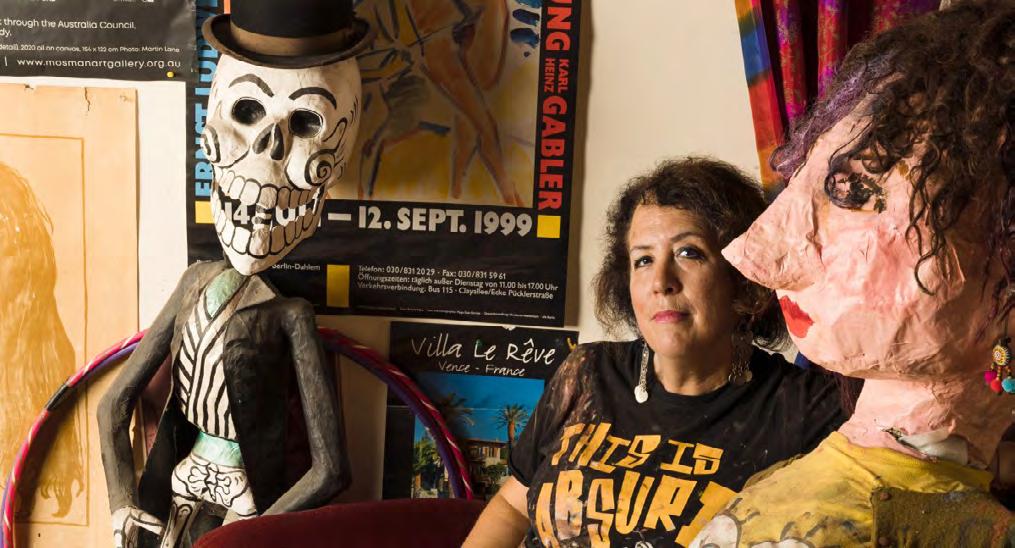
WS: Lots, lots. And I’m sure you... But there’s lots. And that’s a little one. There’s also big ones like I did go around schools where they were delivering books that they’d collected, but that was just a little personal one. I don’t know if he even wants me to say that story, but it’s a little personal one of human to human seeing... You are seeing, look what’s happened to this poor person who did nothing wrong. Let’s try and help. I saw refugees in Dili returning from having run off, being chased by the militia, and obviously in fear of their lives into the hills coming back. And I’ve got drawings of, and I saw Australian soldiers helping elderly people in and trying to reassure them everything was all right. It was just beautiful.
It was something that I realized how important peacekeeping is. I had no idea. I mean, I’ve got nothing to do. I never had anything to do with anything military, so I didn’t know. But I do know that it made a huge difference. There are people alive now who wouldn’t be.
GTR: Yeah, that’s always-
WS: That’s the point. And even the children.
GTR: That’s always a great thing. That’s always an amazing thing. And what an experience. I’ll tell you what, it’s good to hear those stories of, I think even the North Vietnamese and Viet Cong respected the Australian soldiers a lot more than they respected the... Well, they didn’t respect the Americans much at all actually during the war, but they respected the Australians. So that’s interesting. And I guess as an artist’s role, an artist’s role is, Wendy, to give honest reflection or at least as perceived by the artist, good and bad. That’s the duty, I guess, in life too. But it’s interesting that you see all these good things and it must do something for your spirit.
WS: Well, it did. People often say to me, and a question I often get asked is, did it change the way you work or
did it change you? It didn’t. Because my job was to make work. I’ll tell you, first of all, before I went, I was thinking... Before I went, I imagined I was going to do some huge painting, huge major painting like Picasso’s Guernica, one huge whacking painting, which summed up the whole shebang. And then I realized, “I don’t know enough about it. I can’t do that. I can’t.”
So what I did was I just literally drew from morning to night. I really did draw. There’s 500 drawings. I’m drawing all the time. So even while I’m having breakfast or doing anything, I’m drawing. And I’m just drawing my experience. But I also did draw, as we were just saying, some of these really moving things. But the thing is that when people say, “Did this change you? What did this...” What it highlighted for me? And I think that anyone... Obviously with military experience, but also any kind of crisis experience, which would be bushfires or anything where there’s disaster, anything really extreme brings out the best and the worst. And it made me more conscious of that.
I know of stories during all these terrible massacres and destruction of buildings and shocking and unspeakable atrocities that happened to the East Timorese, stories of unbelievable cruelty of what happened to them. You can’t imagine any human could do that to another human. And then you also see... There’s also stories of incredible bravery and heroism and kindness. It’s both. We know this, we know this, but it really highlights that human beings can be like that. And that is really, in any extreme situation, you see both of those things.
GTR: Yeah. That’s wonderfully said, Wendy. And it’s a macro view of life in general. And of course, as you say, with warfare and destruction, and floods and fire, yes.
WS: All of that. People who risk their life with someone who they don’t know or, I know there’s not many people like
that, but the few people who go and say, “Okay. Well, this terrible natural disaster is happening. I’m going to rob them.” I mean, there’s not many, but that does happen. So it’s kind of both.
GTR: Yeah, no, it’s the heaven and hell syndrome, which exists. And I suppose it exists in individuals themselves too, Wendy. But look, I really feel that we’ve got a lot more to talk about, but I think perhaps we’ll do this in a series. And when you get back from Paris, you can tell us all about the exhibition because we’d love to hear about it because you’ve really got so much going on.
WS: Thank you. Thank you. I mean, it was a few years ago. I know now. But I also can tell you about how... This was a few years ago. I went with a group of artists around the Western Front, World War 1, Northern France and Belgium. And as we were just talking about, for example, that school with, “Thank you Australia, or never forget Australia,” it’s really interesting what’s left. And also how you memorialize something, which of course, the Australian War Memorial, how do you tell the story of what happened?
GTR: Yeah, well said. And I think we can discuss that. And I guess we are lucky to have you because you memorialize life itself and your observations as beautifully illustrated during your time in East Timor. And you’ve got so much more going on. Of course, the Art Gallery in New South Wales, Spellbound, which was great. And of course the exhibition coming up in the UK with Anita Taylor, I believe. But, Wendy Sharpe, I’ll tell you what, when we get back or when you get back... I’m not going. When you get back, let us know all about what happened and we can line up another chat for the radio show.
WS: Great. Okay, Greg. Lovely to talk to you.
GTR: It’s been fantastic. Wendy Sharpe, thank you so much for being on.
WS: Thank you.
AN EXHIBITION ABOUT THE POWER OF MOVING IMAGES TO RECORD AND SHAPE AUSTRALIA’S HISTORY

15 February – 1 June
MUSEUM AND ART GALLERY OF THE NORTHERN TERRITORY
19 Conacher Street, Darwin, Northern Territory 10am – 4pm Daily
AN AUSTRALIAN WAR MEMORIAL TOURING EXHIBITION

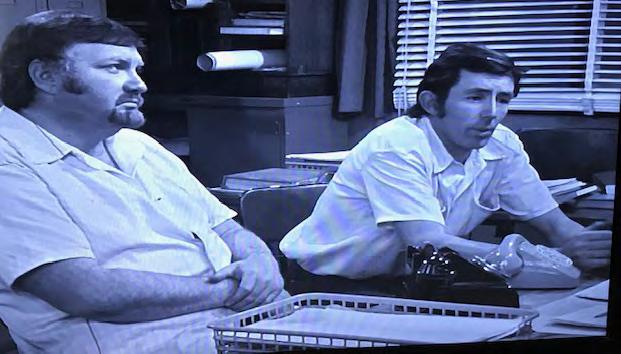

In various cultures, playing the violin is associated with intelligence, creativity and commitment. As an instrument it’s said to symbolise grace and beauty. Gerald’s mother, who did appreciate the finer things in life, may have encouraged him to learn the violin. It’s likely she envisaged her son as a member of a symphony orchestra or a tuxedo-clad violinist in a string quartet. But at the pointy end of the 1950s, Gerald had discovered Rock & Roll and, in particular, Elvis Presley. He swapped the violin for a guitar although years later there was a reacquaintance.
“This was when Gerald was living in Melbourne,” remembered younger brother Patrick. “He met this musician bloke who invited him back to his house. He had a room full of musical instruments and pointed to the violin and said, “This is one of the hardest instruments to play.” Gerald picked up the violin and played Danny Boy which was also one of Elvis’ favourites.
Elvis may not have invented Rock & Roll but he was certainly its premier practitioner and threw a giant shadow over much that followed. As the epitome of coolness and rebellion, Elvis changed the way young males dressed, styled their hair and generally behaved – all roads led to Elvis. “Elvis made it OK to be different – more than OK. He made it GOOD to be different.” declared Melbourne journalist and author David N.Pepperell. To Gerald, Elvis represented the best of everything.
A self-taught guitarist, Gerald began to dig deep into the Presley catalogue. Songs from Johnny Cash, Roy Orbison and Roger Miller were also filling his repertoire. Patrick holds a fond memory of witnessing Gerald, on electric guitar and vocals, ripping through a set of Rock & Roll with some like-minded teenagers at the family farm. A few years later and with a head full of songs, Gerald was in Melbourne ready to unleash his inner troubadour. Either he found The Outpost Inn or The Outpost Inn found him.
Located on Collins St at the “Paris End” of Melbourne’s CBD, The Outpost Inn was founded in 1966 by two Catholic priests and set up as a basement folk venue. The Outpost attracted a multifarious crowd- folkniks, jazzers, poets, university students and other assorted bohemians all descended the stairs to play, pontificate or just enjoy the live music. There at The Outpost Inn, Gerald found another part of his artistic identity.
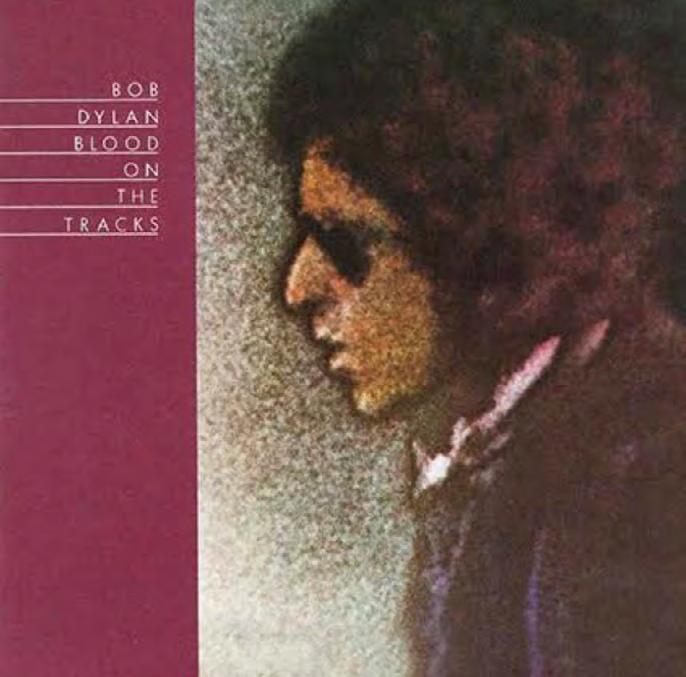
It was the summer of 1974/75. My brother and I were spending time down at Kwinana, south of Perth. Joe and Vince were friends and their parents had a holiday shack there. It was an outer suburban beach and industrial area, north of Mandurah.
Craig and I would take a few of our favourite albums down there, to spin on those summer nights. Often, open fire barbecues behind the shack after tennis, reading a favourite book in the sunroom or hours at the beach.
There was Joe and Vince and their younger sister, Bernadette and her friends. And there was John Stokes and Cliff Reid, more friends.
The albums I recall taking down to Kwinana from that time were from Ry Cooder, Buddy Holly, Bob Dylan, Doobies etc.
We’d been turned on to the music of Ry and Bob and Buddy, mainly through our devotee following of local Perth Uni band, Flying Doctor. Sure, we knew of these artists but Flying Doctor’s covering of their music made it cool.
Around that time, Bob Dylan had released his fifteenth album, Blood on the Tracks. It was to become ingrained in my appreciation of the artist and music history itself.
Craig and I returned to Melbourne in August of ‘75 and Blood was still relatively new and still getting coverage. We found residence in Ormond, on North Road, living out the back with our half-Uncle and Aunty. I bought a copy of the album from Lenny’s Records near the Ormond Station.
The album signalled an understanding, for me, of the importance of Dylan. For that, I remain thankful to Flying Doctor, an amazing group itself, for reawakening me to Dylan and Buddy and Ry.
But, after all these years, it is still Blood on the Tracks that reminds me of this time and then, the move back to Melbourne at 18 years of age.
JACK P KELLERMAN
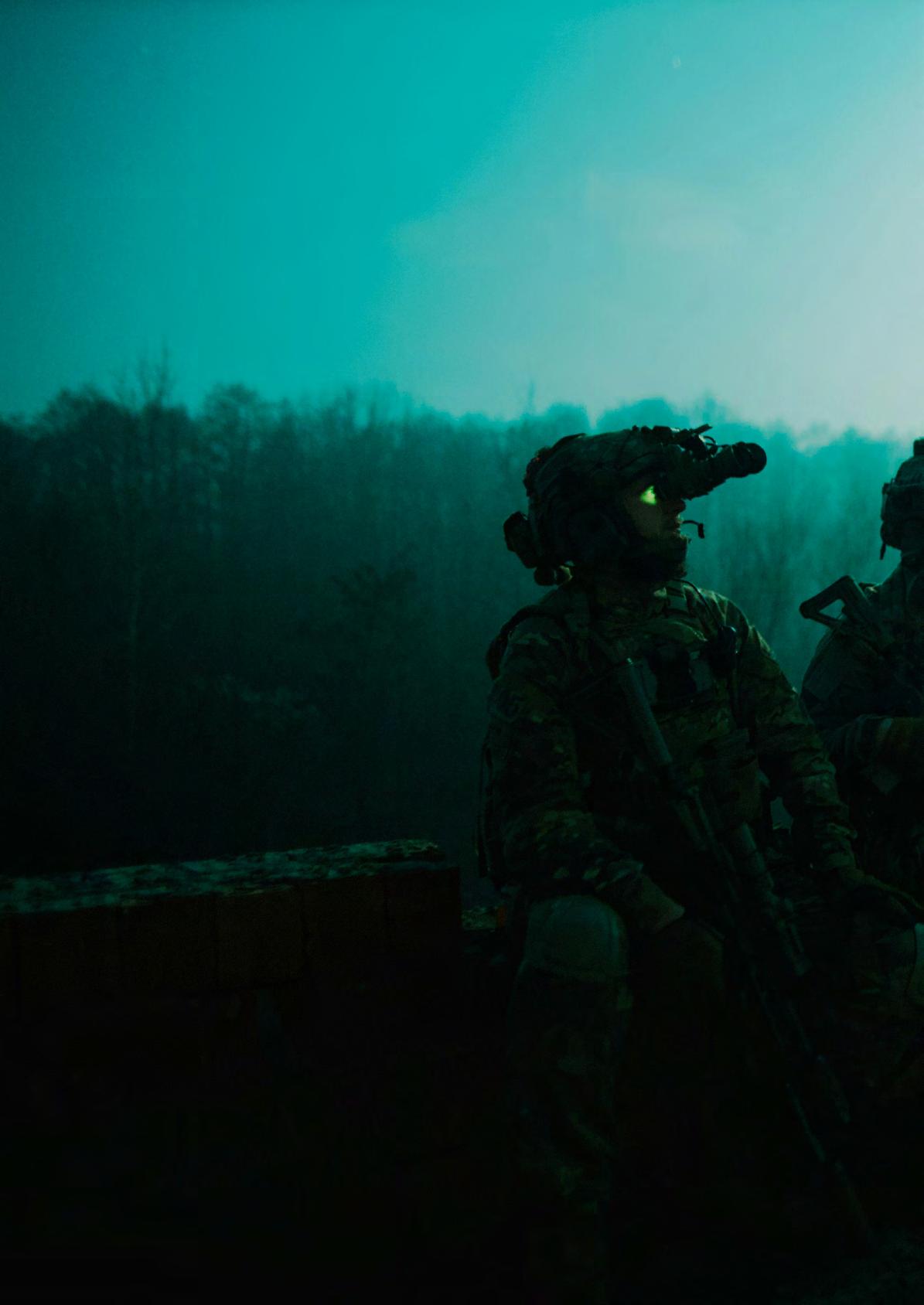
A soldier now a poet his rifle now a pen pours thoughts on paper shared by fellowmen. thoughts of D Day Landings Comrades side by side, settling the Issue Supreme Sacrifice.
A soldier now a poet rifle a pen word he composes ease war time pain pain Inflicted three years on the line witnessing the carnage forever on, his mind.
A soldier now a poet rifle a pen returned to his country thankful to be home again, never forgetting the taste of battlefield fear, lays down his pen shed a soldier’s Tear.
RON GILLIS
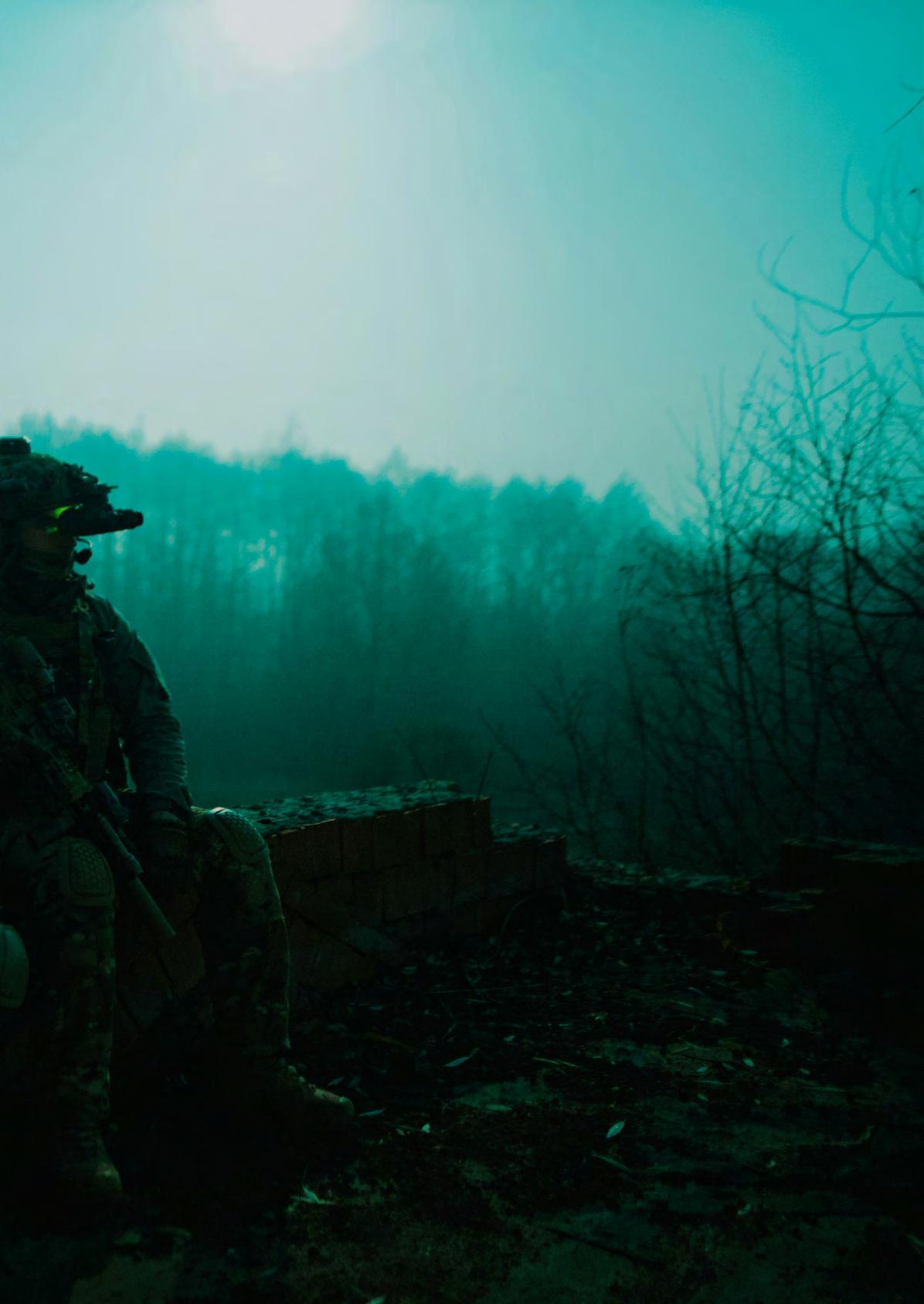
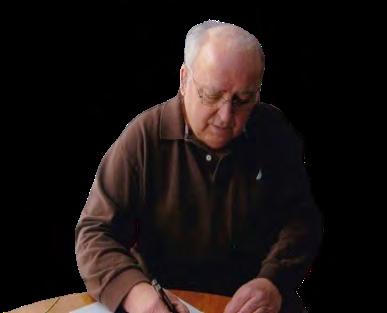
In memory of Don Garnier from North Sydney NS, who served overseas during the Second World War with the Cape Breton Highlanders and returned home a soldier poet.
Ron Gillis North Sydney, NS Canada

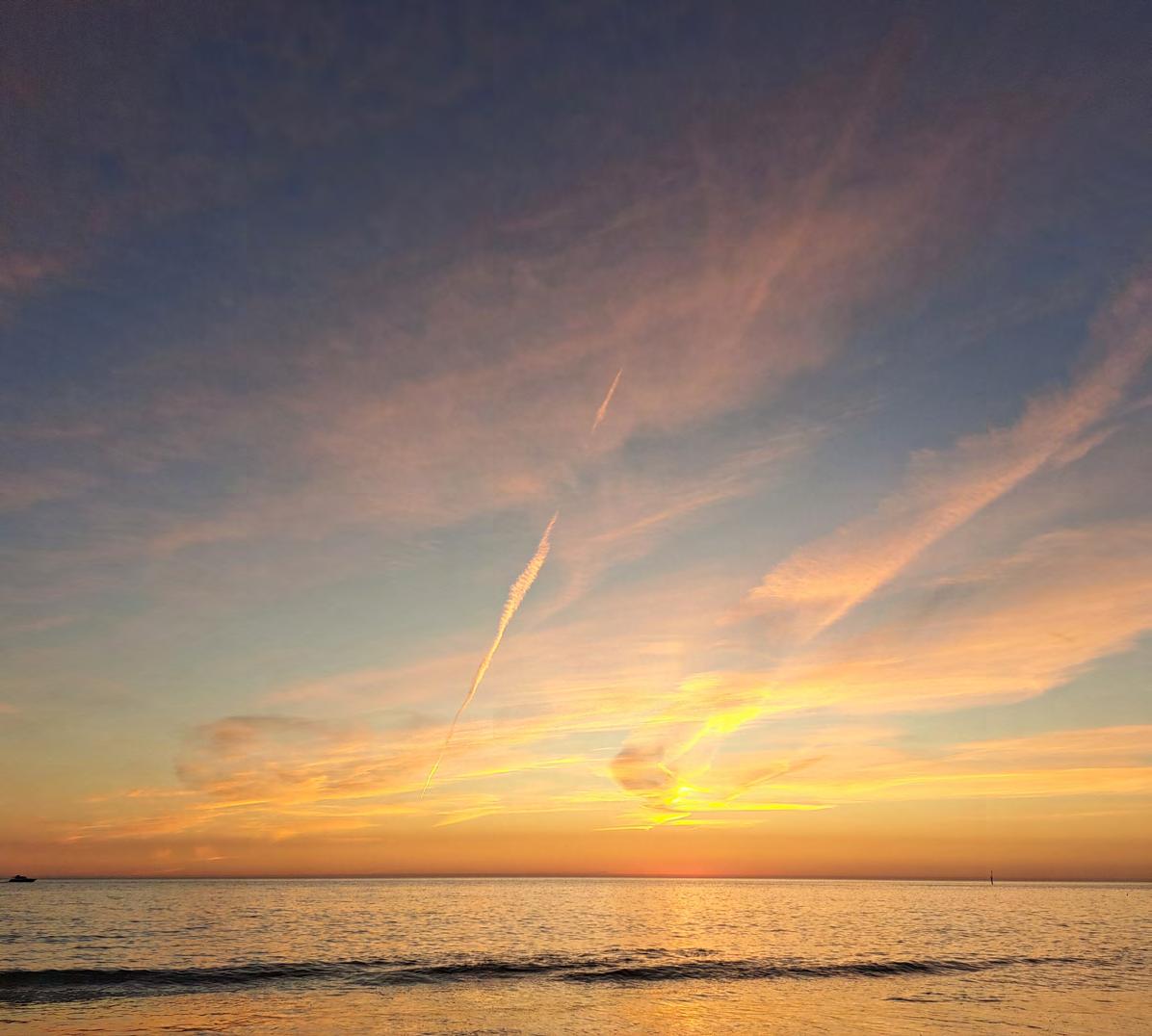
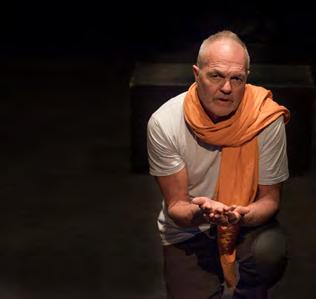
Stephen House is an Australian playwright, poet and actor. He’s had 20 plays produced, many commissioned, and many published by Australian Plays Transform. He has won two Awgie Awards from The Australian Writer’s Guild, an Adelaide Fringe Award, The Rhonda Jancovich Poetry Award for Social Justice, The Goolwa Poetry Cup, Feast Short Story Prize and more. He’s been shortlisted for Lane Cove Literary Award, Overland’s Fair Australia Fiction Prize, The Patrick White Playwright and Queensland Premier Drama Awards, The Tom Collins Poetry Prize, Greenroom Best Actor Award and more. He’s received Australia Council literature residencies to Ireland and Canada, and an India Asialink. He has worked with many theatre companies. His chapbooks “real and unreal” poetry and “The Ajoona Guest House” monologue are published by ICOE Press Australia. He has performed his acclaimed monologues widely. His poems are published often. Stephen had a play run in Spain for 4 years.
it’s a part of my life being with the sea wherever i am residing and it features in my everyday plan calming joy adventure and peace
i don’t think about much with the sea i realised that decades ago walks and swims ongoing daily in time alone thoughts drift away
feeling the physical comes with the sea wind direction touching each day water temperature my body sense sun on skin soft warming glow
i always see beauty with the sea shades of colours on changing water how the sky is cloudy or clear wide blue if seals or dolphins are swimming nearby
my time is not complicated with the sea moments of living in the present simplicity connecting me to nature and that connection gives sense of self
when i swim as i often do with the sea i feel at one with our planet earth within the arms of the universe gently healing bringing harmony
i can’t imagine a life not being with the sea i’m unsure what i would do for the sea is more than a place to go it provides a reason and often an answer
STEPHEN HOUSE
An old painting, covered in nicotine, mould, and dust falls to the floor as the rotten string snaps.
In its broken frame, the picture ends up in a junk shop, and ultimately a rubbish bin. It doesn’t matter that the artist had once laboured for 100 hours to create it. And had even enjoyed a quiet celebration upon selling it. The truth is it had been there to stop a wall looking empty. After several years, nobody looked at it and in the end, nobody wanted it.
God bless the forgotten artists.
JEREMY ROBERTS
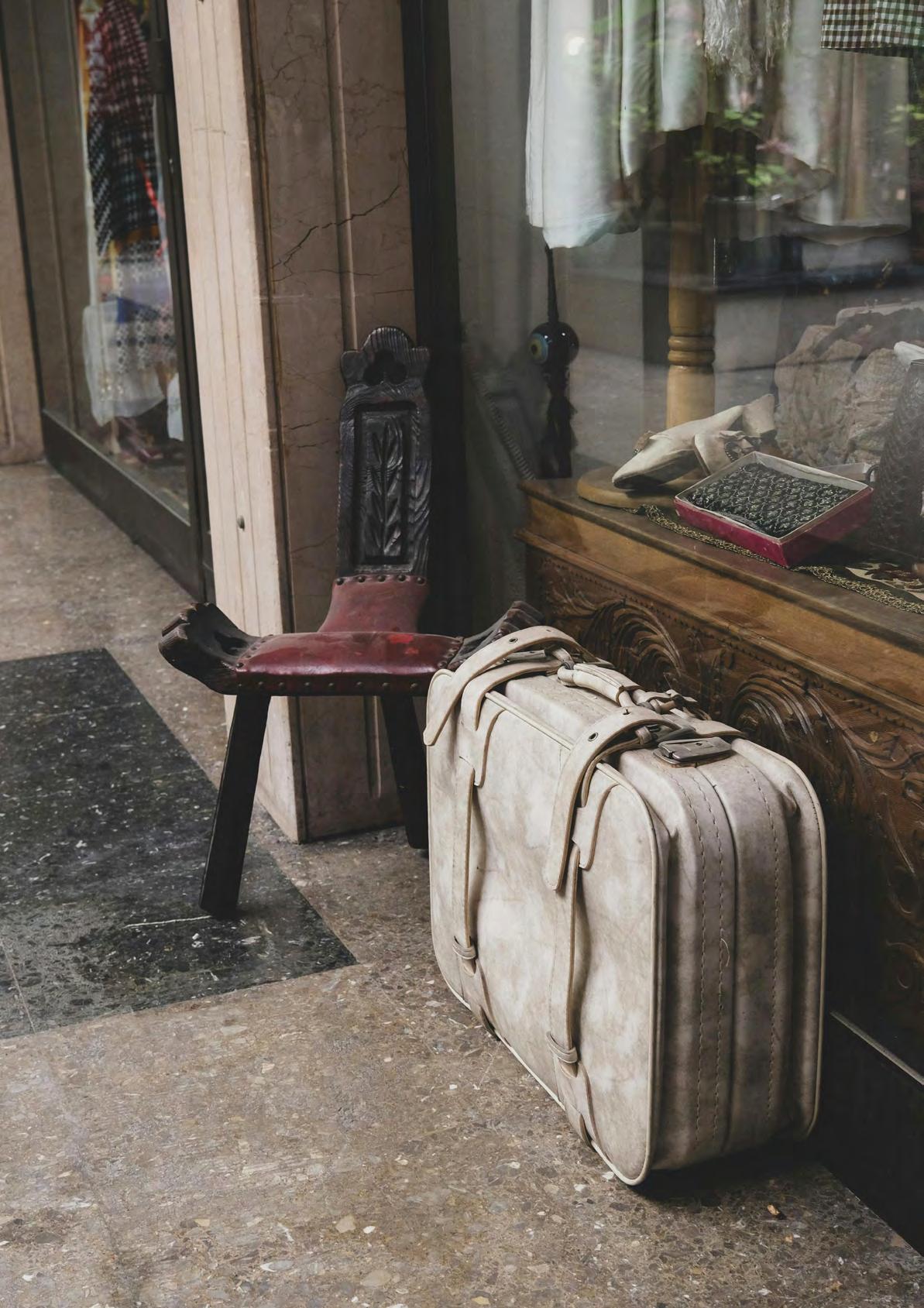
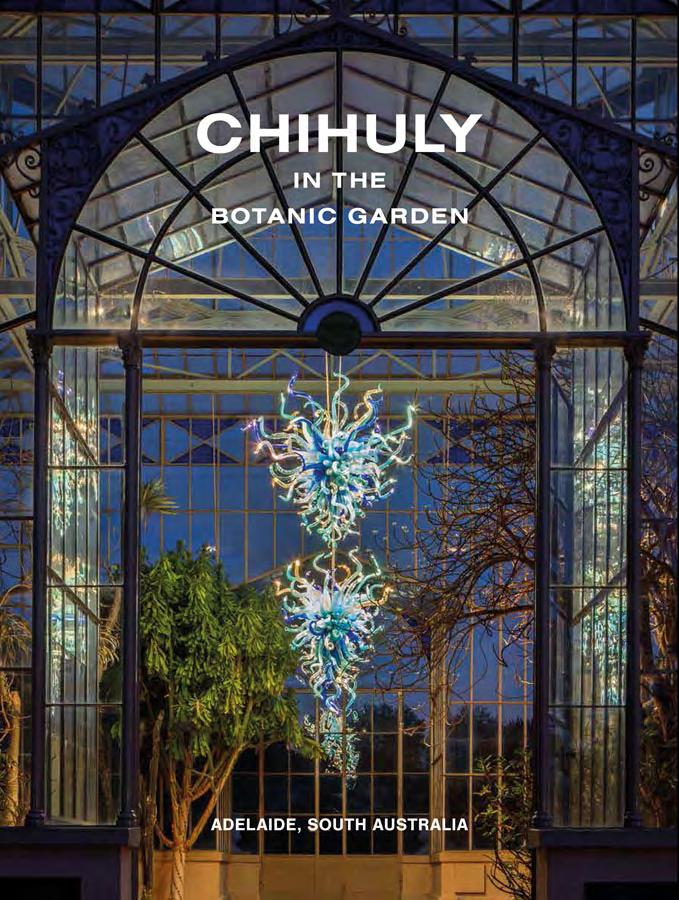
The Australian screen industry thrives on precision, teamwork, and calm under pressure—qualities deeply embedded in those who have served. Recognising this natural alignment, the Veterans Film Foundation, a registered charity, created the Screen Warrior Program: a national initiative helping veterans and their families transition into sustainable careers in film and television.
To date, the program has trained over 40 veterans, placing them in technical and logistical roles behind the camera—areas that match the skills homed in the Australian Defence Force. These include transport managers, location managers, unit managers, assistant directors, and production accountants. They are not creative roles, but essential ones— requiring leadership, discipline, and operational excellence.
What sets the Screen Warrior Program apart is its partnership with the Australian Film, Television and Radio School (AFTRS), Australia’s national screen training institution. The program has also been made possible through the generous support of Screen Australia, whose grant funding has helped deliver targeted training and employment pathways.
The Veterans Film Foundation exists to create employment, not just opportunity. It is committed to ensuring veterans and their families are not overlooked in Australia’s cultural economy. Screen Warrior graduates are now working across major productions—bringing with them a wealth of experience and a mindset forged through service.
As the film industry continues to grow, so too does the demand for skilled, reliable crew. The Veterans Film Foundation is proud to stand at the intersection of service and storytelling—opening doors, building futures, and ensuring no one is left behind.
Read more about those who have made the leap:
Alee’s Story
youtube.com/watch?v=ewmJHVEHC7k
Michael’s Story youtube.com/watch?v=_zdOQ0_20cM&t=44s
Interested in joining the Screen Warrior Program?
If you’re a veteran, currently serving ADF member, or a family member, we’d love to hear from you.
Visit www.veteransfilmfoundation.org.au or email coordinator@veteransfilmfoundation.org.au to learn more.

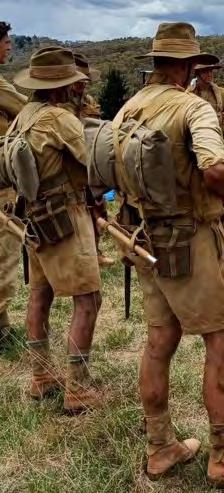
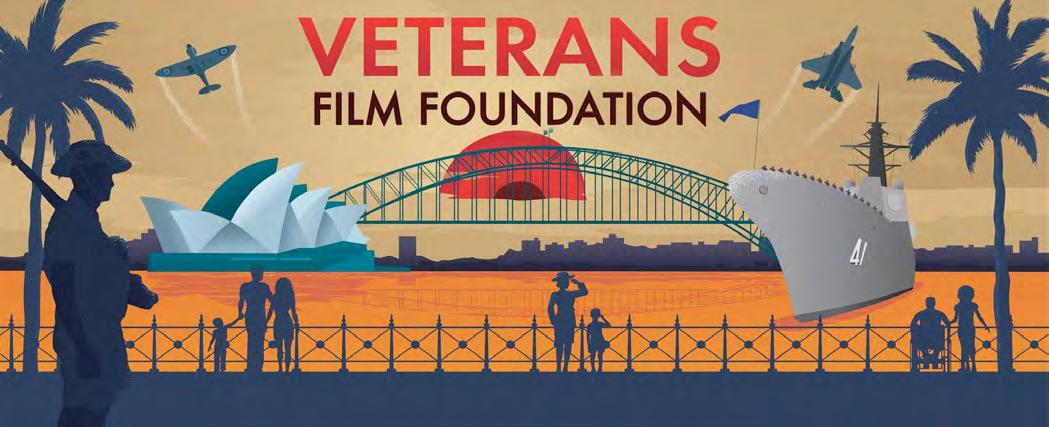
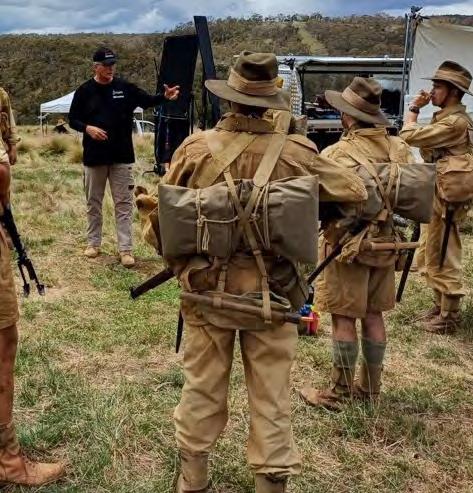
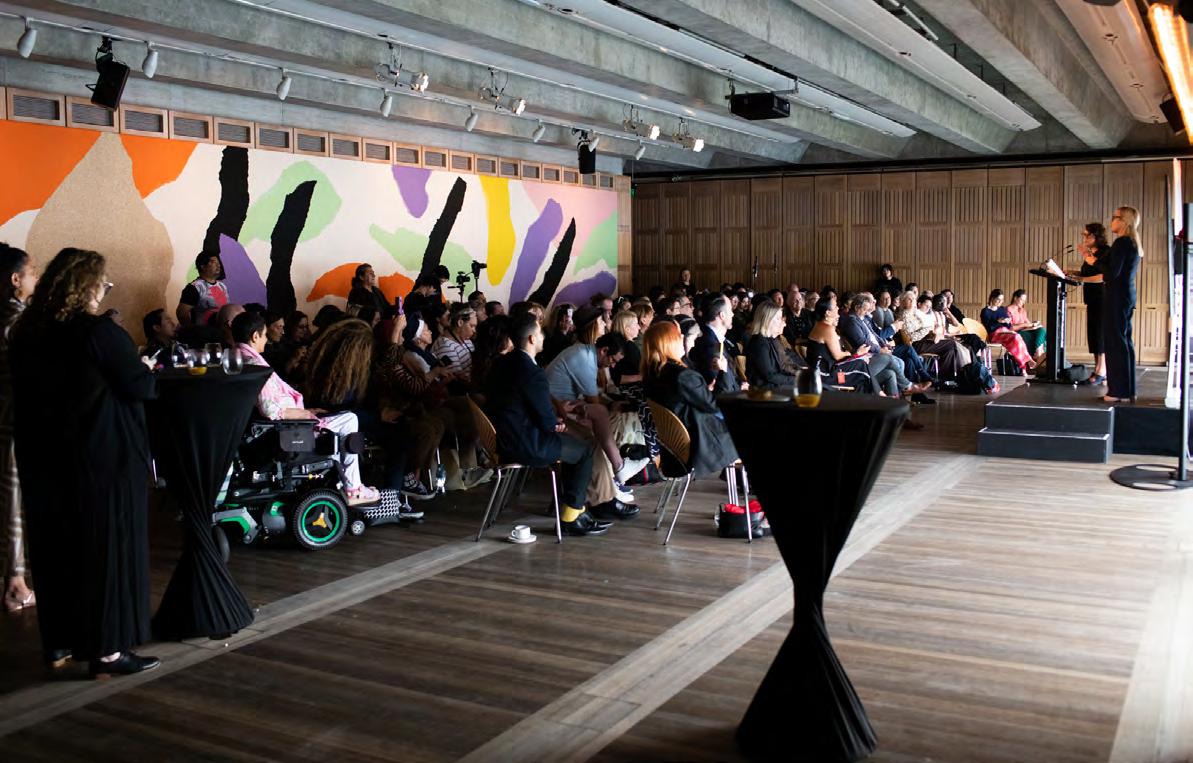
Launched on 2 April 2025 at the Sydney Opera House, the The Anti-Racism & The Arts project is a national project aiming to drive systems change in the arts and creative industries through education, advocacy, and creativity.
Key components include the TAFE NSW-led masterclass program, an interactive racial literacy quiz, a digital resource hub, and a striking visual campaign titled How to be Anti-Racist in the Arts. This information is all contained on the project website: antiracism.art
At the heart of the campaign is the slogan “How to be AntiRacist in the Arts”. The response to this is presented as five key actions that individuals and organisations can take to create lasting change.
These calls-to-action are drawn from The Creative Equity Toolkit:creativeequitytoolkit.org
1. Educate Yourself – Learn how racism operates and honour the perspectives of those who have experienced it.
2. Challenge Systems – Advocate for policies and practices that remove systemic barriers and promote equity.
3. Call It Out – Speak up against racism and discrimination.
4. Check Yourself – Build self-awareness around power, privilege, and impact.
5. Reflect & Recharge – Make anti-racism sustainable through self-care and community care.
Anti-Racism & The Arts was developed in collaboration with TAFE NSW and funded by the NSW Government through the Strengthening Social Cohesion Community Grants program. The project is further supported by Creative Australia, Create NSW, Arts and Cultural Exchange, the City of Sydney, and the Sydney Opera House.
The Anti-Racism & The Arts project encompasses multiple elements aimed at promoting anti-racism, fostering dialogue, and empowering racially marginalised communities.
The program includes:
• A bold visual campaign “How to be Anti-Racist in the Arts” featuring posters and postcards by artist Judy Kuo, vailable for organisations to display and download from the website (antiracism.art).
• An interactive Racial Literacy Quiz, providing a reflective tool for individuals and organisations.
• The Anti-Racism & the Arts Masterclass Program, delivered in partnership with TAFE NSW, training creatives to lead discussions on racial equity.
• A network of trained campaign presenters, available to deliver campaign presentations to organisations across the sector.
• A dedicated online Anti-Racism in the Arts Resource Hub, providing tools and materials to support anti-racism work in the sector.
• A dynamic social media campaign, engaging audiences in discussions about race and equity in the arts.
• Tracking Racism in the Arts: Incident Survey, inviting artists and creative industry workers to report experiences of racial discrimination in the sector.
“The arts have a powerful role in shaping who we are as a nation. Whether it’s the stories we read, the TV we watch, or the music and art we share, creative work influences how we see each other — and ourselves. That’s why we launched How to Be Anti-Racist in the Arts: a national campaign calling for racial equity, and representation in the creative sectors. The arts have always been a way for people to come together, to connect, and to imagine something better. We believe that everyone deserves to see themselves reflected in the nation’s culture.”
– Lena Nahlous, CEO, Diversity Arts Australia:

Push for policies and practices that dismantle systemic barriers and promote equity in the arts. antiracism.art

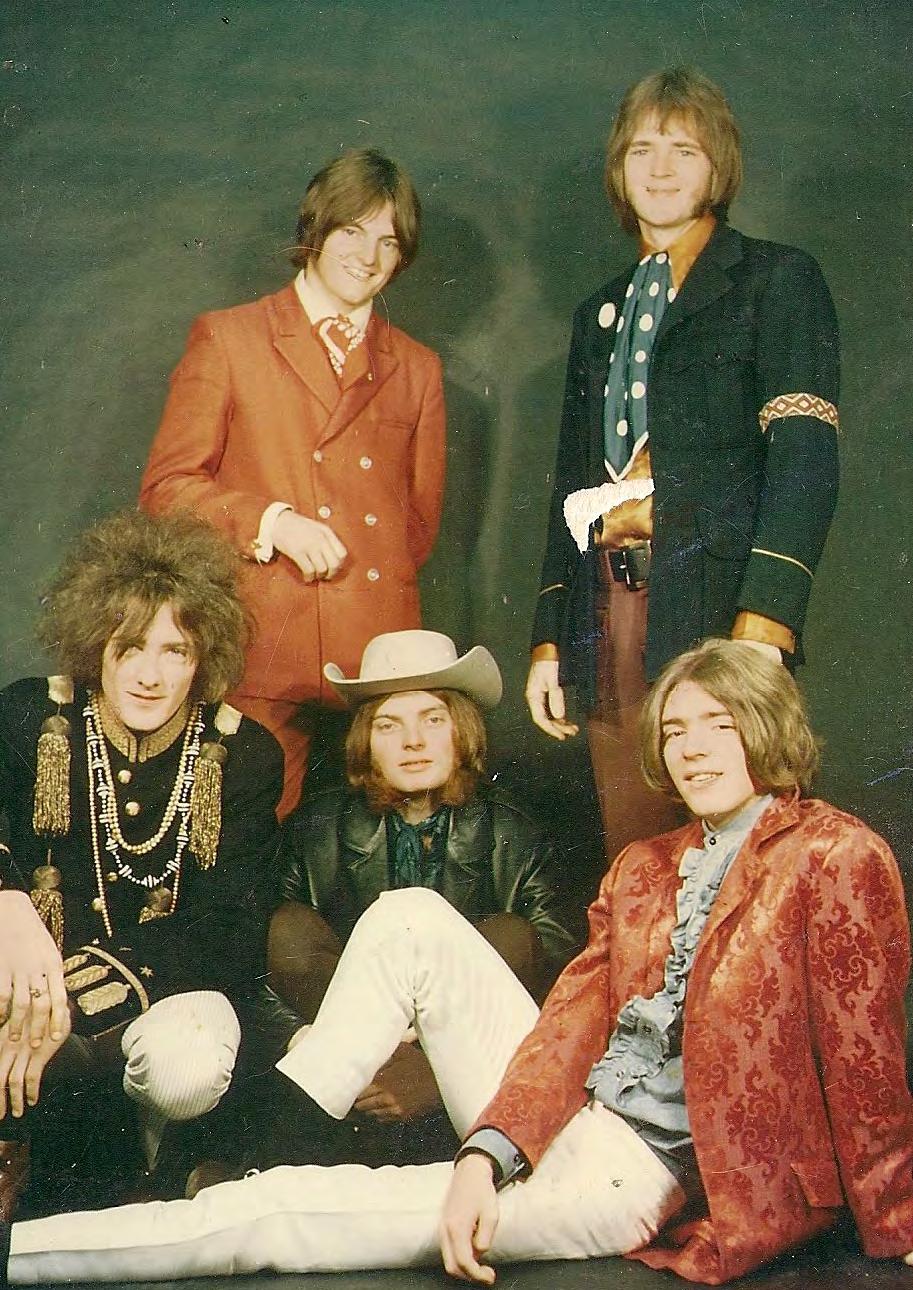
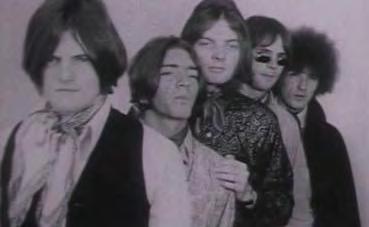
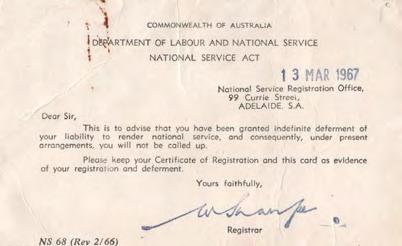
I was absolutely delighted to be asked by Greg Ross to write an article for The Last Post magazine as I have a soft spot for anyone who has answered the call to arms by our Government over the last century.
As a baby boomer aged 78 by the time this is published, I remember very clearly the time of the Vietnam War and the unsettling era of Conscription. This for most was the lottery that no one really wanted to win. I have always identified myself as a pacifist and like the majority of 18 – 20 year olds at the time the thought of being trained as a licenced killer was not a pleasant thought. Having said that, most trusted the Government and they assumed the Government of the day knew what they were doing, they knew to have a safe Australia we had to do our part and partner up with our American allies and stand up to the real threat that the communists were posing in far off Vietnam.
I remember like most young adult males the heavy weight of the stress when waiting to hear if your birthdate was called out and you were in the Army as a consequence of that very simple process. My brother John had to endure the agony first being a little bit older than me, I saw the stress in his face and his nervous demeaner whilst waiting for the result. Fortunately his number did not come up and you could see the stress fall away and his smile and relaxed nature returned. Then it was my turn and yes, it was nerve racking and so much flashed before me, memories of watching old War movies at the Cinema or reading War Comics or Books as a youngster that I once saw simply as entertainment had now taken on a whole new perspective, all of a sudden life got very serious and naturally I got deeply worried. Like most people I was following the news reports of what was happening over in Vietnam and it was all very ugly to watch let alone the thought of being a part of.
Anyway, I remember signing my registration for national service on 23rd FEB 1967 and returning it to the Dept of Labour and National Service and then the drawn out waiting game started. All of a sudden the common talking point amongst all my male friends of the same age centred on whether they were in the Army or not. Some who were waiting, were a nervous wreck and of course as smart arsed lads everyone was discussing ingenious ways to get out of it if they were called up, Some of the favourites were being a Conscientious objector, a Bed Wetter, Flat Feet, just run away to the country, claim to be a homosexual. I am sure no one was actually serious but it certainly helped calm the nerves. Fortunately, I was not called to arms as on 13th MAR 1967 I received in the mail a card from the National Service Registration Office advising that I had been granted indefinite deferment of my liability to render national service and consequently, under present arrangements I would not be called up.
To this day, 58 years later that same CARD is still stuck on my office wall as a constant reminder that I got lucky and did not have to participate in what was a terrible war, I was allowed to remain a pacifist. Like so many others, I know mates who did go over to Vietnam and some can talk about it but others came back with seriously changed outlooks
PETER TILBROOK
A former Member of The Masters Apprentices.
and they did not talk about their experience, it was for some as you can expect just too darn horrible to talk about.
Whilst all this was going on in Vietnam I was playing in a top national pop group called THE MASTERS APPRENTICES and we had all gone through the same experience of registering for national service, We were very aware what was going on, we watched the news every night and heard the TV reports of the carnage and the enormous loss of life to both US and Australian troops. Our small contribution consisted of playing for the military at several Victorian Military bases. I remember we did shows at Laverton Air Base and two at Point Cook. There was also an Army base but the name escapes me but we played there with Denise DING DONG Drysdale (Go Go Dancer extraordinaire) as a support act which I clearly remember was strongly appreciated by the men and women at the base.
There were other great opportunities for The Masters Apprentices to spend quality time with young US Soldiers on REC LEAVE from the war in Vietnam. When The Masters visited Sydney to do shows we were often accommodated in THE AMERICANNA HOTEL in Kings Cross. I used to sit in the common room and talk to the young soldiers on A&R Leave. Most explained to me that all they wanted to do was get pissed or get high and have as much sex as they could whilst on leave so they can forget what they had to go back to. They were well aware that they like so many of their friends they would either not return home at all or would return home to the US with serious injuries meaning a normal life for them may not be possible. They were all amazingly friendly, just so glad to be in Sydney talking to people that were not shooting at them but they were ever mindful that they had to return to the HELL HOLE that was Vietnam.
Finally, over a 19 year period along with my band mate DAVVO (since deceased), and an RSL friend we have been able to organise a large annual benefit show called BACK TO THE DAT with all entertainers donating their talent and time and all proceeds being donated to the DAW PARK REPAT HOSPITAL Vietnam Veterans Hospice. I participated in 18 of the 19 shows and collectively we raise a serious amount of money that went to the veterans who in most cases were facing the end of their lives many having suffered terrible injuries. It was an absolute honour and a privilege for me to entertain any brave soul that stood up for their country and paid a heavy price for doing so. I will NEVER forget that it could have been me, I could have died, I could have come back a tortured soul like so many did or with life changing injuries that would have changed my life forever.
I salute each and every one of you that answered the call to arms and served bravely for the freedoms that we all enjoy today. You are all heroes in my mind and I wish you all peace and comfort for your remaining time on earth.
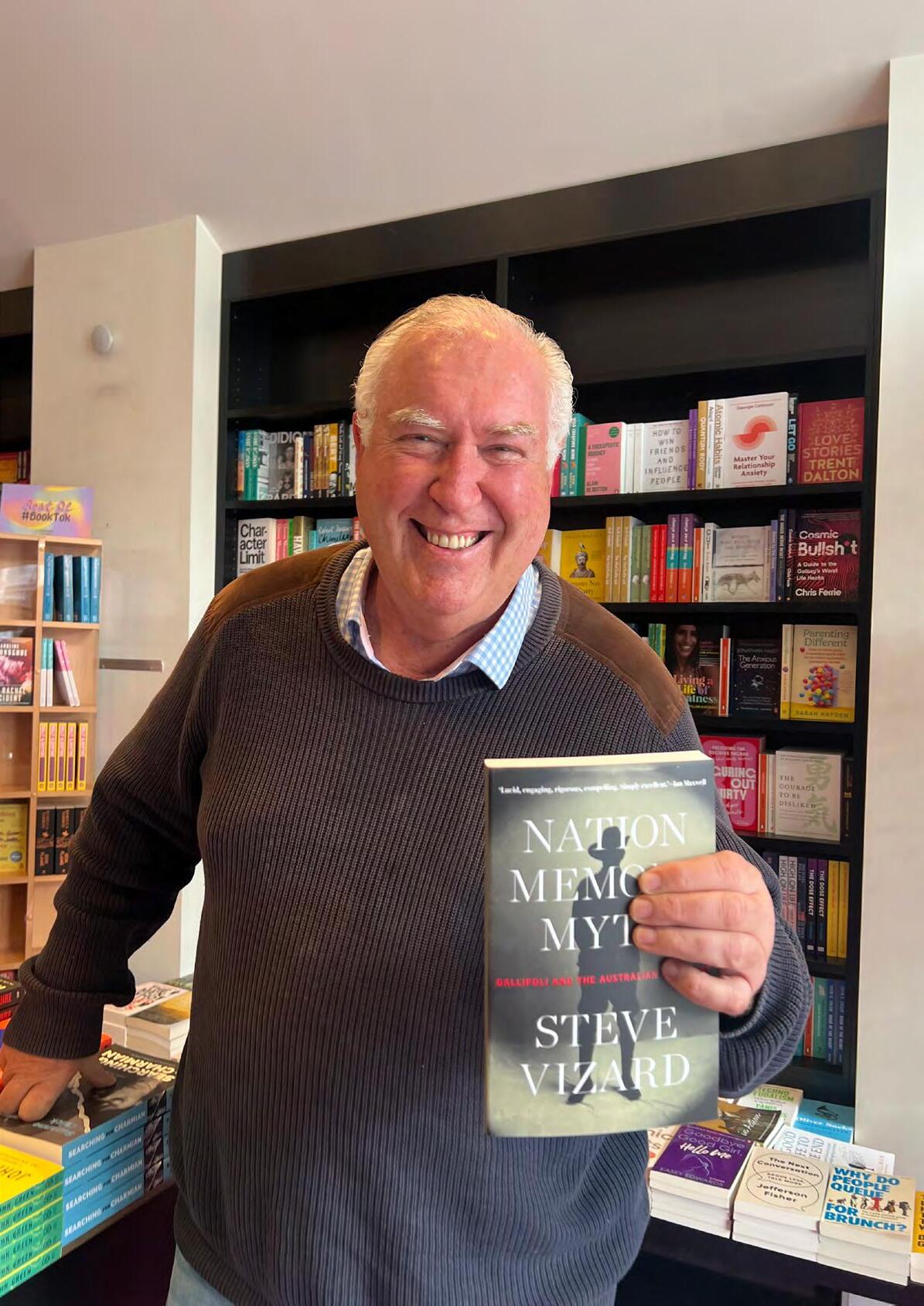
Steve Vizard is a prize-winning writer, broadcaster, lawyer, and research professor at Monash University and the JM Coetzee Centre for Creative Practice, University of Adelaide.
He has written and edited books on topics ranging from Australia’s Constitutional Convention to Australia’s population challenge, to children’s books. Through his production company Artist Services, which he co-founded with Andrew Knight, helped create and produced groundbreaking television shows including Fast Forward, Full Frontal, Big Girls Blouse, The Micallef P(r) ogram(me) and SeaChange, and hosted his own Gold Logie-awarded TV show Tonight Live. He has also written for theater, including the operas Banquet of Secrets and The Space Between, and the musical Vigil. He has contributed to public debate as President of Screen Producers Association, National Gallery of Victoria, Major Events Corporation and The Vizard Foundation. He and his wife Sarah, his five children and grandchildren live in Melbourne. This is my chat with Steve.
Greg T Ross: Welcome to The Last Post, Steve. How are you?
Steve Vizard: Morning, Greg. What a pleasure it is to be talking to you.
GTR: Thank you so much for your words, Steve, and it means a lot to be speaking to you. And of course on the back of this amazing book Nation, Memory, Myth: Gallipoli and the Australian Imaginary by Steve Vizard through Melbourne University Press. And we’re here to discuss the myth and everything else that goes on about. I guess April 25th it was, Steve, dawn when Australian troops waded ashore there on the Gallipoli Peninsula with 8,700 lives lost by the end of the campaign. What drove you to writing this amazing book?
SV: Well, firstly, I’m Australian, and you’d have to be blind, deaf or dumb not to know the impact that Anzac has on, and the hold that Anzac has on our nation. And I remember when I was a little kid, three separate things that I’ve been reflecting on this, Greg, but three separate stories I just might share with you quickly. The first is when I was, I live in Melbourne, and when I was a nine-year-old, we used to go to the dentist in town. We lived way out of Melbourne. But mom would get dressed up, this is how old I am, mum would get dressed up and put on a good hat and I had to wear good shorts and my good socks and everything, and she’d take me to the dentist in town. And the biggest building in Melbourne in those days was the T&G Building.
It’s still there. It’s a little building these days, but it was the biggest one in town. And we’d go to a dentist. There were a lot of dentists up on the top floors there. I’d see the dentist, and we’d come back down. And we’d always, as a treat, she’d take us to, there was a milkshake shop and a
chocolate shop called Ernest Hillier’s. And we’d walk down from the dentist to get a chocolate milkshake, which is always ironic. You just had your teeth done and now you’re going to get them rotting. But I remember we were coming down on this, I’ve been to the dentist and as I say, was nine years old. It’s a beautiful day. Turned out it was Remembrance Day. I didn’t know that. It was the 11th hour of the 11th day of the 11th month, and we came out. And the whole of busy Collins Street on that day, this is how long ago it was, all the cars pulled over.
And people stopped at Collins Street at the lights, pedestrians kind of stopped walking. And I remember even a tram stopped going, although in these days they stopped all the time for a hundred other reasons. But literally, and mum explained to me, I remember distinctly, explained to me that that was Remembrance Day and what that meant. And I remember that registering so powerfully that the city had come to a halt. I was at a school at, I went to a boys school and we had a teacher, fill-in teacher, his name was Frank Potts. And Mr. Potts was so old. And he was a wizened white old maths teacher, but he never taught us maths. He’d been in the First World War. We were only 12 and we were forward to Mr. Potts coming and talking to us because we never learned anything about algebra or anything.
He talked to us about being in the First World War. And when I think about it now, he was recounting, only two meters away from me, his experiences as an eighteen-year-old. So he was only six years older than us twelveyear-olds when he’d enlisted. And the boys who were in doing in those days HSC, high school certificate, who we’d see playing on the oval, the big boys, they were the same age as Mr. Potts was when he’d enlisted. And this kind of resonated with me. Mr. Potts would tell us how he was an Adelaide man. He’d just got into at Adelaide Uni and then he’d enlisted and off he’d gone. And he would tell us the boat trip he’d made and of arriving in England and training on Salisbury Plain as he did with all the other troops, and the king coming to visit and inspect the troops.
And he was a sapper. So he was involved in all the trenches and doing all that sort of work. And then he’d tell us about going to the front lines and his experiences there and seeing the dirt and losing mates and what it meant to be positive and how you steeled yourself. We as twelve-yearolds were mesmerized both by every aspect of the story. And Greg, he always told us one funny thing, and he told us, if you told us once, you told us 20 times so much though that I kind of took this as a life lessons from him. He said, “Boys, if you ever see mustard gas coming toward you,” as if we’re
going to see mustard gas, but he said, “if you mustard gas coming toward you and you can’t get to your masks urinate in a hanky and put that on your mouth because the chemicals in your urine will neutralize the gas.”
And I remember thinking, “Oh, God.” I wandered around for about 20 years after that with a full bladder and a hanky in, just on the off chance that I encounter mustard gas. And then we had another teacher. It just shows you how powerful things are when you’re a kid. We had another teacher, Mr. Dobson, George Dobson, his name was, and he’d come to our school as a musician. He’d been one of the great trumpet players in Australia. He played overseas in American bands and in British bands and come back to Australia. He was so good. He had his own George Dobson’s trumpet serenade after the war. And it was on the ABC and it was a very famous trumpet musical show. Anyhow, he sort of ran out the end of his life, and as a lot of music teachers do, he’d gone to our school to set up a band.
It was like that film, the show, the play, the music man. So we got all brass instruments. And I remember as a 12-year-old, my brother was a... He got the trombone, I got a trumpet, and Mr. Dobson set up a band. But not only would we play at fates and things, we played at all of the commemorative functions. So we’d play Remembrance Day, we’d play on Anzac Day, and we’d play on special days. And Mr. Dobson himself had served during the war. And so he would instill in us the importance of what it was and what we were actually commemorating, of sacrifice and of the virtues of what it was, and that these were real men, real people just like us. And so this became more than just some musical thing.
It became kind of important. This influenced us from a very early age. And I remember still beautiful trumpeter and he would play the last post on Remembrance Day on an Anzac Day, and we would hear... Our school was in the suburbs of Q, and we’d all go out on the oval, all us boys, and he would play the last post on a sort of a ridge overlooking the whole of Q. And I could still hear the echoes of that going all through the suburbs and the entire school, which was normally filled with clamoring kids, coming to dead silence. And I became kind of in a sort of instinctive way, fascinated with not only the history of Gallipoli particularly, but actually with something different with the story of Gallipoli and the power that it had to stop a nation to have a hold over a nation to kind of claim a nation psychologically and emotionally, and that’s different from its history.
And so I, years later, I was always interested in rituals and
commemoration and the power of celebration as well, and of memory, as distinct from just physical facts and history, how these events own us emotionally. And I’ve always thought that, I’ve been fascinated, for example in families, we all know this, a family’s more than just a list of birth dates and facts and income tax returns and mileage on an odometer or whatever it is. Our family’s held together emotionally by how we celebrate, how we come together for a birthday, and how we speak our own language that we all know, and things that would be kind of unintelligible to outsiders. We know them and we have forms of addressing each other and private jokes and the birthday hats and the kind of weird Christmas celebrations, and what we eat that other families don’t eat.
That’s how a family’s held together, not by rational things, but by emotional things. And so it is for a footy club too. We all barrack teams and have our weird songs that we celebrate and the groups that we go to the footy with and our little rituals about that. And so it is for a nation, and a nation, this is the work that I’ve been doing, a nation is more than just a system of legislation and an economic system and regulations. That’s kind of the technical, the rational side of it. But the heart of it, the beating heart of it, is a system for harnessing emotions, for holding us together emotionally. That’s what rituals do. That’s what commemorative practices do. That’s what symbols do. And so often, commentators, historians in particular, overlook that emotional side of things in favor of just the sheer facts, just numbers and dates and sort of occurrences.
But actually what holds us together is that emotional pull, and we all know that. We all feel that. Politicians often forget this. And so they think that, “If I explain a new bit of legislation or something,” that that’ll be enough or a new system or a new thing that I’m proposing. No. What binds us together is emotional pull. And so I became kind of fascinated with how historians, a number, not all, a number of historians were saying of Gallipoli in particular are, the event didn’t happen exactly as the way that it’s commemorated. They didn’t necessarily land at the wrong beach, and we weren’t superior fighters necessarily, and our command wasn’t as great as was said to be, and the British weren’t as bad, we didn’t have more volunteers than any other army.
And that particular campaign, the Gallipoli campaign, was a terrible failure and it happened on foreign soil and you put all of that together. So why would we celebrate that? I mean, you look at the facts and those are the facts, and you can argue with them, but let’s say they’re the facts rationally. So looking at those rational facts, it’s a failure of our campaign. So why on earth would a nation commemorate that? So let’s get rid of it, let’s reduce it, let’s eliminate it. What that line of thinking, which is rational thinking, fails

to take into account is that there’s an emotional side to these things. Nations are held together by emotions. And in the case of Gallipoli, those emotions are founded as, and this is what I’m speaking of, founding myths.
Gallipoli acts as Australia’s founding myths. And I don’t use the word myth in a pejorative sense, like an untruth. But in a classical sense, in the way that Greeks used it, and a lot of other people use it to mean a very sacred story. And sacred stories which hold communities together are founded often, particularly founding myths of nations, which all nations have, on a deep trauma. And the deep trauma of Gallipoli can’t be just explained away as a failed campaign. It’s a deep emotional, almost near extinction of the Australian nation emotionally. And we today often can’t remember how deep that trauma was. But if we
look back, I mean I know you know this intensely, Greg, and a lot of your listeners know this, but if we go back to the end of the First World War, it’s worth just restating things that a lot of your people know, but it’s worth restating it again.
Out of a nation of just 4 million people, just on mid-4 million people, 400,000 men enlisted. 400,000. 10% of the 4 million enlisted. Now, when you take out the women and the old and the young, the number of people who enlisted was massive. And of those, 60,000 people plus, between 62, 65, around 60,000 people plus were killed. Another 150,000 people plus were injured. So that’s 210 to 220,000 people out of 400,000 people either killed or injured, the greatest casualty rate of any allied army in the First World War. And that trauma excluded really emotional trauma. They didn’t
‘Lucid, engaging, rigorous, compelling. Simply excellent.’—Ian Maxwell
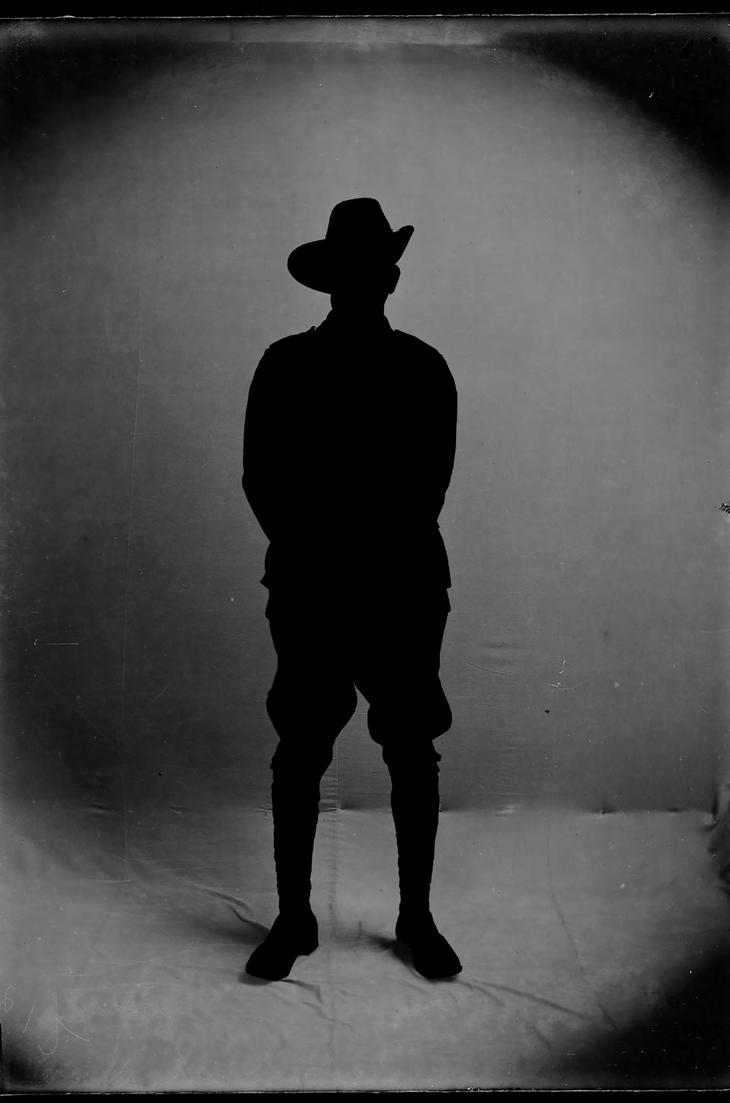
make us exceptional? And for us, we call that in our myth of Gallipoli the Anzac Spirit.
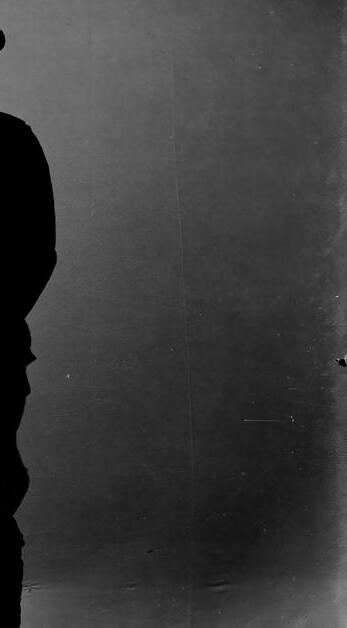
So in that are the characteristics that we constantly talk about, which our mateship, fighting and continuing, enduring hardship, our kind of larrikin sense of humor. All those shared cultural values and traditions and ideologies are embedded in that story. So the Anzac myth is more than just an historical recitation of some things that happened on some shores. It’s not that at all. It’s much more than that. It’s a sacred compressed narrative of Australian virtue. It’s kind of a moral template of who we are. So that in looking back and commemorating what they did, that story isn’t about the past. It’s a commemoration of the values that we cherish for the future. It’s something to look to as a template for how we should behave, where we should go and what we should be as a people, as we head into the future and face similar sorts of challenges.
Different though they might be, a bushfire, an international contagion, whatever. It’s a template for how we should morally behave as we face those sorts of challenges in the future. That is kind of where I landed on Gallipoli. And so when, let me just finish that, Greg, when an historian says, “Those facts are wrong. We should get rid of that. We should get rid of that,” why would people bother to get up at 4:00 AM to commemorate that? Let’s replace it with a new myth that I like, one about whatever. I am beguiled by that, because it suggests two things. One is that nations are run simply by a series of facts as opposed to emotion, as I’ve tried to say. Two, it’s a kind of arrogance to say, “I think everyone else has got it wrong. What everyone else is commemorating, they’ve got wrong. I’d like to personally replace it because they’re not academics like me. I’d like to top down replace it.”
really take that into account in those days. So you put that into it, and that’s before you get to the emotional trauma of the families at home, the women, the wives, who’ve lost a husband, a son, a brother, an uncle, a grandpa, and all of the trauma of waiting, because in those days, without communication, everything was by letter. Not knowing, waiting.
And we know, we can never say it too much. You could literally walk down any street and knock on any door and someone’s lost someone either directly or indirectly, or the neighbor has, and any butcher or baker. You go into any pharmacy, they’ve lost someone. Any business, they’ve got their own role of honor because half of them have gone off. The nation is devastated. And so what a founding myth of nation does is it processes that grief, it processes that trauma, rather people are looking to make sense of it. At that
point, they are left with loss and chaos and a compelling narrative of nation. Gallipoli in particular is a story which turns that trauma into kind of meaning. It says these men, these people, we as a nation didn’t go through this for no purpose. There was a point to it.
And it creates a destiny, a purpose, a narrative out of that loss. It creates sense out of it, and it does so in one critical way, it creates a compelling narrative. So the kind of structure of the narrative that we all share of Gallipoli is common to all other founding myths. It’s a story of departure, adventure, and loss and then of return with meaning. It’s common to all great founding myths. But embedded in the founding myth of Gallipoli is one critical thing, and this too is common to all great myths of nation, and that is the ethos of the people of that nation. What are the distinctive characteristics that we say
There’s a bit of an arrogance about that. But thirdly, it’s ignoring the single most important thing that there is, that these myths are incredibly rare creatures that each nation doesn’t choose to grow. They grow out of trauma and adversity, and they grow ground up, not top down by some politician or academic saying, “This is what we’re going to have, and I’m going to make it happen.” Nothing has lasted for a hundred years or 200 years, or in the case of some nations for five or 600 years by virtue of that happening. Every founding myth that resonates and endures grows ground up out of the suffering and trauma of the real people at grassroots level. That is the engine room of a national myth.
GTR: I could listen to you talk about that forever. And I guess bless Frank Potts and bless George Dobson for implanting in you such an interest. And I guess the dentist visit too, when you went out there in Collins Street and saw all the cars stopping and everything. I too went to a dentist in Collins Street, and I’m roughly
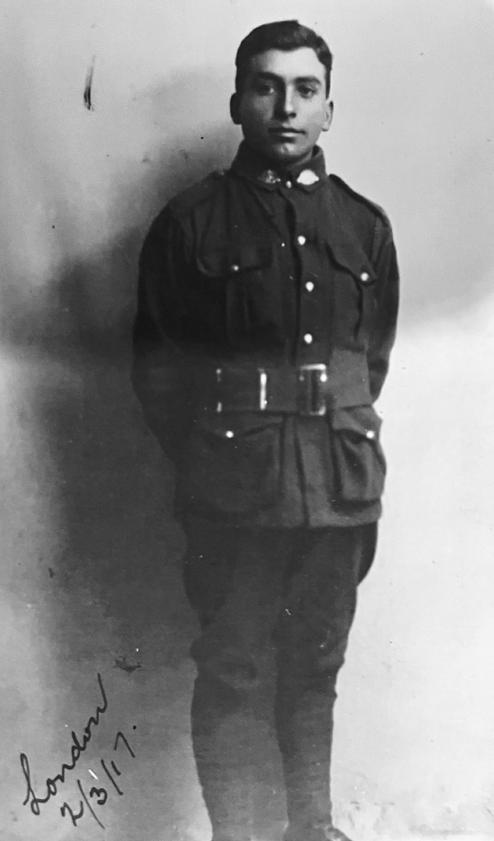
your age, so perhaps we bumped into each other. That’s incredible. Steve, I guess, what is it that’s inclusive about the Gallipoli myth? And what is it that excludes? You’ve written about that. Tell us a little bit more about that.
SV: As I said, every national myth is a kind of compression of who we are, of each nation, of who we are, what makes them as distinctive. And if you are any doubt as to whether these kind of emotional things are important to people think only, I mean, you don’t have to look back in history. Think of the conflicts that are going on at the moment in the world. Think of Gaza. Part of that’s a rational conflict over resources and territory, but the most of that conflict is irrational. It’s emotional. It’s about people believing emotionally that they’ve got an entitlement to a homeland, that exceeds rationality. Think of what’s happening in the Ukraine. A massive proportion of that conflict is about irrational emotional beliefs about, “Where is my homeland? Who are my people?” What binds us together? Irrational thoughts.
Much of what is happening in America, much of Britain’s exit from the EU. And so we go through the world is put down not necessarily to irrational beliefs, although there’s a component of that, but much more critically to a people feeling about who they are and what binds them together. And so in this book, I interrogate that, and I say that there’s three kind of critical components to any nation that binds them together. One is a sense of kinship. That is, who are we as a people? The second is a sense of belonging to a homeland. Where is the homeland to which we belong? And the third element is the cultural and historical memories and beliefs that bind us together. So if you put those three things together, who are we? Where do we belong? And what do we do? What makes us different as a people?
And those three thoughts, and I talk about those at some length in the book, but those three thoughts are entangled to create a sense of exceptionalism. And I don’t mean that in a superior way, just in a way of difference. What is it that makes Australian people different, different for the
better and for the worse? But every nation has a sense of exceptionalism, that we are somehow different and exceptional in our own unique way. And you only have to look at Australians, the way we behave overseas, the way we conduct ourselves at Olympic games with our Aussie, Aussie, Oi, the pride we feel when we see the green and gold, how we travel the world, how we feel getting on a Qantas plane. These are feelings about Australian exceptionalism. And it doesn’t mean that we are all agreeing about everything at the time, but this is a feeling.
In our heart of hearts, we feel something about being Australians. And if anyone is in doubt about that feeling and the way we commemorate that feeling, they only need look at, for example, on Anzac Day, how sports have re-embraced this huge national commemoration and now a hundred thousand people who’ve gone to the MCG to watch a footy game, again, with two teams who hate each other. And they’ve got pies in their hands, and they’ve got beers, and they’re going to scream and yell as much as any people can and yell, and they’ve been yabbering and talking and got their colors and they’re ready to go. But the minute that last post is played, the minute the lights go down, every person, a hundred thousand, they rise in silence and stand there, not because they’ve been told to do it, not because there’s a regulation that requires them to do it, because there’s a common understanding of what it is to be Australian, of what binds them together, of the virtues that hold them together.
And so it is for every door and service throughout the country, people aren’t ordered to get out of bed, and often on a miserable rainy day, and front up 50,000 people to the shrine in Melbourne, a similar amount to a cenotaph, a similar amount in Canberra. And so we go through to the tiny little places from Port Douglas to Port Lincoln, and you literally go around the country, people have got up and they’ve done this because there’s a sense of belonging. And every people, from families to sporting clubs to nations needs to belong, wants to belong, looks for the meaning of belonging. We’re a communal creature, we need to belong. And we commemorate that belonging not only for the present, but as a form of destiny, as a form of continuity. Those who’ve belonged before and sacrificed themselves for our belonging, we today and those in the future, our children, our children’s children, there’s a great sense of belonging in continuity, not just geographically, but temporarily through time. And that’s what we commemorate.
GTR: Totally amazing, and the way you put it. I tell you what, we are here discussing Nation, Memory, Myth: Gallipoli and the Australian Imaginary with Steve Vizard, the author of Melbourne University Press. Steve, look, is it the Anzac spirit that we believe that allows us to spot BS before a lot of other countries seem to. I mean, for example, it’s hard to imagine a character like Donald Trump gaining entrance into Australian politics, but some politicians seem to forget that, and they will recite what they believe is a winning formula. But Australians seem to seem through that sort of thing.
SV: I mean, we’ve all got our views about that. I think there is, one of the great virtues of Australian character, and of course it’s always evolving. These things are in broad brushstrokes, and so they’re always just generalizations, but one of the great generalizations, and it’s true of Australian character, that is epitomized in the Gallipoli, the Anzac story, but it had its foundations in the bushmen, in the laconic bushmen and in the sort of the larrikins of the late 19th century, when Australia was just before independence as an Asian Federation, but then became kind of consolidated in the First World War, is the larrikin sense of humor.
And the larrikin sense of humor is kind of critical to the Anzac story, but it’s critical to who we are. And it’s something that it relates me because I made a living in other areas of doing comedy shows, and it’s basically taking a piece. When there is the greatest virtue in taking a piece, in having a laugh because it deflates all of those pomposity, all of the people who are getting up themselves, all of that. We are good at pulling a rug out. And it arose probably, it’s often talked about, through our establishment as a penal colony. We were dismissive of authority, and the

two go hand in hand. Another great Australian trait that’s embedded in the Gallipoli story is the way we are dismissive of authority. Well, that and the larrikin sense of humor go hand in hand, don’t they?
Because a sense of humor is all about taking down power and power structures to some extent. Having a go at someone who’s too up themselves. It’s embodied in the classic thing of the fat businessman wearing a top hat, slipping on a banana peel, the embodiment of that. So we have finally tuned to all of that, and we are practiced at it, and Gallipoli kind of is, enshrines that virtue. But one thing I would say though, Greg, I think it’s really critical when you talk about America, one of the reasons that things can go wrong in a country or go sideways is because there are vacuums. And so we don’t discuss things. And so the vacuum is filled by those who are prepared to occupy it all of a sudden with excessive or bizarre or unusual or extreme views. But their capacity to occupy that space only arises because we’ve sort of been too hesitant to have these hard discussions about what’s right, what’s wrong. People are warned off having discussions about those things.
GTR: So true and prohibitive.
SV: A kind of censorship about, “Oh, we’re not allowed to discuss.” I have the opposite view. I think that the most robust democracies are founded on full and frank discussions. Sometimes pain, and sometimes ones we passionately disagree with someone, but we engage with them and we have the discussions in a civil
way, because that is the very nature of the society we live in. And I actually think it’s really interesting. This goes to a topic of censorship, which is not the subject of my book, but I think it’s really interesting that after the Second World War, indeed after the First World War, but after the Second World War, so many of the soldiers and the people who came back and the society that they then formed didn’t ban discussion of books. They had had first-hand contact with the enemy, and with a lot of the ideologies that had given rise to the conflict, whether it was fascism or Nazism or whatever, they had had more than anyone a reason to hate those ideologies more than anyone.
But on their return, they didn’t ban all of the books and the literature and the movies and the material that related to those ideologies that had cost them and their mates their lives. The opposite. They understood that the very thing they’d been fighting for was a free democracy, in which those ideologies, appalling though they might be, could be discussed, interrogated and dismissed on rational grounds or irrational grounds, because that is the nature of the very society, that democratic institution that we live in and that they had fought and died for. So the idea that generations later, that we take umbrage on behalf of those guys and start to close down those areas of discussion in a way that they never did but could have but chose not to do because it was the very antithesis of all that they’d fought for and of their conception of the civil society that we live in.
GTR: Yeah. Steve, I agree so much with you on that, and this could go on
to another discussion, and I hope at another time we get an opportunity to speak more. I’m in total agreeance. My parents were of different political persuasion, but still love them.
SV: Yeah, a hundred percent. That’s how we work in a civil society, because we are bound together by greater values and the greatest values that we live with in this society are kind of captured in the Anzac myth. I would make one further point, Greg, the Anzac myth and Gallipoli is an imperfect thing. It arose out of a war that we didn’t intend to have, trauma that we didn’t intend to suffer. It’s a particular story, a great story, and a sacred story, but we should have other myths as well. You’ll never find a perfect myth. And a society’s not made perfect by chopping down the great myths that we’ve got and looking for a more perfect one. The opposite.
GTR: That’s right.
SV: We keep the great myths we’ve got and add others to it.
GTR: You’ve been absolutely fantastic, Steve. And for the education and interest and entertainment of all, we thank you on so many levels for your history. And we are amazed that so much can be compacted into one human being. You’re incredible. Steve, thank you so much for being on The Last Post Radio Show Podcast series. It’s been a blessing, and we thank you. And Steve’s book Nation, Memory, Myth: Gallipoli and the Australian Imaginary, Melbourne University Press, go out and get it.
SV: Thanks. I really enjoyed the chat. It was great, mate.
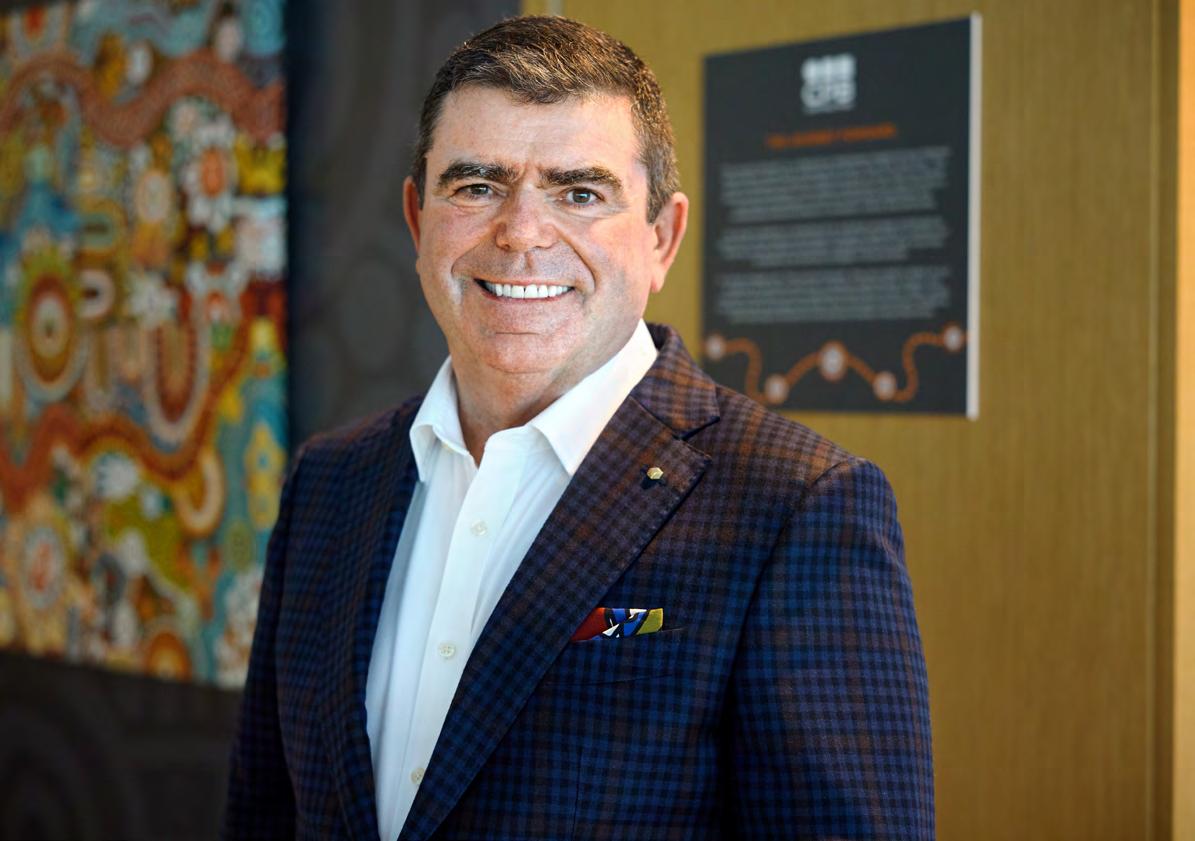
Greg T Ross: Welcome to The Last Post, and we have the delightful luck to be in beautiful downtown Prahran today in Greville Street. And even better than that, my luck to interview Brendan Sowry, Bachelor of Engineering. Brendan works with CPB Contractors as General Manager - Defence. CPB, of course, being a proud supporter of veterans’ employment. Brendan, welcome very much to The Last Post.
Brendan Sowry: Hello, Greg. It’s a delight to be here and relive some old memories here in Prahran.
GTR: Yes, we were just talking about that Brendan. There’s birds singing in the trees and of course we both have similar backgrounds regarding our state of birth and where we grew up and things we did. So, it’s a delight to be here with you. Brendan, first up, I would imagine how important to CPB, and indeed the general community, how important is that commitment from CPB to veterans’ employment?
BS: Well, Greg, CPB and its predecessors, Leighton Contractors, have been working in the defence sector for over 30 years, and in that time we have delivered probably 30 to 40 projects. We’re currently delivering six major projects across Australia, and as part of that we have continued our relationship with defense. Through this work, there’s a prevailing expectation to pay back to defense through engaging veterans
thelastpostmagazine.com/the-last-post-radio-show-podcast
to support us. Obviously, I’m one and I am proof of evidence of the benefits that defense experience can bring to a contractor such as CPB.
GTR: Brendan, let’s go back a bit into your history with the service and of course an engineer, a Bachelor of Engineering, tell us what you did, where you did it, and just let listeners know a bit more about yourself.
BS: Well, I joined the army in 1975. In fact, this is my 50th anniversary of joining the army on the 13th of January, 1975, signed up and arrived at Flinders Lane, delivered by my brother and his friends in a station wagon with surfboards on the top. So I immediately had a lot of credibility among the people waiting.
GTR: Oh, that’s funny.
BS: Not to say that I was ever a surfer. But I then had a 23-year career in the army. I went through the Royal Military College and graduated in the Corps of Engineers. Postings all around Australia, but importantly a couple of, and satisfyingly, overseas deployments, one in the Middle East with the United Nations Truce Supervisory Organisation serving in Israel and Lebanon and specifically Beirut in 1985, ‘86 and later in the decade in 1989, ‘90, I had the privilege of commanding 17 Construction Squadron UNTAG in Namibia, which was a force of about 300 supporting the United Nations in
their mission to oversee the transition to independence of Namibia from South Africa.
So two great highlights, and through that time in the army I developed enduring friendships which are prevailing today and very important in my life. And I suppose I inspired my two younger brothers in part to join the Defence Force in the army, both moving to the Corps of Engineers, both having outstanding careers. And collectively we have more than 120 years of service back to the nation as engineers, and we’ve a few others in the family who’ve been added on to increase that legacy.
GTR: Wow. Well Australia owes you a lot, Brendan, you and the family with a record like that. That’s totally amazing. Brendan, what do you think the inclusiveness of veterans brings to an employer? There’s obviously a lot of things, but from your point of view, your experience, what do veterans bring?
BS: Well, it’s interesting. We’re standing up our veterans employment policy or re-lifing it to give it a higher priority in support of project work across everything we do as CPB. I think it’s just important to note that CPB is part of the CIMIC Group and we are part of an enterprise going back to parent and company called HOCHTIEF in Germany, and then another parent, ACS in Spain. But the Australian operations all come back
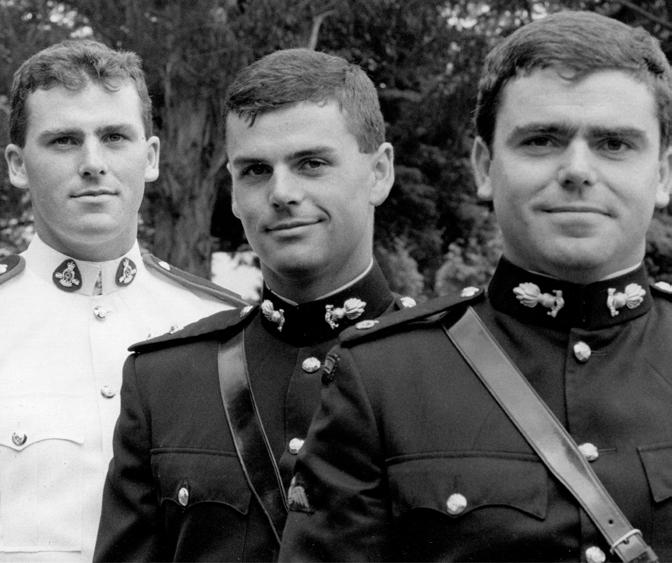
to Leightons Holdings and Leightons Contractors and our sister companies at the time, John Holland, Thiess among others. They established the foundation of CPB working in Defence.
For instance, John Holland had a program of employing one secondee every year from the Australian Defence Force, and I was one of those in the early ‘80s, and my brother Bill did a similar one a few years later. But the important thing about veterans is they have such a broad ranging skills base. The training that they go through not only gives them technical skills, but an underpinning of leadership and communications and confidence that is generally not apparent in the workplace. So you have pretty high confidence that if you were to employ a Defence veteran, they’ll be able to do exactly what you expect them to do.
GTR: The advantages are numerous and we’re thankful to you and CPB for the inclusiveness of veterans in the work plan. What actually, I was just going to mention to you, you had what, 23 years did you say? Or, yeah, 23 years, incredible. The veteran strategy and action plan, what’s that?
BS: Well, it’s the plan that we’re putting in place to more actively manage the engagement and creation of opportunities for veterans in the workplace. One of the challenges with veterans is the translation of their skills into a civilian context. Particularly if you take an infantryman, or an artilleryman, engineers are a lot easier because we have easily translatable skills back into a construction workplace. But what we’re endeavoring to do is to give veterans this first opportunity to at least get to the point of interview. Often, they are culled before they get there because prospective employers can’t identify the fit of those people into their job opportunities.
So we’re looking to, A, encourage veterans to apply for the jobs that we are putting out at the marketplace,
and then work with them constructively to identify an optimal fit. And if they get through to the opportunity of being offered a position, we will work with them, buddy them up with veterans already in our organisation to support them on their journey and give a higher likelihood of success in their transition into civilian life and civilian employment.
GTR: Yeah, I was going to say Brendan, and correct me if I’m wrong here, but it’s just from observation, but are there more companies now as part of the Veteran Employment Program? Has that helped or changed the layout? are there more companies involved now in seeking out veterans?
BS: Oh, absolutely. So the Commonwealth over the last five years has implemented a Veteran Employment Scheme. CPB signed up very early in the piece for that under the Prime Minister’s Veterans Program and that’s transitioned into a more broad ranging scheme, and we’ve recently re-signed our commitment to veterans employment. Industry is broadly doing that, and I think we’re realising the benefits, but now we’re setting tangible recruitment targets that we’re looking to try and achieve.
GTR: Now, I guess too, Brendan, part of the success of this is the attitude of inclusivity as we mentioned, and veterans being part of that and bringing something incredible to the table. You’re a gay man, and how has that affected you, I guess, in your life and have things changed dramatically or have they changed at all?
BS: Here you are, you’ve got me coming out on a national podcast, but I’m quite comfortable in doing that. And so probably a little bit of history, I’ve had realisation that I’ve been gay most of my life, but early days you don’t recognise what it was and I guess was sitting in the background when I applied for the army, but at the time it didn’t influence me and my decision to want to join up and so I joined the service. Progressively
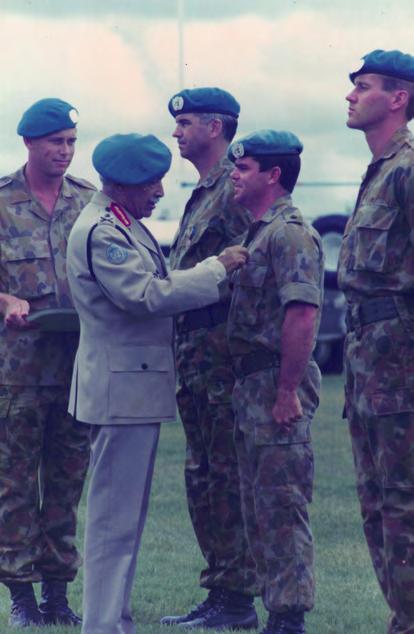
over time I came to the realisation that suppressing my sexuality was influencing me and my ability to realise my full potential. I think this is a situation a lot of people have over time, and it has brought to the front of my mind the importance of creating an inclusive workspace, whether it’s through gender, sexuality or whatever. I’ve progressively seen the transition of organisations, coming to the realisation that people are their most important asset and it’s in everybody’s interest to create the workplace environment that allows people to realise their full potential. It’s hard enough to get good people, but it’s more important to retain them to make sure that the investment that you’ve made in them is optimized.
And I saw that happen in the army when I was a mid-ranking officer. As a Major, I was working for the Deputy Chief of the General Staff as his Military Assistant. And it was at a point that the Defence Force was reviewing its policy on gays in the military and it was moving from a position of where, if you were identified as gay, you were cashiered out of the service or, in best case, don’t ask, don’t tell, to a more inclusive arrangement where it was recognised that gays or lesbians, had a contribution to make equal to that of everyone else in the service. Subsequently the policy was being progressively changed allowing continued service of this group of people. And it’s now progressed to the point where there are openly gay and lesbian people in recognised relations in the Defence Force fully supported and allowing people to realise again their full potential and contribute back to the nation.
GTR: Well said, well said, Brendan Sowry. And I tell you what Brendan, it seems it’s as clear as the nose on each other’s face to me, and this is obviously a personal observation, but it’s a retardation of society if we
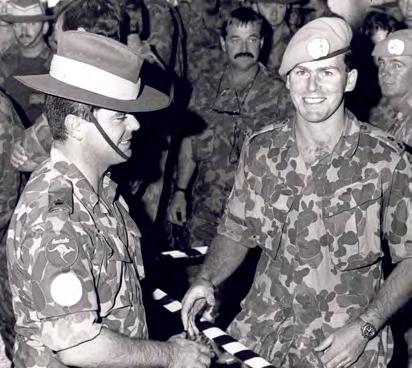
restrict people from being themselves, as long as you’re not harming anyone else, be yourself. That is the only way, surely, that the best will evolve and come from any situation.
BS: Yeah, exactly right, Greg, one of the great challenges with gay people is the presumption that you’re not gay and you are continually having to come out every day of your life. And it’s simply from the questions that people are posing to you, it can be in an Uber, can be in a taxi or, for me at my age now is, do you have grandchildren or are you married? While simple questions, you have to make a decision of, well, am I going to out myself to this person or-
GTR: Is it any of their business or not?
BS: ... give a flat bat answer. But there’s a general expectation. A lot of people say I’m the straightest gay man they know. Maybe, maybe not, depends what are the circumstances you see me. But certainly, in the workplace I’m the same as every other person there doing my daily job of work and hopefully doing it well.
GTR: I was going to say Brendan too, and it’s interesting you bring that up because when you’re brought up in an environment of acceptance for things like this, not acceptance but just it’s fact of life, for me, I find it hard to understand any attitude that would prevail that would handicap gay people. I mean, do you think ... obviously the military with the situation it is now, has the military and Defence reflected society in this move towards openness or has it responded to society, do you think?
BS: I think they’re on the front foot after certainly being in denial for a long time. They’ve become quite progressive, both through their policies and the bravery of their leadership to bring an inclusiveness into the Defense Force that is probably if not leading the field, with the leaders in the field in industry. And I can say that CPB and CIMIC Group are very supportive and wanting to do better. To me, it’s important for leaders in organizations to carry the flag. I won’t be out there with the rainbow flag all the time, but to be out there to allow others to see that leaders are comfortable to declare who they are and it gives others and junior people the confidence to do the same.
GTR: Mentors, if you like.
BS: Well, whether it’s mentors or, what would be the word, the exemplar that you can succeed and organisations will support you to be yourself, to optimise your potential to do your job and not accept bad behaviors from others in the workplace and through this demonstrated leadership and quelling bad behaviors, it gives people the confidence to be themselves. And that has been very important to me, particularly in the last 20 years since I left the army where I’ve had the confidence to go into new jobs and say who I am and also say that I barracked for Collingwood.
GTR: Well, that’s where we’ve bonded particularly I think Brendan, with the Collingwood bit. And I know you’re liable to raise a few eyebrows when you mention the word, but good on you. So you’re a brave man.
BS: Well, people see that as the greater of two evils barracking for Collingwood, and it’s great to defuse an awkward situation and they say, “Oh, barracked for Collingwood, okay, well let’s get on with the job.”
GTR: I get that too. Are there any hurdles, I mean we’re talking about Defence and military as a reflection of or leading the way in this and they have done a great job in many respects. Are there any hurdles left, Brendan? I suppose there’ll always be improvements to be made, but what do you see at the moment when you look at it?
BS: Yeah, there are, but they’re not at the level that they used to be, but it’s the attitudes of people whose views aren’t going to change on the situation. But what you can do is not allow it to influence the workplace and you can support people doing their job of work and then you can take your attitudes and keep them at home for the eight hours a day that you are expected to be part of a vibrant workplace.
GTR: Yes, well said. And again, I suppose on the backbone of the magazine and now the Radio Show podcast, Brendan, Brendan Sowry from CPB Contractors, General Manager Defence is some diversity brings more to the table with more of an opportunity perhaps to move forward.
BS: Absolutely. Greg. Look, we’ve been speaking about gays, but we’re clearly in the minority as are veterans, but there’s others in the workplace and particularly the construction industry that we’re working really hard to better the statistics and particularly for women in construction. I think the Army or the Defence Force were leaders in affirmative action, and we didn’t even know the word at the time, in creating equal opportunity for women. And it’s fantastic that you’re seeing women in very senior leadership positions in the Defence Force. One of my sisters-in-law was a Colonel in the army, married to my brother Bill. She had a remarkable career, a member of the Order of Australia, Conspicuous Service Cross,
and she beat my brother on one of her medals before he got his matching pair, but a stellar career and she’s still contributing through the reserves back to the Defence Force.
GTR: Well actually I’ll just go on in a second, Brendan, but I do say I remember this topic being discussed when I interviewed Angus Campbell in Canberra some years ago. So that proves, yes, there was obviously a movement towards this years ago.
BS: Yeah, as I said, we knew what affirmative action was in the Defence Force before it became a name, from the transition of the Women’s Royal Australian Army Corps to women being fully integrated back into Army and on equal standing with the male soldiers. And from that time forward, we saw this progression to the point that we have today in the Defence Force where promotion is on merit, they are of equal standing and they’re doing an exemplary job at very senior leadership roles. And I point to Lieutenant General Susan Coyle, who’s just recently been appointed to a very senior role and has had a stellar career to get to that point.
But if I go back to women in construction, the same thing is applying now and at CIMIC and CPB we’ve recognised that there’s been a gap in the opportunities presented to women and we’re working very actively to raise or increase the opportunities for women and to support them because the challenges that they have with children in and out of the workforce. But the real thing to me is their excellent potential. In fact, I think they’re far more organised than men.
GTR: Yes, I’d agree.
BS: And they get the job done efficiently and effectively, and they make great engineers. And I have always enjoyed working with women in my team when the opportunity is presented.
GTR: I often suggest the same thing is that life without women would be less in so many ways, and we include that in the employment and defence sector. So Brendan Sowry, we could go on, and indeed we will, we may do a series of interviews with you. But Brendan Sowry, Bachelor of Engineering, 23 years in Defence, CPB Contractors, General Manager Defence, and of course CPB Contractors, proud supporters of Veterans Employment Programs.
We thank you very much for being on The Last Post Radio Show podcast series, Brendan, and we must have you back again.
BS: Thanks, Greg. It’s been a delight and I’d be more than happy to join you for another coffee and a conversation.
GTR: Any excuse to get together and have a chat in Sunny Prahran too, so it’s a beautiful thing. Thank you for being part of it.
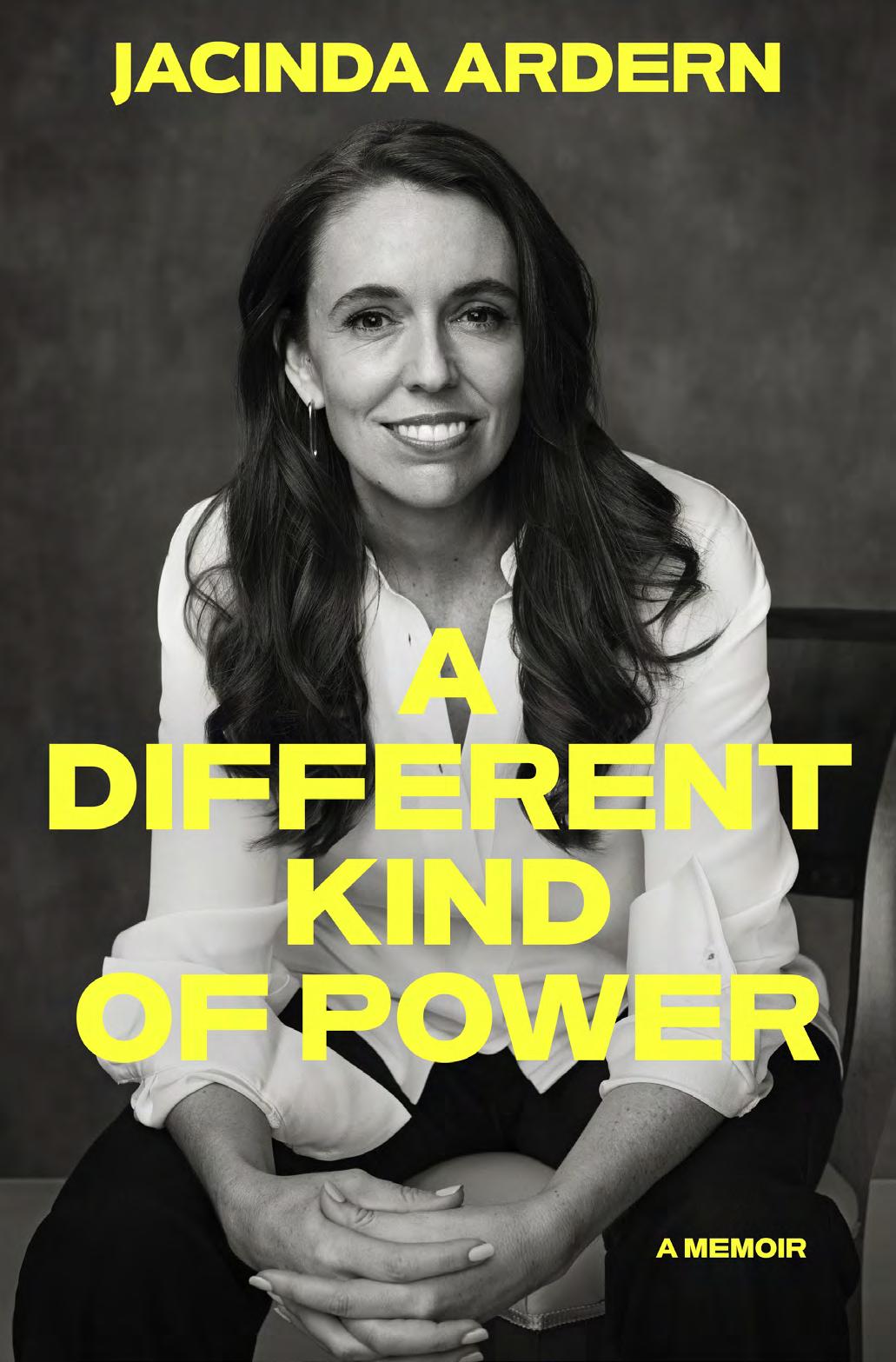
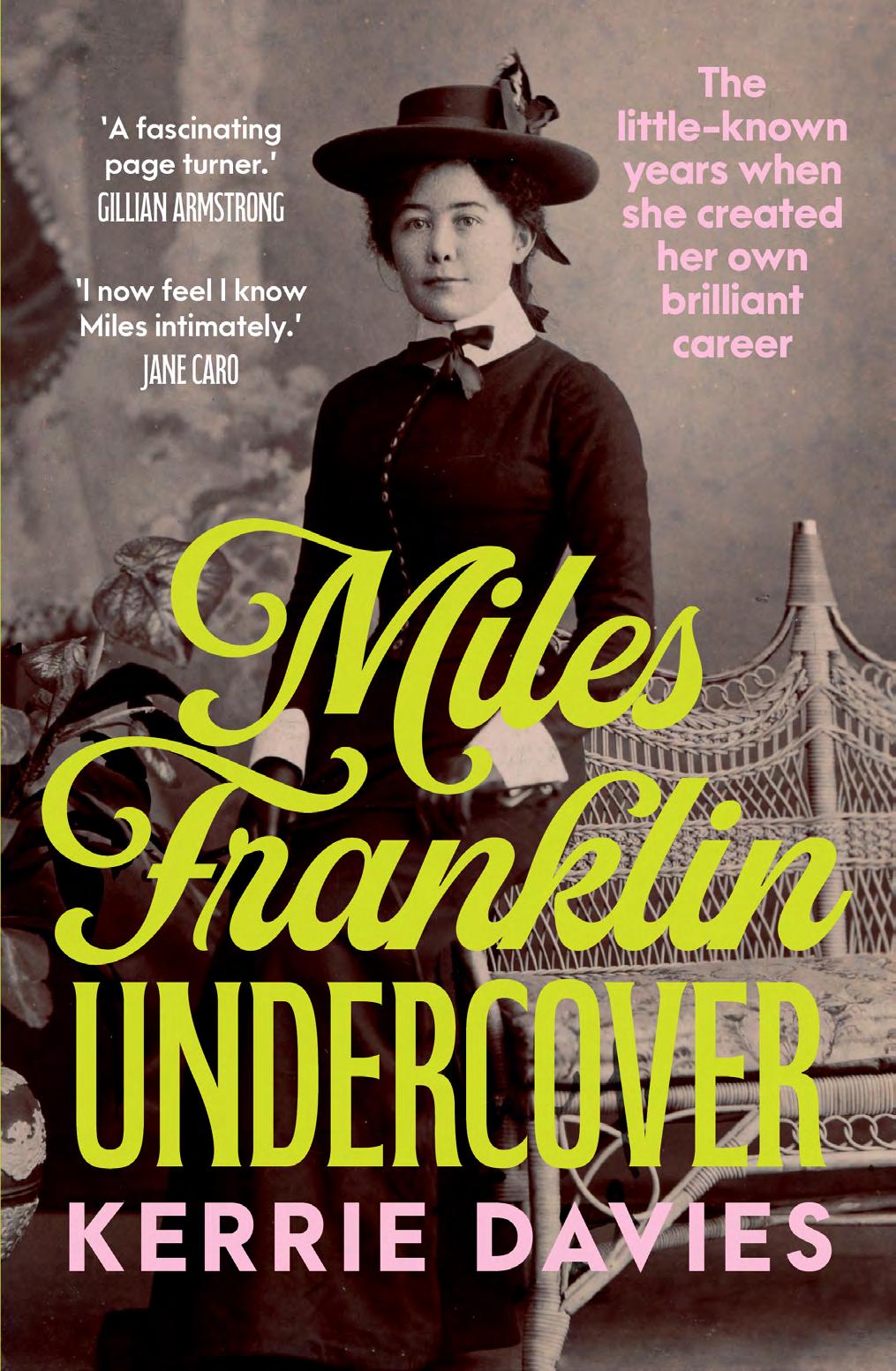
The Statement of Rights in the new Aged Care Act will give legislative power to a fundamental shift in the way we deliver aged care.
As 1 July 2025 and the start of the new Aged Care Act fast approaches, there is a lot of consternation in the aged care sector about what the changes will mean, and the readiness of providers and systems.
On some levels this is understandable, however, as an aged care advocate, I am concerned about the expectation that everything should be perfect and in place before we start to make changes which will see the rights of older people be the focus of our aged care system.
If we wait for everything to be perfect, we’ll never start.
The human rights of older people are now enshrined in the Aged Care Act through a Statement of Rights. This will replace the previous Charter of Aged Care Rights, which did guide service delivery by aged care providers, but held less weight. From 1 July, whether you are receiving aged care services at home or in a residential aged care facility, service providers will have a positive duty to understand and deliver their services in line with these rights.
It means that service providers must have practices in place to ensure that services are delivered in accordance with the Statement of Rights, and these rights must be
taken into consideration under the functions of the Aged Care Quality and Safety Commissioner, and the Complaints Commissioner.
The Statement includes rights like independence and autonomy, respect for privacy, safe and quality care, and the right to raise issues without fear of reprisal.
But what it really means is that self-determination and choices of older people should guide their aged care. It is a change in the current ways of thinking and working. No more doing what ‘ is best’ for the older person or imposing overzealous safety measures.
Providers can start with practices which embrace those fundamental rights that all of us hold. The elements of an ordinary life – being listened to and making choices - what to eat, when to shower, what to do, where to go or who visits.
Embracing human rights in aged care doesn’t need to be difficult, it is first a change of perspective, and one that the aged care sector now has to make.
If you feel like you are being shut out of decisions about your life, call the Aged Care Advocacy Line on 1800 700 600. Available Monday to Friday 8am-8pm and Saturday 10am-4pm.

Geoff Rowe is CEO of ADA Australia, the Queensland member of the Older Persons Advocacy Network. Geoff’s career in the human services sector spans 40 years, including senior and executive positions in the Queensland Government, and in the not-for-profit sector. Geoff has a strong interest in social justice, human rights and inclusion.
The Statement of Rights replaces the Charter of Aged Care Rights and will help to make sure you are at the centre of your aged care. It gives you the right to:
• make your own decisions about your own life
• have your decisions not just accepted, but respected
• get information and support to help you make decisions
• communicate your wishes, needs and preferences
• feel safe and respected
• have your culture and identity respected
• stay connected with your community
For more information about the Aged Care Act and Statement of Rights go to www.opan.org.au/new-aged-care-act.

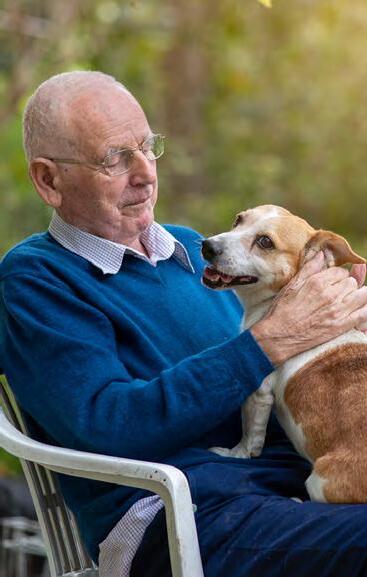

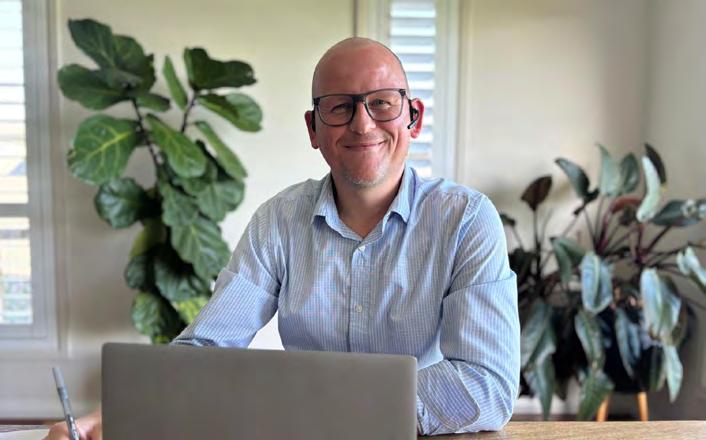
Stuart Barber is a financial advocacy officer with Senior Rights Service, OPAN’s New South Wales network member.
Tell us a little about your background.
I wasn’t always a ‘money guy’. I started as a graphic designer and was quite successful in that field. Then, I got into social work, youth work, and adult mental health before completely pivoting again – into finance. Eventually, I became a financial adviser, often helping retirees and pre-retirees navigate Services Australia. I enjoyed helping people and solving financial problems, but not the stress of managing other people’s money. That’s when I got into financial counselling.
What made you decide to become a financial advocacy officer?
It looked like a mix of the things I enjoy and a great opportunity to really do some good, so I jumped at it.
What do you like most about your job/the work?
Juggling care and wellbeing while navigating the financial issues of aged care can be stressful and difficult for older persons and their loved ones. Cruel even. When I can help older people get out of trouble or, better yet, avoid the pitfalls in the first place, it can be life-changing for them and their family and that makes it all worthwhile.
What do you like least?
Everything in aged care moves so slowly and this drags out the stress and uncertainty for the older person. And even though there are resources out there and most providers will attempt to help, sometimes there’s no one person who can pull all the threads together and fix the problem.
What has being an advocate taught you?
To be more patient. The sheer volume of people moving through this system means it can take months for a person’s means assessment to be corrected if it wasn’t done properly the first time. That can be frustrating, because if fees are wrong, they just roll on. And when you think you have done all you can, push a little more - you miss all the shots you never take.
What’s is the most surprising thing that’s happened to you on the job?
Sometimes, providers surprise you. There have been times when providers have been quite belligerent despite being in the wrong. And others where they quickly put things right when I was expecting a long fight. I have also had a few callers from quite ‘famous’ families. I guess that even the very fortunate among us can find themselves lost in the aged care financial system.
What would you consider to be your greatest achievement (personal or professional)?
Since we started financial advocacy at Seniors Right Service about 2 years ago, our small team has managed to get nearly $1,000,000 worth of fees refunded, waived or reassessed in our client’s favour. We keep a tally.
Money isn’t everything and it doesn’t always show the full extent of the work involved, but this tally is a nice reminder of the tangible good we do for older people. The only downside is that not enough people know we exist and reach out to us.
What makes you get out of bed in the morning?
My alarm, to go for a run or gym. I’m a morning person - I like to get things done early before they can get derailed later in the day.
If you weren’t an advocate, what would you do instead?
All my favourite jobs involve arguing with people for some kind of social justice or ethical outcome. This is helpful at work, but I imagine it could make me a bit of a pest in the street – maybe me staying an advocate is best for everyone.
What do you do to recharge?
It’s a cliché mid-40s man hobby, but around 7 years ago, I got right into running. I go out early in the morning and run in the mountains or the beach.
What would be your ‘perfect’ day?
Some quiet, solo kilometres while the sun comes up then back home to spend the rest of the day relaxing with my family or a good book.
What’s the one possession you couldn’t live without?
I can’t think of anything. The longer I live, the more I realise I don’t need much and that and even things I thought I needed, I probably could do without.
If you could have lunch with anyone, alive or dead, who would it be and why?
Mark Boyle, author of ‘The Moneyless Man’, which follows on from the idea of not needing much to be happy. I’d like to help him make lunch because he’s one of those foraging, interesting guys who gets food from dumpsters.

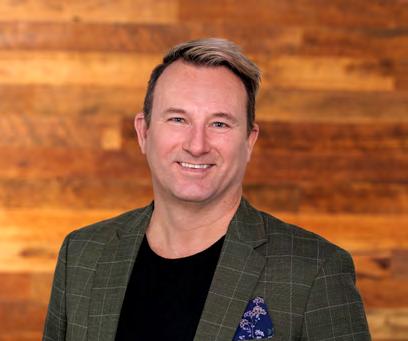
opan.org.au
As the national peak body for individual aged care advocacy, the Older Persons Advocacy Network is committed to ensuring all older people have access to the safe, high quality aged care they are entitled to, and to have their rights upheld.
More than 200 advocates are employed across OPAN’s 9-member network to facilitate this goal – by providing free, independent and confidential support.
The issues older people raise with our advocates are broad and far reaching, spanning fees and charges, service availability and delivery, and neglect and abuse. But poor communication and a lack of support to make choices about the way they live their life have been the key overarching themes across all types of aged care for 2 consecutive Presenting Issues reports (opan.org.au/information/publications-and-reports/reports).
By walking alongside the older person, advocates support them to speak up for their rights and the aged care they need in a way that reinforces the older person’s agency and independence. The efficacy of this approach has been borne out by the results of a recent evaluation (opan.org.au/presenting-issues) of the National Aged Care Advocacy Program (NACAP), which OPAN is funded to deliver – 74 per cent of those surveyed felt more confident to discuss their needs after speaking to an aged care advocate. The same proportion felt empowered to selfadvocate.
Given the solid empirical evidence provided by that independent evaluation, I am heartened but not surprised by the inclusion of advocacy in the primary legislation of the new Aged Care Act, which comes into effect on 1 July.
In line with the network’s core values – some of our members have been supporting older people to speak up for more than 30 years – the legislation reinforces the message that advocates work ‘at the direction of the individual, reflecting the individual’s expressed wishes, will, preferences, interests and rights.’
Under the new Act, providers are also legally obliged to grant advocates access to their services. Backed by the new Statement of Rights, and the supported decision-making principles that have been embedded into the legislation, these changes will help to bring about the cultural shift in the aged care sector older people have been calling for.
On the eve of this long-awaited change, I say: bring it on!
And if you, or someone you know, is having issues with their aged care services, I strongly encourage you to call the Aged Care Advocacy Line on 1800 700 600
OPAN CEO Craig Gear
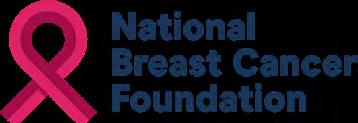
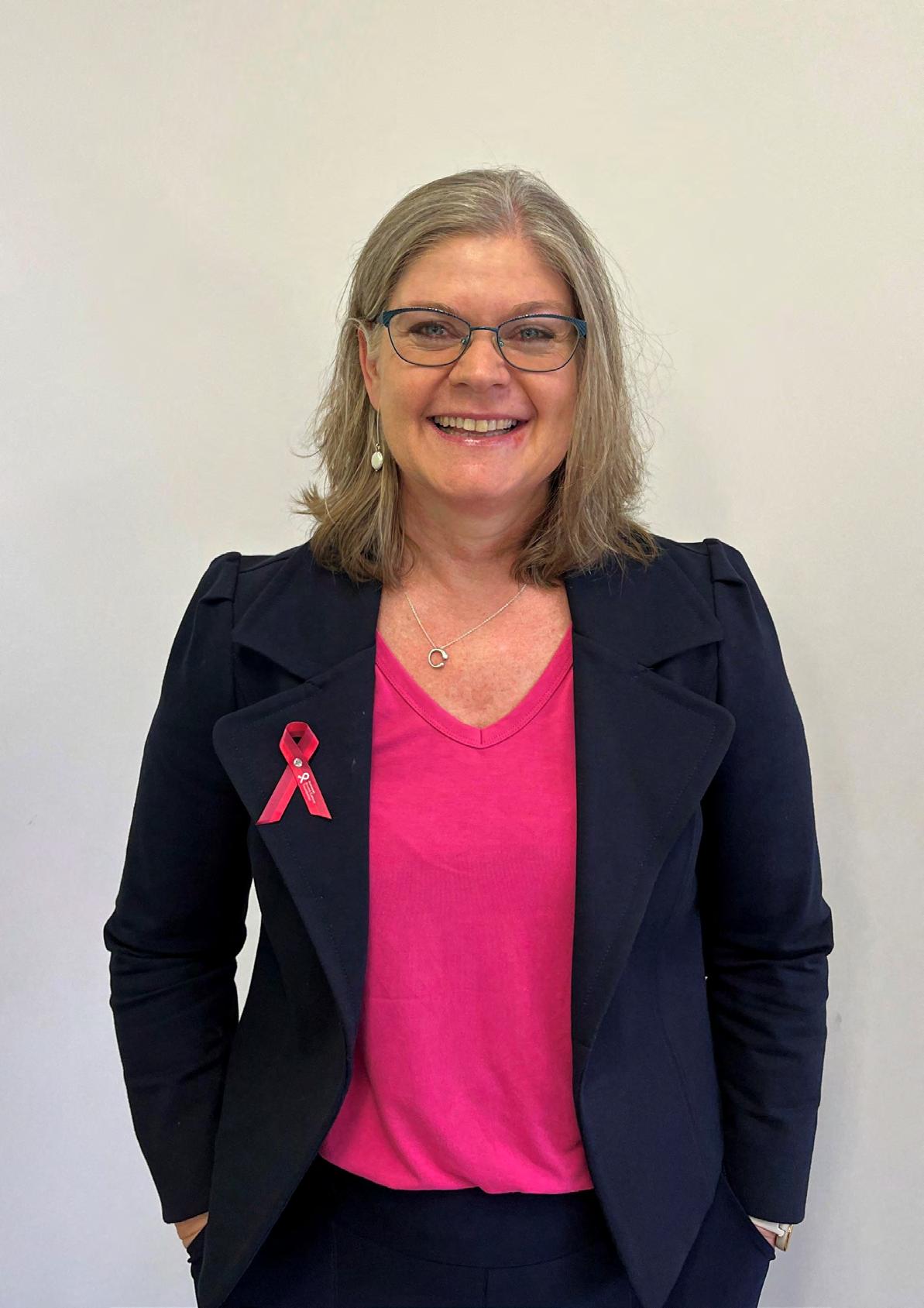
thelastpostmagazine.com/the-last-post-radio-show-podcast
Greg T Ross: It’s my great pleasure to introduce and to say hello to Sarah Jane Monahas, who is the head of Individual Giving at the National Breast Cancer Foundation. Sarah Jane, how are you?
Sarah Jane Monahas: I’m Very well, Greg. Thank you so much for having me on today. It’s a pleasure to be here.
GTR: Well, the pleasure is returned from this end too, Sarah Jane, because it’s always good to chat to those that are doing something in the community that’s of benefit to the others. And of course, national Breast Cancer Foundation itself has been something that’s been operating for a number of years, helping a lot of Australians. So thank you very much. Sarah Jane, just to start this off, I guess there’s a lot of questions regarding the prevalence of breast cancer in Australia and ways to combat that. But how prevalent is breast cancer in Australia, Sarah Jane?
SJM: Yeah. Oh, gosh, well, the short answer is it’s extremely prevalent. It is actually the second most diagnosed cancer in Australia. And amongst women, it’s the most diagnosed cancer in Australia. So that’s a lot of us that are impacted either directly or indirectly by this disease. And I think there’s over a quarter of a million people living in Australia who’ve had a breast cancer diagnosis at some stage in their lifetime. So it’s big.
GTR: Yeah. Look, those figures give credence to that comment, Sarah Jane. And I guess in that sense, we would all know of someone or be related to someone that has been diagnosed. Would that be correct?
SJM: It feels that way. Certainly the conversations that we have with our friendship groups, with our communities, it’s just so prevalent. It’s hard-pressed to find someone that hasn’t been either directly or indirectly impacted, to be honest. And I think this year alone, they’re expecting over 21,000 people to receive that diagnosis. So the occurrence, I think, is outpacing population growth which is a real concern.
GTR: Are there any reasons that this may be the case?
SJM: Well, Greg, that’s why we’re in the business of research. Research is the answers. It’s central and critical to both understanding the disease better, it’s a complex disease, and to improving those outcomes. And as the National Breast Cancer Foundation, our clear purpose is to fund worldclass breast cancer research. And
that’s really the only way we’re going to understand this disease and change the outcomes to the better.
GTR: Yes. And well said too. With the community, I guess why is community funding and donations so important? You’ve just outlined it, I guess, but how can we engage the community and why is it important to keep sending out this message, Sarah Jane?
SJM: Thanks, Greg. So look, we don’t actually receive any government funding. So National Breast Cancer Foundation is entirely funded by the extreme generosity of our amazing donors and partners. We couldn’t do the work that we do without everyone’s support. So it’s a real community that together we have this purpose of funding world-class research, and our vision is very clear and ambitious, and that’s to stop people dying from breast cancer, to end deaths from breast cancer. So it’s vital that we keep the message out in the community. One thing that donors and supporters often tell us actually, is it’s very empowering to be a supporter of National Breast Cancer Foundation. It’s sort of making a good thing out of something bad. People tell us that it’s a positive action and that they can feel good about, they can do their bit. Oftentimes, if you are impacted by breast cancer, there’s a lot that can feel completely overwhelming and out of your control directly or indirectly. So this is something that people can do which will make a positive difference.
And I’m really proud that National Breast Cancer has been around for 30 years now. We were founded in 1994, and during that time the death rate of breast cancer has actually reduced by over 40% which is extraordinary. So that really proves that research works, research gives hope, and why we’re so determined to end deaths from breast cancer.
GTR: Yes, I can understand that completely. Second most diagnosed in Australia, cancer quarter a million diagnosed at some stage in their life and no government funding. It makes you wonder why, but of course, that increases the importance of getting messages out like this to the public to dip into the pocket. And there’s other ways and we’ll talk about that soon, Sarah Jane, about helping the National Breast Cancer Foundation. Now of course, with Anzac Day coming up, Sarah Jane, we, I guess the magazine and the podcast series do talk to people in relevance to the Anzac spirit. And the Australian public I know is filled with generosity. But to assist the large number of Australians and their loved ones too Sarah Jane, of course, because it reaches far
beyond the individual, how can enacting the Anzac spirit help National Breast Cancer Foundation?
SJM: Yeah, look, Anzac spirit really it lives on through all of us. And I think I agree that the importance of that spirit feels more important in the lead up to Anzac Day and acting on it does feel rewarding. It rewards the individual for acting, but also in our case it actually rewards those impacted by breast cancer. So I mentioned before that that sense of empowerment for taking action, doing the sense of doing something good, we see that Anzac spirit alive every day in our work. From our friendship circles, we know Aussies want to help their mates. That mateship is a key characteristic of that Anzac spirit. The type of generosity is quintessentially Australian. And we just see that play out in spades, our donors and supporters are just amazing. They are our lifeblood, we can’t do what we do without them. And it is their support and ongoing support is very, greatly appreciated.
GTR: Yes, so true. Sarah Jane, I guess in the modern world where we have a lot of focus on social media, and the instant now feeling of communication and people may get sometimes lost. But I think at the core of it all is as you so wonderfully explained, the mateship and the Anzac spirit, the empowerment with action and the rewarding feeling that comes from giving and assisting those in need. But of course it can strike anyone at any time.
SJM: It can. It’s a disease that doesn’t discriminate. And it’s important to remember men can get breast cancer too. It’s something that’s not always known or realized, but it can. It can affect anyone young or old, male or female, so that’s something to be very, very aware of. But that sense of mateship, we see this especially in some of our events. People might do an event in honor of someone they know and love who’s been impacted or they themselves. And the feedback we get from our donors too, we hear such incredible stories from people’s own personal experiences and their own motivations for supporting National Breast Cancer Foundation. It’s really very moving.
GTR: Yes. Look, having myself worked in the charity industry some years back, and of course with Red Cross too, and I do know that well, at the bottom of everything, Sarah Jane, is a willingness to assist. And sometimes that can come from the most unlikely quarters. Those with little perhaps are known to give the most. But there it is, everyone is welcome to assist the National Breast Cancer Foundation. When we speak of
donations, Sarah Jane, all very well and brilliantly accepted of course, and lovingly accepted, what other ways can people help?
SJM: Yes, thank you for asking that, Greg. There’s a ton of ways people can help. So of course, every donation is very welcome and appreciated. People can also host events. A popular fundraiser is hosting a Morning Tea. There’s a number of challenges people can be sponsored for. You can get your friends to sponsor you for doing any type of challenge. So whether they’d be sporting challenges or other challenges, people can speak to their workplace about becoming a corporate partner or their workplace giving program at work. Lots of people love to wear pink to honor someone they know. And of course, many people choose to leave a gift in their will as well. And it’s a really beautiful legacy actually. And it’s the most humbling gift we receive as a gift in Will.
GTR: Yeah. Look, I suppose through my years of working with the magazine and now the podcast series, the bequests and the leaving in Wills is particularly touching. And of course something that can just, I don’t know, the spirit of the person lives on through those donations and through those bequests too, I would imagine, Sarah Jane. You said about people doing things, obviously donations. But aside from donations and my mind went to a number of areas, so I’m just going to suggest a few.
Of course, you spoke about the morning teas. I was thinking because I’ve done some walks for various charities over the years, people could walk for the National Breast Cancer Foundation, they could do some swimming, they could do some reading.
SJM: Yes, great suggestions.
GTR: Yeah, and even do some knitting. If someone was to knit non-stop for 36 hours and all money goes to the National Breast Cancer Foundation, as long as I get the jumper.
SJM: That’s right. It would be a pretty big jumper after all that time. But no, great suggestions. Literally anything that’s your passion or your hobby, any fun ways, it’s a lovely way to support actually and rally your friends and your mates around you and just enjoy it. Supporting a should be all about feeling good about it. And just love those suggestions, Greg. Thank you.
GTR: No, that’s fine. I tell you what, I might start something here myself with this because of course I can imagine local libraries might be able to get involved with the reading too and read three books or something in a week. And you might get some money for the National Breast Cancer Foundation. Sarah Jane, look, I guess also, we spoke, of course, the ultimate goal of the National Breast Cancer Foundation
being zero deaths. How close are we to achieving that? Is it something that is possible?
SJM: We are very focused on, so National Breast Cancer Foundation have a very clear single purpose which is to fund world-class breast cancer research in Australia. And our ambition of ending deaths from breast cancer. So we’ve seen amazing progress over the last 30 years where that death rate has reduced by over 40%. But clearly there’s still more work to be done. The job is not over yet. And it’s expected that I think the current statistics, nine people every day die from breast cancer. So that is nine lives, too many lost every day. So we have a very clear focus now. So the approach that we take in our research is on four key pillars. So we look at preventing breast cancer, detecting breast cancer as early as possible so before it progresses, we want to stop that progression and stop the recurrence of breast cancer and to focus on that treatment. So treating hard to treat breast cancers and metastatic breast cancer, that’s when the cancer has spread to other areas.
So there’s four key pillars, prevent, detect, stop, and treat, is how we will achieve our vision of zero deaths. And the only way we can do that is to keep funding that vital research. Research works, it is the answer. And we need the support to continue in order to be able to do that.
GTR: Well, that’s essential of course too, Sarah Jane. And I just thought of something else as a fundraiser too. You can get the kids involved in skateboarding, get them out there and skate for certain hours.
SJM: Oh, great. Love that.
GTR: Yep. If the kids want to skateboard at their local arena non-stop for say 12 hours or six hours or whatever, two hours, just give the money to National Breast Cancer Foundation.
SJM: That’s amazing.
GTR: I’m going to stop here. I’m on a roll now. But anyhow-
SJM: You are on a roll. I’m busy taking notes. I love it.
GTR: Isn’t that wonderful? So it’s preventing, it’s detecting, it’s to stop the progression and it’s the treatment, are the important four factors there, Sarah Jane?
SJM: Indeed. And everything of course, is underpinned by the need to minimize harm and maximize that impact. So there’s much work to be done, but we very, very impatient and keen. Over the past 30 years, we’ve invested over $200 million in over 600 research projects now. So there’s been a significant investment in the past. But to demonstrate focus moving forward in the next five years, we are aiming to invest $125 million in new research. So we are very serious
about ending deaths from breast cancer
GTR: Yeah. $125 million over the next five years of funding, that is totally brilliant. And of course, funding also to research projects. So finally, I guess, Sarah Jane, with the, as we know we spoke about earlier, the rewarding feeling that comes from helping others, the empowerment that it gives one. And I guess, see, we could go deeper if we want to get into a philosophical thing here, but I suppose you can tell those when you pass them in the street, those that are happy and those that aren’t. And I guess to me, I know that giving and assisting others is of great benefit to your own mental and physical health.
SJM: I understand that to be true as well. I think it does feel good to do good and to know you are making a positive difference. Every donor is important to us. Every donation absolutely counts. And it should be a joy and a pleasure to support. And I think what I would like to think is people have confidence in National Breast Cancer Foundation. We have runs on the board. We know what we’re doing. We have access to the most incredible researchers, the very best on a global stage. So we just need to keep going. We just need to keep funding this incredible research to look forward to the next breakthrough.
GTR: Yeah, so true. And I think too, when our veterans, those that were unable to return home, those that fell in battle, I guess the bottom line of all of this, Sarah-Jane, is that we are fighting for the community that we have in the sense that it gives us a strength and ability to forge even better communities. And part of that, I guess, reason that we fight for the survival of our democracy. And that is so that we can give and we can feel good and the diggers would be proud of that in the Anzac spirit.
SJM: Absolutely. It’s together we will achieve this and thank you to them for their incredible legacy to allow us to do that. So together let’s end deaths from breast cancer.
GTR: Ye. Look, so well said, feel good by doing good. Everyone out there feel good by doing good from the words of Sarah-Jane Monahas, who’s the head of Individual Giving at the National Breast Cancer Foundation, and can you give the web address, Sarah Jane?
SJM: Absolutely. Please come and visit us on our website, which is nbcf. org.au. Thanks so much.
GTR: It’s been wonderful. Let’s try and get this right down, zero deaths. Let’s give and let help us all. So thank you very much, Sarah Jane Monahas, and thank you for being on The Last Post Radio Show podcast.
SJM: Greg, thank you so much for having me today. It’s an absolute pleasure talking to you. Thank you.

1 in 7 Australian women will be diagnosed with breast cancer in their lifetime.
Support the National Breast Cancer Foundation and help save thousands of lives each year.
A charitable gift in your Will to fund innovative research can improve survival rates, transform detection, treatment and care.
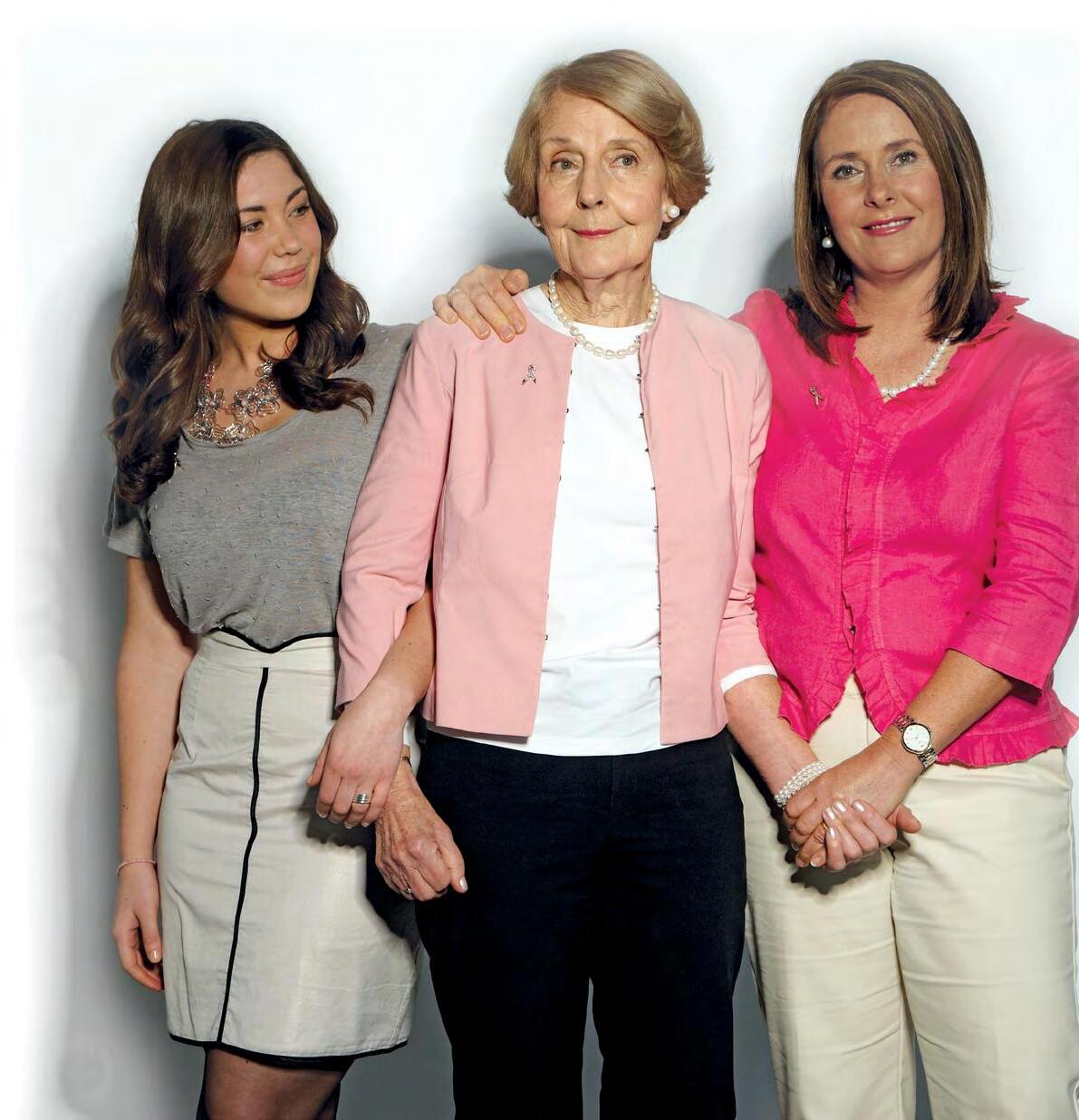
With your support we can stop breast cancer taking the lives of those we love.
For information please contact our Gift in Wills Manager on 02 8098 4848 or bequests@nbcf.org.au
the wellbeing of veterans and public safety personnel and their families
Our unique, holistic approach integrates the physical, psychological and social elements of wellbeing to ensure that those who serve are supported to succeed, thrive and flourish.
Our research
From helping to understand and navigate the transition to civilian life and supporting families through challenging times to getting at the root causes of veteran suicide, Open Door is recognised nationally and internationally for tackling real-world problems and delivering evidence to drive impact across the life course.
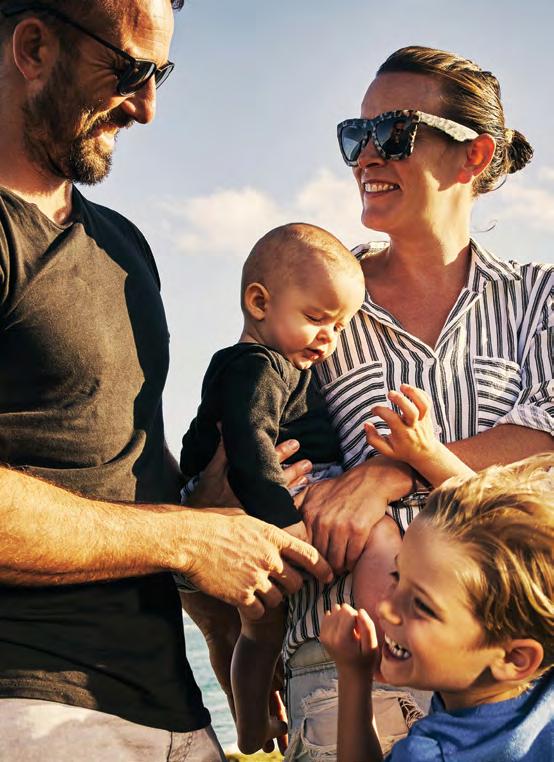
We work in partnership with current and former military service and public safety personnel and their families to design and deliver world-leading health and wellbeing research, education and programs.
Our work focuses on:
1. Social, mental and physical health and wellbeing
2. Service, transition and life after service
3. Systems and culture
4. Legislation, policy and service provision
Learn about our research
PSYCHOSOCIAL
Improve the wellbeing of veteran and public safety personnel and their families through social connection, reintegration and capacity building
Examine the in uence of culture and systems through a historical and contextual lens
MEDICAL
Address conditions such as cancer, musculoskeletal injury, and sleep and hearing disorders
GOVERNANCE
Policy and legislation
Welfare and compensation
Veteran and public safety sector governance
CLINICAL
Diagnose and treat physical, mental and cognitive conditions
SERVICE PROVISION
Diagnosis and treatment Interventions Prevention
Lived experience and co-design Veteran and Public Safety Personnel centric Across the lifecourse
Open Door are proud to collaborate with government, research agencies, not for profits, other associated organisations and those with lived-experience and their families.
If you would like to work with us, we’d love to hear from you.
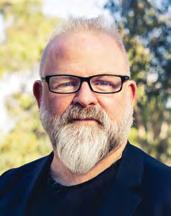

COMMUNITY ENGAGEMENT Workforce Transition
Individual, family and sector-wide activities




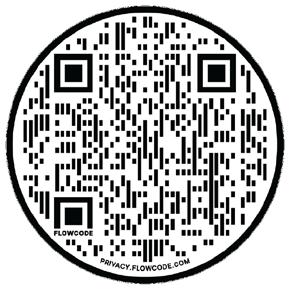





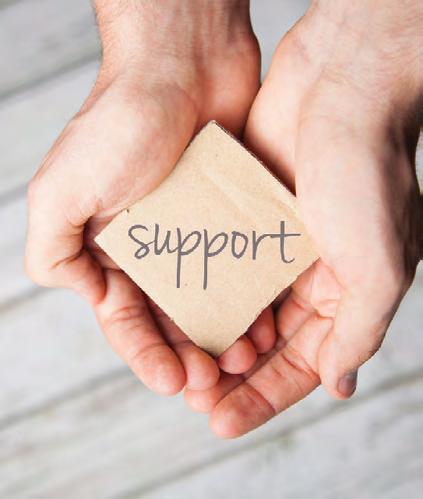








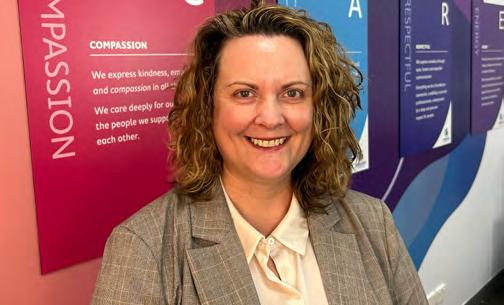
When facing a life-changing diagnosis like pancreatic, stomach, liver, biliary or oesophageal cancer, compassionate care and clear information can make all the difference. That’s where upper GI nurses, like the team supported by the Pancare Foundation, come in.
Pancare is an Australian charity dedicated to improving outcomes and providing practical support for people affected by upper gastrointestinal (GI) cancers—diseases with some of the lowest survival rates and highest burdens on patients and families. These nurses work closely with patients from the moment of diagnosis, offering guidance, emotional support, and access to vital services.
We sat down with one of Pancare’s dedicated upper GI nurses to learn more about the role, the realities of cancer care, and why this work matters—plus a few light-hearted insights along the way.


Q: How does your work support patients and their families through a diagnosis and treatment journey?
A: I act as a kind of compass for people when they’re thrown into unfamiliar territory. We’re there to answer questions, explain medical jargon, provide emotional reassurance, and help connect people with services like counselling, support groups or financial aid. It’s about treating the whole person, not just the cancer.
Q: What are some of the most important advances or changes you’ve seen in upper GI cancer care in recent years?

Tiffany has 20 years of acute nursing experience, including some surgical liaison nursing. She has spent the majority of her career as a theatre nurse and has a postgraduate diploma in peri-operative nursing (peri-anaesthesia).


Tiffany has been a part of the PanSupport team at Pancare since March 2022. Through her work as an anaesthesia nurse, she regularly looked after patients undergoing upper GI cancer surgery. Now as a part of the PanSupport team she looks after the same patient population, just in a different capacity.
Often patients and their families get in touch with Pancare because they need a little reassurance and an understanding ear to listen to them. Tiffany finds her role as a cancer support nurse satisfying because “When a patient or their loved one makes an appointment with us, that time of 45 minutes is just for them, unlike other appointments they may have, which tend to be shorter. There are so many benefits to being a consistent point of contact for our patients. Being able to educate and encourage selfadvocacy is also rewarding.
Q: What inspired you to specialise in upper gastrointestinal (GI) care, and what does a typical day look like in your role?
A: I’ve always been drawn to the human side of nursing— listening, educating, and helping people feel supported when things get overwhelming. Upper GI cancers can be aggressive and confusing to navigate, so being a calm voice in that storm really matters. My day might include phone calls with patients, helping families understand treatment plans, or connecting someone with a dietitian or counsellor through our PanSupport program.

A: There’s growing recognition that wraparound care—like psychosocial support, nutrition advice, and early palliative involvement—makes a huge difference. It’s not just about chemo or surgery anymore; it’s about how people live with cancer. That shift is creating better quality of life and sometimes better outcomes, too.
Q: What advice would you give to Australians—especially veterans and their families—who might feel overwhelmed by a potential or recent diagnosis?
A: You’re not alone. It’s okay to feel scared or uncertain. But reach out early—to your doctor, to Pancare, to a nurse like me. We’re here to walk the path with you. Information and support can make the road ahead feel a little less daunting.
Q: What’s one thing about your job that would surprise people—maybe something that’s not as glamorous (or is more fun!) than people expect?
A: People might be surprised how much laughter happens in a day. Even when things are tough, there’s still room for humour, for stories, and sometimes for sharing recipes! It’s those little human moments that really connect us.
Q: When you’re not supporting patients, how do you unwind? Any hobbies or rituals that help you recharge?
A: I’m a big fan of short bushwalks in the Dandenong’s (My backyard!)—it’s my therapy. I also love walking my greyhound Coco, reading, yoga , and the occasional true crime podcast binge!
Q: For those who might not have heard of Pancare before, how would you describe the foundation and the role it plays in supporting patients with upper GI cancers?
A: Pancare is like a lighthouse for people navigating a really stormy sea. We fund vital research, raise awareness, and— most importantly—offer free support services through our PanSupport team. We walk alongside patients and families through every step of the journey.

Q: Many of the veterans and older Australians reading this may be unfamiliar with the signs of upper GI cancers. What should people be looking out for, and when should they see their GP?
A: It’s so important to listen to your body. Persistent indigestion, difficulty swallowing, unexpected weight loss, or changes in your bowel habits can all be signs something isn’t quite right. Also don’t ignore unexplained pain either in the stomach or mid section of your back. If symptoms don’t improve in a few weeks—or if your gut is telling you something’s off—it’s worth a visit to your GP. Early detection saves lives.




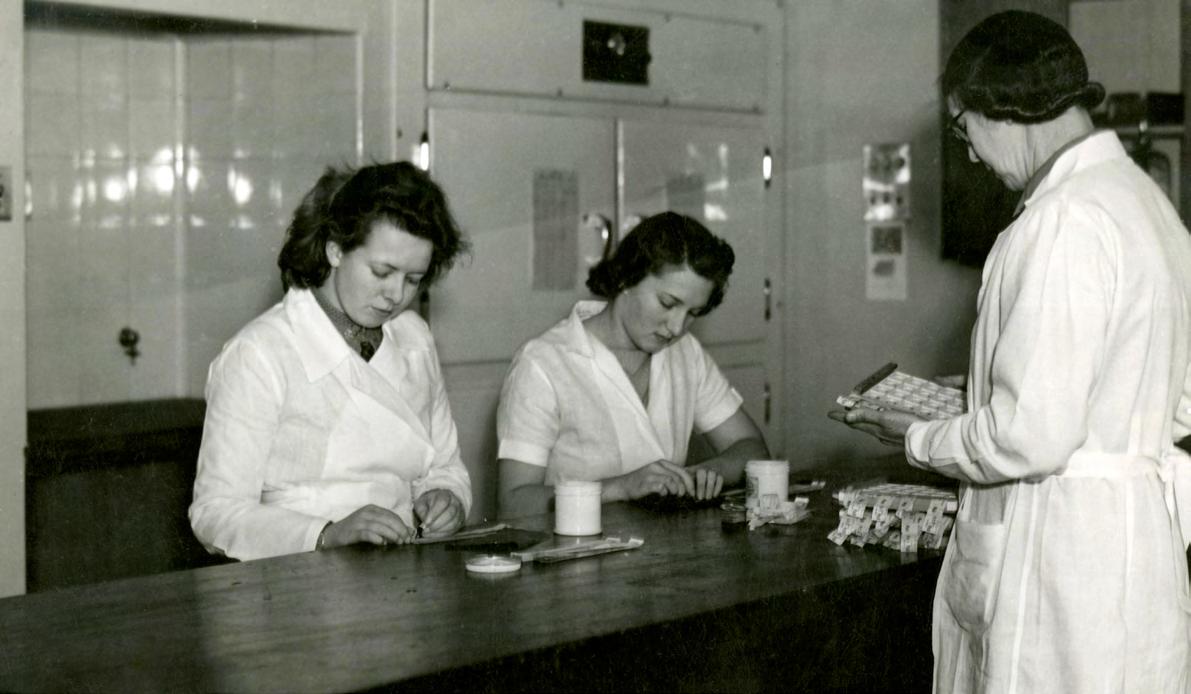
As we reflect on ANZAC Day, we share the extraordinary contributions of WEHI scientists to Australia’s war efforts dating back over a century.
Dr Gordon Clunes McKay Mathison
Born in Stanley, Victoria, Gordon Clunes McKay Mathison excelled academically at the University of Melbourne, where he pursued medicine. He later obtained a Doctor of Science from University College London. Returning to Australia in 1913, he became sub-director of clinical pathology laboratories at Melbourne Hospital (now the Royal Melbourne Hospital in Parkville), allowing him to continue his clinical research.
A distinguished scholar and compassionate caregiver, Mathison’s dedication to medicine was evident from his earliest days at the University of Melbourne to when he enlisted as a field ambulance captain in the Australian Imperial Force during World War I.
Although he tragically died before receiving the letter offering him the directorship of the Walter and Eliza Hall Institute of Medical Research (now WEHI), he is still considered its first Director.
Mathison’s selflessness on the battlefield, tending to the wounded soldiers at Gallipoli and Helles, remains a testament to his bravery and commitment. He was shot while at his aid post and died in hospital on May 18, 1915.
Fannie Williams MBE
Fannie Williams MBE was WEHI’s first female research scientist and one of the first three staff at the institute. Williams started her career as a nurse at Adelaide Children’s Hospital, quickly progressing to be sister in charge of the hospital’s Thomas Elder Laboratory. So began her life as a scientist.
In 1911, she obtained a position at the new research laboratory in pathology at Adelaide Hospital, working closely with Dr Trent Champion de Crespigny. When de Crespigny went to war in 1914, he asked Williams to join him in active service at the Australian General Hospital, where he was commanding officer.
By September 1915, she was the only Australian woman in World War I to be sent as a bacteriologist for the troops, many of whom had been wounded at Gallipoli.
On her return to Australia at war’s end, she was asked to join the staff of the new Walter and Eliza Hall Institute of Medical Research. And the firsts kept coming.
Not only was she the first woman on staff, but also the institute’s first bacteriologist and serologist and managed her own laboratory, studying infectious diseases including hydatid (tapeworm) disease, dysentery and syphilis.
Later, in the lead up to World War II, she and Dr Ian Wood established Australia’s first blood bank, having developed techniques that allowed them to store blood for later transfusion.
Williams was so highly respected that as the institute grew, she became responsible for training and managing the technicians. Among her trainees was the man who would become one of the most illustrious Australian scientists, Nobel laureate Sir Frank Macfarlane Burnet.
A month before her retirement in 1957, almost four decades after she joined the institute, Fannie Eleanor Williams finally received the public recognition she deserved, when she was awarded an MBE in the Queen’s Birthday honours.
Renowned as one of the most exceptional medical graduates from the University of Melbourne, Charles Halliley Kellaway embarked on a distinguished career marked by remarkable achievements. Following the completion of his postgraduate studies, he promptly enlisted, venturing into the Middle East shortly after the Gallipoli evacuation.
From 1915 to 1918, Kellaway served with distinction in various roles within the Australian Army Medical Corps, operating across Egypt, France – where he earned the prestigious Military Cross – and England, where his dedication led to a promotion to the rank of major in September 1918. Subsequently, he delved into four years of groundbreaking physiological research in London.
In 1923, he received the summons to assume the directorship of the esteemed Walter and Eliza Hall Institute of Medical Research in Melbourne, a position he held until 1944.
At WEHI, we believe that together, we can cure the most devasting diseases. By working collaboratively and with your support, we can solve health challenges faster than ever before.
WEHI is Australia’s leading medical research institute, with more than 100 years of world-changing medical discoveries. Millions of people live healthy lives today because of our discoveries Our research teams are globally recognised and continue to take on the world’s major health challenges, finding solutions never thought possible.


For confidential enquiries about making a donation or leaving a gift in Will to WEHI, contact Christine Diamond in our Future Giving team 03 9345 2929 | diamond.ch@wehi.edu.au www.wehi.edu.au/wills
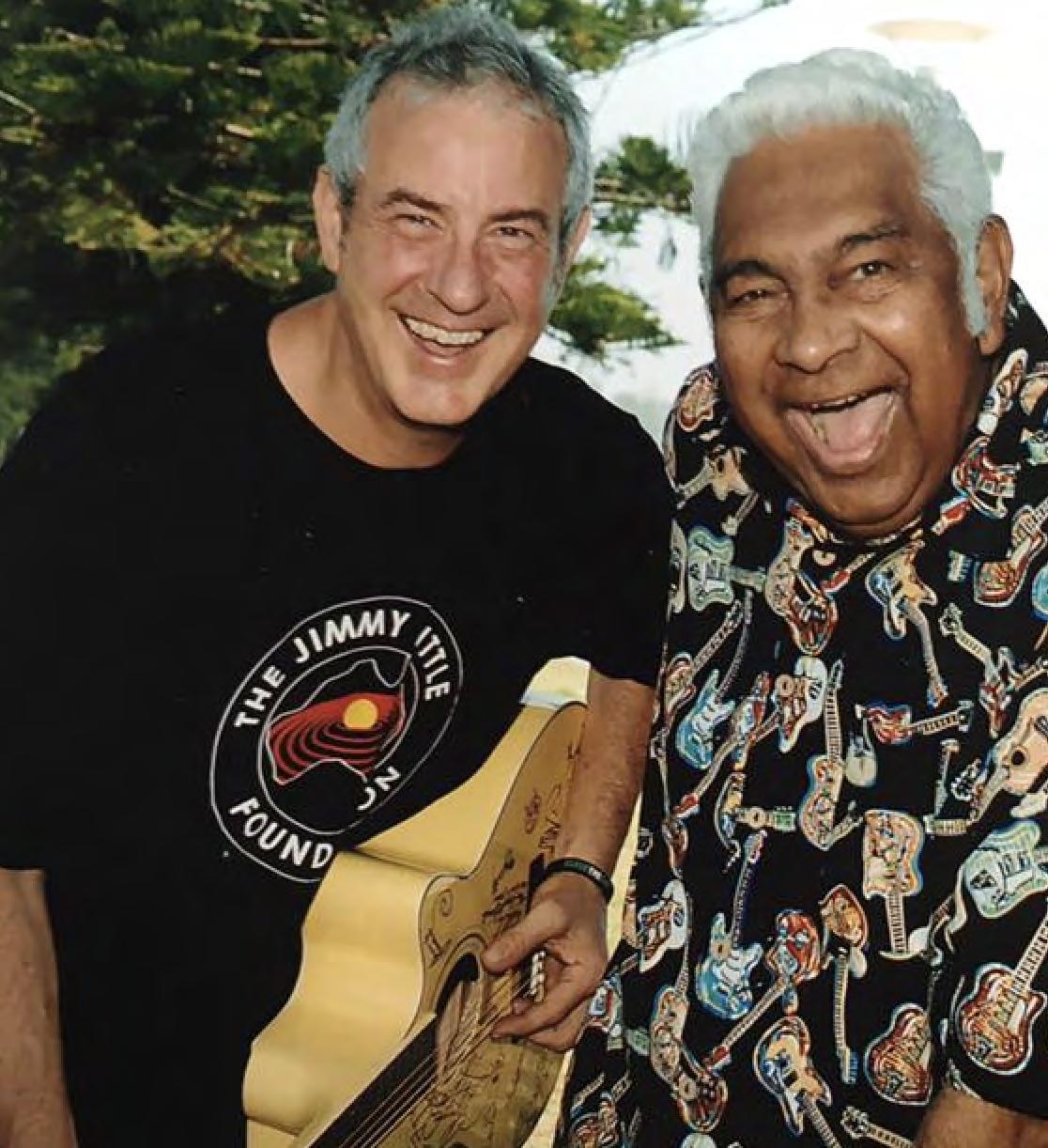
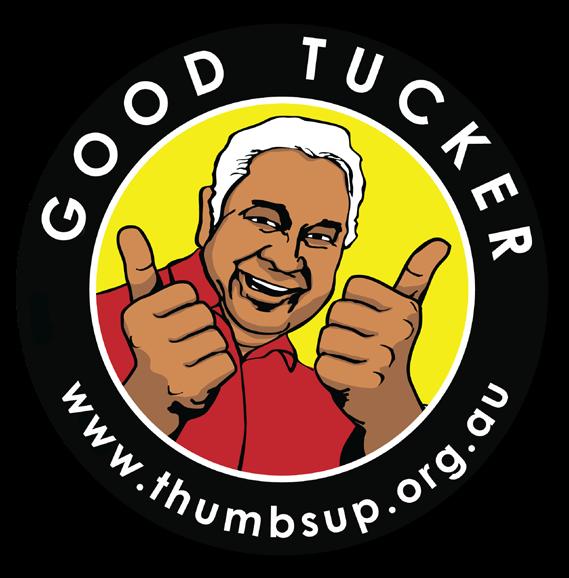
Greg T Ross: Welcome to The Last Post, Buzz, hope you’re well.
Graham “Buzz” Bidstrup: I’m good, thank you, Greg. Hello everyone. Lovely to be on the show.
GTR: Thank you so much for being here with us too, Buzz. You’ve got an amazing story. You’ve got your own story to tell as a musician and writer. You’ve got, of course, your big work with the Thumbs Up Foundation and the Jimmy Little Foundation, exemplifying good tucker, long life. Can you tell us, Graham, a little bit about Jimmy Little and how this all came into being?
GBB: Obviously, my career has been as a musician and record producer in different bands and stuff. And then in 1999, I was approached by the singer of Ganggajang, Mark Callaghan, who was working at Festival Records, and he had heard a new record by Jimmy Little called Messenger, and he wondered whether... They were looking for someone to basically look after the record when it came out, meaning do some publicity stuff, and maybe if Jimmy needed any gigs, to find some gigs for him and that sort of stuff.
And I think the record company were under the impression... It wasn’t Mark, but the record company were under the impression that it would sell a couple of thousand records and Jimmy would play a couple of gigs at his old haunts, the RSL clubs and stuff, and that’d be it. Well, in actual fact, it turned out that Triple J picked up that record and introduced Jimmy Little, who was then 62, to a completely new audience, or a Triple J audience, 18 to 30. That then catapulted Jimmy into this situation where me as his representative at the time, being basically an agent more than anything, I was fielding calls from the Livid Festival and Sydney Festival and WOMAD, and all these people wanted Jimmy Little to come and play
at their groovy festival or their gig. And most of them wanted a band.
So Jimmy said to me, “Oh, Mark said that you know how to put a band together and you’re a manager and all that sort of stuff.”
And I’d just come out of a fairly bad... Or not bad, but a management situation with a girl called Diana Anaid that I’d spent a couple of years building her career, and then for... It’s a long story, but it sort of fell apart. So I didn’t really want to manage anyone, but I said to Jimmy, “Look, I’ll help you get some gigs and I’ll put a band together for you, and I’ll find you another manager. How’s that?”
And he said, “Oh, that’d be fine.”
And we shook hands, and 13 years later, I was still his manager. Yeah, so it’s a pretty wild sort of story. And that’s how I got to be his manager. And then that brought in all of the other stuff with the foundations.
GTR: Yeah. So I guess thanks to Mark from Ganggajang for perhaps pointing you in that direction, Graham.
GBB: Absolutely. Look, I can say, and I do say to him, it changed my life, the whole situation and meeting Jimmy. I mean, I had a small amount of knowledge about Indigenous Australia that I’d picked up through hanging out with people like Yothu Yindi and Warumpi Band. I sort of knew a little bit about... You know, I knew about the ‘67 referendum and other bits and pieces, but I’d never immersed myself in Indigenous culture until I started managing Jimmy.
And of course, his new fame, his reignited fame, meant that everybody wanted a piece of Jimmy Little. I remember we talked way back, everyone from the government wanted him to be a spokesman for Indigenous literacy and numeracy and go around to schools talking to kids. Community organizations wanted Jimmy to come and visit and sing at NAIDOC events or whatever. So I found myself sitting in a hire car with Jimmy quite often, quite often, say, driving around in the Outback or up in Darwin or Uluru or wherever it might’ve been.
And as we would come into a community, Jimmy would be greeted by the elders of the community, many who he had known in the old days. Because Jimmy had been traveling out there since the sixties, since he had his hit record in ‘64. So the elders would come out, and Jimmy in his beautiful way would just turn to them
and say, “Oh, this is my friend Buzz.” Not this is my manager, or this is someone who’s working with me, he’d just say, “Here’s my friend Buzz.” And that-
GTR: It must have been a close relationship, Graham, for you and for Jimmy to be driving, because of driving is a great way of getting to know someone.
GBB: Absolutely. And as I pointed out in my book, which I’m sure we’ll talk about, my upcoming book, we could drive, say, from Alice Springs to Uluru, which would be four hours, five hours, and barely say a word to each other, or we could talk for the entire way. It sort of depended on, I guess, what mood both of us were in, or... I sort of say that to say that we could communicate without even talking.
GTR: Yes, yes, yes. That’s great. And you would feel comfortable about that too, Buzz, because I guess with people that you know well, or at least you connect with, there is sometimes no need to talk.
GBB: That’s right. And you might be, I don’t know, something like, “Oh, it looks dry.” Or, “It looks green. It’s been raining.” And then he might say something like that.
And then you look at it and you take it in and then a bit later on you might say, “Yeah, yeah, I wonder if the wildlife’s come back or if there’s any wildflowers,” or something. And then nobody would say anything for a while.
But yeah, it’s just one of those things about being comfortable with each other and communicating when you needed to. Sometimes Jim would like to sort of retreat into... I say into himself, but sort of just retreat and relax and chill out. And he could do that anywhere. He could do that in an airport lounge or he could do it backstage or wherever he needed to just retreat and gather his thoughts. It’s a beautiful thing that he taught me, just how to relax and take things in and not get too worried about anything. Jimmy was a... Yeah.
GTR: Well, that’s certainly a message that in today’s society that we could heed with great respect, the ability to disengage and become less stressed about things that perhaps in the end don’t really matter, Buzz.
GBB: Yeah. I think that’s a definite thing. He had definite opinions on certain things, and the more I got to know him, the more he would share those with me. And his faith was a big part of that. He was a Christian man, he was a believer, but he didn’t adhere to any particular brand of religion, which frustrated a lot of people, because all the different religions were trying to grab hold of-
GTR: Jimmy Little. Yeah, yeah, yeah.
GBB: Grab hold of him and say, “Oh, Jimmy’s one of us.” Whereas Jimmy
was one of them, but not particular one, you know?
GTR: Yes, I understand completely. And I guess maybe a lot of people may feel that way too. If we speak of Jimmy Little, I guess the added bonus for Buzz Bidstrup was to actually find some connection with bush tucker and the health benefits amongst Indigenous people, because we know the health figures are not good for Indigenous people, Graham. Tell us a little bit about bush tucker and how that can help. You do a lot of programs too with healthy recipes and teaching. What’s it all involve?
GBB: Well, look, it’s basically, again, it came out of these visits that I did with Jimmy in early 2000. So the first community I went to was Mutajulu, and that was the one on the other side of the rock, other side of Uluru. It used to be a car park and caravan park, but it’s now a community. It’s now the Indigenous community.
Now, the first time I went there, I looked around and I was fairly shocked, I guess, looking at the older buildings. And there were people I met where there were 10 people living in a two-bedroom house. And we’d talk to the people, the service provider, say, the health people. Jimmy at the time, to start with, was quite healthy in the sense... He didn’t tell me that he’d been told that his kidneys were a little bit suspect. I didn’t find that out until about 2002 or 2003 when his kidneys actually failed. But to start off with, we would talk to the health people and find out that the actual state of health within those communities, quite a lot of them, in fact, most of them, I would say, was well below par, well below what it should have been. Pretty much everyone was battling through not enough funding for particular health programs.
One of the things that was really apparent way back then was the incidence of diabetes, which was growing. This is way back, this is 2002, 2001. And the incidence of diabetes and also the age that Indigenous people were contracting diabetes was getting lower and lower. And we started to talk with people within the community in Alice Springs. There’s a wonderful organization called the Purple House, who basically are connected to the Kintore community, which is out near the West Australian border, sort of straight west from Alice Springs. And that was actually the community where the last nomads walked out of the desert in 1984, around there. Kiwirrkurra.
GTR: Right.
GBB: They were called Pintupi Nine. So that community, we went out to that community for an event and found out that they had many of the very famous dot painters out there, and they’d sold some paintings, bought a dialysis unit, bought a house in Alice Springs, put a dialysis unit in it, and were showing residents how to use the dialysis machine. Because in those
remote communities, if somebody had kidney failure and needed dialysis, they had to travel into Alice Springs, meaning they left their home, they left their family, they left their country, and they basically left all hope. And many people left communities to go to Alice Springs to dialyze and never came back, because they would just get very sick. And to undergo dialysis, you need to go have heart doctors. Basically everything has to be checked when you’re doing dialysis.
So we started working with them to advocate to the then Howard government for dialysis units and dialysis facilities in some major remote communities. And that was not on their agenda at all. What that government wanted were hubs, like Alice Springs, Darwin, Kalgoorlie, and Port Augusta were the main hubs of dialysis. So anyone that got dialysis in any part of basically the western northern part of Australia would be sent to a hub.
So we started working on how we could do something about that. And we raised enough money. We were given a grant by Medicines Australia, and we used half a million dollars to have a truck built. It’s called the Purple Truck, and it operates out of Alice Springs. It’s operated by the Purple House. And they take people out to community, back home from Alice Springs, and they can stay there for a week or so with the truck, and they can dialyze in the truck and reconnect to their community, then go back to Alice Springs.
Yeah. The Purple Truck. It’s a truck built by a company in Adelaide, and it was designed by the Purple House. Built by this crew in Adelaide. And our plan was to try and get 20 of these trucks built. So that was 10 million bucks that we needed. And we set about trying to put events together. We were going to have one big event at Uluru. We had all of the permissions in place except from Parks Australia, and they, at the last minute, didn’t agree to us putting people in buses, driving them through the park to the community, holding a concert, and then driving them back again. For some silly reason, we weren’t allowed to do that. I had a lot of people clued up, ready to that, teed up, ready to do that concert. Very famous people.
So when we were thinking about, okay, what can we do to help move this forward, the Howard government brought down the Intervention, and that changed the game incredibly. I remember sitting, again, in Mutajulu and watching women go to the school, grab their kids, and run into the desert, because they figured that when the people, the army came to do these so-called checks, the checks for sexual... They said that there was a whole network in these communities. Sex predators, which was based on a lie. It was based on a false story on the ABC, which has been proved. So once the Intervention-
GTR: The Indigenous people may have felt that this was a return back
to the future with their children being taken away from them.
GBB: Yeah, another stolen generation, basically. That’s kind of how it was being looked on. So we had a bit of a thing. The Jimmy Little Foundation was formed basically as an advocacy organization. And we had three wonderful trustees. We had Jeff McMullen, the journalist. We had a wonderful Indigenous doctor, Dr. Brad Murphy, who’s up in Bundaberg. And the third one was Reverend John McIntyre, who was the Archbishop of Gippsland. Unfortunately, he passed away. But those three men were instrumental in helping me plot a course for the Jimmy Little Foundation to do this advocacy.
Then when we... We had a brainwave one day. I was up at the Garma Festival with Jimmy. He’d been invited to go up there and sing. And I was obviously doing what I could to meet up with people and advocate and do whatever. A lot of my job was meeting the right people who I could talk to about different things. And I said to Jimmy, “Wouldn’t it be nice if there were some products?” Because we’d go to some stores and the only thing people could buy in the takeaway were these things, wing dings and fried food and just crap, basically. And I started talking with people about... To nutritionists. And I would go and meet the nutritionists in remote communities and in Darwin and Alice Springs, and started talking to them about, “So what about if there was a healthy breakfast snack or something that the kids could have every day, like a shake or something like that?”
And most of the nutritionists said to me, “If you could get kids to eat more fruit and vegetables and drink more water and less sugar drink.” So this is back in 2005, 6. “If you could do that, you would go a long way to helping change the statistic of kids as young as 10 and 12 who are being diagnosed as pre-diabetic.”
So I went to the CEO of ALPA, which is Arnhem Progress Association, and they run stores in the remote communities, particularly in Arnhem Land. And because I’d been in Arnhem Land, in Garma Festival, and I knew quite a few people by then who lived in different communities in Arnhem Land, we decided to work with ALPA and try and come up with just some signage. And that’s where the “good tucker, long life” came from. We worked with the Fred Hollows Foundation to use a cookbook called Kukumbat gudwan daga, which is now on our website. It’s available for free. You can download it for free. And we started working with nutritionists and just doing, I guess, basic education whenever we could.
And then we got a massive grant from Medicines Australia again, and that enabled us to set up that program, the Thumbs Up program, which basically used music and new media or video computers and things, because back then it was kind of right
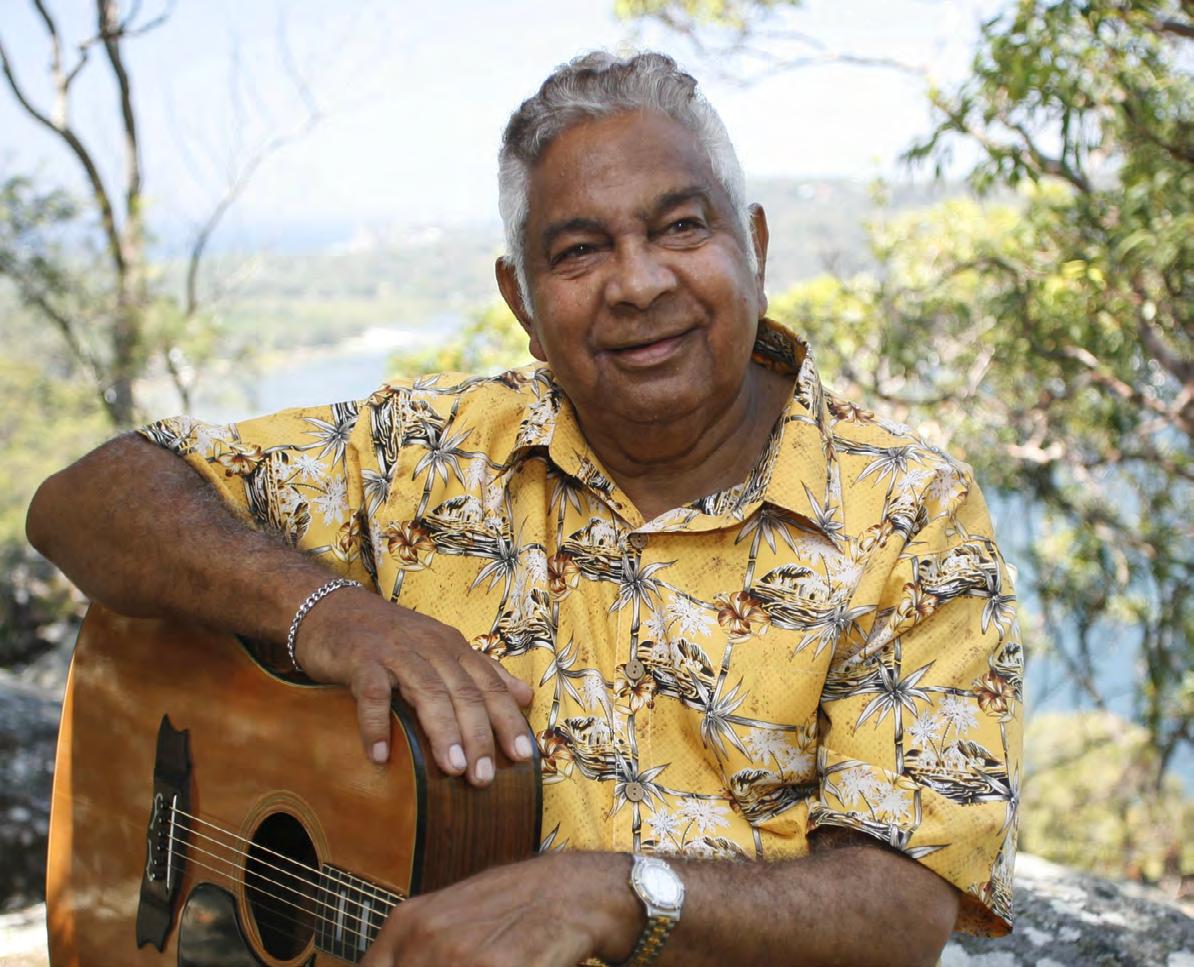
at the start of all of the social media stuff. So we started working on that. And that program has built through now to encompass other things that we’ve done with domestic violence awareness and things like fetal alcohol syndrome, FASD. And we do that by engaging with kids and young adults in communities, writing songs and making little videos with them to get them to be the ones sending the message. So they’re the ones sending them to their communities. That’s been really successful.
GTR: It’s a great thing that you’ve been doing, and Graham, a great thing you’ve been doing, obviously, to establish with Jimmy and a lot of help from some generous Australians. And I suppose, Buzz, finally, before we move on to your wonderful new book, the Jimmy Little Foundation, the Purple Truck, the Purple House, the cookbook that you can download from the website, you’ve got some amazing things happening, health recipes, teaching, the Good Tucker app, music writing workshops. So you’re really covering a lot of things.
GBB: Yeah, look, I think it all stems from the fact that we use music as the connector, as the thing, the driver
that we use to engage, particularly kids, but most people in communities. I mean, most community members are either into sport or music. And if you can find something to engage people, then you can subtly deliver little messages.
And our message is very simple, eat good food. Jimmy used to have a beautiful saying about it’s like a car, if you put bad petrol into a car, it won’t work. So why would you put bad petrol into your body? Why would you put bad fuel into your body?
GTR: And it’s all about what you accept and what you allow to penetrate through to your psyche. And I guess the more good stuff out there, and credit to you and the Jimmy Little Foundation, Thumbs Up Foundation for doing all this positive stuff, because of course, it reminds people that there is assistance out there for a better life, and a lot of good people are working behind the scenes, Graham.
GBB: Yeah, look, and one thing I’d say is that after we got started with Arnhem Land Progress Association, I went to the other organization that runs about 120 stores, called
Outback Stores, and I asked them same question. I said, “Can we work with your nutritionists and get some signage in the stores and work towards some programs to deliver some preventative health messages into the stores, into the communities where your stores are?” And they said yes.
So now we have a whole suite of signage that was designed with their nutritionists, by us and the nutritionists. And there it’s in over 150 stores across the top end now, things that work with the Good Tucker app, which is a very simple app that reads barcodes of food, and either depending on the Health Star Rating of it, and whether it’s something that you need, a core food that you need for life, or a discretionary food that you don’t actually need to sustain life, it’ll give you a thumbs rating of thumbs up if it’s a good one, thumbs sideways if it’s not so good, and thumbs down if it’s one to avoid. It’s fantastic. And that was designed with a wonderful professor, Julie Brimblecombe and Tom Wycherley from Adelaide Uni, and Julie’s from Monash. And that is a wonderful, wonderful tool that’s sort of just part of, I guess, the arsenal of things to try and help people to pick
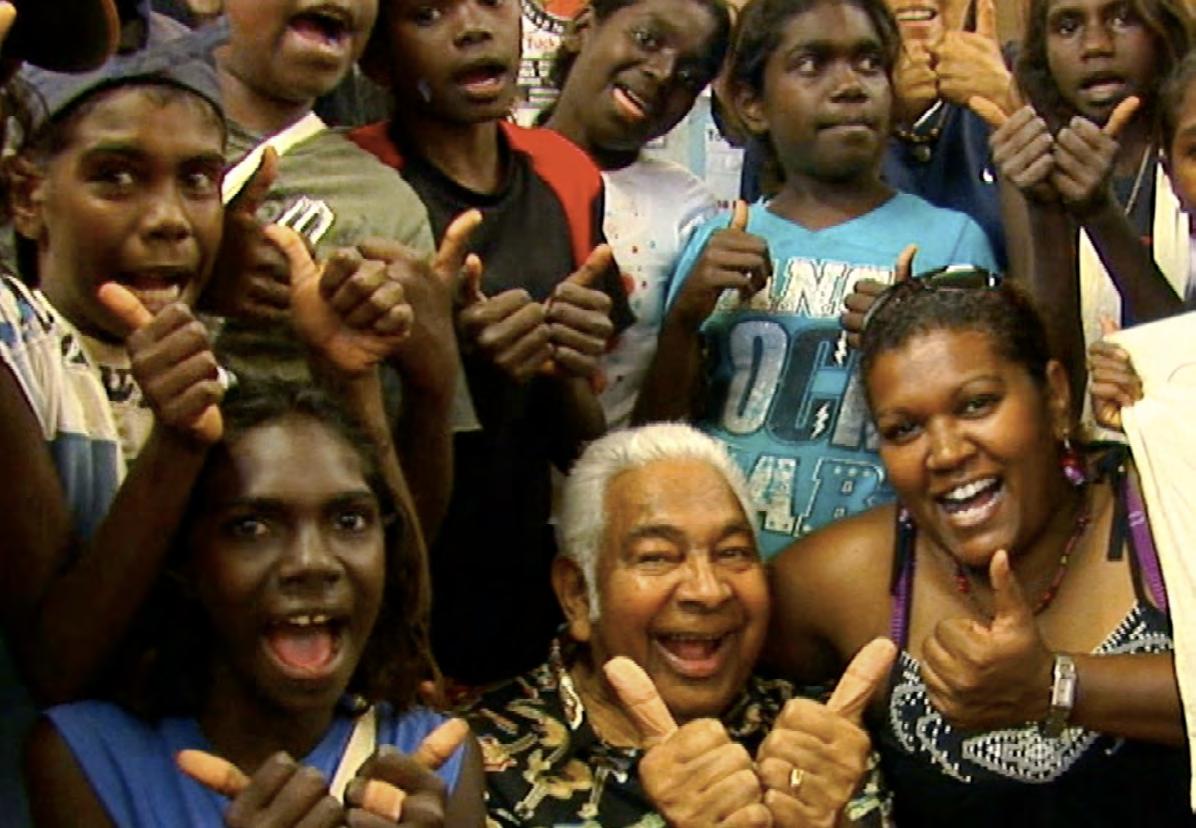
healthier food. And since we released that, I’ve had lots of discussions with Diabetes Australia. I work with them. I work in Western Sydney, with the Western Sydney Diabetes and the Western Sydney Local Health District, just because Western Sydney has actually got more diabetes than anywhere else in Australia, I think. It’s fairly really out of control.
So yeah, it’s exploded, really. It could be a massive organization, I guess, if we wanted it to be, but it’s kind of nice just being smaller and having specific things like the app, which are... The app’s free. So yeah, I guess it’s just wonderful to be able to do something positive.
GTR: Yes indeed.
GBB: And I know that it does something positive.
GTR: If there were more Australians like yourself, Graham, it would be a better society. It’s a pretty good society if you dig deep enough now. But of course, our aim, obviously, through the radio show and magazine is to give coverage to great work being done by Australians and to perhaps highlight where things could be done a little better. But you’re certainly doing a lot of things. So everyone out there, to find out more, simply go to the search engine, Thumbs Up Foundation, Jimmy Little Foundation, good tucker, long life.
GBB: Thumbsup.org.au.
GTR: Beautiful. Find out how you can help.
GBB: Thumbs Up, you can find at thumbsup.org.au.
GTR: Thumbsup.org.au. Wonderful. Now, Graham, a lot of people that knew you from a... In fact, you’re from Adelaide originally, in Highgate, and I believe we were childhood neighbors. Now, you started your musician’s life in Adelaide. Tell us a little bit about how you got started. Because you’ve got a great new book coming up, everyone, Buzz Bidstrup’s new book coming up, No Secrets, which is being published by HarperCollins. Tell us a little bit about yourself and the book.
GBB: Okay, look, I started writing down some of my experiences, because I have had 60 years now of being involved in music in one way or another. And I started writing down a few things just for my family, basically, just to find out if anyone in the future wanted to know what did old Graham do? What did he do? I just thought I’d write them down.
And then I started showing a couple of bits and pieces that I’d written to some friends of mine, and they said, “That’s really good. You should actually make it into a proper book. Don’t just sell yourself short.”
So I started doing that, basically chronicling my time. And I started playing drums when I was about 13. Well, actually a bit... I started hitting
pots and pans and that sort of stuff when I was about seven or eight. I was in the school band when I was-
GTR: Much to your parents delight.
GBB: Oh, used to get into all sorts of trouble. But played in the school drum and fife band at Highgate Primary. And you sort of went through to... I got to about 12. I was at Unley High School. I found a couple of other guys that liked playing music. We formed a little band that was kind of a blues... We played blues music, which is pretty much everyone did at the time.
GTR: What was that band?
GBB: I think at one stage we were called Simplicity Pattern. I don’t know why. Another one, A System of Sound. There were two bands that had pretty much the same members. And we used to rehearse at this hall, Mitcham Institute, and we’d rehearse there on a Sunday afternoon. And there was a band of older guys that used to rehearse after us. And one day we finished rehearsal and this bass player of the other band came up and said, “Oh, look, our drummer can’t make it today. Would you mind hanging around and just playing some drums with us so we could rehearse?”
And I said, “Oh, yeah, that’s cool.” And I was 14, and those guys... This guy was 18 and the singer was 20, and they were all much older than me. But I said, “Yeah, okay.” And I did that.
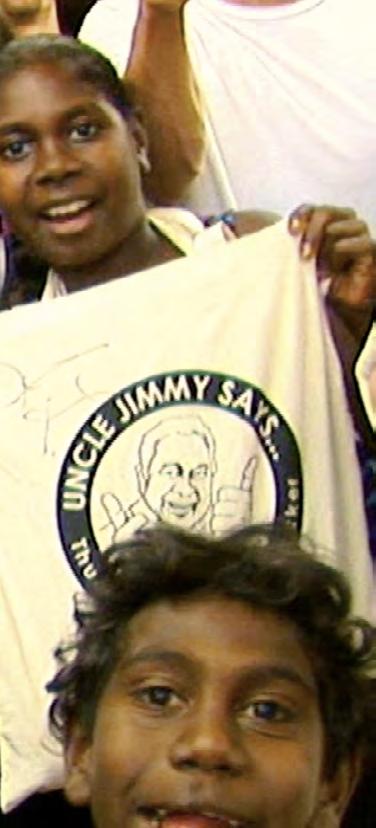
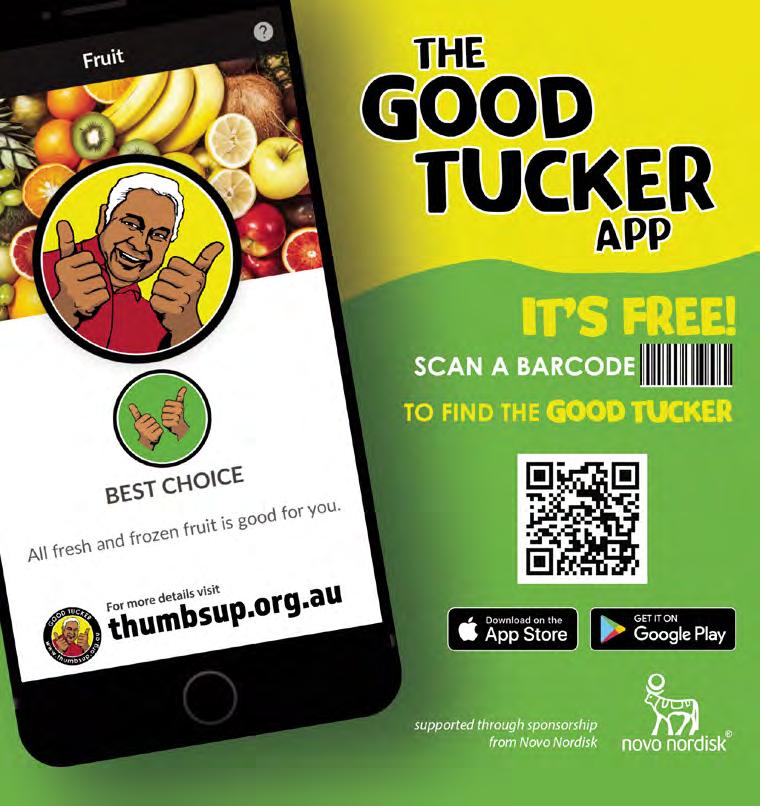
And then the next week they came up to me and said, “Would you do it again?”
And I went, “Oh yeah. I guess so.” And I did it again. And then they asked me if I wanted to be in their band. And they played a gig at that time. They were called Fahrenheit 451.
GTR: Yes. Actually, I remember hearing you practice, because we used to walk past that Hall, Graham.
GBB: You’re kidding.
GTR: It was on Victoria Terrace, I think, opposite the Girls’ Tech School.
GBB: Yeah.
GTR: Next to the barbers.
GBB: Oh, that one. Yeah, that was a different band. I think that was the band before Fahrenheit. Oh, no, no, no. Maybe it was. Gee, it’s a long time.
GTR: I know. There used to be a sign up saying, “Fahrenheit 451 practicing,” or something.
GBB: Oh, okay. Shameless promotion. So that band turned out to be quite a successful band. In fact, they would work three, four nights a week. Now for a 15... Well, at the time, I was 14. I turned 15 in the year that I joined them, which was ‘67, and I was in third
year high school and playing three, four nights a week...
GTR: That’d be right, yeah.
GBB: Yeah. Yeah. So, it was kind of-
GTR: No, that’s about the time it was. So this actually sounds like a fantastic book, out through HarperCollins, No Secrets by Graham Bidstrup. Buzz Bidstrup. What a history you’ve got, Graham. And of course No Secrets, the title of a famous Angels song, which is a band you played for.
GBB: Indeed it was. It was a song I wrote with Doc Neeson in 1979. It got released in 1980 and was our first top 10 hit. It was a great song. It sort of coincided with 1980 being my last year with The Angels. I left at the end of 1980. I played until the middle of ‘81. But yeah, I left and went on to do all sorts of other stuff. I did film music. I was in The Party Boys. I did sessions with people like Mondo Rock and Jimmy Barnes and Australian Crawl, Semantics, Reckless, all that kind of stuff.
And the book really goes through, I guess, that period of time, and I talk a bit about what it was like in the studios, what it was like playing, some of the things that people have, I guess, would be interested in knowing about being the life of a musician and a producer, because I produced a lot of records as well.
GTR: Yeah, you’ve done some great stuff. You’ve done some great stuff, Buzz. And if you want to read a fantastic book about life, what it’s like to be a muso in Australia and write some great songs and play in some great bands, then get out and buy No Secrets, which is coming out through HarperCollins, the story and author Graham “Buzz” Bidstrup. We may have to do another chat just to talk more about your book, but thanks so much for being part of this on the radio show, speaking about the amazing work of the Jimmy Little Foundation and your involvement in that. And for the health of all Indigenous people, a big thumbs up to you, Graham.
GBB: Thank you.
GTR: And also for news on your book, No Secrets. We look forward to reading it.
GBB: Okay. I just should let people know that it’s not until Father’s Day, so September it’s coming out. September this year.
GTR: Yep. Get out and buy No Secrets.
GBB: Wonderful. Thank you so much. It’s been lovely to talk to you, Greg, as always.
GTR: Thank you so much, Buzz. It’s been an absolute pleasure.
As the sun rises on a new season of remembrance and renewal, Australia is witnessing the launch of a gamechanging initiative that’s more than just support — it’s about hope, unity, and healing.
Behind every brave veteran, military personnel transitioning and every courageous first responder is a family navigating unseen battles. For too long, these families have faced isolation, confusion, and a lack of coordinated support. But now, that’s changing.
At the heart of this transformation is Resolute Ready — a global digital hub built from the ground up by people who have lived the reality of servicerelated trauma. And leading the charge is founder Lidia Faranda Hall, who turned her personal experience into a powerful platform that connects, educates, and empowers.
Born From Lived Experience. Built For Global Impact.
The Resolute Ready Virtual Hub is more than a website — it’s a lifeline. Designed to be intuitive, accessible, and immediate, the Hub connects individuals to services tailored to their postcode, needs, and stage of life.
Whether someone is in crisis or simply seeking guidance, the Hub delivers 24/7 access. Since launching in April 2023, it has organically reached 34,000+ page views across 29 countries, helping families find urgent care and trusted support.
As Lidia shares:
“When you don’t know where to turn, connection becomes intervention.”
It also supports one of life’s most complex transitions: leaving service or the workforce and entering civilian life. With accessible information around housing, employment, education, and health, Resolute Ready empowers people to live long, well-lived lives with purpose, stability, and hope.
Launching a Network of Care: The Digital Education Backpack funded by the Australian Government.
We would like to acknowledge our major sponsor K39 Consulting partners, Partners of Veterans Association, MercyMe Marketing, Life FM, CFRP - Children and Family Resilience Programs, The Last Post Magazine and Podcast, NamecorpBusiness Name Registration Australia, The Insight Centre, Defence Kidz, Bench Studio, Veterans View (USA) and The Volt Magazine (UK)
In tandem with the Hub, the Digital Education Backpack is a national first — equipping schools to better support students impacted by service trauma. Aligned with national education standards, the Backpack offers practical strategies for teachers to recognise, respond to, and collaborate around trauma and support children and young adults transitioning in the classroom.
It’s more than a tool — it’s a symbol of care and inclusion, bringing the conversation into our schools and ensuring no child is left unseen.
“The launch of Resolute Ready’s Digital Education Backpack alongside the Virtual Hub today is a step toward creating a network of care that empowers individuals and families.”
At its core, Resolute Ready holds a powerful mission:
To co-design solutions that bring lasting change—solutions that are rooted in partnership, collaboration, and shared wisdom.
This isn’t just about one platform or program — it’s about reimagining the entire support ecosystem. One that unites schools, service providers, healthcare, governments, and families into a connected force for good.
As Sally Anne Ward, a lived experience advocate, beautifully says:
“I would like to see everyone supporting the hub, supporting each other, supporting other service providers, communicating, collaborating, and connecting — once united, anything is possible.”

Mental health issues are on the rise, particularly among those who serve and those who stand beside them. Veterans, first responders, their spouses, and children often carry invisible burdens.
But change is possible when support is proactive, personal, and accessible.
Resolute Ready proves that connection isn’t a luxury — it’s a lifesaving necessity. And every time someone accesses help, every time a teacher opens the Backpack and recognises a struggling student, we move closer to a future where no one walks alone.
Building a Brighter Tomorrow — Together
With the continued support of Defence leaders, education departments, mental health providers, and everyday citizens, the momentum behind Resolute Ready is growing. It’s not just a digital project — it’s a movement.
This ANZAC tribute, we honour the fallen. But we also lift the living — and we do it together.
Because when connection becomes intervention, when education becomes empowerment,and when collaboration becomes the norm — healing happens.
This progress would not be possible without the Resolute Ready team — a dedicated group of advisors, strategists, communicators, and tech developers who work tirelessly behind the scenes. Their compassion, experience, and belief in this mission are what drive this initiative forward every single day.
To the team, thank you.
You are the engine behind every story of support, every connection made, and every life touched.
It is a privilege to work alongside Resolute Ready Directors Phil Essam and Susan Hannigan.
LIDIA FARANDA-HALL Founder and Director

Resolute Ready is more than a digital project — it’s a movement of courage, compassion, and collaboration And we can’t do it alone.
We invite:
• Community organisations to link arms with us.
• Government and corporate leaders to invest in solutions that work.
• Educators and mental health providers to bring the Hub and Backpack into everyday practice.
• Families and individuals to explore, share, and support the mission.
• Submit your service
Together, we can stop the cycle of trauma before it starts. Together, we can build a future where care is coordinated, families are supported, and healing is possible.
Explore the Virtual Hub
Share the Digital Education Backpack
Become a partner or advocate
Share the message. Start the movement. Be part of the change.
Visit www.resoluteready.com
Follow us on social media @ResoluteReady
And remember:
One Stop. One Call. One Life. Connection changes everything.
Global Voices Unite to Support Veteran and First Responder Families.
Resolute Ready National Launch introduced the Digital Education Backpack funded by the Australian Government. We thank the Department of Veterans’ Affairs for their support.
In a powerful show of unity, advocacy, and innovation, a distinguished group of leaders, researchers, policymakers, and community advocates gathered to shine a light on the experiences of military, veteran, and first responder families.
Masterfully hosted by Keith Hong, the event celebrated collaboration across sectors and borders to drive forward the wellbeing of those who serve and their families.
Hon. Minister David Harris MP and Ms. Robyn Preston MP were present in person, representing a strong commitment from government, alongside impactful video messages from Hon. Mark Butler MP, Hon. Jo Palmer MLC, Mr. Matt Burnell MP, Connie Karras (International Ambassador, Chicago, USA), Fiona McMillan, and Sally-Anne Ward, Resolute Ready’s Community Engagement Liaison.
Among the standout voices were Resolute Ready Ambassadors:
• Warrant Officer Ken Robertson, OAM – Senior Enlisted Advisor and Ambassador for Defence
• Dr. Kay Danes, OAM – International Ambassador
• Derrick McManus – Ambassador for Police
Gwen Cherne, Veterans Family Advocate Commissioner, shared powerful insights as a passionate advocate for the families behind the uniform.
A cornerstone of the event was the Digital Education Backpack — a visionary initiative designed to empower children in military and emergency services families through targeted educational resources. This international effort brought together a brilliant team of researchers and educators:
• Dr. Anna Denejkina – Associate Director, The Insight Centre, NSW, Australia
• Dr. Marg Rogers – Senior Lecturer in Education, University of New England; Research Fellow, Manna Institute
• Professor Nicola Fear, CBE – King’s College London, UK
• Dr. Heidi Cramm – Associate Professor, Queen’s University, and Families Advisor to the Canadian Institute for Military and Veteran Health Research
• Dr. Karen May – Head of THRF Group – MESHA
• Professor Sharon Lawn – College of Medicine and Public Health; Lived Experience & Co-Design Lead, Open Door Initiative at Flinders University
• Dr. Vanessa M. Jacoby – Associate Professor, Psychiatry and Behavioral Sciences, UT Health San Antonio
• Dr. Amanda Eng – Senior Research Officer, Centre for Public Health Research, Massey University, NZ
• Ms. Shanika Jayasinghe – Centre for Public Health Research, Massey University, NZ Together, these thought leaders and changemakers are building a legacy of support — ensuring no family is left behind, and every voice is heard.

Gallipoli Medical Research (GMR) is a leading independent research institute located in Brisbane, Queensland. We strive to enrich and restore lives through pioneering biopsychosocial research that transcends the laboratory to deliver meaningful and tangible real-world outcomes.
Based at the former war and repatriation hospital, now Greenslopes Private Hospital, GMR has built a reputation in Australia and internationally for leading innovative medical research, and creating tools and programs that make a genuine difference in people’s lives.
Understanding veterans and the veteran family
GMR’s veteran research aims to understand the unique physical and mental health impact of military service, to support current and ex-service personnel and their families.
We understand that when a veteran serves, the whole family serves. Families are vital to veteran wellbeing yet face their own challenges such as frequent relocations, extended separations, and trauma. Military service can impact various family members in relation to social connectedness, employment, and education.
When a veteran leaves Defence, transition can be associated with a loss of military identity and can change family dynamics. Family members often feel overlooked and unsure how to support each other. Caregivers of ill or injured veterans can also feel overwhelmed and can experience social isolation.
Current knowledge gaps and the power of research
There is currently limited knowledge about the economic costs of caregiving on Australian veteran families related to providing care, loss of income, and employment instability.
Limited understanding of family member experiences during the military-civilian transition means a lack of tailored supports for transitioning families.
Research is crucial to understanding veteran families’ needs and improving policies and support.
Call for participants for veteran mental health research projects
GMR, in partnership with RSL Queensland, is inviting veterans and their families to take part in a series of research studies focusing on:
• Families and the military-civilian transition: understanding veteran and family member experiences of the militarycivilian transition to co-design practical support resources.
• Spill-over effects of informal caregiving: investigating the costs and health and wellbeing impacts of informal care for caregivers and adolescents from veteran families.
Through research we can create real and lasting solutions to the health, wellbeing and relationship challenges facing our veterans and their families.
To participate in a research study and to find out more go to www.gallipoliresearch.com.au/research/veteran
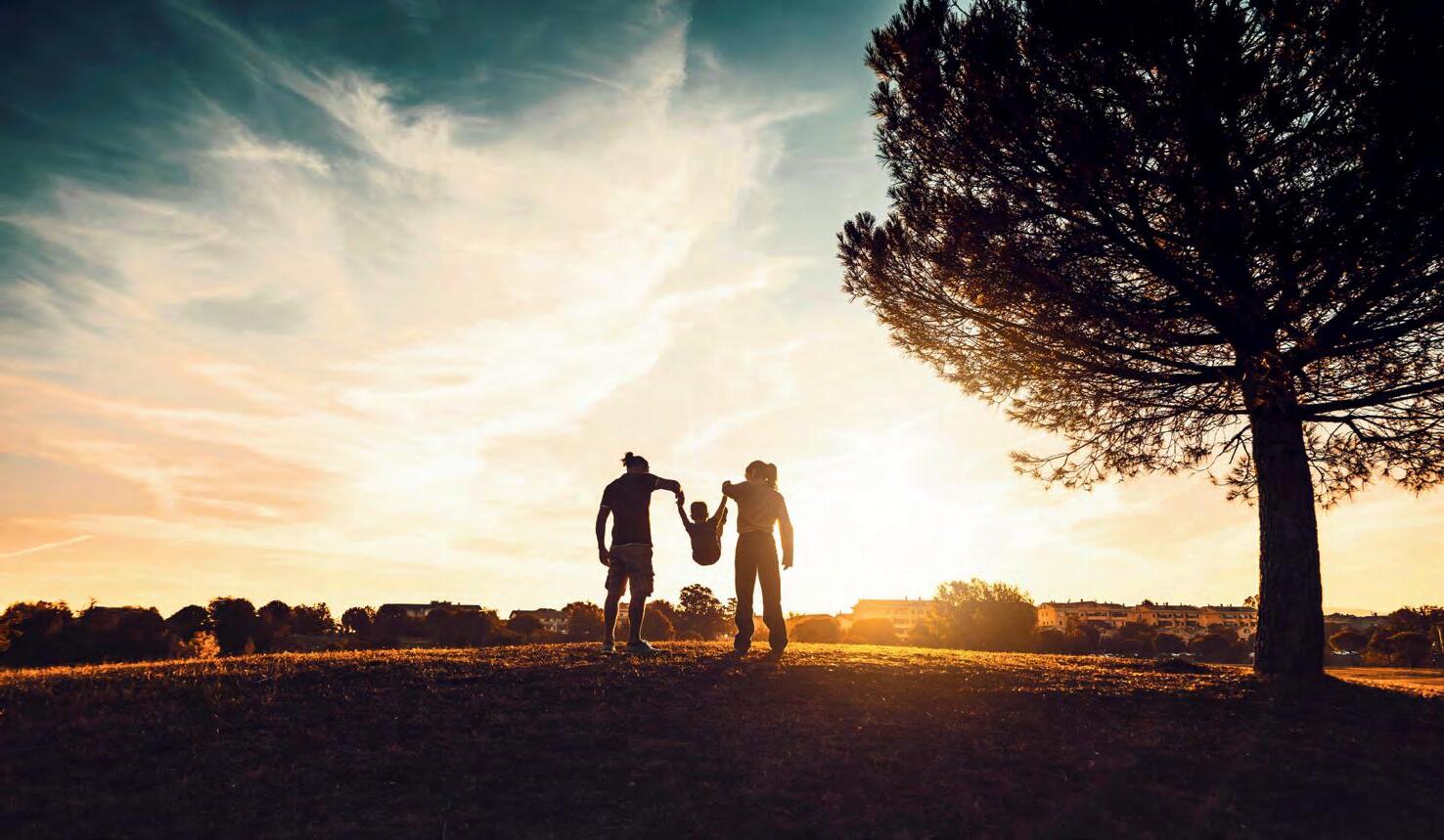
Help us better support the lives of current Defence members, veterans, and their families via research that can assist improving transition to civilian life
SURVEY:
Help us understand the experiences and needs of families transitioning from military to civilian life
DDVA HREC Protocol 562-23
If you are:
WORKSHOP: Help us design practical resources for families transitioning from military to civilian life
DDVA HREC Protocol 582-24
a veteran who has transitioned within the last 10 y ears family of a current Defence member who is transitioning or a veteran (who has transitioned in the last 10 years), including:
parents partners (including ex-partners for workshops only) adolescents (12-18 years)
a professional who works with military and/or veteran families (workshops only)
Please complete the 15-30 minute survey here:
Please register to attend an online or in-person 2-hour workshop here:
Help us understand the costs, and health and wellbeing impacts of informal care in veteran families
HREC Protocol 600-24
If you are:
an adult who has been in a caregiver role to an ill or injured ADF family member for more than two weeks in the past six months, OR aged 12-18 years and from a family with such a caregiver
Please complete the 10-30 minute survey here:
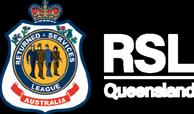

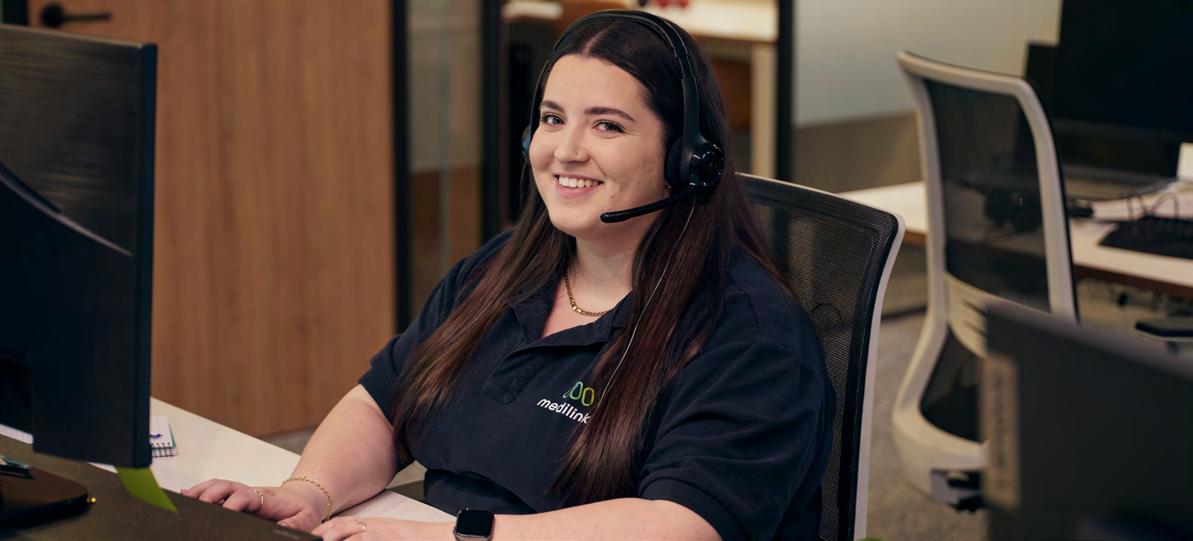
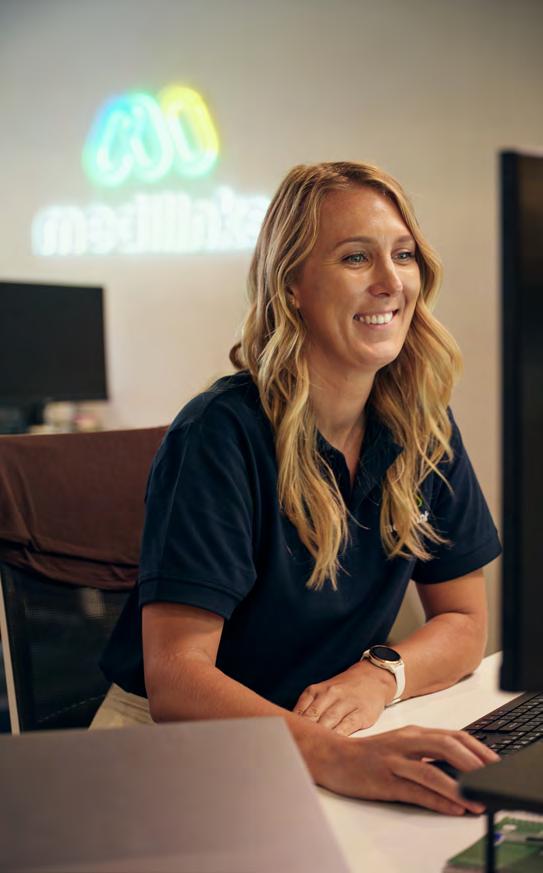
For many veterans, the end of service is not the end of the fight.
Long after the uniform is folded away, the invisible wounds of war often remain. These challenges can be difficult to name, let alone navigate through the complex systems meant to help.
Founded by veterans, for veterans, Medilinks is a unique provider of psychiatric support – specialising in assessments for DVA mental health compensation claims, with no cost to the veteran.
With secure telehealth services available nationwide, veterans can speak with a psychiatrist from home – whether they’re in a major city or a quiet regional town. It’s a practical solution that removes barriers to care, ensuring no veteran is left behind simply because of where they live.
Medilinks is veteran-owned and operated, with a team that brings over 85 years of combined full-time ADF service to the table. But their commitment doesn’t stop there – Medilinks is also proud to be a veteran employer of choice, actively recruiting not just veterans, but also veteran spouses.
That lived experience runs deep across the organisation, shaping every touchpoint of the service. From how calls are answered to how assessments are delivered, there’s a shared understanding that builds trust. It’s not about ticking boxes – it’s about providing care that feels familiar, respectful, and genuinely informed by military life.
This Anzac Day, we remember the courage and sacrifices of our veterans. But remembrance should also call us to action— to ensure the support they need is not only available but delivered with dignity and understanding.
Medilinks is proud to stand behind those who’ve served, offering a clear path forward for veterans navigating DVA mental health compensation claims. With expert psychiatric assessments, a team grounded in lived experience, and a genuine commitment to veteran well-being, Medilinks helps ensure that no one walks this path alone.

Medilinks offers specialised psychiatric assessment services tailored to veterans seeking assistance with their DVA mental health compensation claims.
Due to difficulties in finding suitable psychiatrists, many veterans face lengthy wait times and suboptimal outcomes, which leads to delays in accessing rehabilitation and compensation.
To address this challenge, Medilinks has formed an expert team of dedicated psychiatrists and veterans committed to providing the care and support veterans rightfully deserve.
Get in touch with us for a free, no obligation chat with our expert team.
medilinks.com.au

DVA Psychiatric Assessments and Reports
Veterans Supporting Veterans
Expert Team of Psychiatrists
Veteran Owned
Telehealth Consultations
No Out of Pocket Expense For Veterans


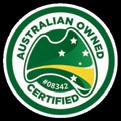

Scan with your phone camera to


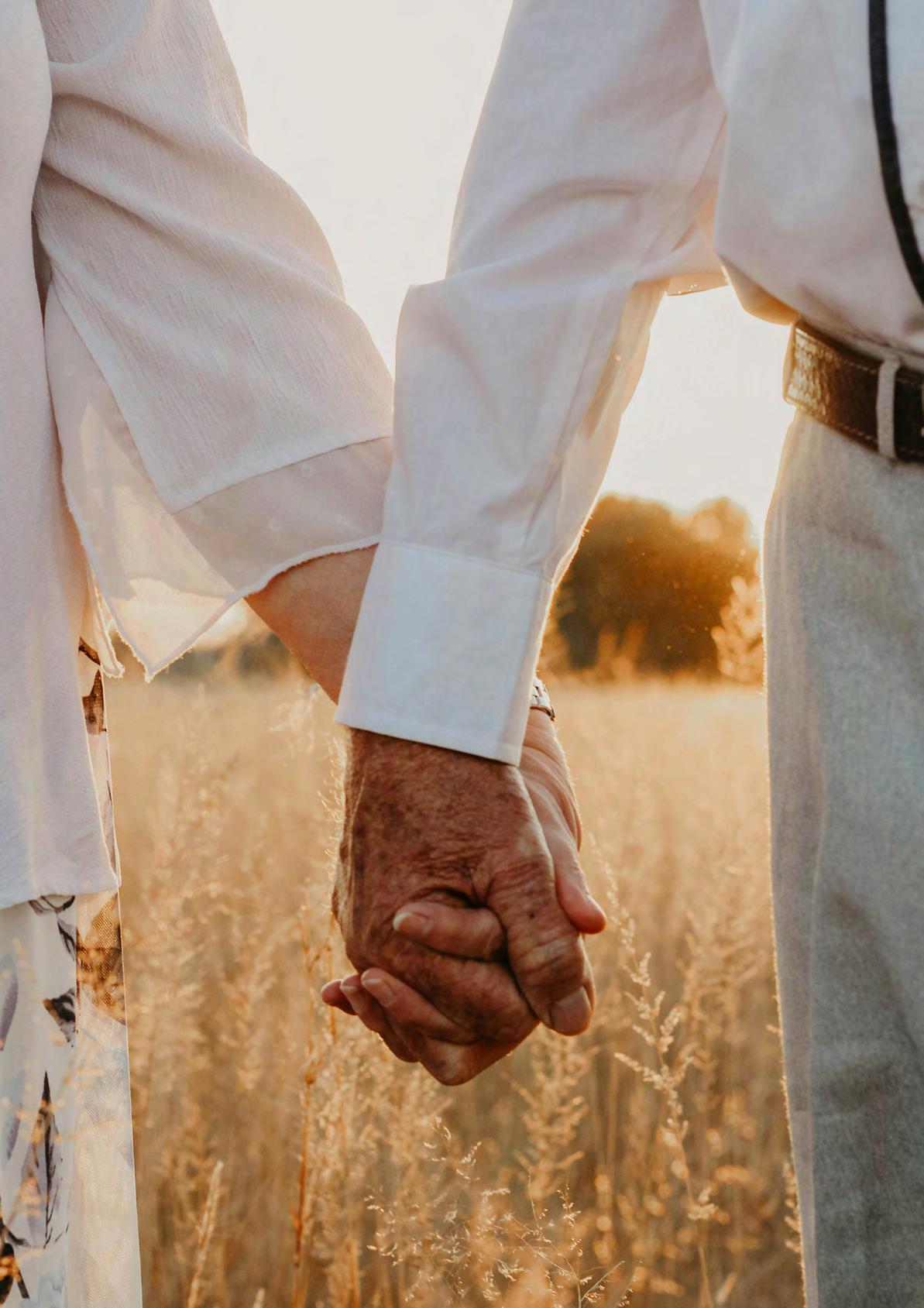
It is important for us to write, to record before we’re knocked down with a feather.
Try drawing a clock.
Try eating.
Try recognising the one’s you loved.
Try recognising photos of yourself. Where your partner has taken a pledge to stick with you but finds it increasingly difficult. Possibly the worst death of all, the slow death. Where a loss of independence becomes the new normal and where decisions have to be made about moving on. Where every day becomes harder, yet easier , a movie in itself, stuck in the dialogue of forgetfulness.


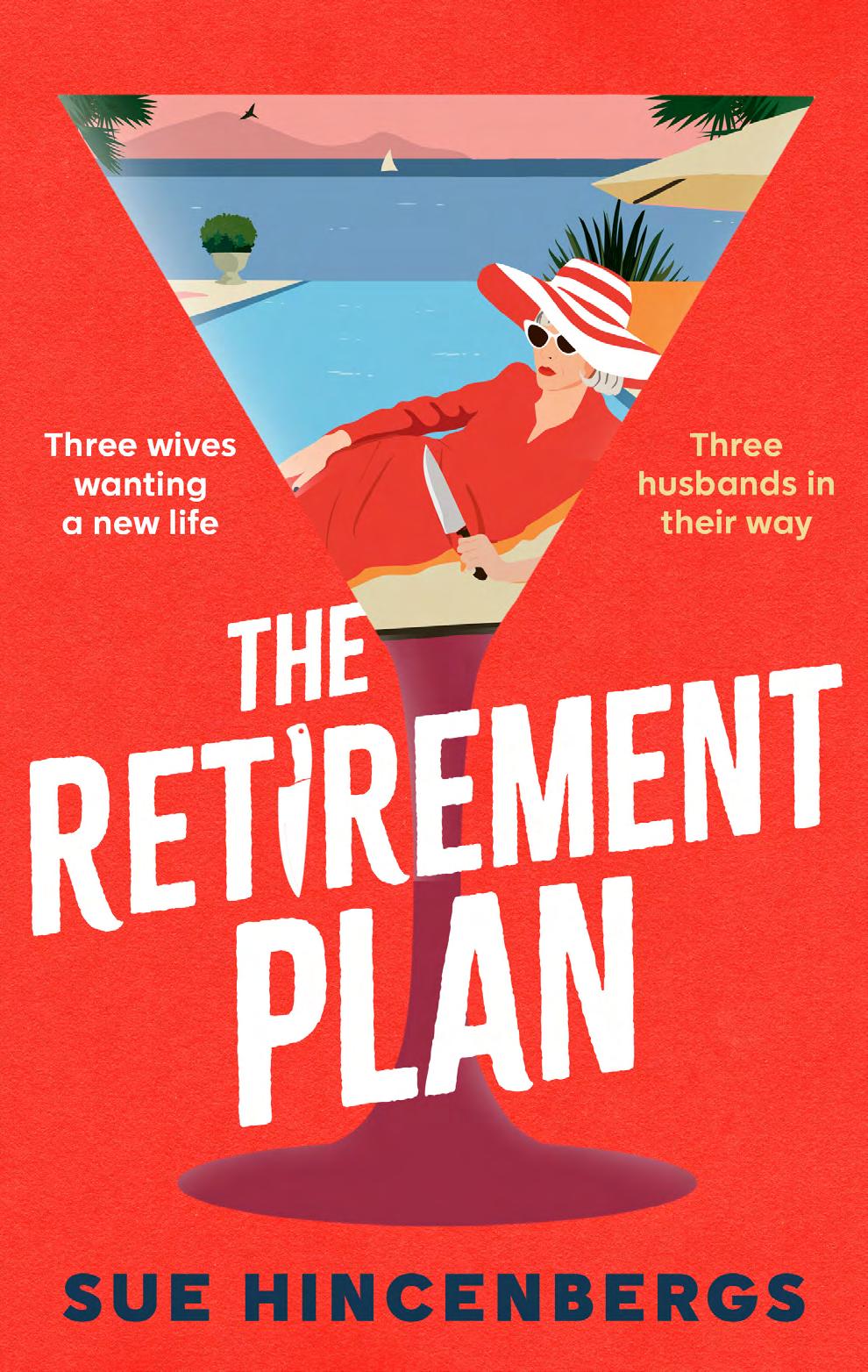
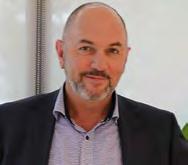
Courage, endurance, mateship—values synonymous with the ANZAC spirit, and ones Jules Hohnen has in abundance.
I met Jules only a few years ago when he was going through some tough times and we’ve been mates since. His story is a powerful one and I’m thrilled that Jules has recently joined forces with us at CSC’s Vet Hub to share his wisdom and help support the financial wellbeing of our community.
I hope you enjoy his reflections on what ANZAC Day means to him and a little of what he’s doing now for veterans and families.
Dave Wilton National Manager, Defence and Veterans Liaison
As a youngster, Jules Hohnen recalls being pulled from bed on cold, dark ANZAC Day mornings to go and watch older people marching with their medals. Many years, and almost 18 years of service later, he is now one of those people –enmeshed in a tradition of reflection, respect and reconnection with military mates.
The camaraderie among these mates held no greater importance than when illness led to Jules’ medical transition from the ADF. He recalls stories of colleagues driving from Brisbane to Canberra to surprise him in hospital, and the supportive lifeline of social media chat groups and in-person check-ins during some of his darkest hours.
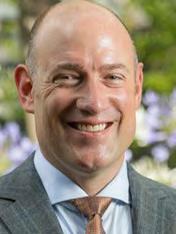
‘My former Commanding Officer (CO) from Afghanistan used to visit me three nights a week in hospital on the way home from work. He was seconded to a government department so was in a suit, rather than uniform,’ he recalls.
‘My mother asked me who the nice man in a suit was and when I mentioned he was my former CO from Afghanistan she asked me why he was visiting –I told her it was because he was a top bloke.’
While mateship and camaraderie helped Jules navigate the emotional side of leaving the ADF, sound decisions he had made as a young soldier helped navigate the financials. He wants to ensure others ‘don’t get to 60 and realise they’ve missed the boat financially,’ and is working with CSC’s Vets Hub to share his insights.
And ANZAC Day 2025? It’s safe to say Jules won’t need to be pulled out of bed. You’ll likely find him reconnecting with mates at a café near the Australian War Memorial before attending the National Service.
Hear more from Jules and other veterans and strengthen the financial wellbeing of you and your family. Join the Vets Hub community.
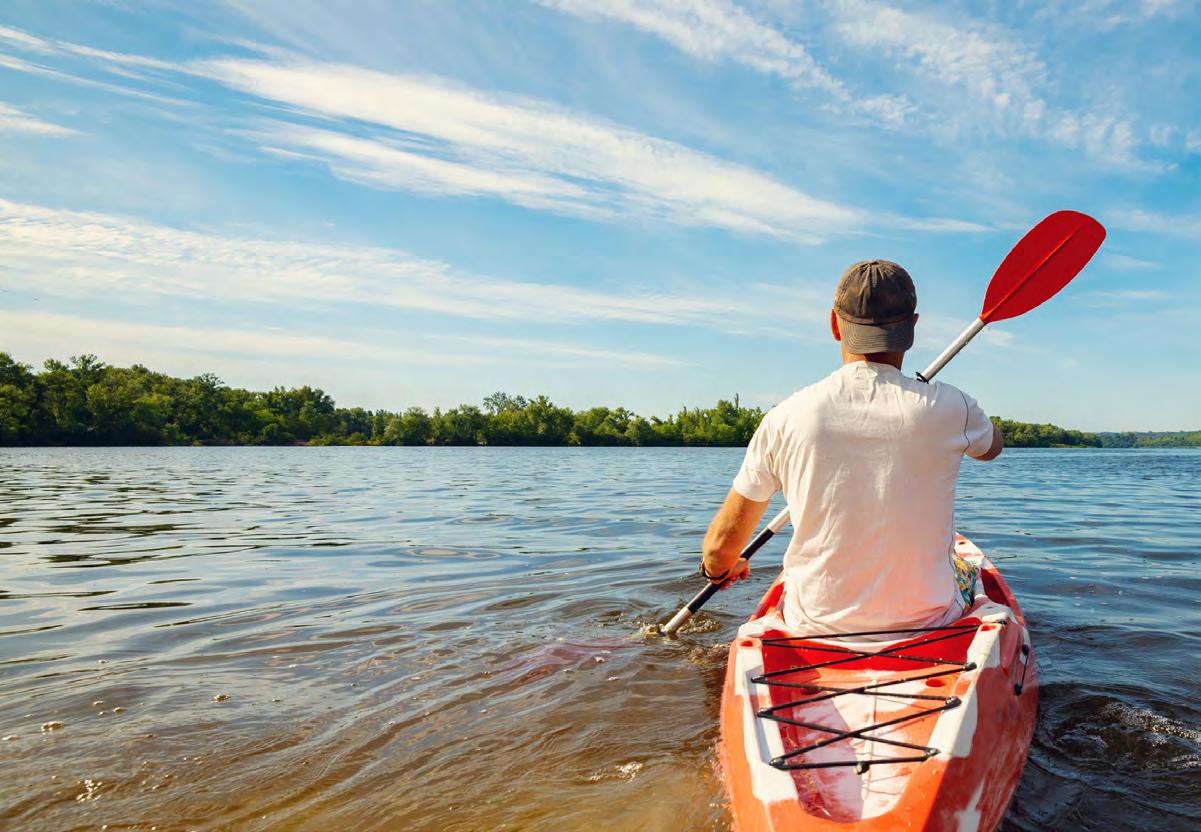
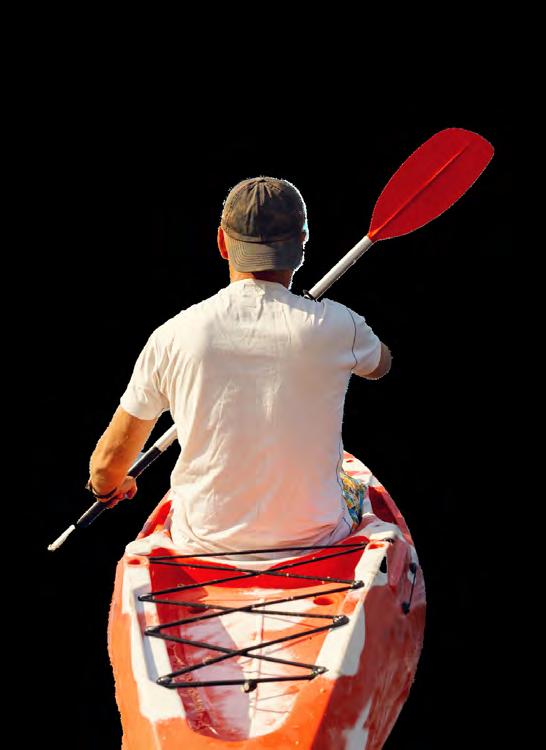

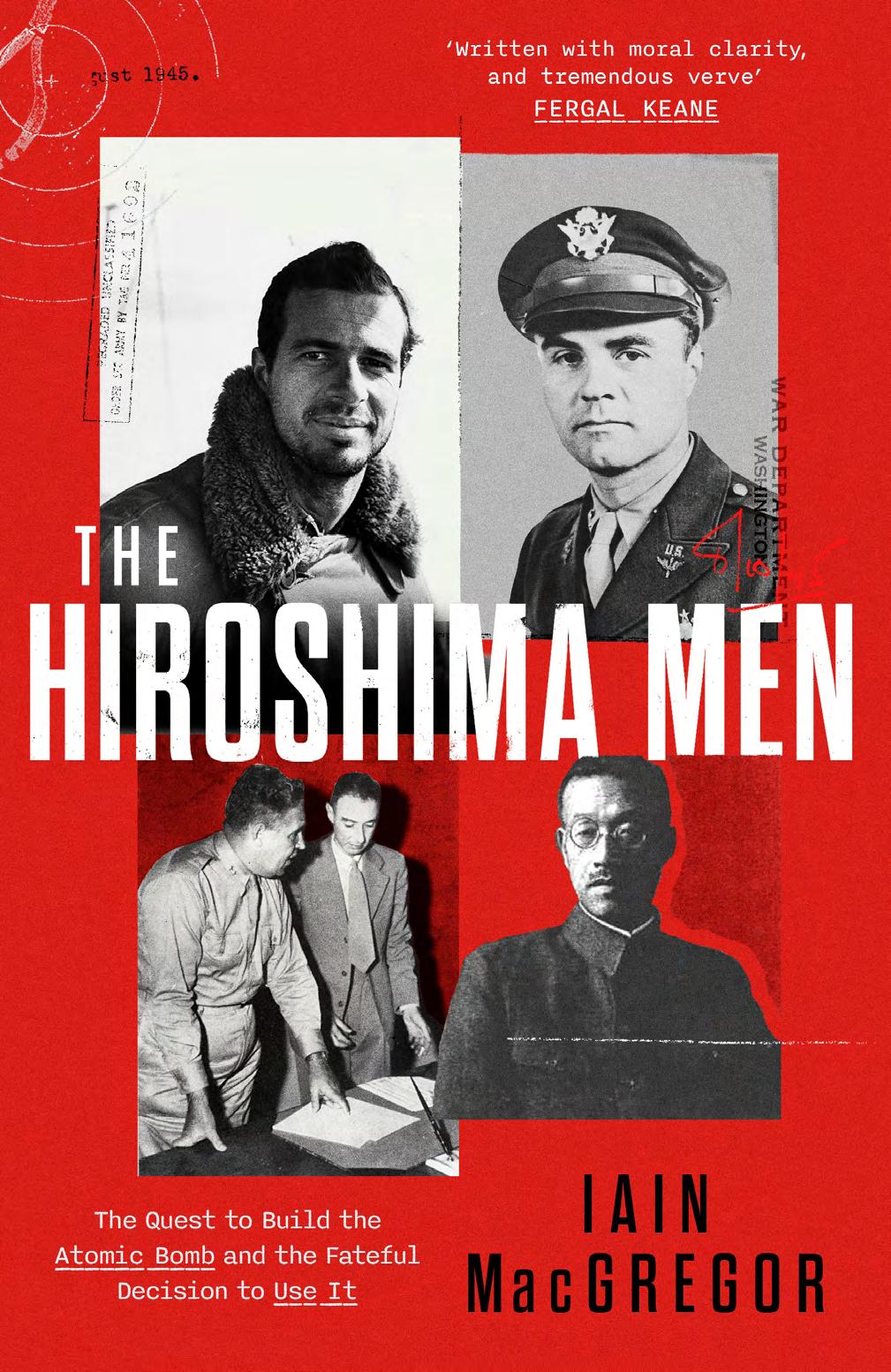


The West Australian Goldfields region has a long and proud connection with the Australian military forces. This year, as we celebrate 130 years of local government in Kalgoorlie, we reflect on the numerous members of our local council who have served our country.
James Berry, a mining engineer by profession, was elected to the Kalgoorlie Municipal Council in November 1915.
Seeing it as his duty of enlist, James Berry joined the Australian Imperial Force in March 1916 and by the end of the year, as a member of the 3rd Tunnelling Company, was in the thick of the fighting near Lens, in the Pas-de-Calais department in Northern France.
During 1917 Berry was awarded the Military Medal for his courage and persistence in rescuing a British soldier who was buried during a mortar attack.
In one letter home, Berry described the Battle of Vimy Ridge in April 1917:
“They who have all the winter faced the Hun, stand now straining at the leash to charge forward toward the enemy. We are upon the edge of the war storm of artillery. The whole air is in motion with the continual hail of metal, and the darkness is lit up by the flash of artillery and the bursting of shells.”
Sadly, in July of 1917, James Berry himself was killed by the explosion of a shell that also took the lives of three other Australian Soldiers.
Robert Donald McKenzie made a comfortable fortune operating a general store in Kalgoorlie during the goldrush and his business grew to occupy a large building in a prominent location on the main street of Kalgoorlie.
McKenzie was mayor of Kalgoorlie from 1896 to 1898 and by the time the First World War began in 1914, had been an elected member of the West Australian Legislative Council for ten years.
At the age of 51, McKenzie was too old to enlist for war service, but ‘…considered in such a national crisis all who could help, should.’
True to his word, in 1916 McKenzie travelled to France, purchased an ambulance and drove it in aid of the Red Cross, often working 13-hour shifts transporting wounded men from Le Harve to aid stations and field hospitals.
Not only did McKenzie contribute, but also his wife and one of his daughters volunteered in hospitals around London, working daily as house maids, cooks and washing up.
During the First World War, it was seen as a man’s duty to serve the British Empire, no matter his station in life. The Kalgoorlie Municipal Council counted several members and former members among those who played a role in the conflict.
James Berry and Robert McKenzie were wealthy, professional men who served with distinction in different roles during the war. As we celebrate 130 years of local government in Kalgoorlie this year, we remember them.
Lest We Forget.

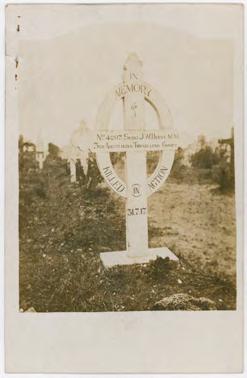
The Goldfields Battalion of Infantry was formed in Western Australia in June 1900, as a response to increasing militarism during the Boer War, with the Kalgoorlie Mayor, John Fimister declaring “the time has arrived when every man should learn to shoot”.
Eighty men joined the new unit at the time of its formation in Kalgoorlie and the initiative found enough support in outlying towns that additional companies were able to be raised at Boulder, Coolgardie, Kanowna, Broad Arrow and Menzies.
The Goldfields Battalion was established for ‘home defence’ and thus at least 50 members gradually departed to join contingents of colonial (and later Australian) mounted infantry to fight in South Africa. In recognition of this service, the Goldfields Battalion was awarded the King’s Banner in 1911.
Although the Goldfields Battalion (which underwent several name changes over its existence) began as an entirely volunteer force, from January 1911 its ranks swelled as males aged between 12 and 24 were trained under the Australian Government’s compulsory Universal Service Scheme. Sharebroker and former mayor of Boulder, James Lyon Johnston assumed command as the unit was grappling with this large influx of young adults and boy cadets.
The Goldfields’ military unit became an important recreational and social outlet for local men. Regular activities included concerts, parades, military exercises in the surrounding bush, drill, rifle shooting and company dinners. Annual ‘Challenge Cup’ competitions pitted the different Goldfields companies against each other, provoking fierce competition. Valuable experience gained during this period equipped local soldiers to serve with distinction at Gallipoli and on the Western Front during the First World War.
Post First World War, the unit was renamed to perpetuate the proud achievements of Australian Imperial Force units, being designated 2nd Battalion, 2nd Pioneer Regiment in 1918 and then 16th Battalion (The Goldfields Regiment) in 1921.
During the 1920’s, public sentiment to military service shifted and authorities did little to enforce the compulsory service scheme. Economic activity in the Goldfields dwindled, and the population declined considerably, causing interest to drop further. The unit was disbanded in October 1926 and it was not until the eve of the Second world War that a local unit was again raised in the Goldfields.
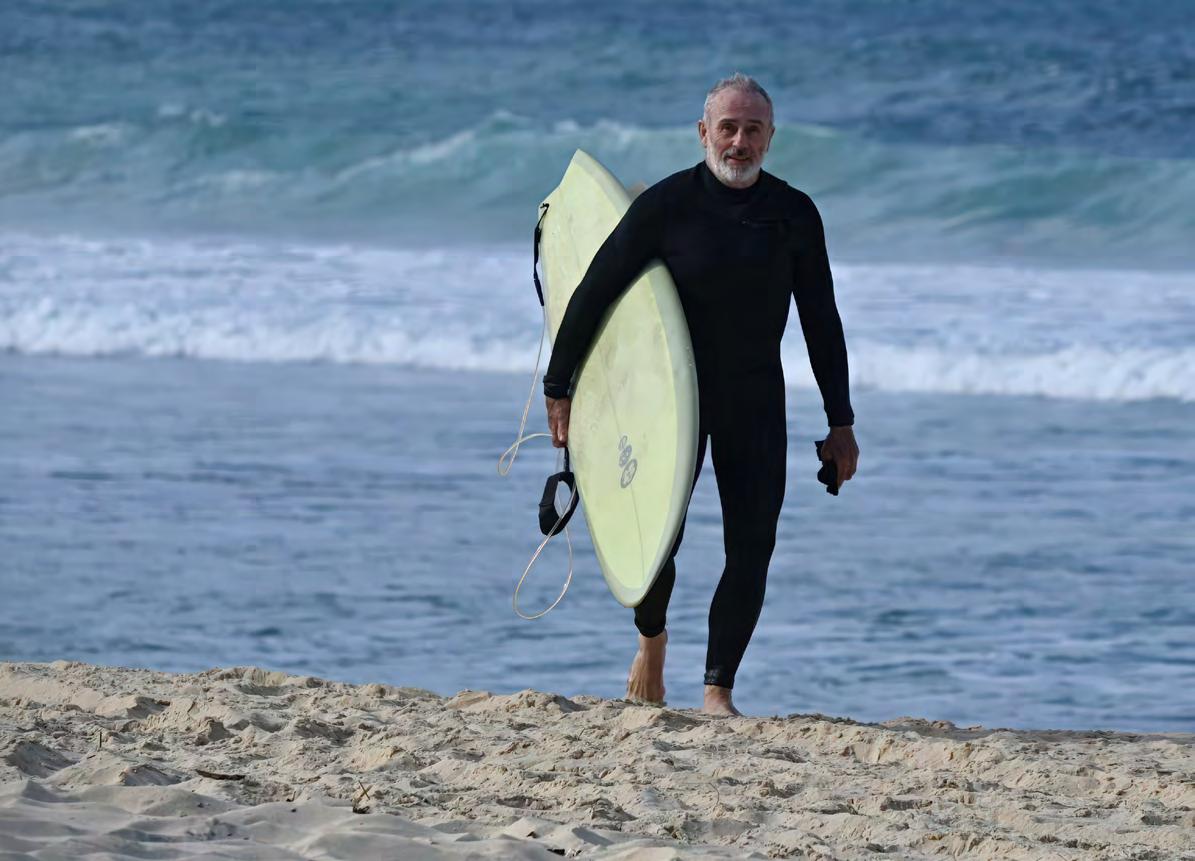
GTR: Welcome to another episode of The Last Post Radio Show. You are with Greg T. Ross, and today it’s my great pleasure to welcome photographer, artist, does a lot of things too, even surfs, Mick Sowry. Mick, how are you?
MS: Very good, thanks Greg.
GTR: Mick, we were just talking, there’s so much to discuss here and thank you for being part of this podcast series. You left a world of advertising, I guess, in the early noughties or something as they called it. And how was that world for you? And why did you leave it?
MS: Well, Greg, I was in the advertising world for a long time, but it’s a very ageist industry, and I was feeling like an end was coming. In 2004, I turned 50 and I started to think I needed to attempt to see out some dreams. We owned a decent chunk of a house in St. Kilda and had a pretty good life. We had 2 boys, one 12 and one 9, going on 10. And I just said to Sue one day, “Look, you know what I’m trying to do with my life. What about if we sold the house and put it into a managed fund (at a time interest rates would have doubled it in five years) and created this opportunity for me to see out those dreams.” And so we sold the house and, as a lifelong surfer, I’d wanted to do an historical film about surfing. We sold
the house, we had some money, I put it all in the bank, and I started doing interviews, and filming with this idea of this historical thing. I approached Richard Tognetti from the Australian Chamber Orchestra via email to the ACO reception, to do the sound design because I knew he surfed, he understood the culture, but I didn’t want the ‘Beach Boys’..
I wanted something different. And oddly enough, he came back with me three hours later - I didn’t know him from Adam, saying, “I’m really interested.” And that snowballed into him asking me to meet up with him a couple of months later, and I ended up doing a film with the Chamber Orchestra called Musica Surfica and the idea of that film…
GTR: A brilliant film too. I’ve had a look at it.
MS: So out of that came this relationship that I had with the orchestra and the premise of the film was the benefits of risk in learning. There was a philosophical bent to it. It wasn’t just a surfing film, it was an idea, and this whole thing about having ‘ideas’ is obviously a driver in the ad industry. So subsequent work that I’ve had since then has been all based around generating an idea and trying to work with it. So that’s kind of the start of it. A whole mountain of stuff has come out of that.
GTR: I suppose too Mick, when you talk about that and the philosophy of surfing and learning, and obviously in advertising too, it’s a combination of things, but you were you were married to Sue, we’ll speak about that soon. The financial disaster, when did that occur for you?
MS: The financial disaster was essentially sitting on the money that we made from selling the house. And obviously you don’t just stick it in the bank. So after much research, I joined a managed fund through a finance advisor, and two weeks after I put it in the fund, the GFC happened. I lost half of it. And that compounded, and in the end, by the time four years had passed with all of the other things that happened in life, I pretty much lost a lot. So that provoked us moving down the coast because it was either that or somewhere in outer Melbourne so that we could afford rent.
But at the same time, I was generating some advertising work, but coming up with, after the aftermath of the film that I did with the ACO, new ideas, a magazine, a film script. Stuff. Not long after that, we moved down to the coast to Jan Juc, near Torquay. At the same time I was offered another film project with the ACO, which became The Reef. The Reef was a Film and Music examination of a section of coast up in the northwest of Western Australia, produced after a very
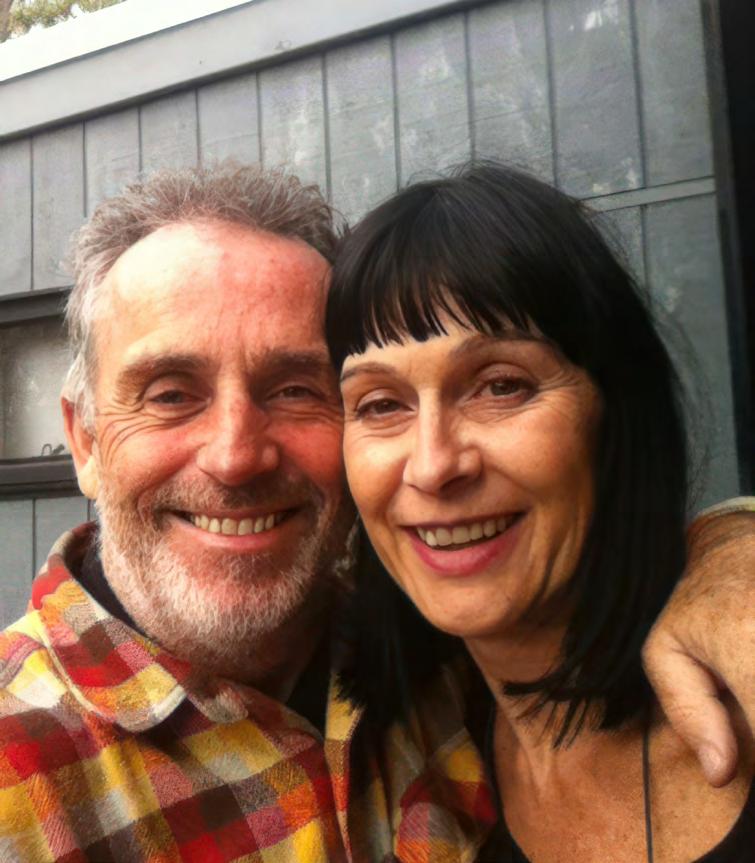
intense filming period of two months of pre-production, filming and editing.
GTR: Is that about the Ningaloo?
MS: It’s just south of the Ningaloo, at Gnaraloo, which is a famous, very dangerous surfing spot. But the whole idea of that, we’re talking about ideas, was for me to come up with an idea to centre the filming around up there. Obviously you can’t script that sort of thing. But the idea that I came up with was, just post the death of my father, that we talk about a life cycle type of thing. Birth to death. A day as a life. Mortality.
So we filmed and filmed and filmed for close to three weeks. Then we chose 22 pieces of music sequentially that spoke out this life in a day. And that was the loose structure that this edited ‘painting of a film’ which became The Reef Concert, that the full ACO toured Australia with. And we toured Australia, it went to Europe, it went to China. And Europe. And it was a very, I would say, a great success, though in my mind as with anything that you do, I could have done better. It is just a natural thing. But it was a success enough that three years later, they wanted to redux it. But in between doing that and the following version of it, The Reef Redux, I created, with two great friends, in author Jock Serong, and our business head, Mark Willett, a magazine called Great Ocean
Quarterly. Art, Ideas and The Sea. My idea was a magazine for anyone with sea affected lives.
GTR: That’s right. Before we go on to Great Ocean Quarterly too Mick, what did filming The Reef teach you? Or did it teach you nothing new, just a confirmation of what you already knew about nature and everything else?
MS: Well, yeah, what did it teach me? Look, I was coming into filmmaking with Musica Surfica completely from scratch. I’d never done a film before. I’d made lots of, with my various creative partners that I worked with, many, many television commercials. So I knew the film process, but it was more...I just basically jumped in. And obviously I had collaborators, producers and stuff like that, particularly on Musica Surfica. But come the day when I was doing The Reef, I took on the role of producerdirector and shared the editing with my main camera guy who’s a brilliant, brilliant cinematographer called Jon Frank.
And so Jon and I, and Richard were the three collaborators on The Reef. And Richard obviously was the musical director, I was the director, producer, and Jon doing the film. And Derek Hynd, is a highly eccentric, brilliant surfer, and intellect, who rides boards without fins…which he calls free-friction.
GTR: Right. He rides boards without the fin?
MS: Yes. And they’re all-
GTR: Like original.
MS: Exactly. They’re sort of getting back to the beginnings. But it was… Derek calls it Jazz on the Water.
So that provides a very different prism to view surfing through. And both Musica Surfica and The Reef had a finless surfing base, but we did have a couple of key surfers riding with fins so that there was a comparative view of it. So you could see these two different ways that you could do it. But again, I’d stress that they weren’t…I don’t see them as surfing films. They were using surfing as a part of an aesthetic that allowed a base for this film that was really about our lives because we had dark parts in it and environmental themes, but it was all symbolic. There wasn’t a script. It was just music, music, music. A grand dance of sorts. But we had a range of music from modern newly composed pieces by Richard, and others, to Bach, Beethoven, and Górecki.
GTR: Beautiful.
MS: It was a very dense thing. So that whole Reef experience was basically a monumental challenge to me, creating these big things that you’ve never done before. And if you can imagine sitting on a laptop or three n a little room in Jan Juc, knowing that what you were cutting was going to be opening at the Opera House in three weeks ... We used to joke, “Oh, no pressure boys.” Yeah. So that was it.
GTR: And I guess too Mick, is that with surfing, when…I guess if we get back to this, at the core of a lot of artistic expression comes through surfing, but then you do the filming as well. When did you first gain an interest in surfing? And was it attached to the idea of an appreciation of nature at the time, or was it just something you fell into?
MS: Well, my first exposure to surfing was probably in 1959, I was 4 years old. I’m 71 now, just turned 71.
Standing at the front gate of our house in Henley Beach in South Australia holding my dad’s hand as we were walking out the gate. I saw a car on the other side of the road, a white Holden station wagon with boards on top. I didn’t know what they were. And I said, “What are they dad?” And I thought they were jets. And he said, “Oh, they’re surfboards little mate.” And just this thing clicked in my head and I said, “Whatever that is, that’s the coolest thing I’ve ever seen.” I didn’t even know what it did.
GTR: It was the art of the boards on the car.
MS: Pretty much. It was shapes. And obviously not long after that I saw it on the TV when we finally got a TV because at that moment we didn’t
have one. And it was sort of clicked into my head, but it was ... What was it? 1968 when I finally stood on a board, but I’d been a water baby all the way through it. So I was very at ease in the sea and started surfing at about 14.
GTR: Yeah. Mick, great memories, and for all of us or those that appreciate the ocean as you do, there are great memories associated with childhood and upbringing that you associate with the beach. Just the smell of the suntan lotion, the memories of-
MS: ... Sunburn, calamine lotion.
GTR: And so we move on to something that, and we’ll be discussing more of this later too, but of course your wife Sue was diagnosed with pancreatic cancer, as was my wife, Wendy. This was around the same time, a couple of years difference maybe, or the following year. How did that enact in your life? What was the experience and what did it teach you about closeness and intimacy?
MS: Well, Sue had…This was middle of 2018, Sue started to complain about some pains under her ribs. Around that time and just sort of setting the scene, Sue had been working in fashion retailing in Melbourne. We both were doing a lot of commuting in the years preceding that with me back working in advertising after the films, Sue doing her retailing and we decided we’re going to do everything from down on the coast. She started a little cleaning business, did a little bit of retailing work as well, but this particular day she’d leant over a rail and leant particularly hard on a balustrade. Shortly after that, she started to get the pains and I thought she’d cracked a rib.
We had a diagnosis from the doctor. “Yes, there is a cracked rib.” So this was just a random thing, but the pain kept escalating when it should have been diminishing. I finally said, “Blow it darling. We’ve got to go into emergency. This is too much.” We went in and 10 hours later, the doctor, came in, teary, and said, “Look, I’m so sorry, but it’s end stage. There’s nothing we can do.” And that was the first. And so Sue blinked and I said, “Shit darling.” And we just looked at each other and just settled into a sort of a numbness. That night driving home, Sue’s going, “Well, what songs are we going to have at the funeral?” And she started rattling off names of songs and one of them being Nick Cave, Red Right Hand. And I’m going, “Really darling?”
And look, there was this basically a sense…Obviously in times like that, you don’t go into bursting into tears. It’s such a monumental piece of news, you do go numb. For a few days we basically went into survival mode trying to…Obviously telling people, but also “How the hell are we going to navigate this?” The big plus that came out of it was suddenly she had
painkillers. The doctor had said to me, “You’re in for a pretty hard road.” And I, unlike Sue, because I’ve got sort of this weird curiosity about everything, I already knew that pancreatic was going to be really hard. Sue didn’t, and I was steeling myself internally for the road, and I knew that this managing painkiller’s thing was going to be an escalating battle.
So the period of the disease was only five and a half months from diagnosis until Sue died. To your point, the big thing about it was I think that we became probably the closest we’d been in forever - not forever - but it was almost a re-ignition of our romance. We were always deeply in love, but you raise kids, you go through all that stuff. Sue had several degrees of barking mad about her. She was probably the funniest human that I’ve met, but she had a monster temper and it was like a lifetime of laughter and dodging bullets. So that’s kind, the kind of marriage it was. And so to your point, it was horrible and it was wonderful.
GTR: Actually, it’s interesting you say that too Mick, because I coined the same sort of description for what I went through with Wendy, and I said to people, “It was the saddest yet most joyful time of our lives. It was the hardest yet most intimate time of our lives because of what we had to go through together.” And similar to the doctor diagnosing with the news there and crying, the doctor that diagnosed Wendy took a deep breath and looked at her. And as soon as I saw him take that deep breath, I knew because I’d had a feeling that that’s what it was. So yeah, and it’s an experience that we hope not many go through, but there are learnings from this.
MS: Yes, indeed. Obviously the following year, it was a nightmare because it was actually sort of…Well, not that we knew it, but it ended up angling into COVID. But it’s dealing with grief. The great thing about the Australian medical system is about three weeks after she died, I got a phone call going, “Look, part of the deal with anything like this as we offer you a year’s grief counseling.” And I went, “Oh righto,” and I ended up, “Yeah, I’ll take it.” And just that process of normalizing what you’re going through made it easier to process.
The counselor, Kim, was just fantastic at pricking bubbles. I think I’d be good, and she’d say one word and I’d lose it, and then I’d say, “Boy, you’ve got some sort of magic juju going in here because you dragging this stuff out at me.” But by the end of that year, I was accepting it, but I still ... You never really accept it, but I think you realize that to do the best in your life, you don’t dive into it and lie in a mud bath of grief.
GTR: No, that’s right. That’s right.
MS: You get on with your life.
GTR: Yup. Yup.
MS: And honor her life by honoring your own. And so you still feel guilty sometimes if you have a happy day. But it opened a door for me to sort of, as Sue said, “I don’t want you to be alone.” And that opened a door to whatever would be coming down the track later in life, which has happened. I’ve met a wonderful woman named Penny who was entirely accidental about 18, 20 months afterwards.
GTR: And that’s a big help.
MS: Oh, amazing. It’s now four and a half years, coming up five, I suppose by the end of this year, of a fantastic relationship, but it’s a long range one. Penny’s a journalist and lives in Newcastle, and we make it work and we talk daily. And because we’ve got a lot of shared interests, there’s a whole lot of creative stuff that we share. She’s a photographer as well.
GTR: Oh, that’s good Mick. And without wanting to make light of the situation, it might be a good thing that it’s long distance. It’s an incredible thing. It might ease you into the fact that you’re actually in a relationship again. And I mean, I do know that ... Yeah, similar to you, there’s ... For me, from eight months diagnosis to death with Wendy, there was great relief in the end because I knew that she was out of pain and I’d been her carer for the eight months doing the magazine as well, of course, but the wheelchair and everything else. And I felt guilty too at times when enjoyment presented itself. But I was told by many people not to feel that I deserved some release and some relief, I guess that’s the feeling too. Look, you’re rebuilding of your life too, I guess with art, that is a big help in expressing yourself through your art. Did you find it as such?
MS: Yeah, because of my background in the arts. I went to art school and as you’re aware, I’ve got three military brothers. I was the oldest, but I was very much a very curious kid growing up. So I was interested in everything. And unlike the boys, I absolutely lacked focus because I wanted to be a scientist, I wanted to be an artist. I was interested, you name it, I read about it.
GTR: You’ll have to have three or four lives to express yourself and all of that.
MS: Kind of. Yeah, it was kind of like that, which meant that when it came to matriculating, I went surfing. So I did the HSC as it was back in those days twice. In fact, I went surfing on days of exams. So come the day when I finally passed after the second round of it, when I didn’t go surfing on the days of exams, I actually took a job down on a tin mine in Tasmania that my dad was managing just over Christmas one year. And I was applying to various courses, and one that I applied for was industrial design, but I hadn’t done any art since year 10 because my school didn’t take art past that. And they said, “Your marks, you are in to get into the course,” because it interested me because it had that
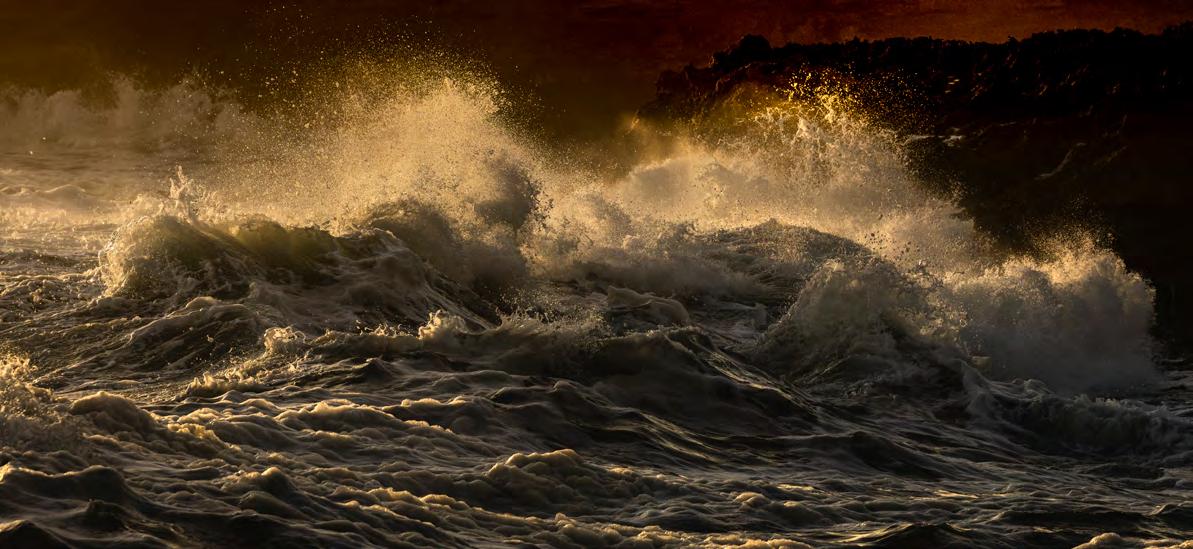
mixture of technical and art, and I thought, this is could fit.
GTR: Great combination.
MS: But they said, “You’ve got to give us a sign that you can draw.” And so I went down to the local post office in Waratah in Tasmania and bought a drawing pad and some colored pencils and did a drawing and send it into them, and I got in. And so that was how loose it was back in those days. But I ended up doing industrial design, didn’t quite gel with that, changed to graphic design. Again, was skiving off going surfing. They threw me out at the end of second year because I was surfing too much. But back in those days, there wasn’t a course for advertising, but I had an in through a friend of my uncle’s, went for an interview with him, got a job in an ad agency, and that was a 30-year career following on from that.
GTR: Wow, incredible. And I guess too, it’s funny too about being ... You were kicked out of the exams because you were going surfing, but I remember when I went to Perth to live and I was living in Scarborough and I was only 17 or 18, I had about 3 jobs in the space of 12 months because I’d be getting ready to go for work, and there’d be a knock at the door and it’d be one of my friends saying, Surf’s up and do you want to come?” And so it was sort of a no-brainer in that sense. So yeah, totally understand that.
MS: To your point about where the art part comes in, because I’d always been an artistic kid, I was always drawing, always writing, always doing stuff. So through my advertising career, I always had pads and drawings nearby me that I was just doing ideas. And so often through that whole life, my colleagues would go, “Mick, if you want to be a bloody artist, be an artist. You can’t do this and do that.” But I couldn’t stop doing that, and I always photographed as well. So it was only when I sort of ditched it all in 2004, ‘05, although I was always having paintings and photos lying around that I was working on. It was
basically, essentially after studying the films and then after Sue died in particular, that I went, “Blow it. I’ve got nothing else to do. I’m going to throw my life back into the art side of things.”
So I had been writing, attempting to write a sort of Thoreau-esque sort of account of life on the coast. A Walden Pond of the SurfCoast. And then after Sue died, I accelerated that, my photography was arcing up, I started to write poetry even though I’d had some wildly bad attempts at it in love poems to Sue way back. They’re so bad.. But more the point was that curiosity of mine about all things artistic.I suppose you’d call it blossomed in that I just started throwing myself into everything in selfexpression. It’s like Picasso was likely horrible to his wives and girlfriends as much as anything because that angst, I think provoked that emotional side of things, provokes the emotions that provoke the inspiration.
GTR: That’s right. Yeah.
MS: Now, obviously I wasn’t going to write poems about Sue throwing a saucepan at me, but I will write a poem about losing her.
GTR: Yes. It’s so interesting that you speak about that too, because I find the same thing is that I’ll only start writing when something extreme has happened or something psychological or emotional. In fact, I did go through a period of not really writing much at all for about 10 years, but death, meeting someone new, all these things provoke expression, and it’s a great ability to able to do that. I do remember it does help in mourning and returning to normal also by being able to write and stuff like that. So get totally where you’re coming from, it’s helped you greatly.
MS: Well, it has. Now seven years later, I’m still shooting, I’ve had three photographic exhibitions, I am writing sometimes for publications, sometimes, but always for myself. I’ve always got something going on. But yeah, it’s probably good for anybody
who’s in that grief state to find some ways to get it out instead of stewing on it.
GTR: That’s exactly right. Exactly right. And not too many people do that. I remember through the period I was taking a cab to the airport and the Greek or Italian driver, young guy told me his father, his mother had died of pancreatic cancer and the father had spent six months in the bedroom with the lights turned off crying. And I said, “See, that’s exactly an example of you’ve got to express yourself really.”
MS: Well. It’s the self-expression, but it’s also mental health. The last thing you should be doing in any situation where it’s at that high end of life experience is to sit in a darkened room. And fortunately for me, living on the coast, being a surfer…I’ve been surfing for 56 years, and obviously there’s a diminution of your skills relatively, but you do have that ability to paddle out the back, gaze at the horizon. People might say, “Oh, do you do any meditating?” Well, if you call staring at the sky meditation, but the other side of it is the physical exertion stuff. That’s stuff that keeps the mind and body ...
GTR: It’s great. Tell me if you feel the same way. And I’m sure it’s a meditative experience, surfing, and even if you don’t catch too many waves, just being out in the ocean and when you emerge from the ocean, you feel almost cleansed.
MS: Well, yeah, look, I don’t want to sort of wax too lyrical on the spiritual side of surfing. It is that. In fact, I kind of find myself a little bit - almost irked at this thing of me as a surfer. I’m just a guy who’s doing life, but surfing is, for me, it’s like that other part of my life that keeps me settled. It gets me frustrated as hell at times because you know what might’ve been or what was, but it’s really a, as you say, a cleanser. I’ve got a different relationship now. We have this expression called ‘frothing for it’. I am not so much frothing for it as going ‘now’s my
chance’. And I treat it a little bit as a meditation, a little bit like going to the gym. I don’t do the gym thing. I’ve got a routine that is maintaining my body, at this age, if you took the fact that in 9 years I’m going to be 80, in 19 years, I’m going to be 90 if I’m still around.
You go through that thing of all of the things that happen to people of our age where you might have a prostate thing or a fear of it or whatever. And being male, you don’t like going to the doctor. But all I can do is go, “Okay, I’m going to do all of the things that make me well so that I can address life.” I can’t retire. I still work. Unlike my incredible brothers who have got these amazing careers as soldiers and now retired, but obviously some are retired sort of. Well, not even that, they’re all working, they’re all just in different stages of their life. But they’ve had a vastly different backstory. They’re really impressive humans. I’m proud as punch of them. But basically I feel like I’m sort of the ... What would you call it? The random…
GTR: The fifth Beatle or whatever.
MS: Well, no, more like the random green olive in a box of black ones. I don’t know.
GTR: Were you always that way with your family? Did you feel different from your brothers?
MS: Well, I was the oldest. So basically they saw me being…I had hair down back past my backside, and the random…
GTR: Brendan told me.
MS: And the art student, we had a sign outside the RMIT Art School, “Do not feed the art students.” This is early 70s. But they went, “I’m not going to do that. I’m joining the army.” And there, I really wanted to sort of reflect on that, in that military connection through my grandfather really inspired them. And they went down this career path, and for them, it was the Anzac legend as Brendan may have mentioned that got them involved in it. But equally, I just watched the way that they addressed their lives. And it was so much ordered than the chaos that was mine.
GTR: Did you have a Kombi, by any chance? Did you drop Brendan off to military? Because he told me, was that you?
MS: Yeah, I did. It was a station wagon. I actually dropped him off at the army pickup i…
GTR: That’s right.
MS: So yeah, I was the eldest. They went a very different way, but it was really interesting watching their career arcs.
GTR: I bet.
MS: And there were times when ... A very funny thing was, I think when Billy, my middle brother, graduated
from Duntroon in probably mid-late 80s. And I’d just lost my job at an ad agency and I had to go up for the graduation and I got to Canberra, I’d driven up for it. And I was in advertising, but it was in that sort of rough early period. And I opened my case and I had the wrong pants. They were too short. I had to go to this thing where I was meeting the Governor General in all of this. And the joke was I just decided to start a company named Laughing Bananas. And I thought, “Here I am. I’ve got too short pants on. I’ve started Laughing Bananas and my brother’s just graduated from Duntroon.”
GTR: Tell us a bit about a magazine called Yuth in the USA.
MS: Well, yeah. Now I find myself, about a year ago now, I got a email from a young chap called Mikey Walsh out of San Clemente wanting to know if he could use some of my photographs for their magazine. “We can’t pay you.” And I said, “Yeah, no worries. What’s the magazine about?” And he said, “It’s called Yüth. We want to get young people off screens, off computer screens.” And I said, “Oh yeah, no worries. Sure. Would you show me what you’re doing so that I know what I’m getting into.” And he sent me their first draft pages, their design, and I went, “Great idea, but you don’t know how to do it.”
And they were young college students and they were trying to teach themselves the Adobe Creative Suite, which is where you do all of this stuff.
And I said, “Right, okay, I see a problem here.” So having done Great Ocean Quarterly, the magazine that I produced for three years and am still doing now, Occasionally as the joke goes, I created a set of grids, page layout styles. I gave them a little filler-in on selection of type, how to use type, how to choose photographs, lots of arrows, and then a couple of hundred bucks worth of magazines in various genres and said, “Like you can see the commonalities in this, but they’ve all got styles, but there’s certain rules they stick to.” Sent that all to America. 60 pages later, they sent it all back and it was still ... I knew they were going to run into trouble. So I said, “Okay, boys, package it together and I’ll design the first one for you.”
I designed the whole magazine for them, put it all together, edited it, wrote a couple of pieces, guided the young writers through their writing process. And I said, “Look, I want to be able to help you get to the point where you’ve got a viable thing and I’ll help you find designers and all of that.” And advising them to develop spreadsheets and budgets and how to pay people and doing all of these things. So I’ve just finished the second edition and the team has grown from 3 to 12.
Now we’ve got some really good young writers. We’ve got a great young designer who’s starting to do poster work. I’m still designing the
magazine itself, but I’m setting up the style. The second issue is vastly better than the first. We’ve got a fabulous message from a new subscriber waxing lyrical on the first issue. And I’m going, “Wait till you see this one.”
The point being though is why the hell am I doing this? Because it’s not for the money. And you go, well, I probably wouldn’t have been…I’m good at it. I’ve done a lot of it. I can put my 19-year-old head on because being an advertising person, the whole way you operate is to be able to place your head inside your market. And being a surfer, I’ve got an age range of friends from 19 to in their mid 80s that are still surfing. So I’m pretty connected over a vast demographic. And it’s really good fun. It’s a lot of work. It’s probably 3 months, solid 8 hour days if you really talk about it because it’s a 128 page magazine.
Designing the magazine is a huge job, but it’s giving these guys a gift in that they’re learning an immense amount. They’re bloody talented, they’ve got enormous amounts of energy. And really, I’m just sort of basically being… They call me Old Mick. Our Zoom meetings are this bunch of incredibly beautiful young faces, girls and boys, and they’re as keen as mustard. And I just go, okay, I’m just giving them a sort of gift ,and it’s starting to turn financial.
So I’ll get some money out of it. But that’s not the point. Hopefully I’ll grow into it. And the idea is that I’ll probably sitting in the background being a mentor to them, pick them up where they need to, advise them on stuff to do.
Yüth Magazine, if you just look it up. They’re doing merchandising. It’s a great name. Mikey is a budding probaseballer, Carson Kropfl, Mikey’s best friend and co-founder, won the Youth version of The Shark Tank. Richard Branson picked up an idea that Carson had about a skateboard for his school locker, a Lockerboard, and Carson got a budding business out of that, and he is kind of famous in America for his thing on that.
GTR: You’ve landed in some interesting territory there Mick. That sounds absolutely fantastic. A lot of places there. And you’re able to express yourself through your art again too with this, and you’re passing it on, I guess it’ll be perpetual.
MS: Well, it’s kind of not…What I’m trying to do is get them to find young artists and photographers and I’m helping give them a platform. And it’s a gift to me too. I mean, being able to have young people that are my friends is very juvenating.
GTR: I was about to say how energizing for you.
MS: Well, it’s wildly so, and the fact is, again, because of that sort of high level of activity I have physically, I basically feel the same as I did 40 years ago.
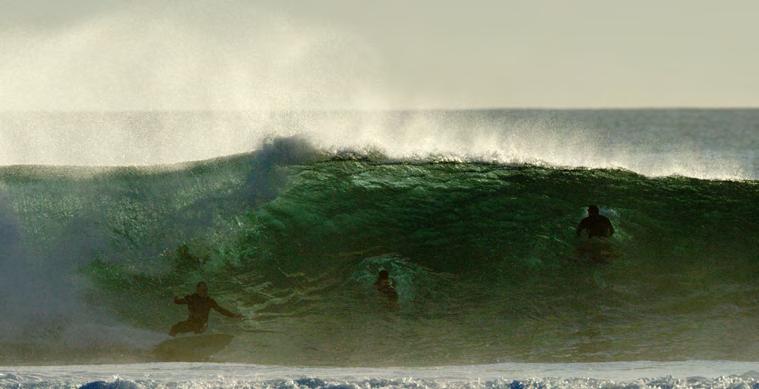
GTR: Would you have become a photographer and surfer and filmmaker if you hadn’t have surfed?
MS: Yeah, it’s basically my nature. I was always…Like I would call myself under-talented athletically, but I’ve got a sturdy, although hobbit-like frame that doesn’t break very easily and I’ve hardly been injured and I don’t have arthritis. My mobility’s good. I’m probably not the world’s most graceful surfer, but I do enjoy the ocean and all its colors. I live at near Bells Beach, I’m surfing Bells all the time in all sizes, and I still haven’t drowned.
GTR: Are you an expert at picking up waves? That’s the whole thing about getting the wave is seeing it before anyone else, I suppose.
MS: Well, rat cunning, there’s a bit of that, although I do probably, as I’ve evolved, I tend to basically go out the back and drop anchor and wait for the ones that I’m looking for. The line-up at Bells and Winki, which are the two main breaks that I surf apart from some spots down far west in Victoria are quite crowded. But it’s a very genial friendly bunch of guys and girls from 12 to…Actually probably there’s only a couple older than me now that surf it. So I’m at the back end of the age range, but I hold my own. I wouldn’t say, it’s not to the point…I’m still riding short boards, which is a challenge because most people at my age would be on a log and I still ride what’s called a fish, which is six-foot thing when I’m feeling frisky.
GTR: Isn’t that wonderful?
MS: It’s good fun. I mean, you hit the deck a little bit more often, but again, as I said, never being a smoker and barely a drinker my whole life that there’s not been the decline. I hope in the next…This sounds stupid, but I don’t want to grow old. I’d rather drown or get eaten by a shark. And I say that I only because the option of Zimmer frames and old folks home is doing me no joy.
GTR: I do remember when I was in radio, in between radio jobs, I was working in this old folks home and in the kitchen and yeah, I remember thinking distinctly, I still remember where I was thinking, “I don’t want to end up here.” So what you are doing Mick Sowry is living life and you’re expressing yourself at the same time. And it’s something that I would
recommend as a prescription for anyone. Blessed be the experiences that can be negative, but there’s been positive ones that ... Someone once said, “Something good will always come from the bad.”
MS: Well, yeah, look, I’d never wish what happened to Sue on anybody, and I’d trade all of what’s happened since for her to still to be alive.
GTR: That’s not reality. Yeah.
MS: Look, in the end, the biggest things that have happened for me were leaving the advertising industry, opening myself up to whatever happened, and then just getting on with it. Life’s not been easy. I’ve got two boys, Joey and Tom. Joey’s flying through the…He’s oddly enough doing exactly what I did, being an advertising creative and his career’s going great guns.
He’s getting married this year, he’s bought a house. My youngest son, Tommy, is a brilliant artist-athlete, but he’s had some real major life hurdles with injuries. So he’s still with me and dealing with back issues and all. But Tom’s life arc has been a little bit more rocky. Brilliant athlete, professional skater as a youngster into his early 20s, but then massive problems with injuries, shoulder dislocations, back injuries, broken back, all sorts of stuff that’s really colored his life in this last 10 years. And he is mobile, but he’s lost that athletic outlet. He’s putting that into writing and art, but a whole bunch of issues with just addressing the loss of that athleticism and it making it hard for him to work, et cetera.
But I’ve got great hopes for these hurdles to get over with. But we together live in our place down there, and our house is full of paintings that we’ve done. Our favorite thing after Sue died was what we called tag team painting, where I’d start a painting, he’d do a bit. We’d both basically back and forth, and the rule was if you called it, finished it, it was finished and you weren’t allowed to criticize anything the previous past was.
GTR: I like the sound of that.
MS: What it did was bring a lot of laughter into a very sad house at that time. It also provoked my realisation of how good he was. And so look, in the end, we’re sort of shambling through
life. The old bloke and the young bloke are trying to give hope to each other. And I suppose you’d call it making the best of what’s…I wouldn’t call it a bad lot, but a sad lot. But yeah.
GTR: Well, it’s amazing. I suppose you come from a position where you’ve been through these things and you know how you feel and how you’re dealing with it. Sometimes people from outside can view it differently and just offer a bit of advice or something, but whatever, you have to live your own life and to be able to do that through art and the ... Well, I guess the ability to enjoy the ocean as well is what your life’s all about Mick. You’ve been through loss, but you continue to grow and gain, and that’s a benefit to the great Australian community. So we thank you very much for being on The Last Post Radio Show. And I guess finally a word from you about how people can get in contact with you or view your work.
MS: Oh, okay. I didn’t come on on the self-promotional thing, but I’ve got a website, micksowry.com. You can have a look there. That’s got the photographic work and yeah, there’s a contact thing if anyone wanted to get in touch with me about anything, if they wanted to buy one. I’ve had three exhibitions, as I said. Basically I’m just trying to grow that part of my life. But I’m also writing and I’m thinking about putting the book that I wrote post Sue online or reprinting it.
GTR: Good.
MS: I’ve had a lot of requests to reprint because look just on the book, it’s called A Spark Becomes an Is and it was based on the experience of losing Sue, but it’s broadly a more environmental book. And extension of that Thoreau-esque idea.
But I had someone say, who bought it just after I published it and I was hand delivering because I only printed 150. And this guy rang me up and said, “This came at just the right time. I lost my best mate yesterday and this has changed the way I see the world.”
GTR: Oh, how much ... Yeah, I mean, that means a lot. It incredibly means a lot. So thanks again Mick, and yeah, we’ll talk again. In the meantime, check out Mick’s work, micksowry. com, and all the best to you mate, and thanks for sharing that with readers and listeners in The Last Post. And if you want some beautiful observations of nature, check Mick’s work out and films, paintings, photography and poems.
MS: Yeah, can I just add, if you want to see Musica Surfica, just look up Musica Surfica online. It’s on YouTube. It’s only 46 minutes, but it’s not a surfing film. It’s something that everybody that sees it goes “wow!”
GTR: Yeah, yeah, I’ve seen it and it’s absolutely beautiful. Thanks again, Mick Sowry for being part of it, mate.
MS: My pleasure.

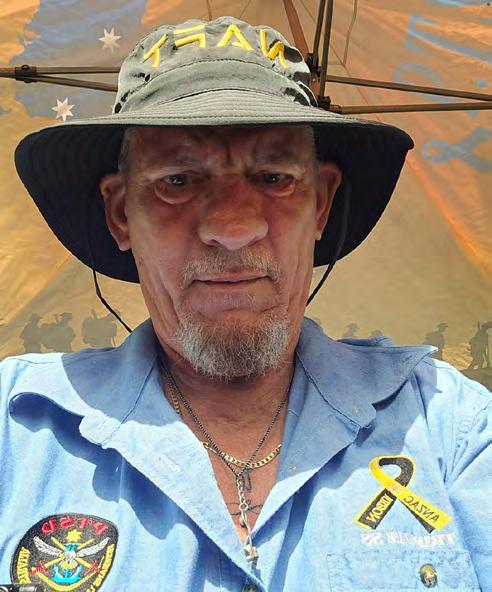

Glenn’s story is one of resilience. Enlisting in the Army at 17, he served as an APC driver in the 57RAR Royal Australian Regiment, inspired by his grandfather, a World War II veteran. After five years of service, a medical discharge marked the start of significant challenges as he struggled to transition to civilian life.
The camaraderie and structure of military life were gone, leaving Glenn disoriented and battling a lack of opportunities. Over time, addiction took hold, consuming more than 20 years of his life. He faced loss, isolation, and eventually homelessness. A relationship breakdown and medical issues left him living in his car, clinging to the companionship of Miss Dakota, his loyal dog and emotional anchor.
Glenn resolved to turn his life around at his lowest point, drawing strength from his military roots. Dedicated to supporting fellow veterans, he launched the “Veteran Lives Matter” Facebook group, creating a space for connection and advocacy. Yet, stability remained elusive.
That changed when Glenn found Veteran Housing Australia (VHA). Taking a leap of faith, he moved from Queensland to a supportive community in Mildura. There, Glenn discovered more than just a home. He found a sense of belonging alongside fellow veterans, affordable housing, and a renewed foundation to rebuild his life.
Today, Glenn channels his energy into advocacy, using his militarythemed car to raise awareness and honour fallen veterans. With Miss Dakota by his side, helping him manage PTSD, Glenn has transformed his life, proving that stability offers a path to purpose.
Glenn’s story highlights the profound impact of VHA’s support. With stable housing, he reclaimed his dignity, built meaningful connections, and rediscovered his purpose, showing that it’s never too late for a new beginning.
Stand with Veterans like Glenn. Your support changes lives – donate today by visiting: www.veteranhousing.org.au
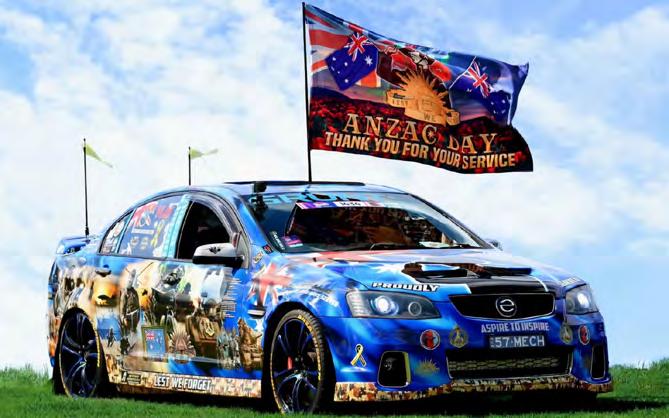
Right now, the prospect of much improvement in being able to afford a home of your own isn’t bright.
We don’t look like solving the problem any time soon. But I’ve been watching and writing about the steady worsening in housing affordability for the best part of 50 years, and I’m more optimistic today than I’ve ever been.
Why? Not because we’ve got the problem licked – and certainly not because mortgage interest rates will soon be coming down – but because it’s become so bad no one can go on ignoring it. At every level, from governments at the top to mums and dads and angry young people at the bottom, we’re realising that house prices just can’t be allowed to keep going up and up forever.
For the first time in my experience – and probably the first time since the housing crisis immediately after World War II – all of us are realising something must be done to turn things around. Politicians, treasuries, economists and parents are coming to grips with the problem. We’ve begun thinking hard about all the factors contributing to the problem and the many things that will need to change.
Until now, people have focused on fixing this favourite factor or that one. Now we’ve finally realised the problem is multi-faceted and needs to be attacked at every level from every angle. There’s no magic bullet.
Although affordability has been worsening for decades, the disruptions of the pandemic and its lockdowns – closing our border then reopening and having people flock in – have made the problem acute as well as chronic. It’s the same in other rich countries, but I bet ours is worse.
For many years, politicians on both sides and at both levels of government expressed sympathy for “first home buyers” but didn’t really care. That’s because voters who own their home far outnumber those who don’t, and home owners love seeing the value of their home going higher and higher.
But now home owners are joining the dots and realising their growing wealth comes with a major drawback. Their kids can’t afford a home without big withdrawals from the bank of mum and dad. Why is this a smart way to run the country?
People complaining about housing affordability tend to blame the federal
government. In fact, it’s the state governments that have most influence over how many new homes are built, where they’re located and whether there’s enough higher-density housing in the parts of cities where people most want to live.
That’s why the Albanese government’s National Housing Accord with the states is a big advance. That’s true even though their agreement to deliver 1.2 million new dwellings over the five years to mid-2029 is running well behind schedule and may not be achieved.
The accord is important because it represents both levels of government accepting responsibility for housing affordability and being willing to cooperate in making progress. The timehonoured way to get the states pulling their weight is for the feds to pull out their chequebook. Which they have.
You don’t need an economics degree to see that if house prices keep rising it must be because the demand for homes is growing faster than their supply. That’s true, but it’s not that simple. For one thing, if all the extra houses are on the city’s fringe, people who want to live closer in will still be bidding up the prices of the betterlocated houses and units.
That’s why a big part of the deal with the states is for them to permit more better-located higher-density apartments. This switch of emphasis from doing things to reduce the demand for housing (by ending the tax breaks that help investors outbid first home buyers) to increasing the supply of well-located homes is a big step forward in the thinking of politicians, econocrats and economists.
But we’ll probably need to reduce demand as well as increase supply –so don’t think you’ve heard the last on “negative gearing”.
And don’t assume that if the NIMBYs have been beaten back and permission given for more middle-ring high-rise, they’ll start springing up in a few months’ time. Now the experts have their minds focused on housing, we’ve realised our home-building industry isn’t in tip-top shape. When demand surges, the businesses are much better at whacking up their prices than at building a lot more homes.
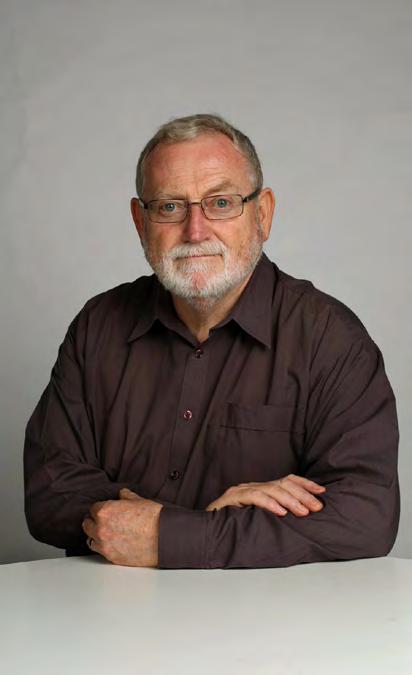
Right now, the industry’s discovered it can’t get the tradespeople it needs to expand its production. That’s why, at present, it’s building fewer homes than usual when it should be going flat-chat. We’re told it has lost a lot of its tradespeople to the construction of transport and other infrastructure for … the state governments.
Well, maybe. But my guess is the industry long ago gave up ensuring it was training lots of apprentices because they’d be needed in the next building boom. Similarly, the bureaucrats issuing visas to skilled immigrants don’t seem to have worried much about how their decisions would affect the building industry.
In the post-war years, state governments built and owned thousands of homes rented to people in need. But that went out of fashion decades ago, and now they own little social housing. Changing that will be another part of what’s needed to get housing affordability under control.
Finally, the Reserve Bank. The modest falls in mortgage interest rates we’ll see this year and next are unlikely to do anything lasting to improve housing affordability. When you’ve got a shortage of homes, making it a bit cheaper to borrow just allows someone to win the auction by paying more than the other bidders.
The Reserve has always denied that its use of the interest rate lever to keep inflation low has any lasting effect on housing affordability. But this assumes its ups and downs never cause borrowers to do crazy things for fear of missing out. Maybe the Reserve will need to change too.
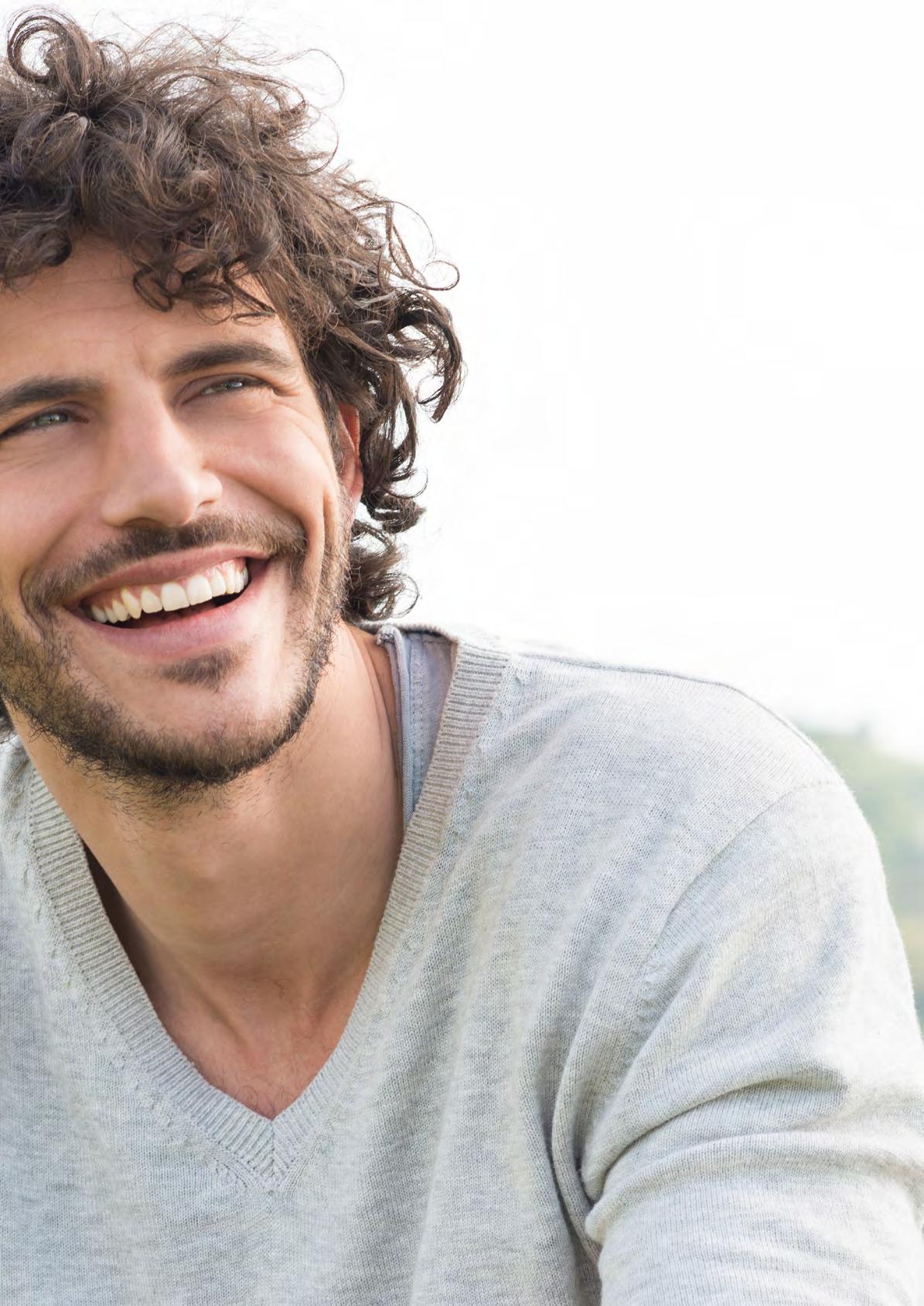
If you’re a veteran who’s ever tried to navigate the DVA claims process, you’ll know it can be overwhelming, complex, and frustrating.
Veteran Legal is Australia’s leading legal support service for Australia’s servicemen and women. Specialising exclusively in Department of Veterans’ Affairs (DVA) compensation claims and Retrospective Medical Discharges (RMD), Veteran Legal offers a unique blend of legal expertise, medical insight, and personal experience to assist veterans in securing the benefits they rightfully deserve, without the red tape and long wait times.
Veteran Legal was founded by a team of qualified and experienced legal professionals and veterans who focus solely on veteran compensation after seeing too many veterans slip through the cracks of the system. Whether you’re applying for the first time or fighting an appeal, Veteran Legal is there to stand beside you. This dedicated approach ensures that each case receives the attention and specialised knowledge required to effectively address the unique challenges faced by veterans.
Legal Support Tailored for Veterans
A standout feature of Veteran Legal is its collaboration with veteran doctors and psychologists who have a deep understanding of military service. This alliance enables accurate diagnoses, thorough impairment analyses, and comprehensive assessments of medical records and service histories, all of which are crucial in building compelling cases for compensation. Veteran Legal handles the paperwork, process, and pressure so you don’t have to.
Veteran Legal is not a call centre or volunteer at your local RSL, rather they are a veteran-focused team that puts your wellbeing first with no upfront costs and a fully serviced team available all week. Veteran Legal know what service-related injuries look like, understand the toll it takes, and fight hard to make sure your claim reflects that reality. Veteran Legal prioritises personalised case management, ensuring that clients have a dedicated point of contact throughout the process. This commitment to clear and consistent communication means that veterans are kept informed and supported at every stage of their claim.
With ANZAC Day reminding us of the sacrifices made by those who served, Veteran Legal remains steadfast in honouring that service every day. With over $100 million in claims lodged, their proven track record reflects a deep commitment to securing the maximum compensation for veterans. Known for handling complex and unique cases, Veteran Legal offers more than just legal expertise — they provide a comprehensive, veteran-focused support system built on respect, dedication, and a genuine understanding of the challenges faced by those who’ve served our nation.


Veteran Legal is Australia’s leading support service for veterans navigating DVA claims and Retrospective Medical Discharges (RMDs)

If you’re a veteran trying to make sense of the DVA claims process, you know how overwhelming and frustrating it can be. Veteran Legal cuts through the red tape with expert legal support built exclusively for Australian servicemen and women.
With a dedicated team of experienced legal experts, veteran doctors, and psychologists, we combine legal insight with medical precision to get the results you deserve.
Veteran Legal has helped lodge over $100 million worth of claims
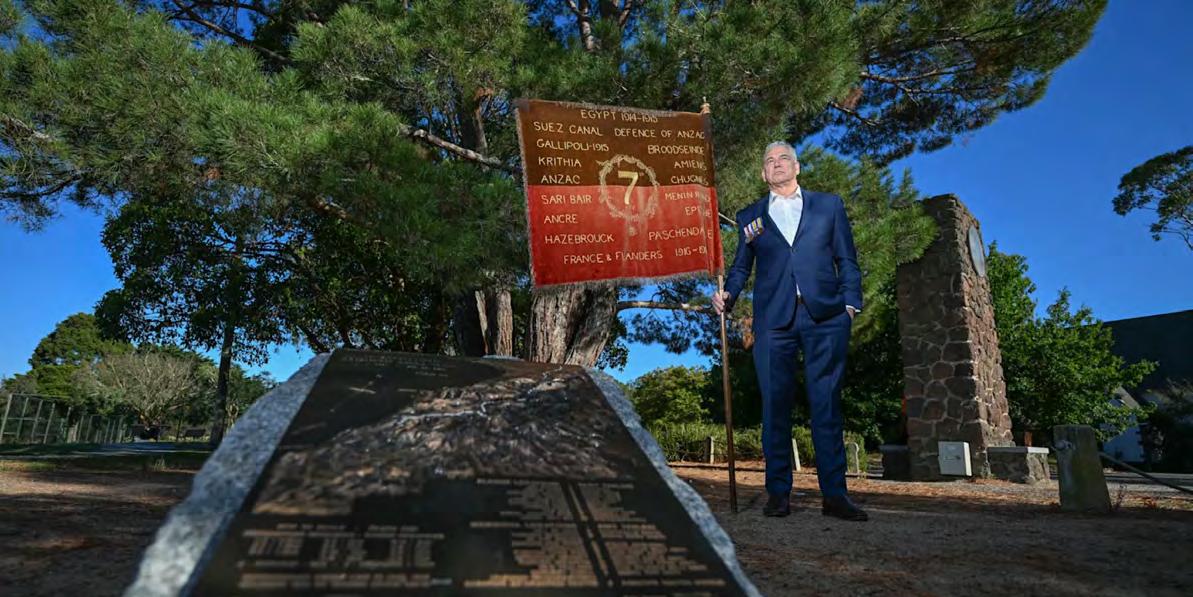
The crowd gathers early to commemorate Anzac Day beneath Australia’s oldest Lone Pine at Wattle Park, Burwood, in Melbourne’s east.
Each year since 2001, hundreds of people have flocked to the service, which is held in the park a week before the actual day – April 25 – to avoid clashing with the big Anzac Day parade through Melbourne’s streets and the service at the Shrine of Remembrance.
This year, it will be held even earlier – on April 13 – to also avoid clashing with Easter.
Those attending will be welcomed by a lone piper and will witness a parade of the largest collection of World War I military banners – plus those of WWII and Vietnam War units – outside of Melbourne’s Anzac Day march.
A full Anzac service will take place, including a catafalque party, wreath laying and a minute’s silence, with a recital by the Melbourne Tramways Band.
Wattle Park’s own history is deeply entwined in the events that give lasting life to the word Anzac.
The park was, in the years between World War I and WWII, the training ground for the 24th Battalion (Kooyong Regiment), which spent many dangerous and exhausting weeks holding Lone Pine, Gallipoli, in 1915.
More than 20,000 people attended the first trooping of the colours of the battalion in the park in 1929, a ceremony that continued each
year well into the 1930s under the battalion’s Lieutenant-Colonel Stanley Savige, the founder of Legacy, which supports veterans’ families.
The ashes of former Melbourne Lord Mayor Sir Frank Selleck, who served with the 24thBattalion in WWI and became the inaugural treasurer of Legacy, were scattered in the park in 1976.
The annual Anzac ceremony at Wattle Park takes place in the shadow of a towering old Turkish red pine – Pinus brutia – grown from a single cone taken from the destroyed“lonesome pine” that gave its name to one of the fiercest battles on the Gallipoli Peninsula.
The Battle of Lone Pine took the lives of 2,277Australian soldiers and between 5000 and 6000 Turkish defenders.
Just four trees were grown from that single cone, brought home by a Victorian soldier,Sergeant Keith McDowell, whose 23rdBattalion took duties at Lone Pine turn-about with the 24th.
He gave the cone to his wife’s aunt, Emma Gray, who lived at Grassmere, a village near Warrnambool.
It took her more than 10 years to propagate four seedlings. One went to the Warrnambool Botanic Gardens, where it still stands; another to a plot
next to the Sisters Memorial Hall near Terang (where it was destroyed by lightning several years ago); and one to the Shrine of Remembrance, where it later eventually became diseased and died.
The first of them was dedicated at Wattle Park on May 7, 1933, in honour of the 24th battalion.
(Other Lone Pines in Australia, notably at the Australian War Memorial in Canberra, are Aleppo Pines, or Pinus halepensis. Champions of Wattle Park’s Turkish red pine say the Aleppo was not the species of the original Lone Pine and those in Australia were probably grown from a cone taken from one of numerous logs used by the Turks to cover their trenches.)
The Lone Pine’s significance resonates deeply with another Victorian-raised battalion of World War I, too: the 7th.
Each year, a member of the Wattle Park Heritage Committee, David Laird, hoists the 100-year-old banner of the 7th Battalion, in which his grandfather, Fred Laird, served.
The battalion remains the only military unit to have had four of its soldiers awarded the Victoria Cross for valour in a single engagement.
During the furious Battle of Lone Pine, the four soldiers of the 7th Battalion –Corporal A. S. Burton, Acting Corporal
PAGE: David
beneath
W. Dunstan, Lieutenant W. Symons and Captain F. H. Tubb – held their trench against repeated attacks by vastly superior numbers of Turkish soldiers.
The banner of the 7th was commissioned by the grieving mother of two young men from Mount Martha who were killed at Gallipoli.
Private Lance Blannin-Ferguson died on the day of the landing at Anzac Cove, April 25, 1915. His brother, Private Daryl Blannin-Ferguson, was killed 13 days later.
In 1925, their widowed mother, Kate Blannin-Ferguson, gave the embroidered banner to a 7th Battalion friend of her lost boys, Lance Corporal Clarrie Wignell, of Euroa.
The banner became known as “Clarrie’s Flag”, and has been paraded at every march, memorial and church service involving the 7th Battalion ever since.
Wignell passed it on for safe keeping to Fred Laird, the son of one of his fellow soldiers, Sergeant Fred Laird.
It has, in turn, come to the keeping of Fred’s son, David, who lives almost within sight of Wattle Park.
Those attending the Anzac service on April 13 will be surrounded by numerous reminders of war, including a bronze bas-relief of the Anzac area of Gallipoli by Melbourne’s Dr Ross Bastian.
Beside Wattle Park’s Lone Pine stands another memorial to a lost soldier of the 7th.
A stone clocktower was raised in 1948, commissioned by Zilpa Bennett, mother of Royston Bennett, who died in 1916 during the fighting at Pozieres on the Western Front in France.
The Anzac service at Wattle Park was established in 2001 by the Melbourne Tramways Band as an adjunct of its regular concerts in the park, which began 85 years ago.
It has been run since by the Wattle Park Heritage Foundation, established by the band’s executive officer Ed Bright and former Box Hill Mayor Tom Thorpe.
And lest the big old Lone Pine reach the end of its life, another younger pine, propagated from a cone of the original tree, also grows nearby.
And so the tradition is guaranteed to go on at Wattle Park, where Anzac Day comes early each year.
TONY WRIGHT
The Age
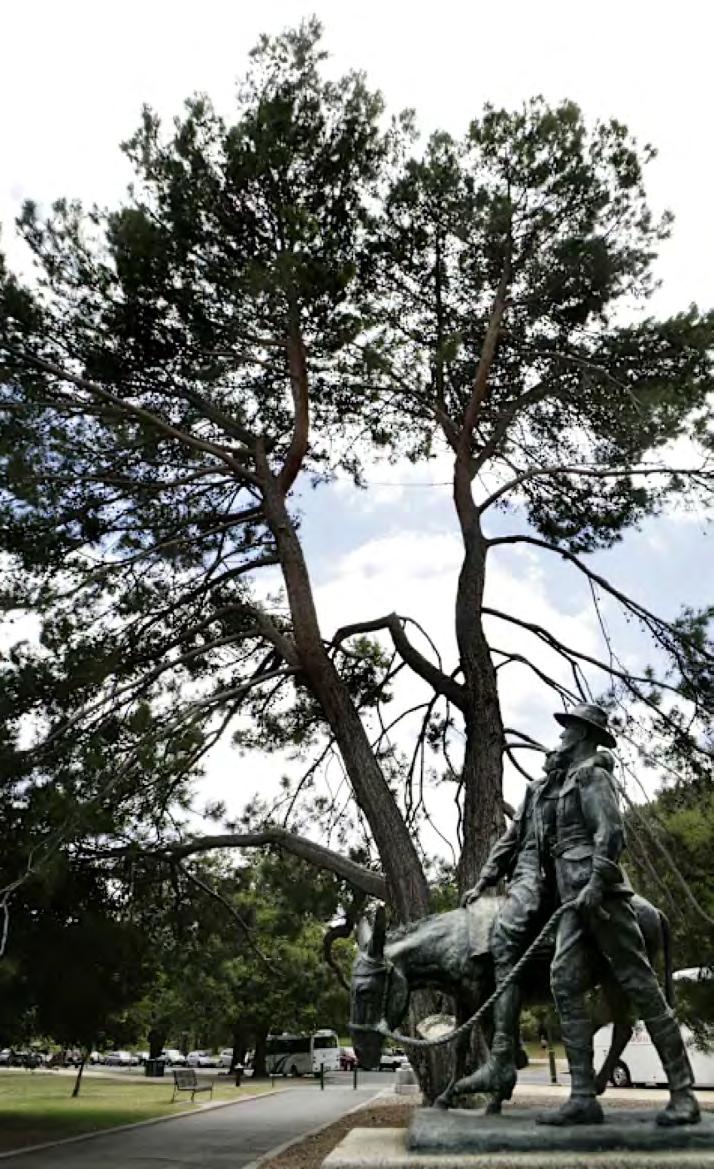
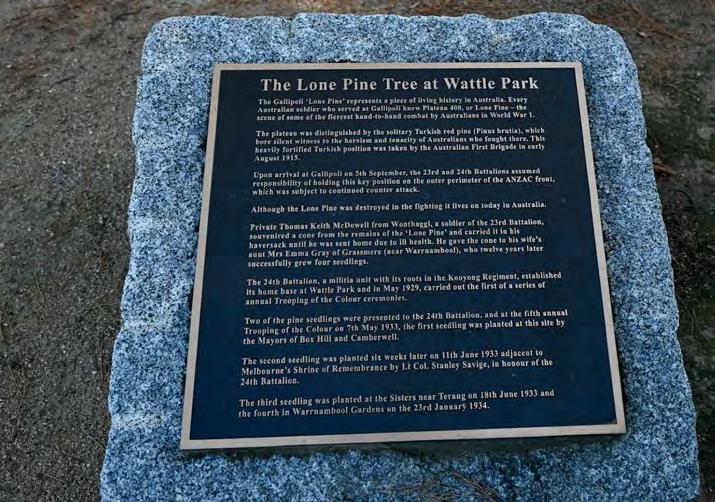



I had planned to go to India nearly 40 years ago but I did a U turn at the last minute & decided to go to the UK instead. Nearly 4 decades later here I am, in very busy & extremely chaotic, Delhi. It’s mayhem & emotive at the same time. I wonder already ‘why did I leave it so long?’ People have always said ‘you either love or hate India’ & on day one, I already love it.
A few days in buzzy, eclectic Delhi then 5 days in Jaisalmer, in the Thar Desert. The streets are still lively & chaotic with the toot toot of automobiles again but this time only from tuc tucs & motorbikes as the streets are so narrow. It’s difficult to manoeuvre going from A to B, as we now have to negotiate cows as well as traffic. Cows are literally everywhere, as are friendly people & shops & eateries galore, mostly in the form of street stalls. The aroma of the food is so tantalising & our guide ushers us to the ones that will be safe for us to eat from. The food is delicious, the best samosas ever! We are staying at a fort where the panoramic views from the rooftop are breathtaking. So many shops and temples to venture into, some dating back over 500years & stone carvings that took nearly 70 years to build. The Desert National Park is an hour from here & a camel ride at sunset could be a once in a lifetime chance we do it! It’s well worth it, just stunning. Dinner is prepared & cooked on a desert fire & is the icing on the cake.
Next stop, where everyone dreams of, The Taj Mahal. It totally takes my breath away, all that marble, all the symmetrical architecture, all the time & dedication. It sure is one of the most exceptional marvels of the world. I love it so much that I can’t resist
waking up prior to sunset, the next day, to visit Magical Taj again.
After the busyness of the trip so far it’s great to relax in the back of our SUV with our expert driver who somehow manages to weave in & out of traffic without a bump (yet!). We stop at slow paced Madhukar enroute to Jaipur. It’s like stepping back in time & the locals are inquisitive & welcoming with a countryside peacefulness allowing us to enjoy lingering conversations.
Enter the hustle & bustle of Jaipur, the capital of Rajasthan, known as the Pink City. Amber Palace is exquisite, Amber Fort an uncomfortable history lesson & Jantar Mantar, although built as an astronomical observation site, is more like a Salvador Delhi surrealist painting.
On our last evening, we enjoy a rooftop dinner watching kite fliers on nearby roofs. It felt like we were on the set of “The Kite Runner”.
Next stop is Bundi for a few days, which is far too short. We wish we had a week here as it’s bigger than anticipated, with a population of over 1,000,000, & more attractions than we can possibly fit in.
We have stayed at some wonderful places & Castle Bijaipur is no
exception. Time to just lay back, away from crowds & sip cocktails by the pool! I’m too inquisitive for this though & Bijaipur is a beautiful little town worthy of some attention.
Udaipur, also known as The City of Lakes, The White City & Venice of the East is easily one of my favourite Rajasthan cities. Enchanting & diverse with many bars & restaurants with views of the lakes. Lots of laneways to architecture dating back to the 16th century. The Jagat Niwas Palace & many other places have tantalising Indian cuisines with views of the lakes. There are a lot of tourists here, local & otherwise. It makes a change from some of the remote places we have stayed at. Sometimes we were the only non Indians about for days, where we were treated like rock stars. It is totally understandable why so many frequent this very special place.
Pushkar beckons & it’s Christmas Day. I love a champagne on Christmas Day, that’s my religion that I inherited from my Mother! There is not a single drop of alcohol anywhere though as it is one of the holiest cities in India. We have had exceptional tour guides at virtually every stop so I nag him about where we can go. It’s only 10km away & our driver is on the ready to take us anywhere, as usual, so off we go to The Western Pushkar Resort. The food
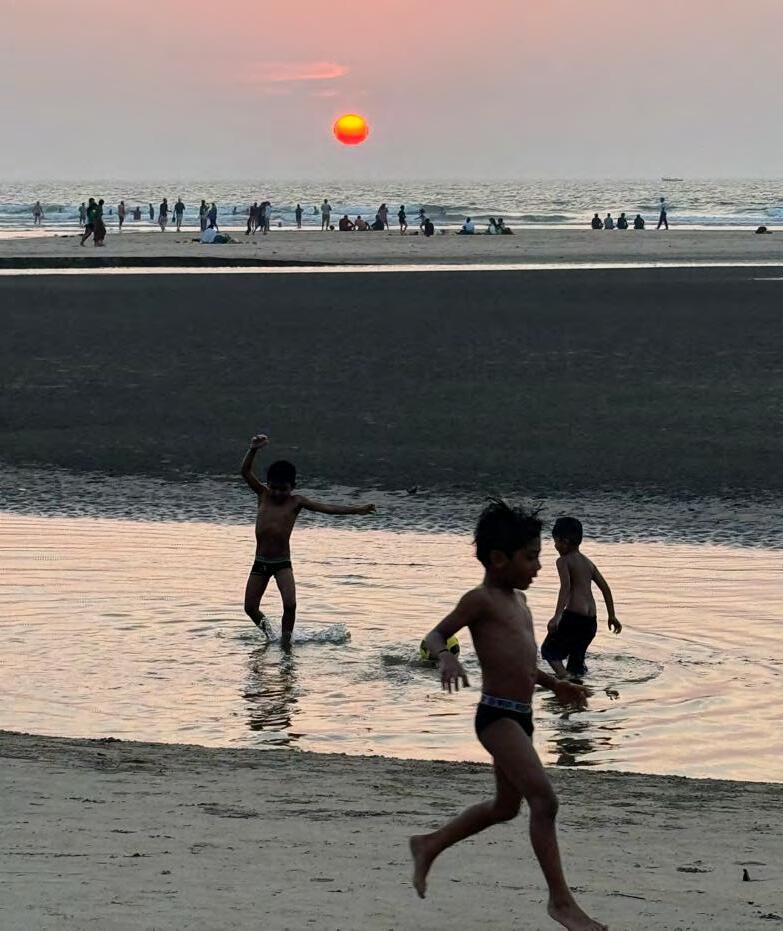
is out of this world. A smorgasborg of Eastern & Western food cooked by 37 proud Chefs. Each morsel helped down by a sip of bubbles.
In Pushkar I had the most spiritual experience of my life. A holy blessing ‘puja’ by a Hindu Priest beside the lake. Then in the evening a huge ceremony with everyone chanting & the sound of drums was mesmerising & unforgettable.
It was sad to say goodbye to the incredible diversity of such different towns and cities of Rajasthan. But it was time to venture south.
We venture to North Goa commanding ‘duff duff’ music on the beach then to quieter, laid back South Goa. The easy going pace of massages on the beach, women selling their wares on the beach, being waited on while stretched out on a banana lounge, kayaks on the ready & fresh seafood were reminiscent of the beaches of Thailand and Bali. The one thing Goa also has is an abundance of yoga studios & it was here I met the best yoga teacher I’d ever known. Days pass by & we are very content to just press ‘repeat’ every day.
On the road again, this time for a tour of Kerala. First stop Kochi (Cochin),
a city with harbour & port as its backdrop. Lots of places of worship, including a wonderful synagogue, markets, restaurants & Chinese fishing nets!
Munnar, where 50% of the population are in the tea industry, is such a totally different contrast once again. Tea plantations as far as my eyes could see, the vibrant green caressing my senses. From Thekkady to Allepey more tea & spice plantations with aromas so intoxicating, combined with lush mountain ranges. Definitely the best road trip so far.
Kerala of course is not complete without a stay on a houseboat on the backwaters. ‘The Venice of India’ is so popular now that there are more tourists’ boats than local’s boats. You can hire basic boats to sheer luxury ones with silver service, air conditioning & jacuzzis.
India is everything rolled into one. The diversity of the different towns & cities is an unforgettable experience. It’s the most mind altering place I’ve ever been to. Such friendly, helpful people. Incredible history, culture & customs. Such privilege & poverty. There are times it tore me apart but the resilience of these beautiful people is inspiring.
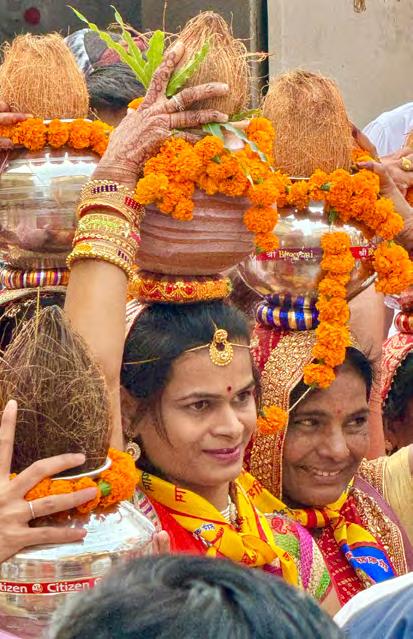
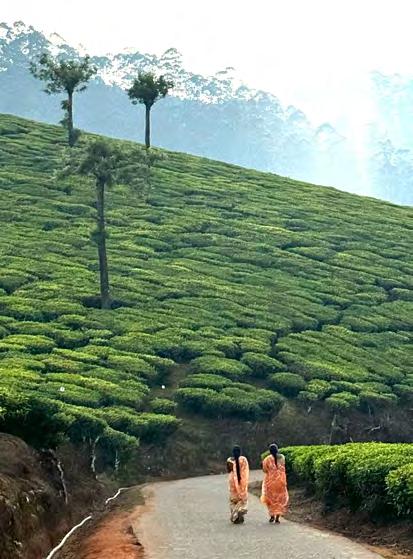
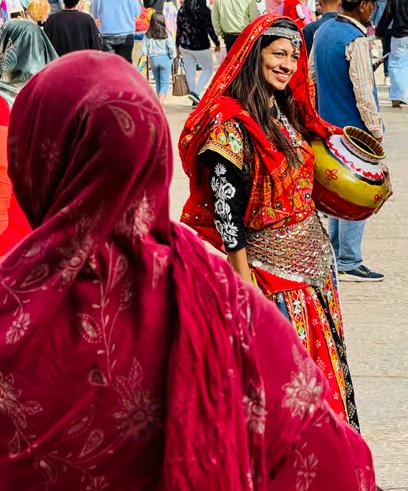
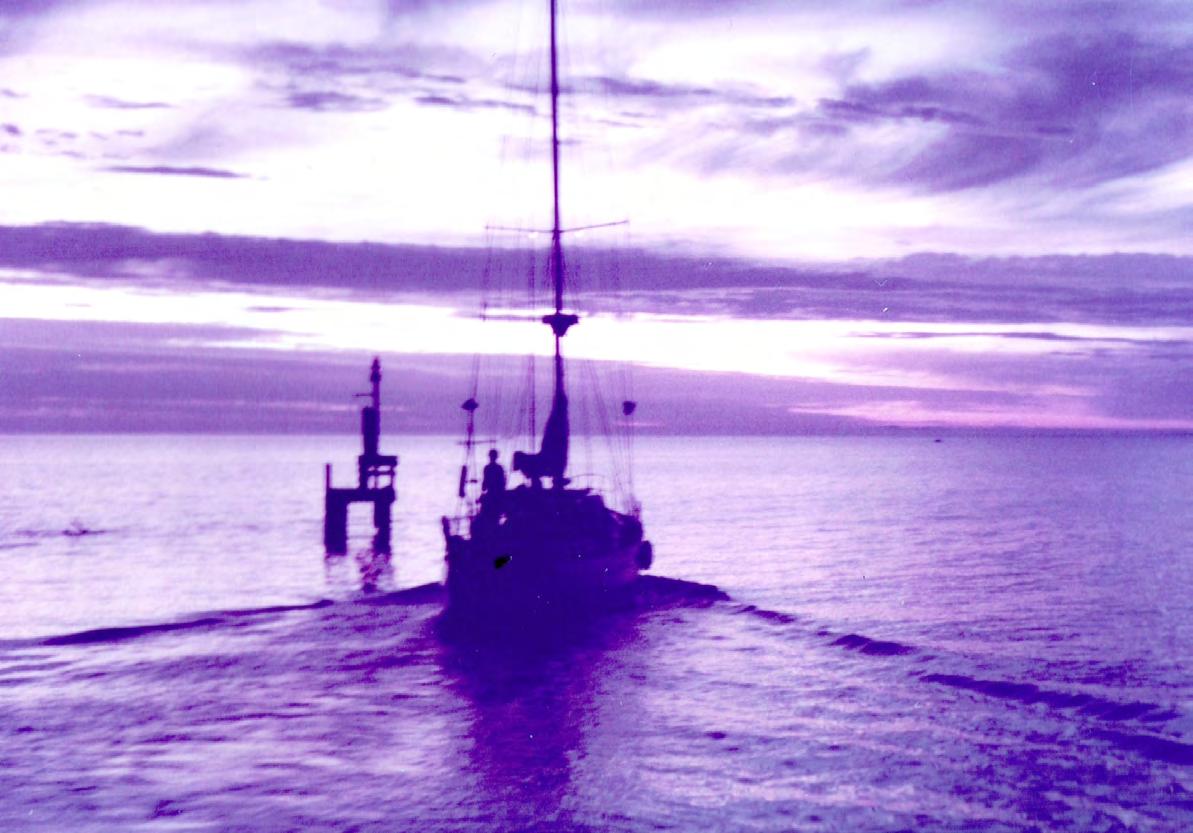
Son of a Caretaker
Sandrin’s triumphant return to Trieste.
5 kilometres south of the border with Italy, in the coastal city of Capodistria, Luciano Sandrin was born in 1933. Nestled on the Adriatic Sea, Capodistria hosted colourful and noisy markets that provided fresh fruit and vegetables. Its fisherman caught mussels, squid, swordfish, sardines and tuna for the markets.
When Luciano was 5, his parents moved with him and his younger sister Aida to Trieste, Italy, 20 kilometres away.
Lou’s father Mario was a good sailor and continued his attachment to the ocean by gaining the role of caretaker at the Societa Triestina-Vela Yacht Club. The club was effectively a floating two-storey pontoon. Memories of childhood: Young Luciano remembers seeing his mother, Carmela throwing a line from the kitchen window to catch fish.
Like his father Luciano became involved in sailing and fishing while still a child. During the winter months he would assist Mario in the building of boats. It was, for Mario, the opportunity of a lifetime, using the clubs facilities to do what he did best. For Luciano, fishing, sailing and helping his father was an exciting time. But dark clouds were looming. World War 2 was looming.
German forces occupied Trieste during the war and used the yacht club as a maritime base. Mario didn’t fight but continued his role as the club’s caretaker. Luciano remembers those years vividly. He remembers too the allied air-raids on the yacht club. He remembers German patrol boats returning with their dead. During the air-raids, Luciano and his family would retreat to the shelters until the bombing had stopped. When the skies had cleared of Boeing bombers, Mario would go diving, checking for damage to the pontoon. It was a time for growing up quickly for Lou.
At the early years after the end of war, when Luciano was aged 12 and 13, he won successive Junior Championships in the Snipe class. Despite showing a preference for sailing over schooling, Luciano continued studying and did well in mechanics and mathematics.
In 1954 the Olympic selection trials for the 1956 Games in Melbourne took place off Trieste. Straulino, Sorrentino, Rode and Pelaschier, all good sailors, were competing. Luciano, still just 20, beat all opponents and was considered odds-on to be selected.
Expecting confirmation of his inclusion, Luciano was called to see the Italian International Olympic
Committee and was told that he would not be selected. Alongside Lou, in the race to go to Melbourne, were the sons of doctors and engineers. It wasn’t spoken about but the message was clear. The social pecking order had to be maintained.
Lou was devastated. Mario too. Lou’s father told him he had a better chance of being judged on his merits in Australia. Soon after, in search of sailing recognition the champion young sailor left for Australia.
There were other things coming into play at the time. Romantic entanglements. Three months before he was due to leave, Luciano met Laura, an attractive young tailoress from Friuli who was working for a wealthy family in Venice. How beautiful was Laura? Her friends called her Gina, because of her likeness to the Italian actress, Lollobrigida.
When Lou left for Australia in June 1956, Laura moved in with his parents. He told his bride-to-be that when he had enough money, he would send for her. Lou’s journey on the Castel Felice took 40-days.
In Melbourne, staying with friends in Fitzroy, Lou would take walks to the city and all around him was evidence of the approaching Olympics. He may
have been overlooked for selection in the Italian team but he had the feeling he had arrived at the right place at the right time. Slowly, the international teams began appearing on the streets of Melbourne. When Lou heard the Italian sailing team had arrived, he got in touch with his old friends. They were happy to see the Finn-class champion and invited him to share their accommodation at the Olympic village.
When trials got underway on Port Phillip Bay, Lou was invited to join the Italian team as a reserve. Fate was about to play a favourable hand.
The 1956 Olympics was opened at the Melbourne Cricket Ground under brilliant November sunshine in front of a crowd of 100,000 people.
Yachting got underway on the fourth day of the Games. Soon, a member of the Italian team fell ill. Lou was called up to take his place in the Dragon class. The son of a caretaker had realised his dream. He was an Olympic sailor. Aboard Tergieste –named after Trieste, Lou was sailing with his older heroes. And they won a race. Italy won a silver medal. Agostino, Straulino and Nicolo Rode came second in the Star-class.
Lou’s next move was to arrange for Laura to join him. Soon after, two extraordinary ceremonies took place. In Melbourne, Lou and his female cousin went to St Patrick’s Church in the Fitzroy Gardens. Simultaneously, 16,000 kilometres away, in Trieste, there was a gathering of family and friends. Back in Melbourne, on the fringe of the city he now called home, a madly in love, young Italian sailor married Laura, with his cousin acting as proxy. At the same time, back in Trieste, Laura married Lou, with Mario as proxy.
Laura arrived in Australia a few months later. As she left the ship, the newlyweds kissed, embraced and Laura heard the first words from her new husband, “Have you got any money?”
Soon after, Mario and Carmela left Italy and joined their son and daughter-inlaw for a new life in Australia.
Although spending weekends at the Royal St Kilda Yacht Club, the next five years for Lou was largely represented by his working long hours to support his family and to build a decent future. When that was achieved, Lou was able to return to yachting. In 1971, at the age of 38, he won his first race in the Cunninghamdesigned QB2 catamaran class. He represented Victoria and won Australian championships at Glenelg, Sydney and Darwin. In 1974 and ’75, Lou was named Victorian Sailor of the Year. Back in 1956, his failure to earn a place in his countries Olympic team had cut deep. Now, years later in his new country, Sandrin was proving his Italian detractors wrong. He had achieved champion status in his sport and built a successful business
around him. Despite all this, there were still things to do.
Amid his success, Lou began searching for a bigger boat. In 1975 he found the design he was looking for and construction of a Carabineer 46 began. Mario helped his son with the carpentry while Lou concentrated on the mechanics. The boat, to be called Sabaloo, was built to be the fastest of its type. In 1978 she was launched at the Sandringham Yacht Club which Lou had joined two years previously.
Aboard Sabaloo, using instruments and navigating for the first time, Lou began ocean racing. In 1979 Jock Sturrock organised the first Great Circle Race. Sabaloo finished 11th in the fleet of 21. During this race, Lou met Robert Wallace. Robert was to play an important role in the next stage of the Olympian’s life.
While Lou sailed in three Sydneyto-Hobarts during the 80’s, Mario joined his son on Sabaloo for races to Noumea, Suva and Portland. Such was the bond between the two that the audacious was possible. In 1982 they began planning a return to their hometown of Trieste aboard Sabaloo.
There would be a hitch, however. As the departure date drew nearer, Mario’s health was deteriorating. With great reluctance, it was decided that Mario was too frail to make the journey.
In February, 1983 the 15-metre yacht set sail from Sandringham, seen off by family and friends. On board was Lou, his good friend Robert Wallace, as navigator and Francis Calvert.
The journey was to take Luciano Sandrin back to the beginning. The adventure would take 15 months take them across 42,000 kilometres of ocean.
Sabaloo headed west, heading across the Bight, to Fremantle. Then across the Indian Ocean to Mauritius, The Seychelles, the Red Sea, through the Suez Canal to the Mediterranean.
The crossing was not incidentfree. One of the most alarming and potentially life threatening was an episode on the Red Sea.
Dangerous weather was occurring as Sabaloo and her crew made their way towards the Suez. Luck would play a part in their being able to find protection from the storm. There are only three atolls in the Red Sea. Sabaloo found one and nestled in its lee. While Robert and Francis were sleeping in the cabin below, Lou was on-deck acting as lookout. There, in the distance he spotted a larger vessel, it looked like a fishing boat. Lou figured they were there for the same reasons, to hide from the storm. He trained his binoculars on the boat. It was then that Lou noticed dinghies with armed men, being lowered into the ocean. Each dinghy had an outboard motor. As the pirates powered towards Sabaloo, Robert
and Francis were woken by Lou. The storm was still raging and threatening. But not as life-threatening as pirates armed with guns. Sabaloo took off, escaping by minutes.
Sailing through Port Said and entering the Mediterranean, Lou was getting closer to achieving a triumphant return to his hometown that he had left in search of sailing recognition.
Twenty-eight years after he left, soon after, Lou sailed back to Trieste in the boat his father and him had built in his backyard. He cried.
The large crowd that had gathered to welcome the home-town hero knew all about Lou and his story. Amongst the crowd was Laura and the couples three children. There was a carnival atmosphere as Sabaloo was escorted to dock. Lou danced on-deck. It was June, 1983. The journey had taken four months.
On shore, Trieste’s Mayor presented Lou with a gold medal in recognition of his appearance in the 1956 Games. After that he received the keys to the city and that night, a dinner and more dancing. On the streets and in the homes and shops of Trieste, Lou found favour. During his stay, Lou’s story was highlighted by the local press.
When they set sail three months later, Lou had a new crew. Robert and Francis had fallen in love with Italy and stayed behind. On board now with gifts of food and fuel were Lou’s cousins son, Paulo Rizzi, 24, with Paulo’s friend, Claudio Bertazzoni, 28. Three thousand people filled Italy’s biggest plaza on the day of Sabaloo’s departure. The sea was full of boats. Music played.
After the anticipation of the journey to Trieste and the buzz and excitement of his welcome and stay in his hometown, on the sail back to Australia, Lou descended into periods of loneliness and letdown. He had achieved what he wanted to do and now, on the business-end of the trek, he was in the company of two young men who, while enjoyable company, were from another generation. His close confidant, Robert, was not there to discuss things with. His wife and children were now back in Australia, waiting for him. Laura even accepted the Italian Sportsman of the Year Award for her husband. Lou was growing increasingly impatient to get home. But there would be two more incidents, one of which would postpone that reunion.
Sabaloo took off, via Gibraltar, down to the Canary Islands then across the Atlantic, to the Caribbean, through Panama and onto the Pacific and the Galapagos Islands. From there it was onto Tahiti, Fiji and Noumea before returning home via Sydney.
Two events on the return journey are recalled vividly by the skipper. The first involved the near-death of Paulo. On deck, at night and with Lou and
Claudio asleep below, the youngest crewman slipped from a platform on the stern. There was no one to witness the accident. When Paulo resurfaced, Sabaloo was already a distance away. In desperation, Paulo grabbed the fishing line that was trailing behind the boat. The nylon carved into his skin. Luckily, Lou had attached an alarm system to the line. It probably saved Paulo’s life.
The second incident happened as Sabaloo sailed into a bay of the Dutch Antilles. There had been a shoot-out the night before between local police and drug runners. Police and the public were on edge. When Lou and his crew were spotted, police were notified. A police boat approached Sabaloo with guns drawn. The yacht was escorted into port.
Despite pleas, passports and proof that theirs was a good will visit, the three were detained and thrown into jail. After a long night and with a worried Lou imagining extreme scenarios, the crew were released the following day.
On Sunday, May 6th, 1984, 15-months after leaving, Sabaloo re-entered Port Phillip Bay. At the Sandringham Yacht Club a flotilla of welcoming boats gave a rousing reception for the man who had turned dreams into reality at least twice. Firstly, by becoming an Olympian and secondly by building a boat with his father to sail back to his birthplace. Mario was in the crowd. He had recovered from his illness and during his son’s absence had repainted the family house and in a back to the future moment, rebuilt their catamaran into a fishing boat.
Doctors suggested that Lou’s pilgrimage had added 12-months to Mario’s life. He died the following year.
For Luciano Sandrin, all these things are behind him now but remain an important part of his and his family’s life. He maintains his love of the ocean. Sabaloo is still berthed at Sandringham. Up until a few years back, Lou would still sail in twilight races on the Bay. Also, up until recently, towards the end of April, Lou would take his yacht north annually for a four-month sojourn on the Sunshine Coast.
I was lucky enough to go sailing with Lou. In 2007, Lou, his friend Mario and myself left Mooloolaba and sailed south to Port Stephens. It was a memorable journey. We met and had dinner with a wild crew at Coffs Harbour after seeking shelter from a storm, we “showered” and washed in the ocean each morning, we ate bolognaise for breakfast and we would take it in turns on-deck at night. Lou and Mario were returning to Melbourne. I got off at Port Stephens.
Up until recently, Lou would sail as often as possible. His daughter, Sabrina, has inherited her fathers love of the ocean and sails around the world with her husband, Dierk. Their boat? Stella Mia. When Sabrina was young, Laura would call her daughter Stella Mia. In Italian it means ‘my star’.
A personal note: As you may have realised from reading this story, Luciano is an amazing man. I met him 25-years ago. I was drawn by his humour and energy. He is not shackled. His only brief is to enjoy life. When I heard his story, I recorded his story for readers of Australian Sailing.
Happy memories of warm, summer Thursday nights at the yacht club. Of sailing and conversations with a beer aboard Sabaloo back at the marina.
Lou is still a friend.
GREG T ROSS
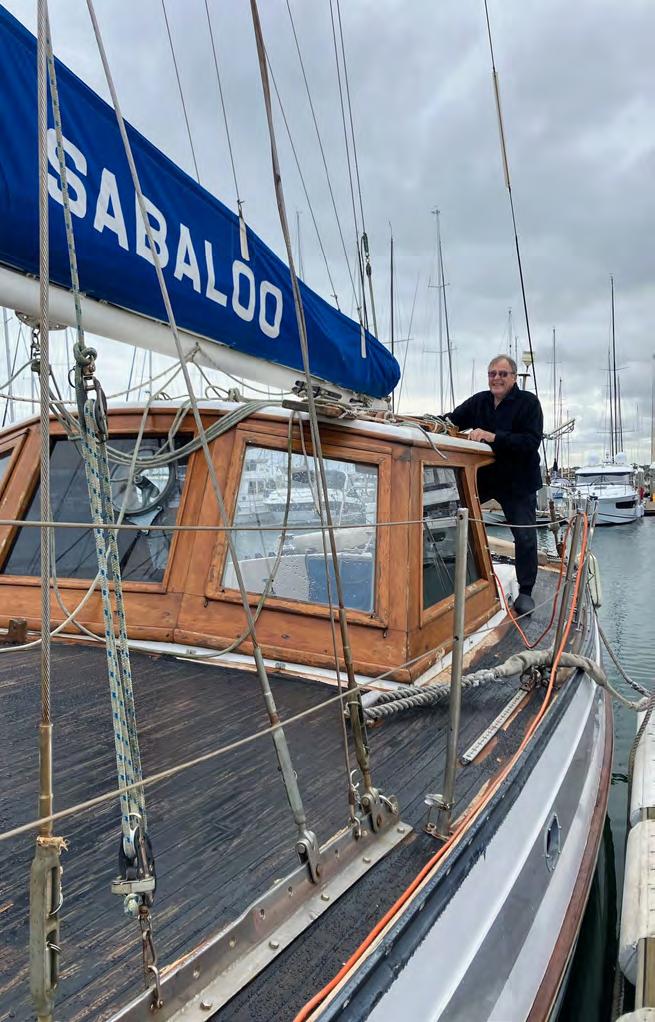
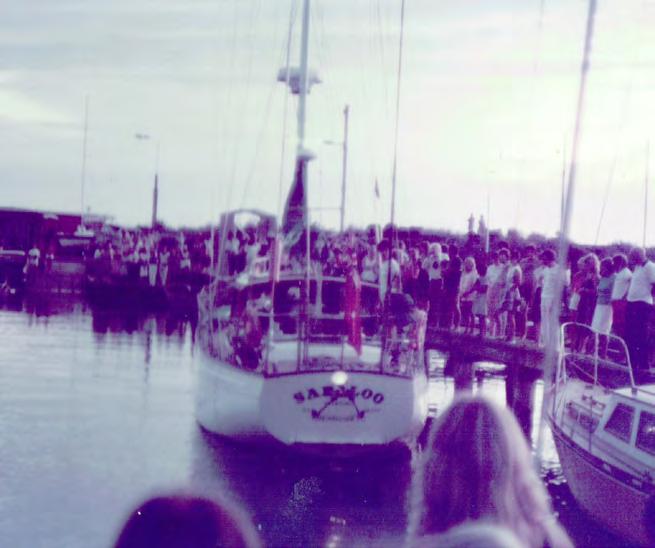

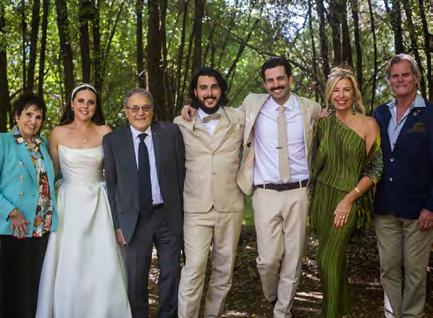
Coming to a foreign land with no knowledge of the English language or the Australian way of life.
A man who worked so hard to provide for us, sacrifices made to make us comfortable. I feel blessed to have had such loving caring parents…even though my father was so disappointed to find out his 1st born was a girl as he had my room painted blue. But that’s OK as it is the colour of the sea and the colour for me.
The best times I’ve had was sailing with my dad, first with his catamaran called ‘’ Sabrina’’, and then my dad & nonno built me a yellow catamaran called ‘’ Banana Split’’….. but the best was yet to come with Sabaloo.
I spent the best years of my teenage life at this yacht club trying to sail as much as possible in the Saturday races, Wednesday Wonders and Thursday night Twighlight races, where I would be joined with many friends like Anna, Annette, Cynthia and my darling Dierk….the more the merrier. Dad loved having lots of people on board. I even did my dads trick and skipped some Uni classes just to sail on a Wednesday!
So when dad said to me “Come do the Sydney/ Noumea/ Villa yacht race, I was excited. But Dad I said, “I have no wet weather gear. His response was “You only need bikinis in the sunny, calm Pacific Ocean’’
SABRINA
Well on this occasion he was wrong!
We struck 50 knot plus head winds, and big confused seas. With most of the crew sick including myself there were only 4 left from a crew of 8 that could sail. My dad, my nonno Francis, and Robert Wallace, our navigator, who was also so sick, but bravely carried on with a bucket between his legs.
I spent 6 days and nights being so sick, and on the seventh day I said “dad I need to speak to you seriously….I’m dieing….this is it”. His response…. He couldn’t stop laughing.
So I knew I had to pull through, and I did get my sealegs, and I still have them.
One of his last words to me was ‘’Keep sailing, never stop’’ I shall miss him terribly every time at sea, I will always think of him and all I have learnt to love in the ocean.
I can’t ring him anymore and ask him questions, but he said he will always be with me, and I know he will.
Love you dad.
Rest in heavenly sailing peace dad.
The message whispered in the warm wind here is one of peace, of hope. It permeates my weary soul without invitation. It is always there, a constant gentle nudge at my negativity.
The clattering of the coconut palm fronds could well be tropical rain as my eyes are closed against the aching blueness of sky from the hammock on the sand. The clarity of the sunshine begins to re-ignite my spirit - slowly, slowly but with joyous determination.
There is no escape from the beauty, the azure waters, tropical flowers verdant jungle reaching out to the waters dancing edge at lagoon and sea. It almost hurts, this beauty.
“Bula!”
The sound is echoed everywhere, as a cry of greeting but so much more - a genuine Fijian blessing to the recipient for a rich and happy life. It echoes the values of community and care that literally shine outwards from the faces of its people.
Joyous, humble islanders without guile or the self - consciousness of class or social aspiration.
Racism is not known on the island, it is a term for a different planet; the planet of the West. Villagers do not indulge in opinion of the government - on anything they cannot readily change or celebrate.
“Leave that to others - our way is to love God and family and to Live!”
Humility and grace beam out from the whitest, broadest smiles I have ever seen and I am already in love with this way of life, this outlook, these people.
Homeless cows and dogs roam the shonky roads as adults with small children carelessly navigate from village to village, through what little traffic hurtles past them. There is material deprivation all around, old cyclone damage. And contentment.
I really needed this, needed to come here - I know that now.
To see and experience the simplicity, the honesty of island life through the eyes of the native Fijian people. My days had lately been wearing heavily on my heart, gratitude a forgotten grace in the face of pain and death around me.
Oh, and government, and racism.
Here I am again being infused with hope, with acceptance and love amongst my new friends in this idyllic place. This paradise of natural wonder.
The Fijian Osmosis.
Life expectancy here is low, hardship and poverty are real but so is genuine love for others, dedication to nature and the innocent joy in every moment that makes that life worth living. And living well! Every. single. Moment.
I will return to this special place, to remind myself of what really matters in the living years - and to feel that wind again in my soul.
The magic spirit of the islands is upon me.
VINAICA Fiji.
MOCE
Until I am welcomed home again.
MOIRA PARTRIDGE

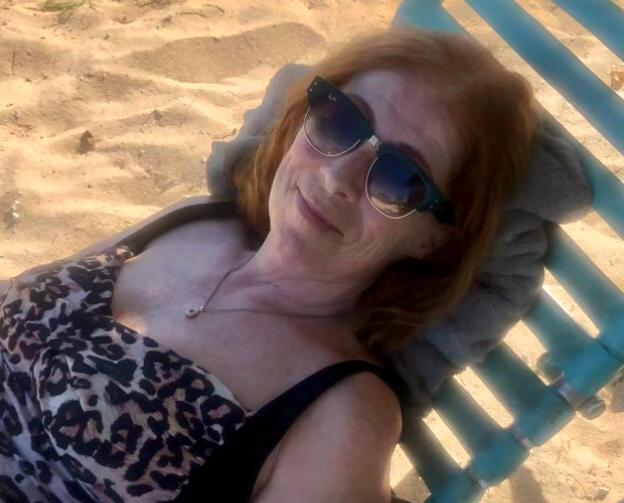
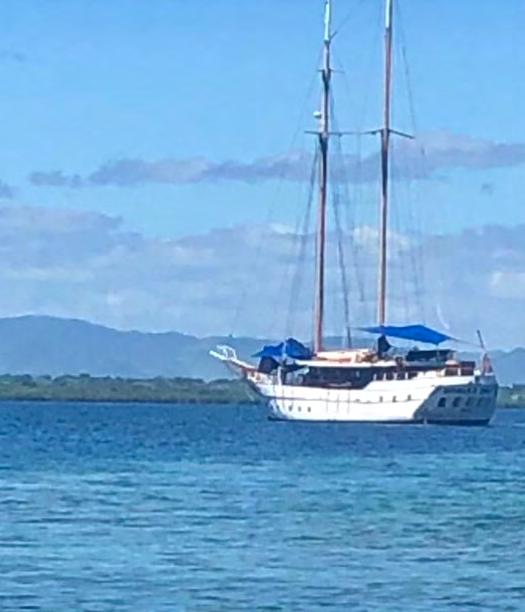


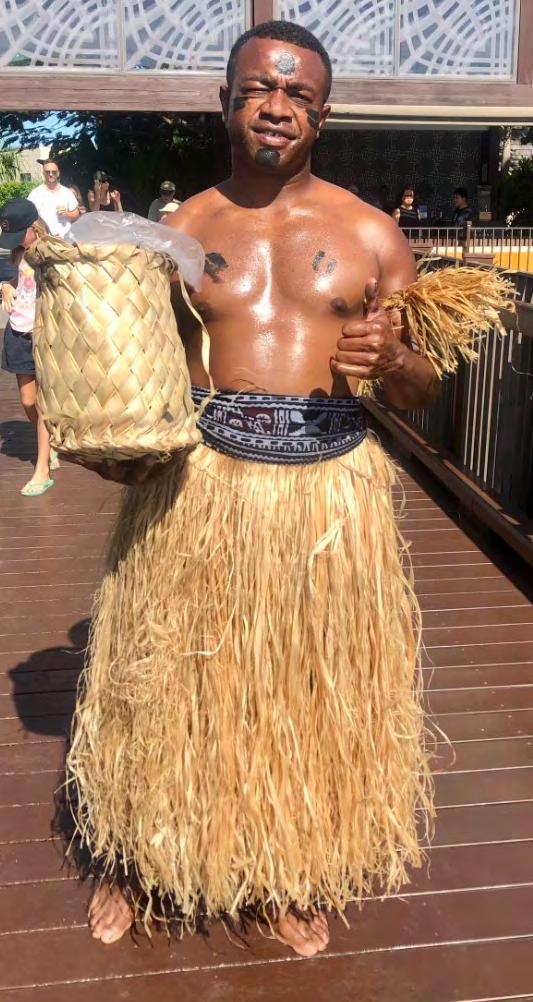
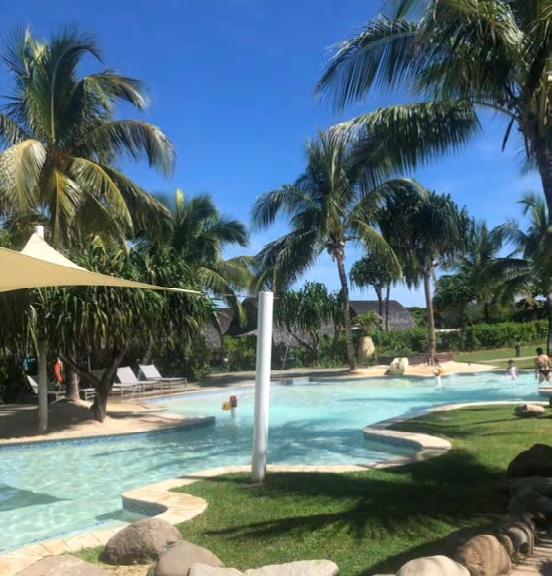
As a true child of the ‘60s, I was raised on rock. And it has remained a lifelong passion; I have the ticket stubs and vinyl collection to prove it. A fifty-year love affair.
But, in truth, I have not been completely faithful to this love. In my teens, even as I was shaking my hippy locks to the insistent 12-bar or ‘turning-on’ to the psychedelic sounds of Frank Zappa, I was seduced by the rhythm of Bossa Nova, that mellow, half spoken, sophisticated jazzy promise of an eternal summer - a mistress almost as satisfying as rock’n’roll.
Bossa nova is a child of the samba, born in the late 1950s on the golden beaches of Rio’s Ipanema and Copacabana. It could only have started here. A stripped back samba, a perfect accompaniment to surfing and sun, perfected by the young, mostly white, privileged class of Rio’s south zone, words and music a response to the ugliness of the military dictatorship that then existed.
Everyone knows one Bossa Nova song,
’ Tall, and tanned, and young, and lovely
The girl from Ipanema goes walking and When she passes, each one she passes goes: Ah!’
There are probably scores more tunes you’d recognise, if not their Portuguese lyrics. They are staple accompaniments to a sophisticated dinner, subliminally ingested while sipping cocktails in sun-drenched holiday bars.
Antonio Carlos ’Tom’ Jobim, who composed ‘Girl From Ipanema’ with poet and lyricist Vinicius de Moraes, was perhaps the most well-known exponent of samba’s ‘new wave’, feted from New York to Paris by superstars like Frank Sinatra, Sarah Vaughn and Stan Getz, but other equally important members of this close-knit musical fraternity included João Donato, Sérgio Mendes, Carlos Lyra, Roberto Menescal, Luiz Bonfá, and Nara Leão. This last singer can claim to have been central to the movement, fronting the first ever Bossa band in Botofogo’s Hebraica Rio Club, and her Copacabana apartment becoming the movement’s hang-out of choice.
Its popularity, and that of Jobim, was cemented by the film Black Orpheus, with soundtrack by Jobim/de Morais and Luís Bonfá. The film won the Academy Award for Best Foreign Language Film in 1960. It has been argued that it was bossa nova that popularised the acoustic guitar in Brazil, as skiffle did in the UK. As the genre’s popularity expanded other names came to the fore, Astrid
Gilberto, Elias Regina, Marcus Valle and more.
For a while Bossa was boss. Artists worldwide changed the lyrics and covered the songs. Bossa made the charts. Only one thing arguably stopped it becoming truly dominant: Rock’n’roll.
Most cities with a distinct or unique musical heritage find a way of exploiting it as a tourism attraction. Think Liverpool, New Orleans, New York, Memphis. Rio, perhaps blessed with so many other iconic attractions, only launched a ‘Bossa Nova Day’ in 2025, with free shows on Ipanema beach to coincide with Jobim’s January birth. Hopefully, this may become an annual event. Until now the city only honoured its Bossa sons and daughters with a few plaques, a renamed road, a statue of Jobim, and a small cultural space cum museum. You’d expect a tour, a printed guide to the sites, appropriately themed souvenirs, a ‘Girl from Ipanema’ key ring … There are none of these, though a recent QR link was added to Jobim’s Ipanema statue. The physical heritage is as understated as the music itself.
But a Bossa Nova pilgrim willing to explore the city can follow their own tour route, posing beside Jobim’s Ipanema statue, seeing where he lived, sinking a cold beer at the nearby bar where that girl sashayed past. On the Copacabana beach front you’ll spot a plaque on Nara Leao’s apartment building; in the streets behind the Copacabana Palace Hotel there are other plaques marking where the great bossa clubs once were; and you can still hear the music every night in the famed Becos de Garrafas (Alley of Bottles) at ‘Bottles Bar’ and ‘The Little Club’, bossa’s own equivalents to the Cavern Club. Be a little more adventures and you can venture to the Hebraica Club in Botofogo, set amongst some amazing colonial era architecture, and to the Jobim Centre in the botanic gardens of Jardim Botanico.
Bossa Nova lives on. It’s an essential component on any ‘cool jazz’ collection. Older rockers were either influenced by the style, or added bossa to their own cannon as they got older. Famously, The Police’s Andy Summers spends a lot of time in Rio and has recorded with Mensecal. Seek out their 2018 ‘United Kingdom of Ipanema’ collaboration. Newer artists like Bibel Gilberto have reinterpreted the genre. Billie Eilish even has a Bossa tune, ‘Billie Bossa Nova’. Even if it’s a minority interest, a
touring Bossa artist will still fill a famed venue or jazz club anywhere in the world.
You can complete your Bossa pilgrimage as I oft do, at Jobim’s grave in Botofogo’s incredible Sao Baptista cemetery. His epitaph, a quote from the song, ‘Querida’, reads, Longa é a arte, tão breve a vida
Art is long, life is so short. Thankfully my 50-year-old Bossa Nova mistress is still pulsating with life and hardly seems to have aged in all these years!
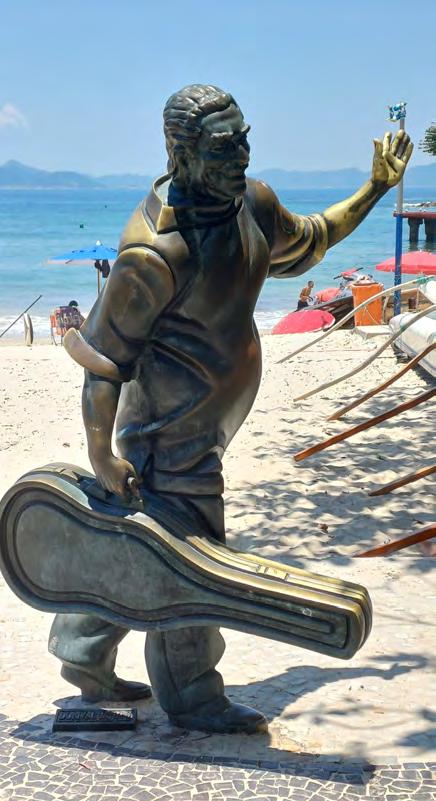

ABOVE:
ABOVE RIGHT:
RIGHT:
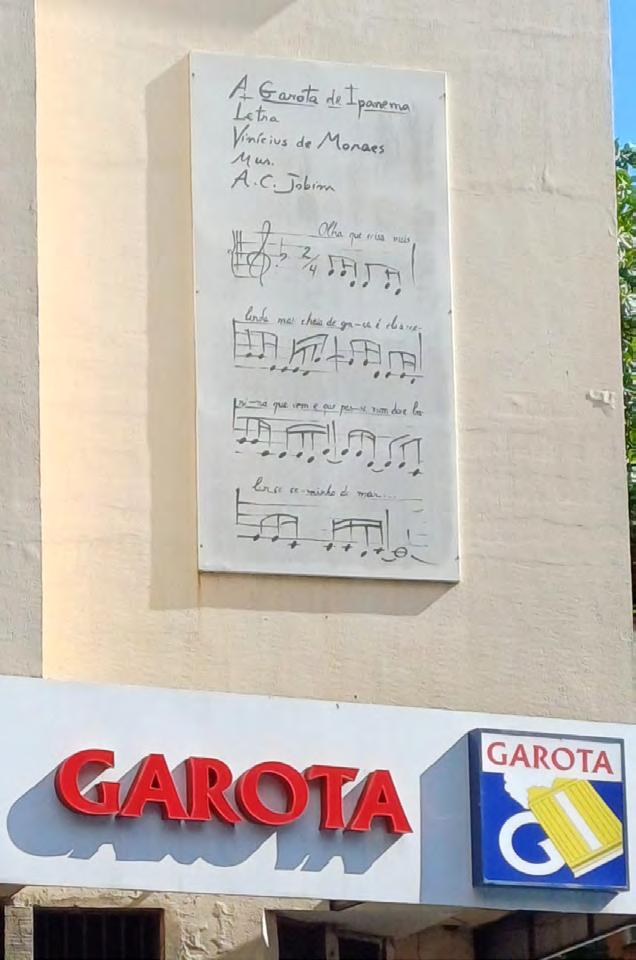
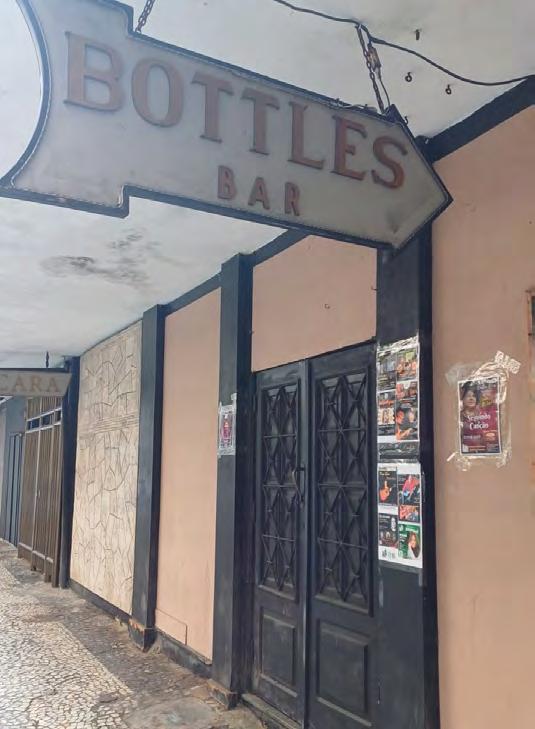

IN 1914, MORE THAN 41,000 AUSTRALIANS AND NEW ZEALANDERS DEPARTED ALBANY, BOUND FOR THE FIRST WORLD WAR. THIS IS THEIR STORY.
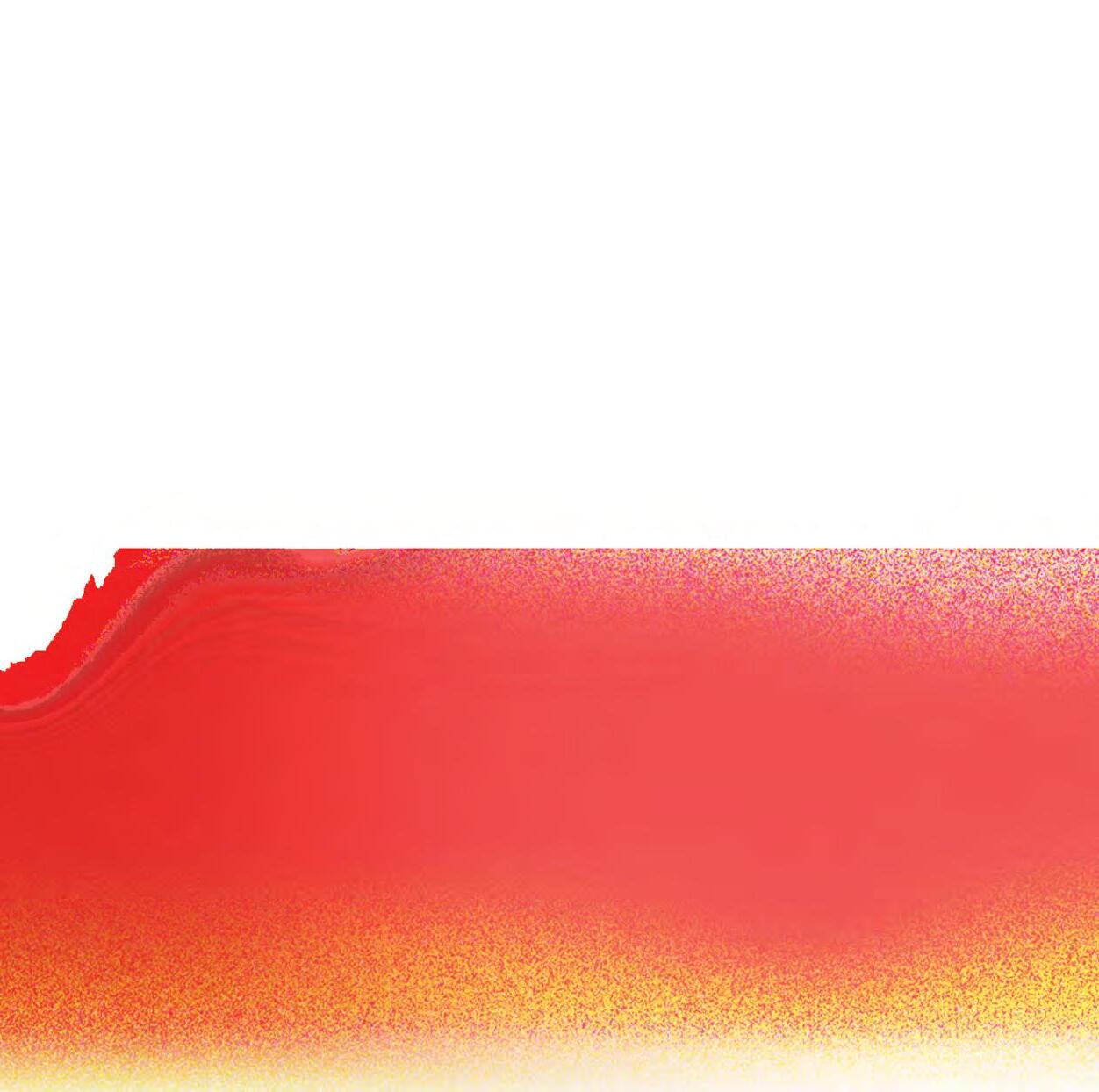
Overlooking the stunning King George Sound in Albany, Western Australia, the National Anzac Centre is a moving tribute to those who served in World War I. Officially opened in 2014, this award-winning facility invites visitors to explore the deeply personal stories of the Anzacs through multimedia displays, interactive technology, and a curated collection of historical artefacts.
In 1914, Albany was the departure point for the first Australian and New Zealand troops heading to the battlefields. The Sound became the last sight of home for 41,265 men and women, and 13,000 horses— cementing Albany’s place in Anzac history.
Upon arrival, visitors are given a character card featuring one of 32 Anzacs. This interactive experience allows guests to follow their journey through the war, with audio recordings and visual displays bringing their stories to life. The Centre honours the Anzacs through their personal experiences, without sentimentality, offering a unique perspective on the war.
The Centre’s location enhances the narrative, with breathtaking views over the Sound where the convoys gathered. Visitors can further connect with the Anzac story by exploring the Albany Heritage Park, including the Padre White Lookout and Desert Mounted Corps Memorial.
A visit to the Heritage Park also isn’t complete without exploring the Princess Royal Fortress— just a short distance away—where you can explore the historic grounds, coastal and naval guns, and the heritage-listed buildings that once played a key role in the region’s military history.
The National Anzac Centre offers a profound, reflective experience that goes beyond history. By immersing visitors in the personal stories of the Anzacs, it brings to life the sacrifices made by those who served, while also fostering a deeper understanding of the enduring Anzac Spirit. From the moment you step into the Centre, you’re not just visiting a museum— you’re walking alongside the men and women who shaped Australia’s wartime legacy. With its cutting-edge technology, powerful narratives, and scenic surroundings, the Centre is a must-visit destination for anyone seeking to connect with Australia’s history and honour the bravery of those who served.
Book your visit today, by visiting www.nationalanzaccentre.com.au

